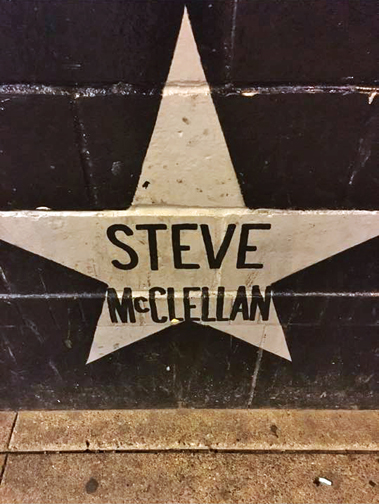Depot, Uncle Sam’s, and Sam’s
Seventh Street No. and First Ave. No
Minneapolis
This page is about the legendary clubs that have been located at the corner of Seventh Street No. and First Ave. No. in Minneapolis.
I. INTRODUCTION
First I’ll lay out some things to take into consideration when reading this page, introduce the founders of the Depot, and direct you to my sources.
II. THE MUSIC
Next is the story of the music and other goings-on at the Depot, Uncle Sam’s, and Sam’s, with ads, posters, photos, tickets, show reviews, etc.
III. BEFORE THE MUSIC
This section looks at the history of the site, going back to its first uses – as a grade school, believe it or not – an office building/bus station, and of course the City’s Greyhound bus depot. This is undoubtedly more than you’ll ever want to know, but this is called going down the rabbit hole…
IV. HISTORY OF THE COMMITTEE, INC.
The last section focuses on the history of the organization that started the Depot and owned each club until First Avenue’s bankruptcy in 2004. This includes the people who turned an old bus terminal into the hippest place in town, and the machinations that happened along the way.
I. INTRODUCTION
NOTES
As a rule, this entire website focuses on Twin Cities music through 1974 but I’ve made a slight exception here. This page will cover the Depot, which began in 1970; Uncle Sam’s, which began in 1972; and Sam’s, which began in 1980. 7th Street Entry (March 21, 1980) and First Avenue (January 1, 1982) will not be covered here, except for information on the Committee in Section IV.
About the address: during the bus station, Depot, and Uncle Sam’s days, the address of the building was given as 29 Seventh Street No. At some point it reverted to its actual address of 701 First Ave. No. How the other address came into play is a question to be answered.
A bit of trivia: First Avenue was originally called Utah Avenue.
And just so I don’t have to keep repeating it, Will Jones was the wonderful entertainment columnist for the Minneapolis Tribune. Yes, he was a little old to appreciate rock venues, and those “girl watching” features wouldn’t pass the muster today, but his columns held a wealth of information about popular culture and what was going on around Minneapolis. Thank goodness for Will Jones!
THE FOUNDERS
The following are thumbnail sketches of the four original members of The Committee, the organization that created the Depot.
DANNY STEVENS
Danny Stevens was always very athletic, participating in water skiing and Golden Gloves Boxing from ages 10 to 17. He graduated from West High School in 1961, and studied pre-med at the University of Minnesota. In 1964 his first band, Danny and the Nightsounds, won the Battle of the Bands at the 1964 Teen Fair at the State Fair. Later that year he started Danny’s Reasons, a tremendously successful band that would last for decades and include many different members along the way. Danny’s Reasons played in dozens of local clubs in the area. The band was inducted into the Mid-America Music Hall of Fame in 2007.
Statements made by or information received from Danny are marked (DS)
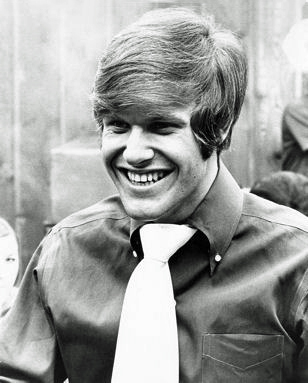
ALLAN FINGERHUT
Allan was the son of Manny Fingerhut, who had founded Fingerhut Manufacturing Co., a company that started out making seat covers for cars. The Fingerhut catalog empire created innovative ways for people to buy goods on time and with a special Fingerhut credit card. This made Manny a millionaire. Allan was one of Manny and Rose’s three children. He was born in 1944 and graduated from St. Louis Park High School in 1962. After high school he attended the New York School of Design, and served in the Army.
Thanks to the efforts of David Roth and Allan’s daughter Rain, I was able to have an extensive telephone conversation with Allan and his wife Rose. Although he was already suffering from the effects of Lewy Bodies Dementia, which made it difficult to remember some things, he did remember many people and was interested to know what had become of them. I am very grateful for the opportunity to have talked with him. Statements made by or information received from Allan are marked (AF). Allan passed away on October 12, 2020, and was interred at Lakewood Cemetery, Minneapolis.
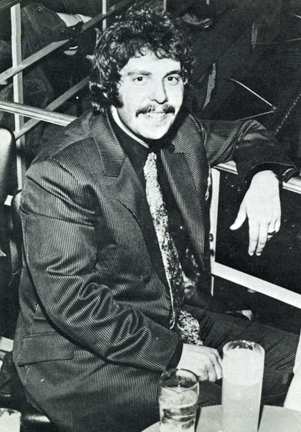
SHARRON FINGERHUT
Sharron was married to Allan from 1965 to 1974, and they had two children. Sharron served as the Secretary and/or Treasurer of The Committee from 1970 to 1976. Her last name is now Grohoski.
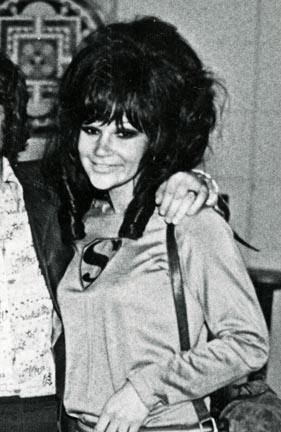
ABBY ROSENTHAL
Abbott “Abby” Rosenthal graduated from St. Louis Park High School High School in 1959. He was tapped to be the first General Manager of the Depot because he had filled the same job at George’s in the Park in St. Louis Park. Abby was not with the Depot for very long. He was an artist when he died in 2016.
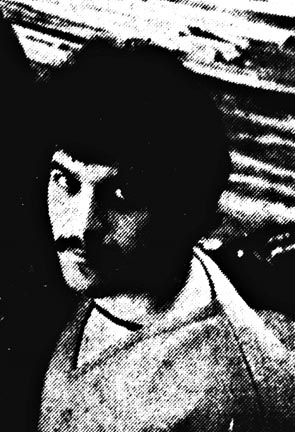
I went ’round and ’round about where to put my sources. I have made a special effort to credit each source I’ve used, and there are a lot of them. The list is identified by abbreviations that are used throughout this page, so you might want to refer to them as you read. So I decided to put them on a separate page so you can toggle between them instead of scrolling up and down. I hope that is useful. If not, please let me know.
II. THE MUSIC
In this section I will try to list as many of the shows presented at the Depot, Uncle Sam’s, and Sam’s as I’ve been able to find, augmented with reviews, photos, posters, and anything else floating around. I’m sure there were many more shows to find. Ads are from the Minneapolis Star and Tribune unless otherwise attributed. Please note that the synopses of the reviews are my interpretations of longer articles. If you have any photos or stories to share, and by all means if you have any corrections, please contact me!
EARLY PRESS
January 10, 1970, Connie’s Insider: Connie Hechter was the editor of Connie’s Insider, a music magazine that started in 1967 and ran until Connie’s death in 1978.
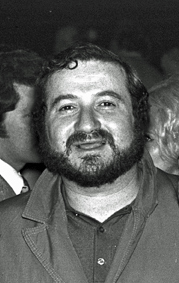
Connie got the jump on the first press announcement of the new club, even before the application for the liquor license was submitted:
Danny Stevens and Abby Rosenthal will team together (Rosenthal formerly was with the management at George’s in the Park) to open the defunct, or vacated Bus Depot….the old one. It will make a great club and is an outstanding downtown Minneapolis location, if Ted Mann doesn’t build a theatre on the property in the near future. He owns the land, so I’m told. He also owns most of the show houses downtown.
February 7, 1970, Connie’s Insider: “Oh yes, the new club that Danny Stevens and Abby Rosenthal will open in April is also co-owned by Allan Fingerhut. I forgot to mention that in the last issue. In fact, if it wasn’t for Mr. Fingerhut, there would be no Depot.”
HELP WANTED AND MORE PRESS
On February 20, 1970, this ad appeared in the Minneapolis Star. It was a different time, folks.

February 22, 1970, Minneapolis Tribune: An article by Allan Holbert was called “Shops, Night Club to Open.” Interesting that he listed the shops first.
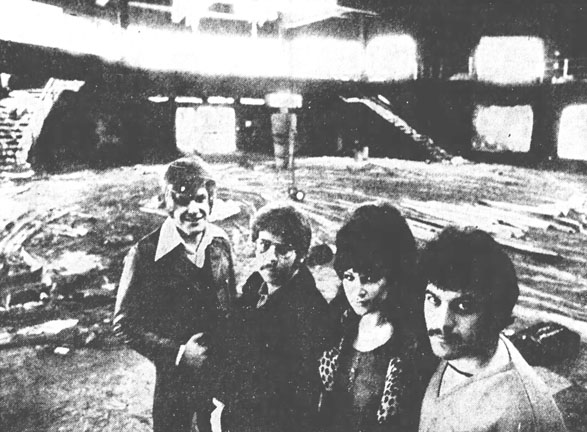
Original caption: Danny Stevens, left; Allan and Sharron Fingerhut; Abbott Rosenthal

Holbert:
Management
Owner of the Depot is a new corporation called the Committee. Allan Fingerhut, whose family is a major owner of the Fingerhut Manufacturing Corp., is chairman of the board. Danny Stevens, head of Danny’s Reasons rock band, is president.
Managing the 40 or so employees will be Abby Rosenthal, former manager of George’s in the Park.
With regard to the shops, the article gave out with some very ambitious plans, which didn’t materialize:
- Two clothing stores:
- I, Ross
- East-West Ltd.
- A Record shop
- A Novelty shop
- Three bars (there were eventually at least five). One of the bars, The Second Floor of the World, “will have low-priced drinks and is expected to attract some of the 5 o’clock trade of young working people who now frequent such places as Buster’s and Duff’s.”
Holbert noted that the venue would be opened by Joe Cocker on April 3 and 4, 1970, (which it was), but also listed other bookings of the Vanilla Fudge for April 10 and 11 and Janis Joplin for April 18 and 19 – neither shows eventually panned out.
February 24, 1970 – Minneapolis Star Allan is quoted as saying the acoustics in the building were perfect – “despite the memories of some past bus riders of unintelligible public address calls there.” The new corporation was called The Committee, with Fingerhut acting as chairman of the board and Stevens as president.
February 28, 1970, Connie’s Insider: “Joe Cocker is booked for the opening weekend of the Depot in Minneapolis, scheduled for April 3rd, I believe. This club has got everything going for it. Admission for the Cocker opening will be $3. You have to be 21 to make the scene at the Depot. By the way, Danny Stevens assures me that the Depot will go out of its way to play new, upcoming bands, in addition to the best in local talent.”
March 21, 1970, Connie’s Insider
The Committee advertised heavily in Connie’s Insider before its first show, but not very much thereafter.
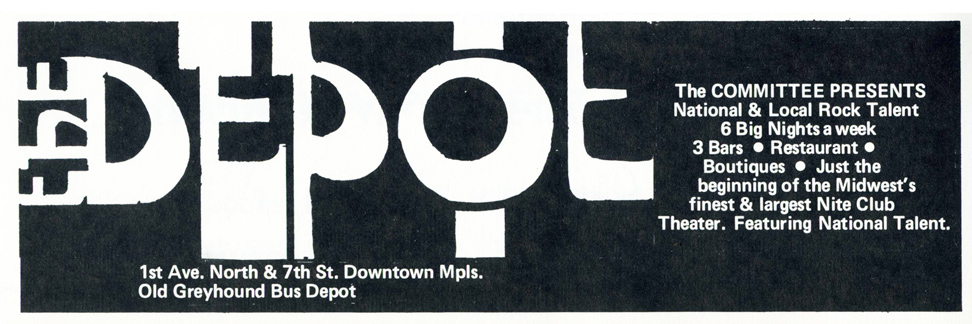
Page 30: THE COMMITTEE PRESENTS National & Local Rock Talent 6 Big Nights a week. 3 Bars; Restaurant; Boutiques; Just the beginning of the Midwest’s finest and largest Nite Club Theater. Featuring National Talent.
Page 32: HAPPINESS IS A GUY NAMED JOE! FOLLOW THE SEARCHLIGHTS APRIL 3 FOR A NICE TRIP! (Old Greyhound Depot) Downtown Minneapolis
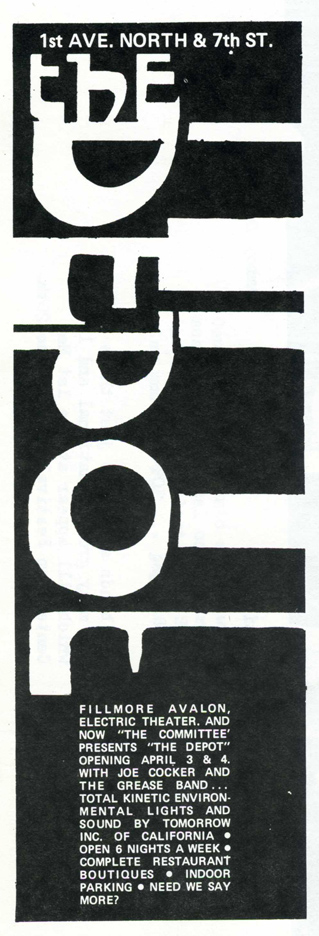
Page 35: Fillmore Avalon, Electric Theater, and now “The Committee” Presents “The Depot,” Opening April 3 & 4 with Joe Cocker and the Grease Band … Total Kinetic Environmental Lights and Sound by Tomorrow Inc. of California * Open 6 Nights a Week * Complete Restaurant * Boutiques * Indoor Parking * Need We Say More?
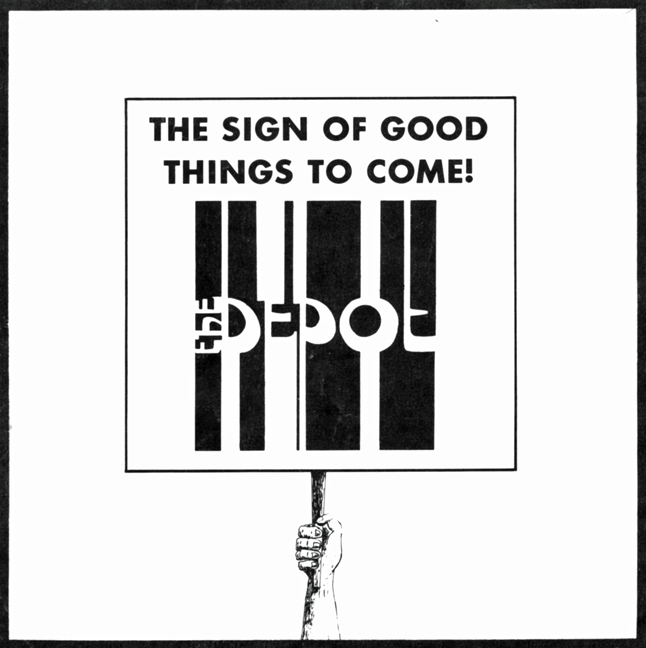
March 29, 1970, Minneapolis Tribune: “A Short Wait at The Depot”
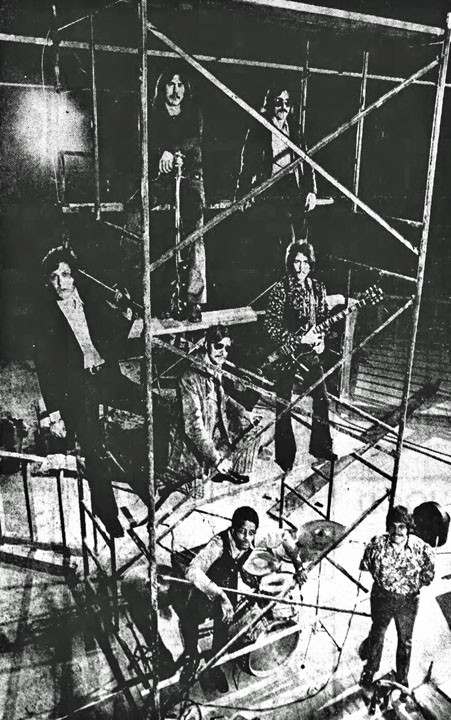
Danny Stevens, hanging in there on the left side of the scaffold, and his band, The Reasons, posed last week in the former Greyhound Bus Terminal, 7th St. and 1st Av. N., which is due to open Friday as a night club called The Depot. Stevens, president of the corporation that owns the operation, and the others appeared confident that redecorating will be completed in time.
THE SAGA OF HARVEY DUBISCH
In an attempt to create a buzz about the Depot, Allan got it in his head to put up 30 billboards around town that said something to the effect that “Everyone is Invited to the Depot… Except Harvey Dubisch.” Those stayed up for about three months. As a follow-up, for a month he put up the billboards shown below, ostensibly an answer from the supposedly fictional Harvey Dubisch, demanding to be invited to the Depot.
The campaign created enough of a stir to be included in Minneapolis Star columnist Abe Altrowitz’s “View From Lake Calhoun” column on May 21, 1970. Altrowitz was enamored of a new acronym, Deleted On Grounds Of National Security (DOGONS), and named several instances where he could use it. One of them was, “The real reason Harvey Dubish is barred from The Depot is — DOGONS.”
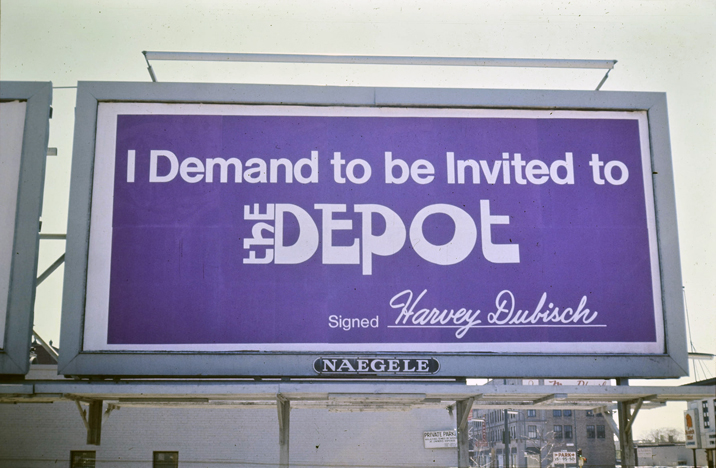
Well, the problem was that Allan neglected to check to see if there was a real Harvey Dubisch who might take issue with having his name bandied about on billboards. Close enough – there was a Harvey Dubish who owned an iron and metal company in St. Louis Park – Allan’s home town. And Mr. Dubish was not amused. In fact, Allan told me that his wife sued, and the Committee had to dig into their limited funds even further to take care of that fiasco.
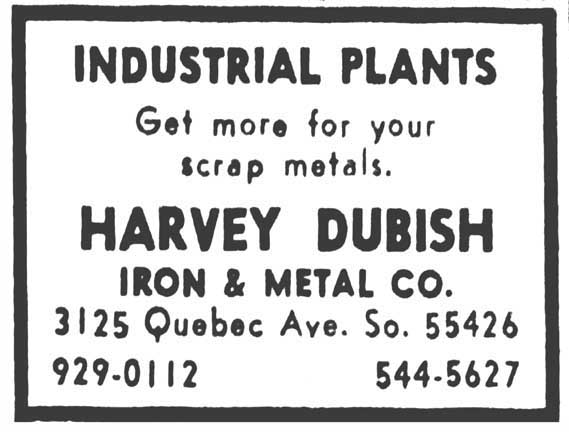
INTERIOR OF THE DEPOT
The interior was designed by John Neil, with many of the walls decorated with huge pop murals done by West Bank painters. The decor was purple, with purple shag carpet on the stage. The purple was in honor of the Minnesota Vikings, who had come to town nine years earlier.
The Depot was still being hammered and sawed up to the last minute. Here’s a bird’s eye view of what it looked like in the very early days.
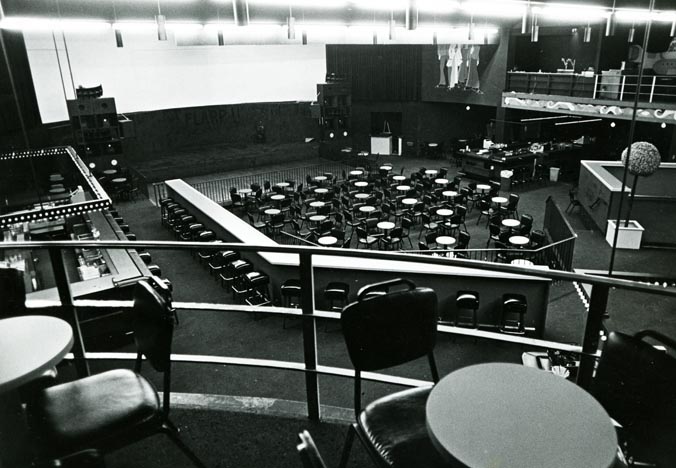
There was at least one large picture of the Beatles on the wall – the closest photo found is this one from the Ramsey Lewis show, where part of one is seen up on the balcony. Perhaps a foreshadowing of the John Lennon Tributes that take place each year on December 8, led by Curtiss A.
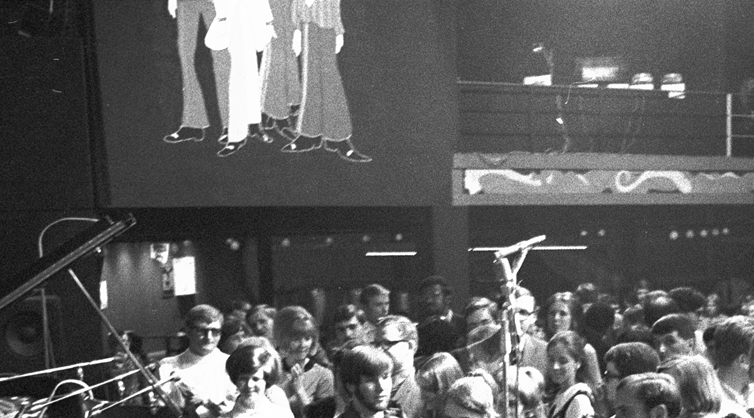
Another photo from that Ramsey Lewis Show gives us an idea of what a sold-out show looked like back in the Depot days. The round things on the left are some sort of decor.
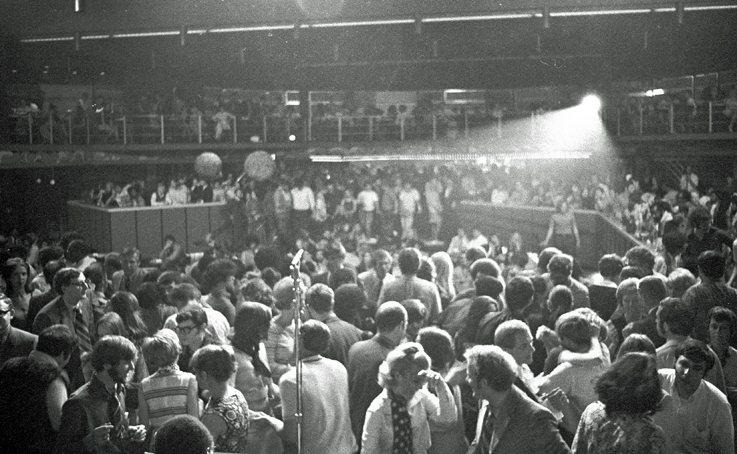
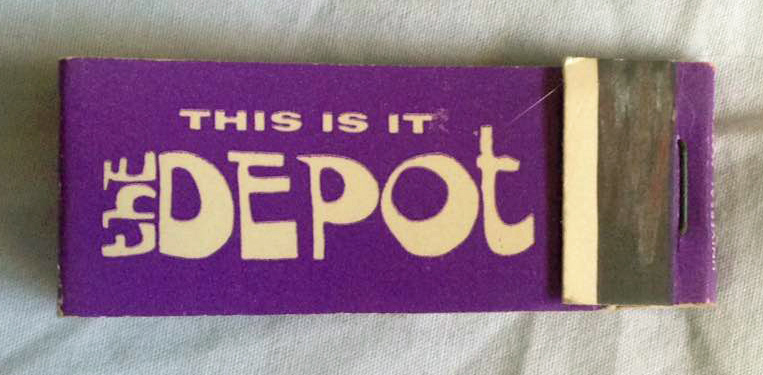
HOUSE BANDS
Although Danny’s Reasons were reported to be one of the house bands, they mostly only played Beer and Wine Nights on Mondays. (DS) Frequent house bands were more likely to be:
- Crockett
- Grizzly
- Suite Charity
- Ned
- The Sir Raleighs (who became Copperhead)
- Big Island
THURSDAY, APRIL 2, 1970 – VIP NIGHT
The night before Joe Cocker officially opened the Depot, the Committee held a party for the Media and 500 guests (250 + 1) to introduce the new venue. Danny Stevens remembered that Timothy D. Kehr helped put the guest list together. Film clips were taken of the new place, and TV interviews with prominent hosts such as Bill Carlson, Nancy Nelson, and Dave Moore were taped, to be broadcast after the last show on April 4 (and into late night April 5), 1970. Danny and WDGY Disk Jockey Jimmy Reed acted as MCs, and pizza was served.
Music was provided by the Paisleys, Cricket, and possibly Big Island – Danny’s Reasons and the Del Counts did not play that night.
JOE COCKER OPENS THE DEPOT
The Depot opened on April 3 and 4, 1970, and an estimated 2,300 people came to the club over the two days to see the Mad Dogs and Englishman tour featuring Joe Cocker.
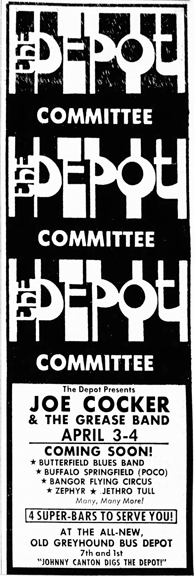
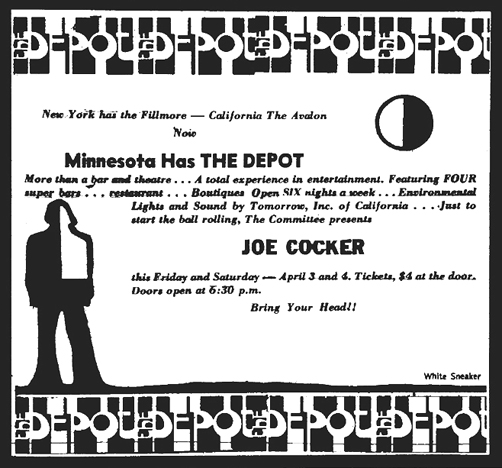
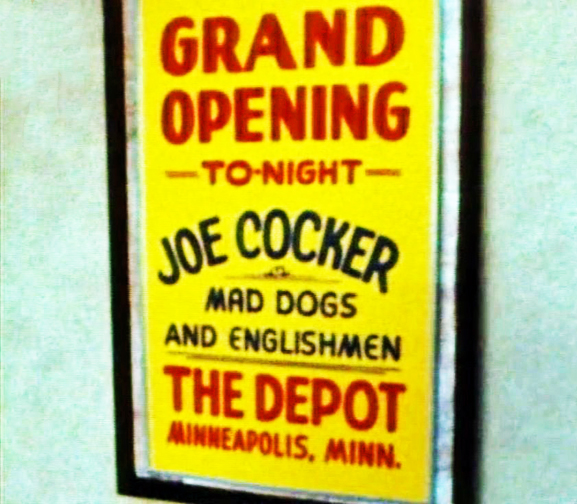
A photo of the poster was found being held by Cocker himself on the night of the opening!
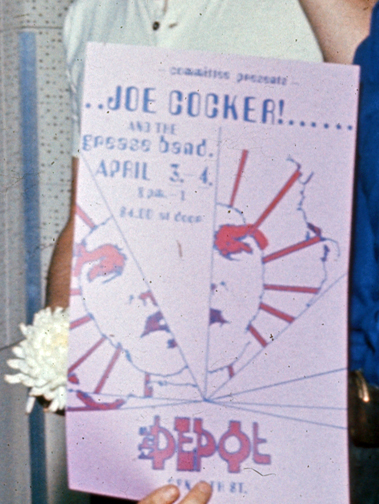
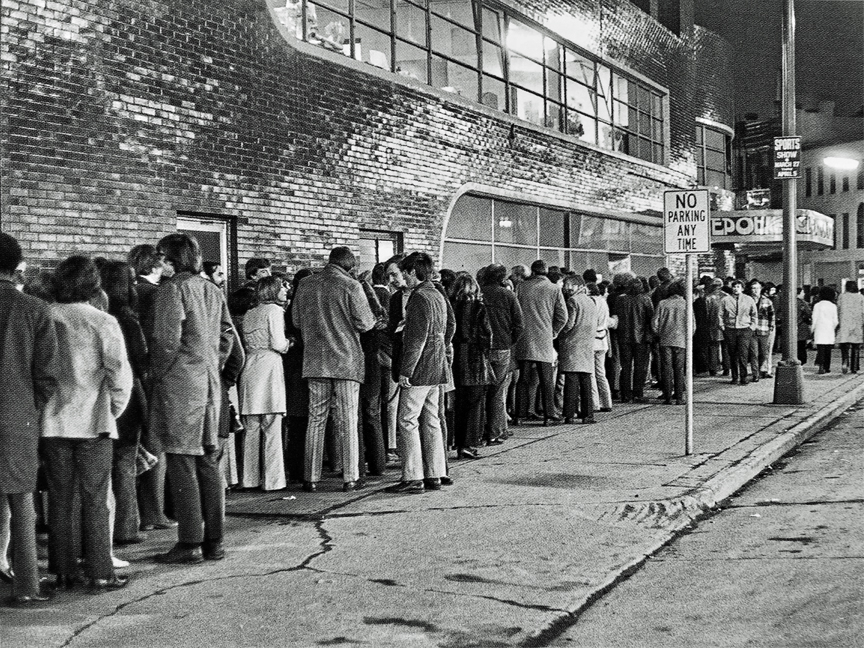
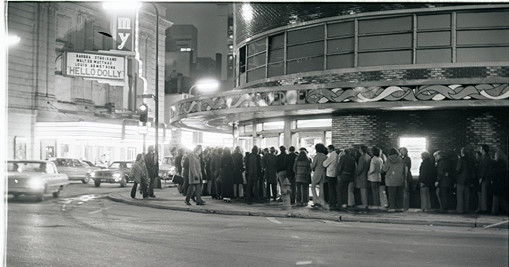
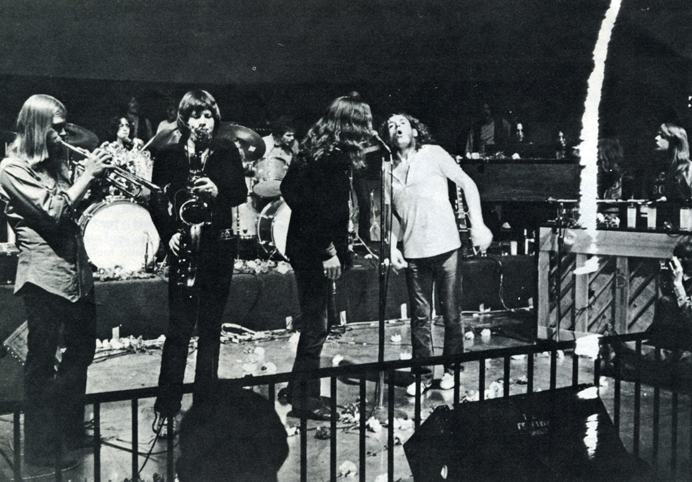
Let’s bullet the factoids:
- Bill Graham had helped them line up Santana for the opener but it didn’t work out. (CR)
- Leon Russell was the musical director of this American tour, which descended on 48 cities over 60 days.
- The movie Woodstock, which introduced Cocker to many Americans for the first time, had just hit theaters a week earlier, so the timing was excellent.
- Personnel included 20 musicians, another 20 Englishmen on stage just for fun, two or three kids (allegedly on acid), and characters like the Lunar Teacake Snake Man, the Ruby-Lipped Essence of Lubbock, Texas, and the Mad Professor. Here’s one of the toddlers:
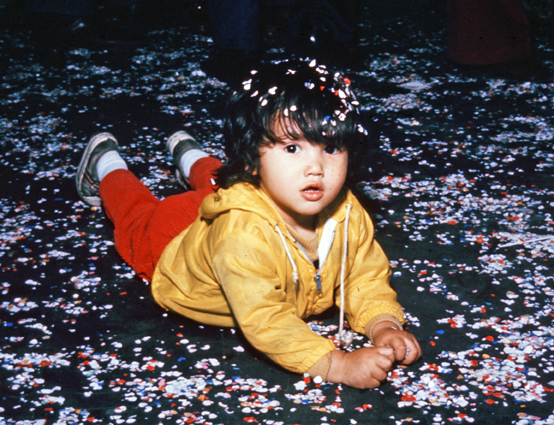
- The enormous group of back-up singers was called the Space Choir. (CR) Two of the more famous members would be Rita Coolidge and Merry Clayton.

- Backup singer Pamela Polland’s fox terrier, Canina, had the run of the place, and infuriated Allan when she pooped on the stage. (CR) Here’s the dog, complete with “Cocker Power” tag.
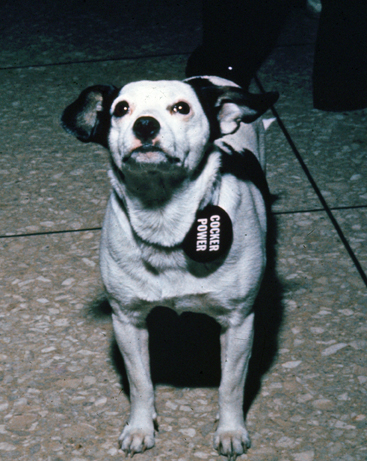
- Tony Swan of the Twin Citian reported that Cocker was paid $15,000 for the weekend.
- Cocker’s manager demanded $7,000 more before the show, claiming that the booker low-balled the number of people expected. (CR, DS) Lawyers got involved when Cocker’s people threatened to pack up and leave, violating their written contract. When they found out that a call to the Teamsters’ Union would prevent this, the show went on.
- The Depot was the smallest venue on the tour, which had started two weeks before. (CR)
- Cocker’s people didn’t know they were inaugurating the new club. (CR)
- Allan ordered 2,000 carnations, which were thrown back and forth between the audience and the performers. (AF)
- On opening night it cost only $4 to get in, but there was a $10 charge for a table, with much poaching of seats going on.
In an interview on March 30, 2018, for Channel 5 news, Danny Stevens recalled, “Joe Cocker, I thought, was a real gentleman. I remember picking the whole group up at the airport. They came in on their own plane.”
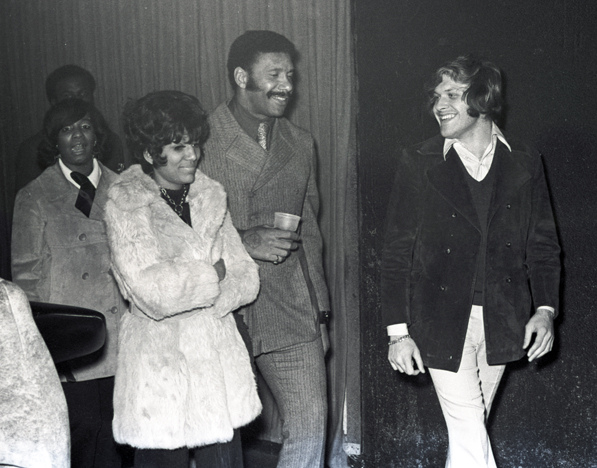
Johnny Canton, Program Director of WDGY Radio, acted as MC for the show.
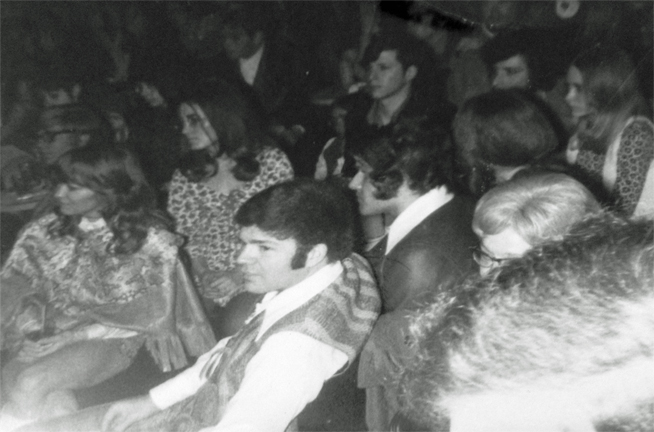
LOCAL ACTS
Thursday, April 2, 1970 – VIP Night
Danny remembered that three local bands played at the party put on for the Media and the Beautiful People of the Twin Cities, but was unclear about which ones.
Tim Emerson remembers that his band Cricket was one of them.
One of them could have been the Paisleys.
Neither believe that the Del Counts nor Danny’s Reasons were on the bill.
Perhaps the third was Big Island.
Friday, April 3, 1970 – First Night
There is a great deal of controversy about which local bands played during the two days that Joe Cocker opened the Depot. Connie’s Insider reported that local band booker Marsh Edelstein was upset that publicity about the concert did not include the bands that played before and between shows.
Many bands remember that they were the first to play at the Depot. Unfortunately, that elusive first band is not documented in any review that I’ve found. This is what we do know:
There was a “preliminary rock act,” according to Allan Holbert of the Minneapolis Tribune, (April 4, 1970).
Marshall Fine deemed the opening band “terrible.” (Minneapolis Star, April 6, 1970) When contacted in April 2023 to find out what he remembered, he replied, “Apologies. I don’t even remember there being an opening act, I’m afraid. Your search continues.”
Jim Gillespie of the Minnesota Daily called them “a trio of high school kids who probably wowed ’em at the Thanksgiving Turkey Trot but had no business playing at a place where it costs four bucks a ticket.” (April 10, 1970) The reference to youth made me think of Debb Johnson, but they had 7 pieces.
The two reviews above establish that it was a trio. One trio, Triad, didn’t move to Minneapolis until May 1970, according to minniepaulmusic.com.
A common suggestion was Crockett, but member Tom “Footie” Husting reported, “Wasn’t Crockett. We didn’t get together until after the Poco at the Depot gig.” Another member, Larry Hofmann, concurs. Besides, that band had four pieces. Crockett did go on to become the first “house band.”
Others suggested the trio Jokers’ Wild (which was called Flash Tuesday at the time), but member Denny Johnson remembered that the band was in Nebraska the entire month of April 1970.
Richard Timm says the Paisleys opened that night. But he also remembers that the Bangor Flying Circus performed next before Cocker, and that surely didn’t happen. In addition, it does not appear that the Paisleys were a trio, they were not unknown teenagers, and reviewers would have mentioned their name. Perhaps he was thinking of the night before, or the night after.
Charles Schoen says the Del Counts opened that night. For the same reasons as above, the Del Counts are unlikely. They were not a trio, they were well known, and they already had over ten years’ experience. It is very possible that they performed between shows, however.
Bear, Beaver, Peacock
Will Jones and his wife lasted about two minutes at the opening before his ears gave out. The opening band was TOO LOUD. The photo below accompanied his column – it is a terrible, grainy photo, but it shows a trio.
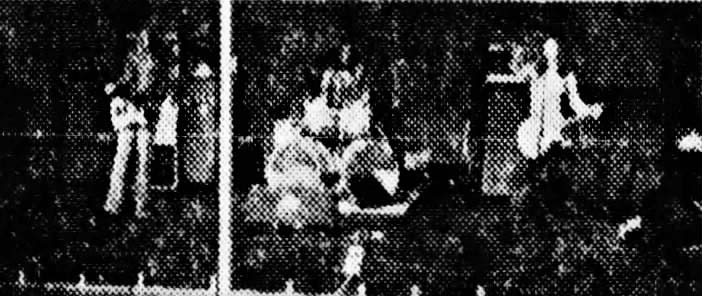
One possibility might be Bear, Beaver, Peacock. The photo below was taken on September 17, 1970. This is not very likely, however, since this was not one of Marsh Edelstein’s clients.
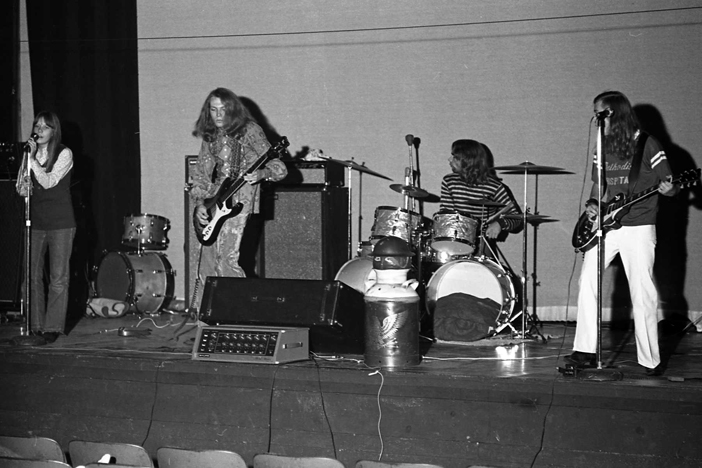
Steve Barich was too busy running the light show to be paying attention. Larry Loofbourrow, who was running sound and the light show, understandably doesn’t remember 53 years later.
On April 4 the supporting acts were Kaleidoscope and the Paisleys. (no citation)
Another account says that Pride and Joy performed, and Cricket was scheduled but was bumped for time. (no citation)
Please Contact me if you have any recollection of this important fact about the Depot!
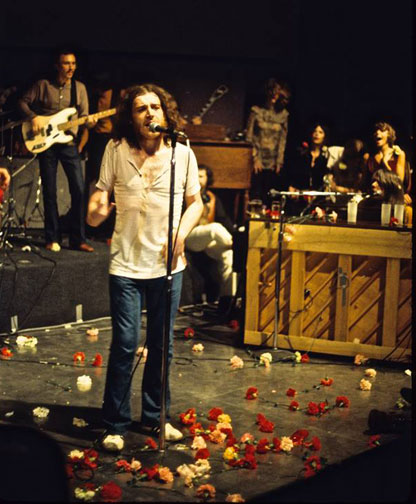
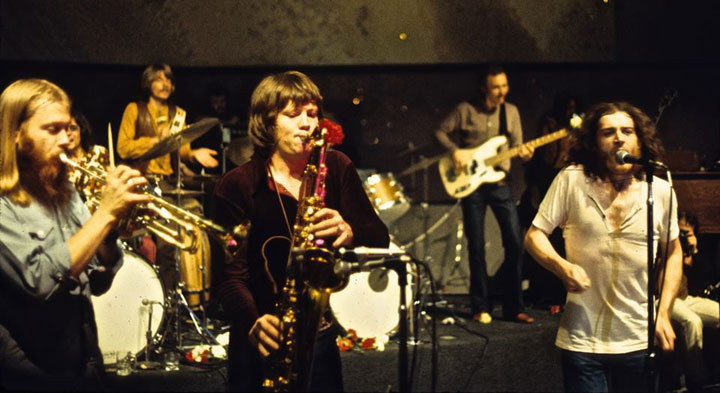
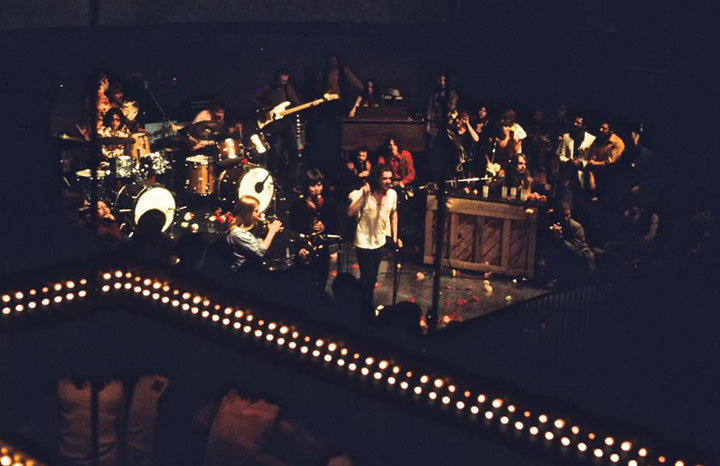
REVIEWS OF OPENING NIGHT
MARSHALL FINE
Marshall Fine’s review of opening night in the Minneapolis Star was scathing, citing bad planning, expensive drinks, a long wait to get in, an opening band that was “terrible,” and the fact that Cocker’s first set was only 20 minutes long. Fine was a student at the U of M at the time, and complained that the under-21 crowd couldn’t get in. He did appreciate the “exquisite show” put on by Cocker, but said that the “audience’s response was comparable to that of an equally drunk group shouting ‘take it off’ at the Roaring 20s.”
ALLAN HOLBERT
Allan Holbert’s review in the Tribune’s was more focused on the sheer numbers of people who showed up, saying that people were lined up four-deep around the block. “Not since the truck drivers’ strike of 1934 is it likely that there has been such excitement, such chaos, such congestion, such noise just off Hennepin Av. as there was Friday night.” Allan Fingerhut said that they ran out of booze by 8:00 and had to send out for more.
Holbert’s account, which later calls the space the Fillmore Upper Midwest, says that carpeting and other interior decorations weren’t yet installed, but the old bus station was packed by the time Cocker hit the stage just after 8 p.m. Cocker worked hard on a stage filled with 40 people, “singing like a black man, which he isn’t and doing his dancing stuff like a spastic, which he isn’t either.”
TWIN CITIAN
Tony Swan’s account in the May issue of the Twin Citian said that the “beautiful people,” many wearing “Cocker Power” buttons, numbered 2,000, which was 600 over capacity. He said that the first show was a dud, with too much noise and confusion and older people holding their ears and beautiful people “with resplendent sun tans and $250 hippie outfits” more interested in checking each other out than listening to the music. But between sets “the ingredients underwent an important purge. A lot of the older people, having seen enough, went out the door shaking their heads in disbelief, their ears ringing. The beautiful people made a determined and lengthy run on the bar, lowering their inhibitions in direct proportion. And the hard core rock freaks moved in on the privileged table area, surrounding it, engulfing it.”
During the second set, “Everyone – everyone – began swaying in time to the music, which became so loud that it was beyond the audible – it was simply deafening. People began throwing flowers onto the stage and the musicians began throwing them back, strengthening the two-way process. … And Cocker kept pouring more and more of himself through those big banks of amps… until he was finished and just stood there, smiling amid all the flowers.” Fingerhut had provided the Carnations.
Swan’s article gives a detailed description of the Scene:
The curved wall which used to embrace the gates to departing buses is now the backdrop for a large, purple plush-covered stage. On the wall above the stage, Cinemascope style, there is a large screen. While the performers are wailing, batteries of projectors – in all eight carousel slide projectors, four opaque projectors and a 16-milimeter movie camera – shoot images onto the screen from either end of the horseshoe shaped balcony which surrounds the main floor. There are also colored spotlights and strobe lights – all the usual implements of psychedelia. There are five bars, three on the main floor and two on the balcony. There is a large, prime table area right in front of the stage: on opening night the tables went for 10 bucks a head, which could get to be a drag on the Depot’s income potential in the future.
MINNEAPOLIS FLAG
A reviewer named Greg noted in the April 10, 1970, issue of the underground magazine The Minneapolis Flag that what seemed like the entire Tactical Division of the Minneapolis Police Force (off duty) had been hired as floorwalkers and bouncers.
WILL JONES
Will Jones tried to cover the opening, but the sound inflicted so much physical pain that he speculated that the young people had developed leather eardrums to survive.
What’s been created there is an environment in which no creature born before 1940 can survive. …
The generation-communications gap may be entirely a physical thing, you know. I never wanted to communicate with one of these creatures more in my life than when a lush, bell-bottomed, dewy-smiling young blonde came over to me and moved her lips in a way that I knew, from experience in the outside world, meant that she was speaking to me. But the only sound I could hear was that which came from the amps. I stared at her, dumb and helpless. Maybe she thought I began to cry, but the tears that came to my eyes were as much from the smoke, I’m sure, as from frustration. That’s another thing that the sound does in places where these creatures and their favorite performers gather. It blocks the ventilating system with great globs of sound, and no smoke ever escapes a club or all in which rock music is performed, no matter how well-intentioned the architects and engineers may have been.
Jones lasted about three minutes until he and his wife escaped to more sedate environs.
CONNIE’S INSIDER
Connie Hechter’s review in his April 11 – 18, 1970, issue was evenhanded, citing both the positive and negative aspects of the venue and the show. He even reviews the other reviews. It’s a long piece, but I’d like to quote it in full.
Depot Opens With a Cocker Named Joe
The long heralded opening of The Depot, Minneapolis’ newest downtown night spot, took place last weekend, April 3 and 4, 1970, with that great white blues singer, Joe Cocker and his pop version of the Beverly Hillbillies in residence on the large, well-lit stage which workmen, working in mass confusion with great pressure to ready the joint in time, finished minutes before the overflowing crowds swelled into the club.
The reviews [of the club] in the daily papers were mixed. Some critics liked the club, but others seemed to miss the entire potential capabilities of the Depot becoming one of the great havens for entertainment in the Midwest if not in the entire country.
First off, the Depot can be the ideal night spot for rock or any other kind of entertainment. The place is big enough to hold more than a thousand customers, with seating for several hundreds. Many night clubs suffer from lack of size (you need lots of people to support the acts people want to see, as most name acts are priced in the “expensive” category). I mean, imagine a bus depot for a night club…. What could be better? Besides, the Depot just happens to be located in the heart of the downtown loop, a short block off our “great white way.”
Next, the man guiding the Depot’s operations and footing the bill for the massive decoration required, Allan Fingerhut, poured hundreds of thousands into his project, unlike some clubs which open with a bare minimum of capital and decoration. Fingerhut and his sidemen, Danny Stevens, Abby Rosenthal, Skip Goucher, and Clearance (sic) Kramer did most everything in a first-class manner. The fact that some parts of the operation did not function accordingly on opening weekend could only be attributed to a rush, rush schedule to get the doors open in time which translates to lack of planning and organization. This will straighten itself out, as Mr. Fingerhut and company, known as Allan’s Committee, are well aware of the shortcomings that took place last weekend.
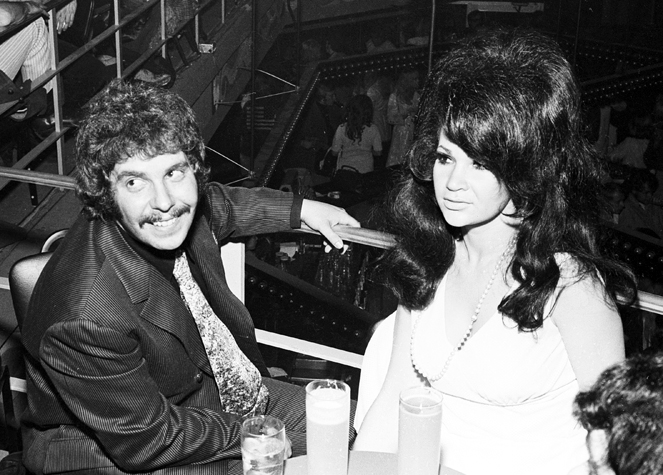
So now you have a big club done up in a more-than-respectable atmosphere with accent on the mod generation, the young hip people who make things happen.
Did anyone take close notice of the superb light show and screen upon which it was reflected? It was a real, wraparound screen that does justice to the best Cinerama pavilion in town…. Not a bunch of sheets stringed together, hanging from the ceiling. Not that anything is wrong with a bunch of sheets, but imagine what it’s like to work with an honest-to-goodness screen.
The sound system is good, and the acoustics are excellent for a musical rock show. (More about this later.)
Perhaps the best thing about the Depot as far as catching rock acts within its walls is the important fact that one can buy a drink, unlike catching a show at the Auditorium or Armory etc. One doesn’t expect to buy drinks at the latter, but imagine digging an act with a cold glass in your hand (you over 21 people).
Perhaps now you can begin to comprehend the possibilities this club can provide. Not only rock shows but big bands and small circuses can perform now in downtown Minneapolis.
Many people were miffed that the opening scene was so crowded and the promised tables were not available, as people were sitting everywhere, whether or not they held tickets for tables. This situation never should have happened; monitors should have seen the $10 ticket holders and the press to their tables. But again, the schedule was so hectic that the place was lucky to get the doors open. Now that they did that, they can worry about the reservations and such, and the public will have to forgive the mix-ups experienced on April 3 and 4.
Other people greeted with shock the news that the club is off limits to the under 21 crowd. This is a shame for those in this category, but it is unavoidable, as the Depot dispenses liquor and beer.
One reviewer commented that the Depot is missing a substantial market by not allowing the kids into the shows. The management is well aware of this. However, they opened a night club with booze, and did not intend it to be a concert hall for the younger people. Perhaps they will provide concerts on weekend afternoons for those who cannot legally attend during evening hours.
There are those betting that the club will not “make it” for six months. I’m betting it will, provided Fingerhut tightens up the operation, sells drinks to the masses, and provides us with good national and local acts. He says this is exactly what is planned, so let’s get behind the Committee and help Allan and his gang in their efforts to make the joint successful.
[A photo of Fingerhut bears the caption:] Cocker and his Mad Dog musicians put on one of the greatest shows of the year, so far. Allan Fingerhut, left, owner and guiding hand of the Depot, smiles as the pressure to get his club open in time is off. He was happy with the results of the club’s opening weekend. And he enjoyed the Cocker show. So did 2,300 other people over the two night stand.
MAD DOGS AND ENGLISHMEN
The shows were filmed and appeared in the movie “Mad Dogs and Englishmen” along with other shows on the same tour.
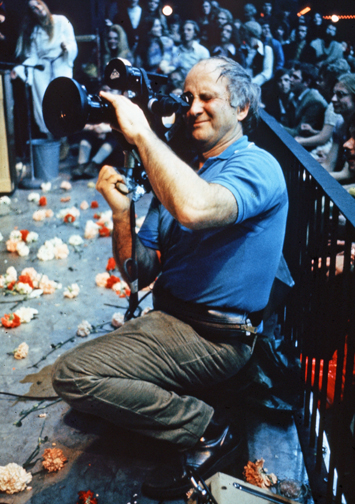
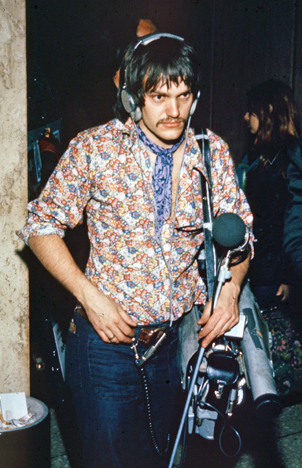
The first time the movie came to local screens it came and went fairly quickly.
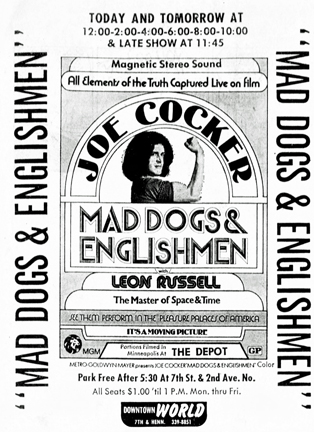
CIRCUS MAGAZINE
Mike Barich’s photo of Cocker – holding a carnation – appeared on the cover of the August 1970 issue of Circus magazine.
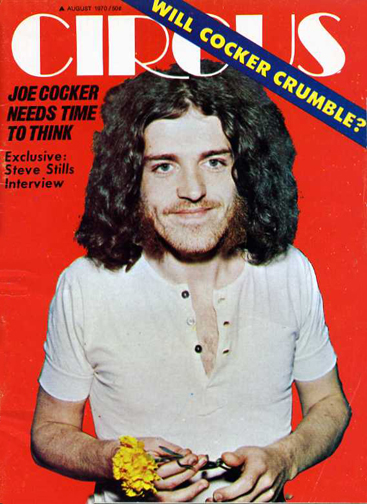
COCKER RETURNS
The Star Tribune, December 22, 2014, reported:
Cocker returned to the club one more time when it was called First Avenue in 1994, the same year he played the 25th anniversary Woodstock festival. However, he could not remember the 1970 gig nor the venue when Jon Bream interviewed him in 2009 before what would be his last Twin Cities area performance, at Mystic Lake Casino. He said, “The Depot? I’ll have to run it by Chris Stainton [his longtime keyboardist]. It doesn’t ring a bell at all to me.”
John Robert Cocker, known to family, friends, his community and fans around the world as Joe Cocker, passed away on December 22, 2014, after a hard fought battle with small cell lung cancer. He was 70 years old.
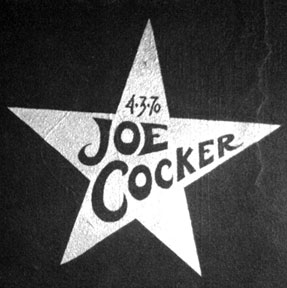 Cocker’s star at First Avenue
Cocker’s star at First Avenue
OTHER DEPOT SHOWS
April 11, 1970: The Butterfield Blues Band (relatively small crowd)
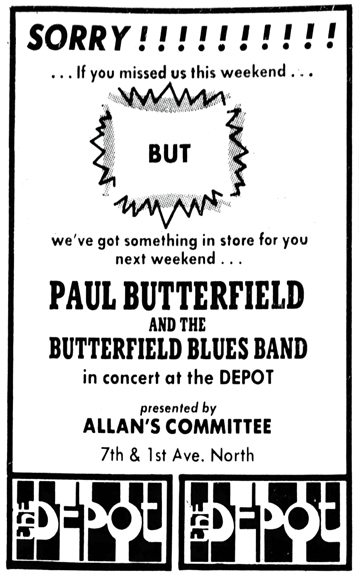
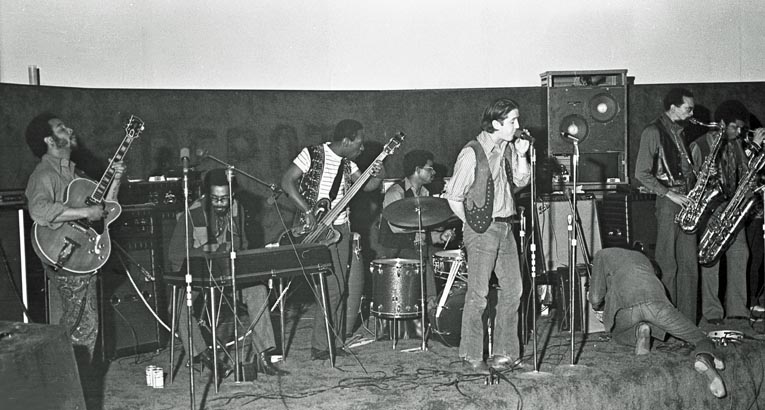
Underground newspaper Hundred Flowers had an adversarial relationship with the Depot from the start, it seems. In its April 17, 1970 issue, there was this:
the decor: amazingly tasteless
the room: amazingly tiny
the floor: amazingly crowded
the liquor: amazingly costly
the sound: amazingly loud
Cocker & Butterfield: amazing!
April 17-18, 1970: Poco, opened by Big Island and the Hot Half Dozen. (Crockett also remembers opening)
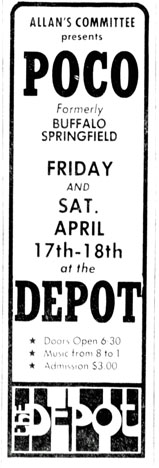
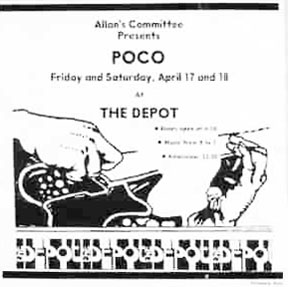
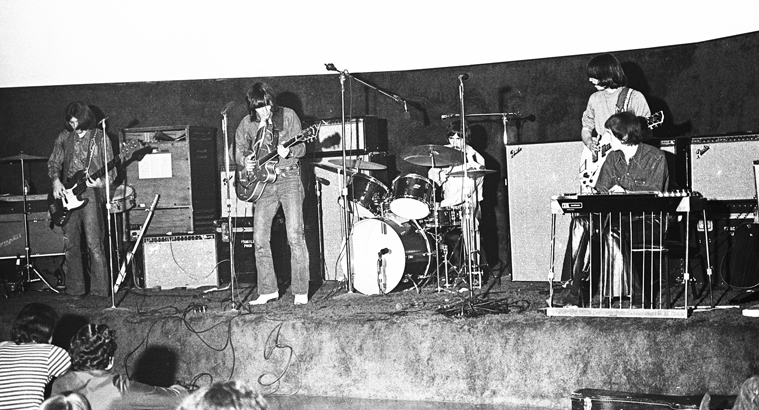
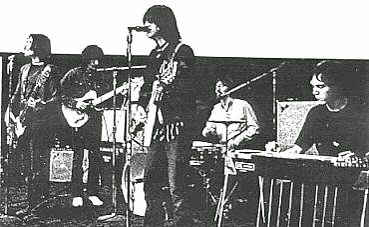
Richie Furay and Jim Messina, formerly of the Buffalo Springfield, made up the nucleus of Poco, and according to reviewer Marshall Fine, put on a fine show. Furay, a country music fan, made Poco into one of the first country-rock bands. They played songs from their first album and from their yet-to-be released second album. Fine had exemplary things to say about each member of the band, and headed his review “Poco show builds to stunning climax.”
Fine also had this to say about the venue itself:
The Depot, in two weeks, has mellowed quite a bit. The crowd is smaller, quieter. The whole atmosphere is calmer than when it opened. Its potential is considerable and it has turned into, generally, a pretty nice place.
Review of Poco by Ron Dachis of the Minnesota Daily:
Poco, a down home country-rock group eased into the Depot Friday night with little fanfare. But before the evening was over they had captured the small, yet receptive audience, with the ever-improving Poco sound.
From the rich sampling of new tunes we heard Friday night, especially in the second set, it appears that Poco has found itself and is well on the way to much greater success.
The bad seems to be taking more shape. It can most aptly be described as a rock band with a country feeling. The ever-present pedal steel guitar and tenor harmony produce the country effect. Hard working drummer George Grantham and bassist Tim Schmit lay down the rocking beat.
The first set started with Richie’s “Come On,” a real rocker that set the tone for the evening. Then Richie did “A Child’s Claim to Fame” for old times sake. After this number the group seemed to relax and “Anyway Bye Bye” a blues cut from their new album went really well.
“Grand Junction,” an instrumental that featured Rusty on pedal and dobro, won the crowd. Jim’s lead guitar intertwined with Rusty’s expert picking.
Next was “Consequently So Long,” “Don’t Let It Pass By,” and a new version of “Nobody’s Fool.” “Don’t Let It Pass By” featured some excellent harmonies. The new version of “Nobody’s Fool” displayed extended instrumental solos by Rusty and Jim. George and Tim were driving away while Jim came off the stage to play amongst the crowd.
They closed the first set with “El Tonto de Nadie, Regresar,” written by the whole group which, when translated means “Whatever happened to the Kinks?”
Poco returned to a somewhat warmer response for set two. This set included three cuts from the first album: “Calico Lady,” “What a Day,” and “Pickin’ Up the Pieces.” The rest of the songs from the new album were played and one thing became evident as the evening progressed. This group has found itself. The players are all doing the same things together with the same ends in mind. This singularity of purpose and tight control constitute Poco’s music.
Poco has decided exactly what they want to be doing and they’re following it through. Their new release will undoubtedly outshine the first. Poco’s development can possibly be attributed to their attitude which is much like the final song they played, “Keep On Believing.” They believe in their style, believe in their music, believe in their people. Poco made a lot of friends this weekend.
Another review, this time from Hundred Flowers: (most typos fixed)
Poco is beautiful and just what I’ve been waiting for. They’re better than ever, too. Randy Miesner, who played bass on Picking Up the Pieces, is now a gas jockey somewhere in Nebraska and Poco has made the perfect replacement. Tim Schmit’s excellent musicianship, smooth tenor voice and little brother smile fits him right into place alongside the others, already renowned for their harmonies of spirit and voice. In fact, his voice is almost indistinguishable from Richie Furay’s, who, along with bass guitar Jim Messina (lead guitar and pedal steel with Poco) was as instrumental as any Steve Stills or Neil Young in creating the Buffalo Springfield sound.
With Neil’s brother Rusty Young on organ and George Granthum on Drums, the Poco sound is just as distinctive and just as special. Their tenor voices (all but Young sing) sound like four Richie Furays or about one octave below the chipmunks and two octaves below Graham Nash.
One poster indicated the Mitch Ryder was at one time scheduled to be on the bill with Poco on April 18, 1970.
April 24, 1970: Bangor Flying Circus, opened by Zephyr
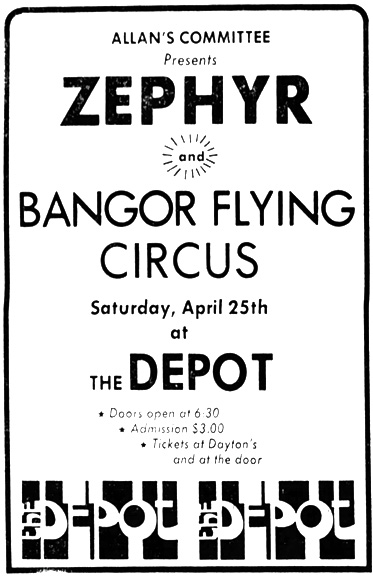
One poster gave the dates April 21 to 24, 1970 for this appearance.
The same poster showed Bangor Flying Circus and Zephyr scheduled for April 25, 1970.
Also appearing in April:
White Lightning
The New Reasons
Faith
The Paisleys
The Del Counts
May 5-9, 1970: The Ramsey Lewis Trio. Danny’s Reasons opened on May 8. Blues Image opened on May 9.

THEM CHANGES
On May 8 and 9, 1970, Lewis’s concert was recorded for his album “Them Changes,” which was released as Cadet Records LP 844 in October 1970.
Lewis alternated between a grand piano and an electric piano.
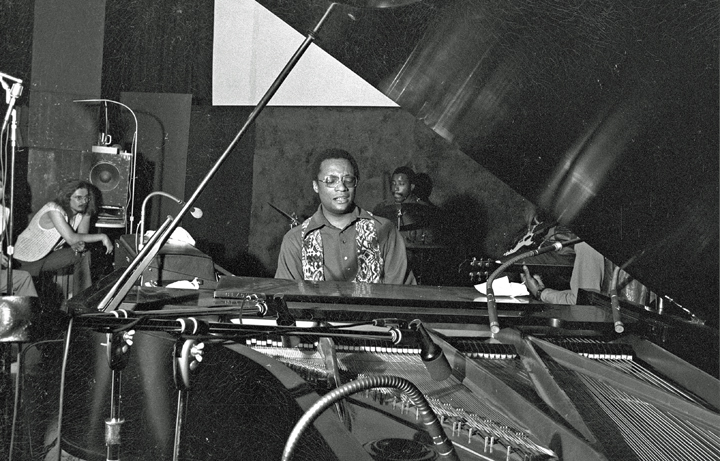
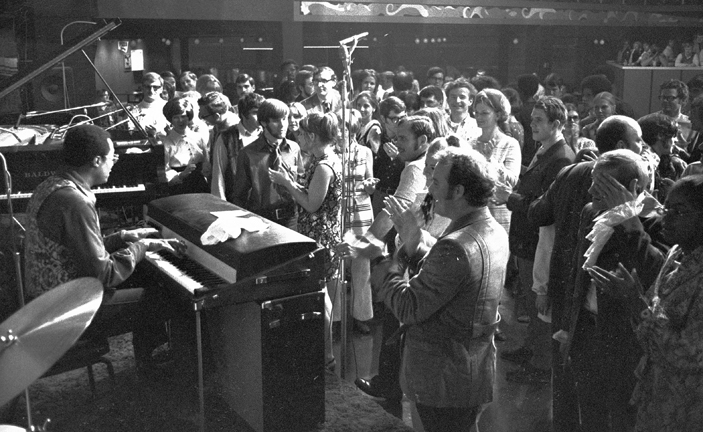
The Track List, courtesy of discogs.com:
| A1 | Them Changes | 6:40 |
| A2 | Drown In My Own Tears | 7:25 |
| A3 | Oh Happy Day | 7:10 |
| B1 | Do Whatever Sets You Free | 7:53 |
| B2 | Something | 5:15 |
| B3 | See The End From The Beginning, Look Afar | 6:15 |
| B4 | The Unsilent Minority | 3:45 |
The Credits, again according to discogs.com:
- Steinway Grand Piano, Fender Rhodes Electric Piano: Ramsey Lewis
- Electric Fender Guitar: Phil Upchurch
- Bass [Electric Fender Bass: Cleveland Eaton
- Drums: Morris Jennings
- Arranger, Producer, Concept by Ramsey Lewis
- Engineer: Reice Hamel
- Mastered by George Piros
- Artwork by Dick Fowler
- Photography by Alan Levine
- Supervised by Dick LaPalm
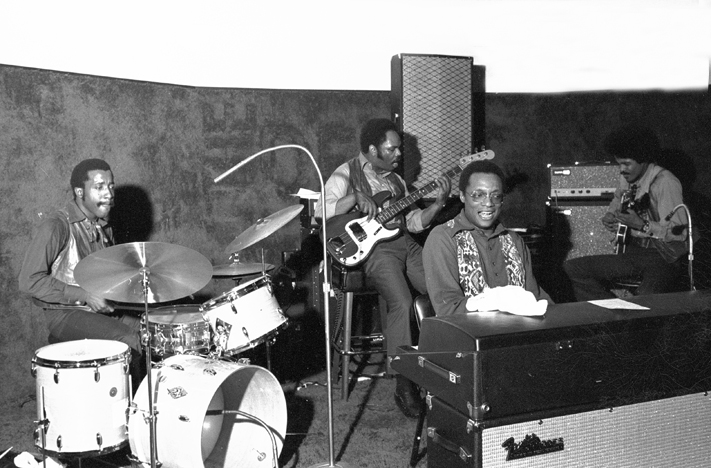
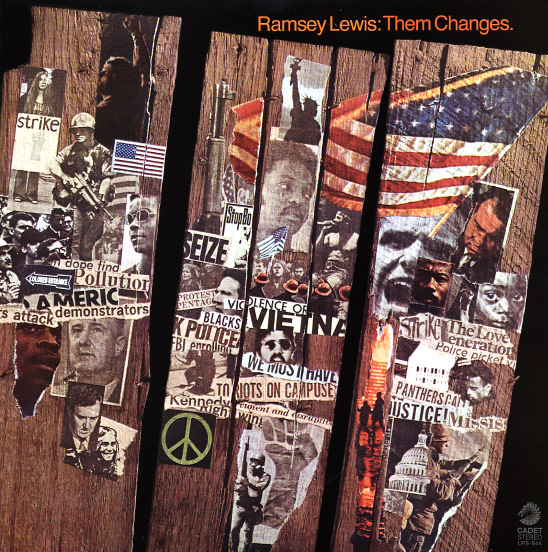
May 17, 1970: Mitch Ryder and Mojo Buford Blues Band. Delaney and Bonnie were originally scheduled to be the main act, opened by Ryder.

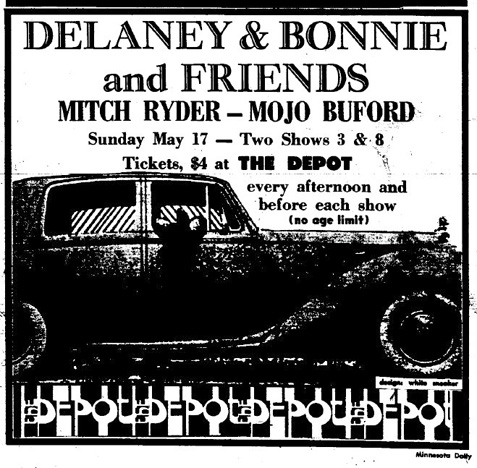
When Delaney and Bonnie cancelled, Ryder moved up to be the headliner. Robb Henry remembers, “Will Agar and I were the guitarists with Mojo Buford on that show. I was really impressed by Mitch Ryder’s guitarist Steve Hunter.”
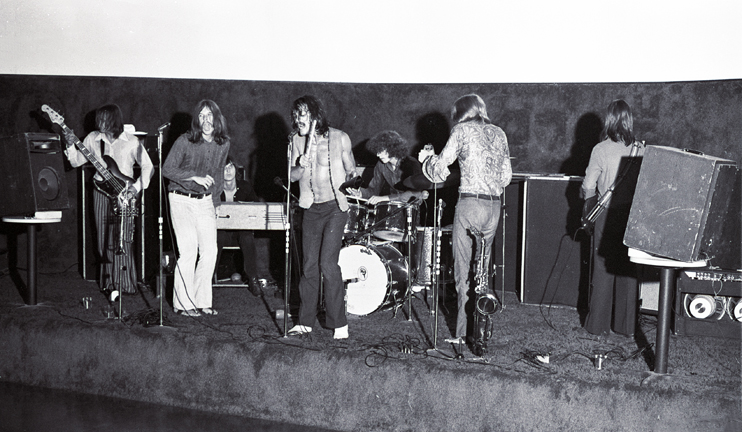
Perhaps because of the substitution, there was a pretty sparse crowd.
May 22-23, 1970: Kinks, opened by Crockett. This was the first appearance by the Kinks in the Twin Cities.
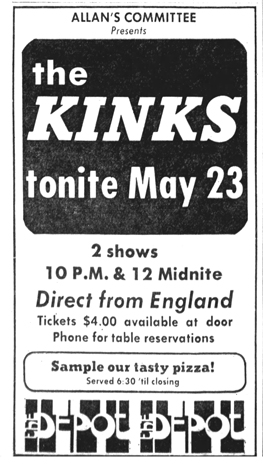
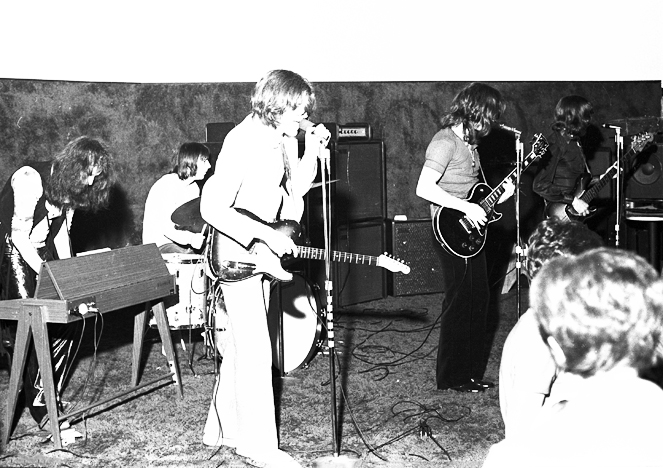
There was a low turnout for the shows, reportedly, as there was a lot going on that weekend. On Friday, May 22, a “Footbridge Festival and Day of Life” took place at the U of M. This event featured David Dellinger, defendant in the Chicago 7 trial; “two mild protests;” rock bands playing on and off all day; and a free concert by Phil Ochs at 8:30 pm. (Minneapolis Star, May 23, 1970) On Saturday, May 23, a “Conference on the Black Panthers: Target of Repression” was held at the Unitarian Church.
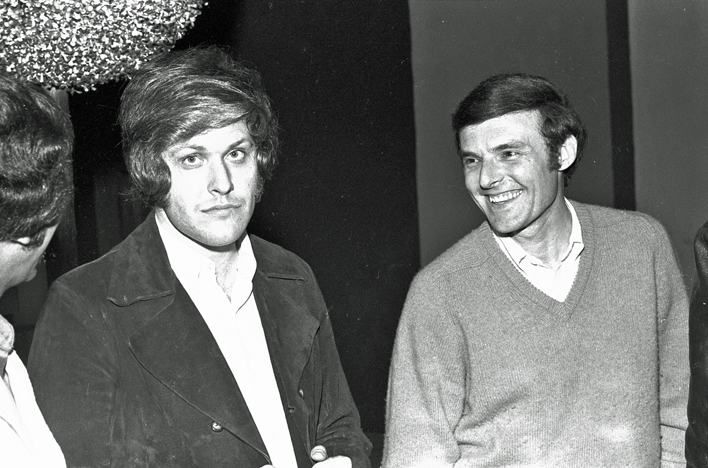
Both the Minneapolis Tribune and Minneapolis Star reported on Friday’s show only.
Scott Bartell opened his piece with a review of the Depot itself, after the ticket taker complained that the press was giving the place a bad rap.
On the good side, The Depot has beautiful acoustics and brings in very fine groups. Even the local groups are at least pleasant. The drinks are good and not too expensive and our waitress was friendly and attentive. It is clean and, if you are going to drink, tables are a good idea – I’m glad they added more of them to their original seating arrangements.
But the atmosphere is still very much “money” and it does not make one feel warm and receptive. The freedom of rock was not in the air.
If the Kinks, the featured group, are any indication, the performers may feel the same vibrations. Their set was less than half an hour long, and was very fast and without much emphasis…
Last night they seemed to be smoother and faster than in their recordings, almost as though they were in a bit of a hurry… (Minneapolis Tribune, May 23, 1970)
Reviewer Jim Gillespie, who saw only the first show, voiced disappointment in the performance after waiting for six years for the Kinks to come to the ‘Cities. Again he noted the short first set, and said that the group did no material from its “much-touted rock opera” “Arthur (Or the Decline and Fall of the British Empire).” They opened with “The Last of the Steam-Powered Trains,” then the obligatory medley of their older hits. The high point for Gillespie was a tune sung by Dave Davies called “You’re Looking Fine.”
Dave’s voice is harder and more gutteral than Ray’s and eminently suitable for singing blues. His guitar work on the song was the best best he played, piercing sustained notes and staccato runs, perfectly complementing the chopped-off rhythm pattern laid down by the rest of the band. (Minneapolis Star, May 23, 1970)
And this was the first and last time we hear that there is pizza available!
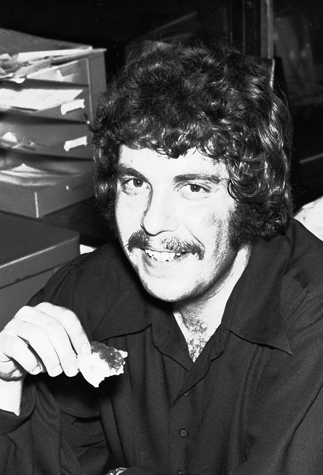
ALLAN’S COMMITTEE
You may have noticed that the ads for the last six shows (starting with the second show) referred to “Allan’s Committee.” Danny, as Allan’s partner and co-founder of the Depot, was incensed at this and thought about suing, but Allan’s brother-in-law, Ted Deikel, was brought in as a mediator and worked out an agreement that the phrase “Allan’s Committee” would no longer be used. They also agreed that they would vote on all bands to be booked. (DS)
David Roth, a producer for tpt who made a documentary on the 50th Anniversary of the venue in 2020, interviewed Allan, and asked him about the “Allan’s Committee” tag on the ads, and said that Allan didn’t remember that happening.
Whatever the case, after those six shows, the phrase was no longer used.
May 31, 1970: Jethro Tull, opened by Clouds
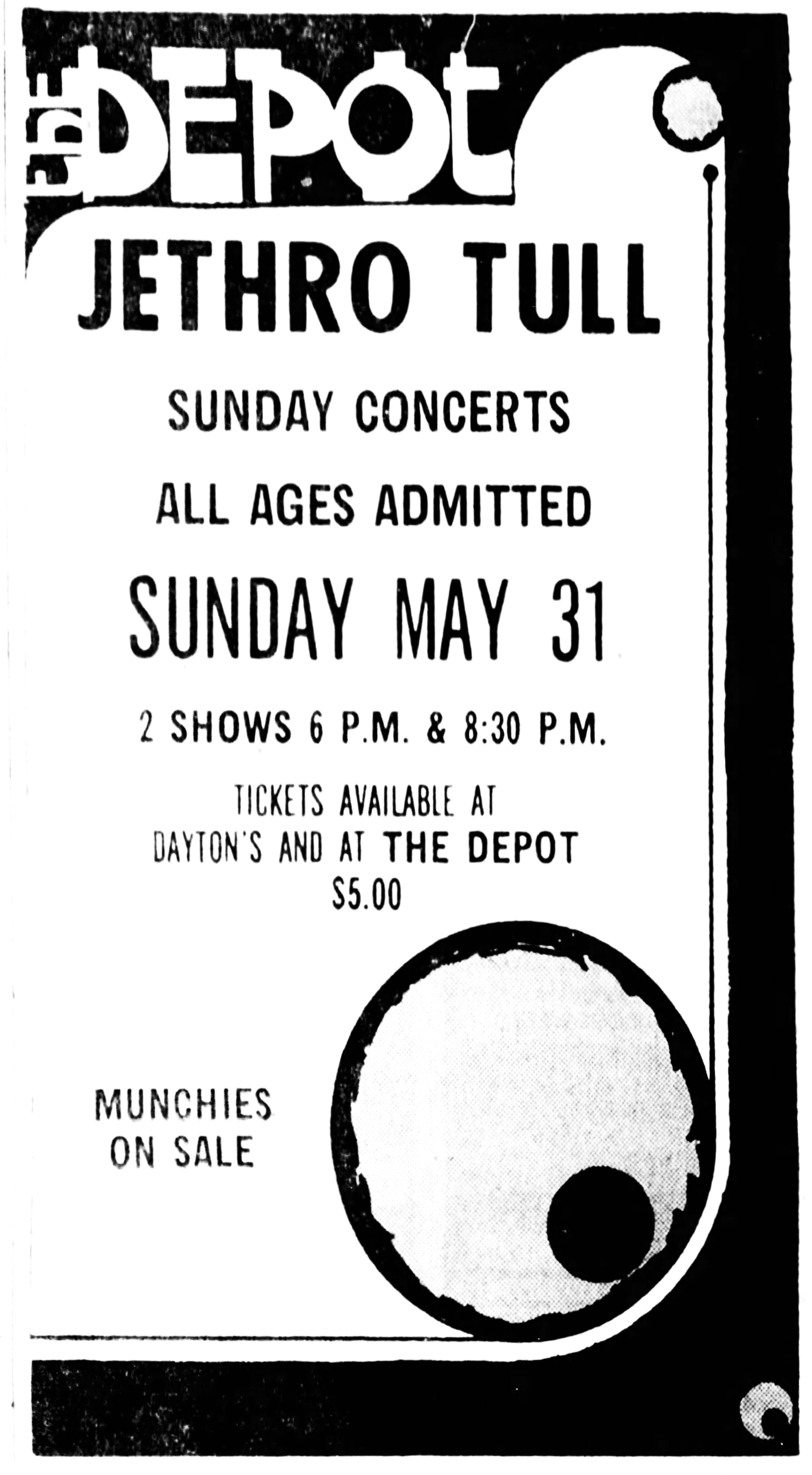
This show was open to teens under 21 – no alcohol was served. Unfortunately, the air conditioning was not yet installed, and the kids worked up quite a sweat.
Peter Altman of the Star was disappointed at the first show. Although he found the group to be outstanding, he posited that they had not become “super-popular” because they don’t stand out.
What was missing in the first set was individuality and a quality one might call repose or ease. There was little sense that the musicians had anything very personal to say. Wit was not pronounced. Solos lacked variety. There was not a great deal of attention devoted to free musical conversation. Often the musicians seemed to be playing by the book or off in their own private worlds.
Make no mistake. The sounds Tull provided were superior. The quintet has substance, and Anderson has showmanship, too. Tull played about an hour and a half and never dried up. They gave enjoyment. But whether or not they were up for their first set Sunday, they didn’t really switch on the Depot crowd of perhaps 500. There seemed to be thousands of people in line for the second show as I left the old Greyhound terminal. Maybe that inspired a really exciting session.
Ron Dachis, reporting for Hundred Flowers, was there for the second show and reported a block-long line eight people wide stretching along 7th Street, overflowing into the streets, waiting for the first show to end.
Will Shapira’s review for the Insider reported that the Depot was “pretty full” for the first set and “absolutely jammed” for the second. And the quality of the two shows were markedly different as well:
The group somehow got fouled up in its first set and never approached the heights they were to reach later in the evening. There seemed to be two main causes of their difficulty: equipment failure and a proclivity to veer away from their energizing group sound into long, boring, empty ego-trip solos. New keyboard man John Evan, lead guitarist Martin Barre and drummer Clive Bunker were all guilty; even the group’s dynamic leader, Ian Anderson, was off his form in that first set.
The second set was something else, again, however… and it was all the more remarkable because the group played the very same tunes both sets!
. . .
Jethro Tull had not only flown us into a new day and month but, hopefully, The Depot had moved us into a new period of musical experience and excitement.
The opening act was Clouds, a Scottish band touring with Jethro Tull. On this day they were also having equipment problems. Altman deemed the trio “tedious;” Dachis called Clouds “repetitious and dull.”
THE DEPOT AFTER HOURS
An early but apparently short-lived promotion was to target the after-work crowd and tempt them with the beautiful people they might meet at the Depot. Below, a woman eating a flower meets a local Tom Jones … This is the only ad like this I found.
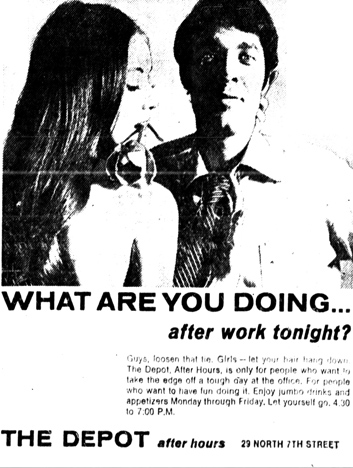
June 6, 1970. Sha Na Na made a special guest appearance (they were scheduled for the next night) and Hundred Flowers reported that the 21 and over crowd was not especially impressed.
June 7, 1970: Sha Na Na did its regularly scheduled show on teen night.
Fifty years later, someone in the audience said: “I remember distinctly Bowser saying, ‘Just one thing to say to all you fucking hippies: Rock and Roll is Here to Stay!’”
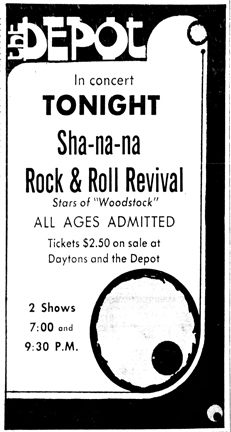
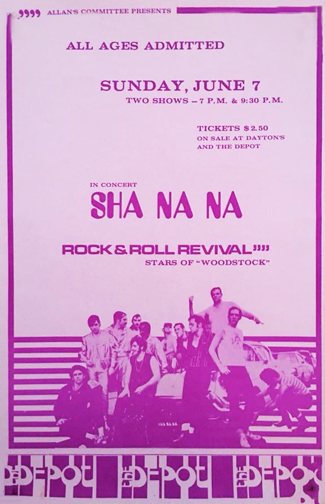
Hundred Flowers (Tom Utne?) said the younger crowed “showed the Depot what audiencing was all about.” As usual, HF had a beef, though:
Just to let you folks know, neither Sha-na-na nor anyone else gets anything extra for doing two shows. They just cut ten songs out of their regular set and do it twice. … Hasn’t the time come when Minneapolis is no longer considered a sucker-town by musicians and promoters?
Marshall Fine reported that the “audience alternately laughed at and cheered the group’s antics, were they hair combing or doing the twist.
Sha-Na-Na’s act is slick, possibly even greasy. The group spits, scowls and does its best to ape James Dean. It is more musically talented than it first appears, and also wildly funny. The humor in the group’s act depends on the ability of the audience to laugh at itself. For Sha-Na-Na is satirizing American youth as it was. Few in the crowd were too young not to remember the songs and styles mimicked. The humor could easily be misplaced. If any member had the slightest disdain for what he was doing, Sha-Na-Na’s hole thing would have come off ass too campy and the joke could have disappeared after the first song. Sha-Na-Na takes its role very seriously on stage, however, and it can create the mood that reigned in the days of the four-chord progression.
Adding to the atmosphere last night was the fact that the Depot’s air conditioning was not working. The sweaty, steamy temperature provided the decor that probably existed in the oven-like auditoriums of yesteryear.
This next part of Fine’s review needs clarification:
Danny’s Reasons preceded Sha-Na-Na and put the crowd in the mood for the headliners. Everyone was so fed up with the Reasons that they were all the more ready to hear a good group.
Danny says it must have been someone else: “We never did play with Sha-Na-Na. We only played on seldom occasions on Beer and Wine Night* and on the Gathering at the Depot album. We were never a supporting act for any of the national groups.” Danny has said that his group was not the kind of band that would fit in with the Depot crowd.
Will Shapira submitted this rather snarky review for the Insider: “Sha-Na-Na effectively recreates the popular music that nurtured the silent majority that made up the Silent Generation.” And this: “The years of the ’50s that I devoted to jazz were all the more well-spent upon rehearing “At The Hop” and the other delights of that era.” Guess he didn’t like it.
* Beer and Wine Night was a continuation of a promotion Danny had used at his previous club, Times Square. For $2.50 (men) or $1.50 (girls) (sic), you got a plastic cup at the door, and between 9 and 11 pm, you could have all the beer or Bali Hai or Reva wine you could drink. Danny noted that Beer and Wine night was especially popular with professors from the U of M.
June 14, 1970: Rotary Connection with Minnie Ripperton. Opened by Thundertree.
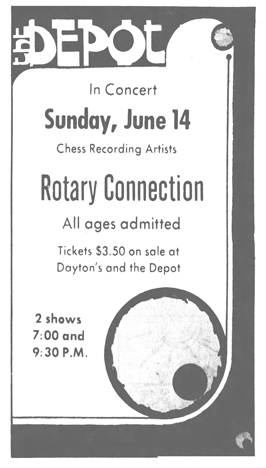
Reviewer Jim Gillespie, a student at the U, reported that the seven-piece group with two lead singers had an instant rapport with the audience. Apparently the world was not aware of the charms of Minnie Ripperton: “Most of the time the girl sang along in a screamingly high pitched voice, at times creating the effect some groups obtain by using an electronic instrument called the theremin. Her range was amazing and she added much to the total sound of the music.” Songs performed included:
- Sunshine of Your Love
- Ruby Tuesday
- Stormy Monday Blues
- Soul Man
Gillespie was impressed with local band Thundertree, remarking that they were better in person than on their record, they played several interesting original songs, and their version of “16 Tons” was “really stunning.”
In the Insider, Will Shapira’s review noted that Ripperton’s voice was “super-shrill” last year at the Labor Temple, but that it had improved its sound and were much more musical, listenable, and professional. Minnie’s two-year-old son Marc impressed Shapira with his drumming and high-fiving skills.
June 20, 1970, Connie’s Insider:
Allan Fingerhut, owner of the Depot, has had some wild scenes running this big, new club in downtown Minneapolis. For instance, it cost him $5,000.00 out of his pocket to pay off the Cocker people on opening night because the club’s booker, no longer the club’s booker, misrepresented the gross potential of The Depot to Cocker’s management. Had Allan known this, he never would have agreed to the contract.
The Depot has NO cover charge during the week or on Saturdays. Only cover is charged on Sundays when a national act is on stage, and then it’s a minimum.
The Depot is making an all-out effort to fill the music gap created when the Labor Temple rock series ran into financial troubles and was forced to close a few weeks back.
On May 31, The Depot launched its “open” concert series by presenting Jethro Tull and Clouds in a pair of concerts. An open concert simply means that people under 21 are admitted and only soft drinks are served to comply with the liquor laws.
The price, by the way, was $5 a head and in this super-aware city which launched a boycott of the Crosby-Stills thing and its $10 top, acceptance meant a lot.
No-alcohol Sundays turned out to be the most popular nights, especially since the Labor Temple closed. These were the nights that nationally-known rock groups were brought in, with tickets selling for as much as $6.
June 21, 1970: Alice Cooper, opened by Suite Charity?
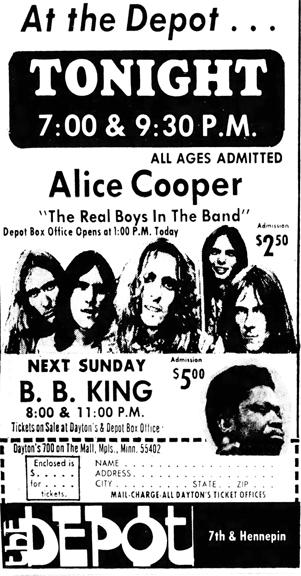
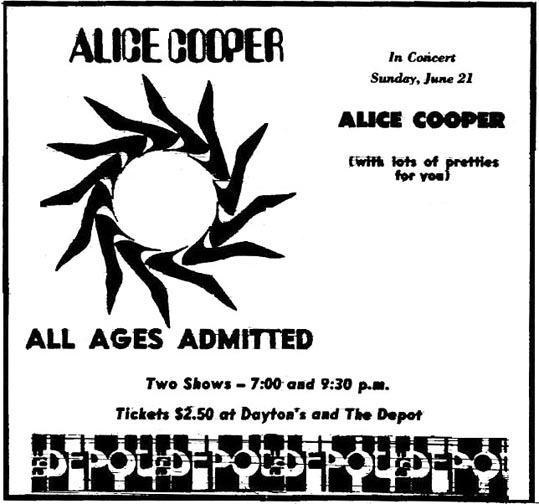
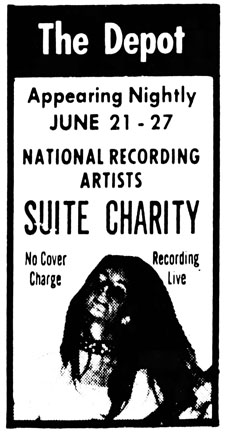
June 28, 1970: B.B. King, opened by Lazy Bill Lucas and Mojo Buford’s Blues Band. Crockett, local/house band, may have also been an opening act.

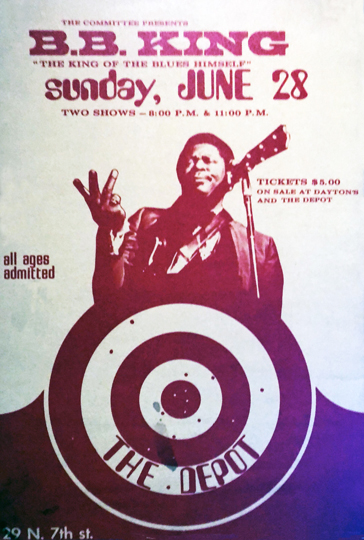
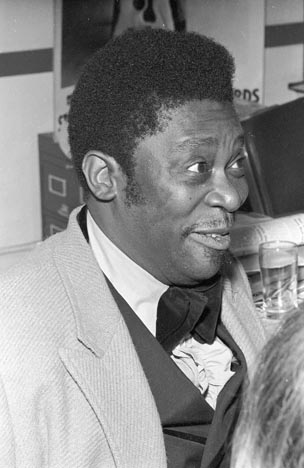
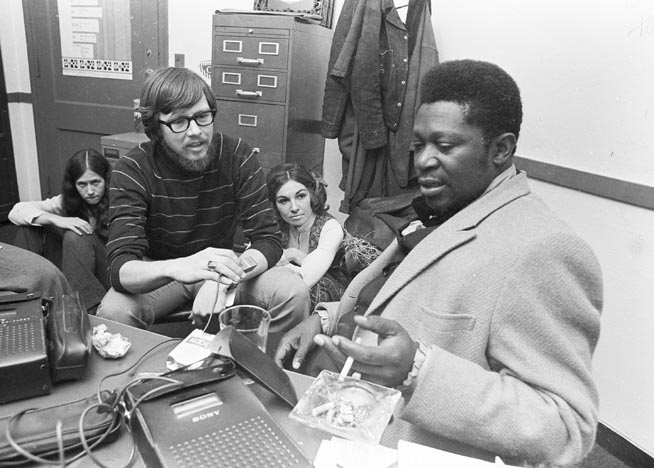
Jim Gillespie’s review of B.B. King in the Star is worth repeating in full:
The Depot was a blues freak’s paradise Sunday night as it presented three fine acts including the incomparable “crown king of the blues, the man himself, B.B. King.” And B.B. is the King, make no mistake about it.
Lazy Bill Lucas, a transplanted Chicago blues pianist now living in town, opened the concert with a short set of traditional songs in his old-time boogie woogie style.
Mojo Buford’s Blues Band then took over and played a fast-paced set of city blues like “Five Long Years” and “Messin’ With the Kids.” Mojo’s harp playing was fine, as usual, and his new back-up group, while sounding a little ragged in spots, was more than adequate.
Then came B.B.’s back-up band, Sonny Freeman and the Unusuals. The band is made up of two saxophonists, a bassist, drummer, pianist and trumpeter. They opened with a heavily jazz-flavored instrumental which featured solos by everyone in the group. Then the King walked on stage to appreciative applause and yells from the near-capacity audience.
With the first knife-sharp notes wrenched from his guitar, it was clear that we were in the presence of one of the masters. King can wring more emotion out of those six metal strings than practically anybody else in the world and that includes his big-name disciples like Mike Bloomfield and Eric Clapton. It’s all the more impressive when you realize that he invented this style almost single-handedly, more than 20 years ago.
But King’s talent is not limited to the guitar. He is also one of the finest blues singers alive, with a powerful voice and a range that extends all the way from a low-down growl to an exquisite falsetto imitation of a woman telling off her man.
The Depot is not the warmest house in the area but King’s amazing stage presence, fine sense of humor and consummate musical ability transformed it into an intimate, friendly place overflowing with good vibes.
A lot of performers don’t seem at their best in Minneapolis because they can get away with playing a sloppy set and still receive the obligatory standing ovation.
But King is one of the finest showmen in the business and he works hard to make sure everyone has a good time. And they did, too. The next time B.B. comes to town, be sure not to miss him. It’s a are and pleasurable experience.
Memories from Robb Henry:
I was playing guitar with Mojo Buford in 1970 and we were fortunate enough to be the opening act on this show at the Depot. We got to meet B.B. King and hang out a bit in the upstairs dressing room. I was 17 at the time and really impressed by how nice and friendly he was. He was one of the few guitar players that ever sent a shiver down my spine with one note, that vibrato.
When we were hanging out at the Depot, there was a woman in the dressing room and B.B. couldn’t recall her name so he discreetly told his valet to introduce himself to her so he could hear her name again. Dick Garrison and I got a big kick out of that slick little scenario. Etiquette lesson from the King.
Sharron Fingerhut Grohoski remembered that Mr. King was in awe of the scene and humbled at the adolation he received.
Will Agar:
I still remember that evening at the Depot when, half way through his show, [King] took an intermission in the second floor dressing room. There as a knock on the door and a man came in with a suitcase. He opened it and it was full of cash-payment for the evening’s work and insurance that B.B. would finish the second half of his performance!

July 19, 1970: Blodwyn Pig, a British group
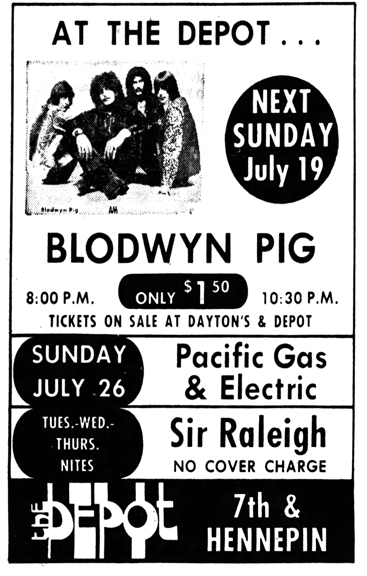
Always kvetching about ticket prices, Hundred Flowers announced that “the Depot is trying its damndest to relate to the community Sunday night by down-pricing tickets to $1.50 for Blodwyn Pig. Blodwyn Pig probably has the ugliest album covers in the world but there’s a lot of beauty between those covers. Mick Abrahams is the leader and former lead guitar for Jethro Tull.”
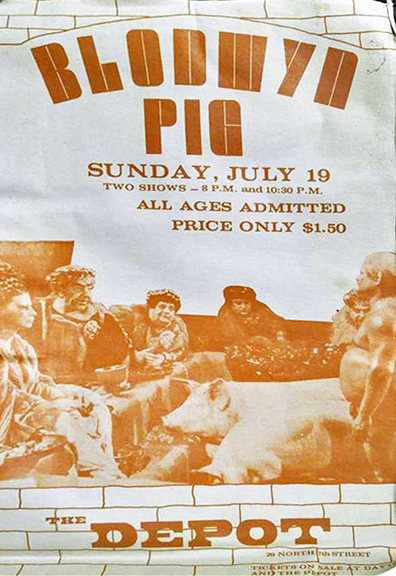
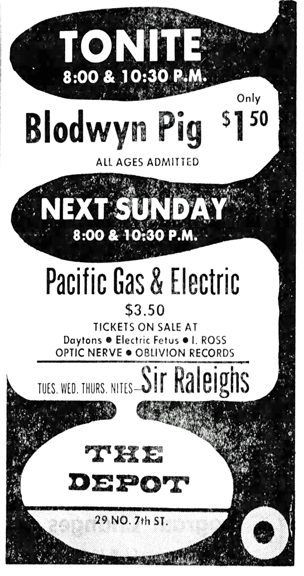
July 26, 1970: Pacific Gas & Electric. This was the group’s fourth visit to the Twin Cities, and much of the personnel had changed.
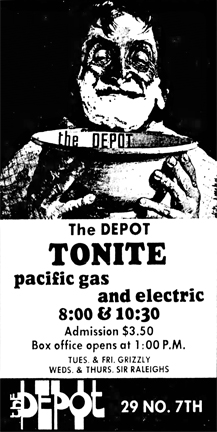
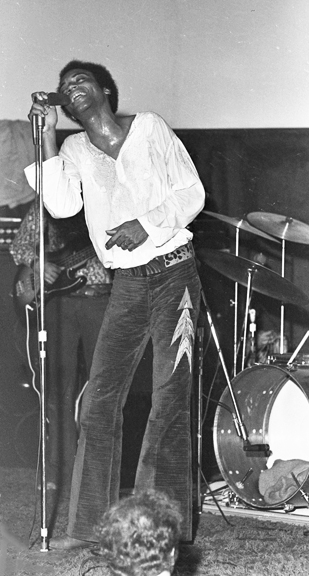
Will Shapira reviewed the show for the Insider, and reported “two sizzling sets of blues and boogies.” Personnel included:
- Charlie Allen, lead singer (original member)
- Ken Utterbach, lead guitar
- Ron Woods, drums
- Frank Petricca, bass
- Brent Block, rhythm guitar (original member)
Shapira also reported two “bummers” that night. The first was a female Jesus freak who dragged everybody down with a hysterical harangue just before the second set. The second was a cop who manhanded a kid whose dancing displeased him. Charlie Allen stopped singing, told the cop to let the kid go, Charlie resumed singing, the kid resumed dancing “and everybody got it on again.” (Insider, August 29 – September 12, 1970)
Mike Barich’s photo below shows the enthusiastic (and shirtless) patron in the throes of ecstacy.
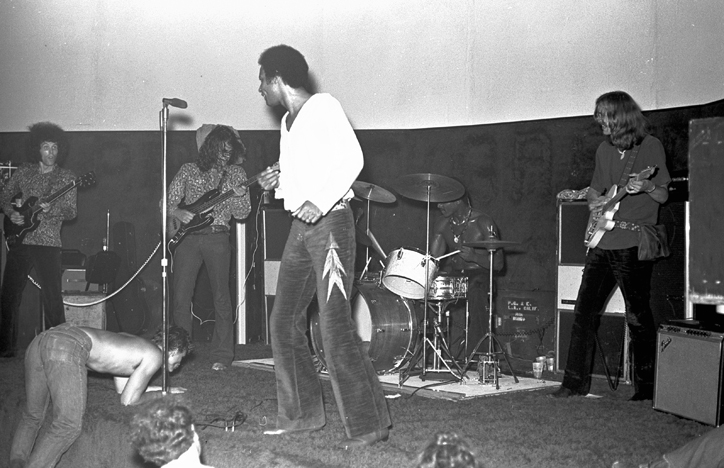
According to Hundred Flowers, the group “didn’t play anything familiar – not even their new single, ‘Are You Ready.’ Their format is free and fast with lots of improvising, blues cliches, and revolutionary commentary.”
Maybe the reviewer from Hundred Flowers left early, because according to Dodd Lamberton’s review, “Are You Ready,” the group’s one hit wonder, was the last song in the first show, and the only one that was worthwhile. More from Lamberton, a music student at the U at the time:
PG&E’s music is mostly fast, driving blues, which can be an exciting idiom. Rock musicians rave about the magic quality of the blues that makes it so great to listen to and to play. But if the performers do not control themselves, numbers can stretch into 20-minute studies in boredom, with drawn-out solos by each member of the band… The group was capable of much more than it produced and the crowd knew it.
The opening band was Wagner and Little, a four-piece group from Chicago that had been playing together for only a week.
July 28-29, 1970: Al Jarreau. July 28 opened by Grizzly; July 29 opened by the Sir Raleighs. Grizzly was formerly known as Albert Hall, and the Sir Raleighs became Copperhead. (Keep up!)

July 30, 1970: Sir Raleighs
July 31, 1970: Grizzly – “The Funky Stars of the Pan-Am Rock Festival,” read an ad the day before!

August 2, 1970: Benefit for the Minnesota Eight and North Country Freedom Camp.
Tom Utne in the August 7, 1970, issue of Hundred Flowers said that bands included:
- Hundred Flowers Surfjazz Band Orchestra
- Jave, with Greg Gilmer and Rocky Melina
- Betty Boop
- Spider John Koerner
- Bamboo (Dave Ray, Donicht, Animal, and Animal’s little brother)
- Jam by Bamboo and Friends: Maurice, Tommy Ray, John Beach
The ever-irreverent HF reported that Danny Stevens
digs the scene and suggests more at the Depot, where only biweekly shows are planned for the fall. Allen Fingerhut, however, was quite pissed, does not like us not having cops at the door. Does not like twelve year olds smoking dope in his bar, and does not like our admittedly irresponsible planning. Sincerely Apologies Allen. Let’s do it again, okay?
August 16, 1970: Exuma, opened by Zarathustra (first show) and White Lightning (second show)

The Trib’s Mike Steele attempted to prepare Minneapolis for Exuma, nee Tony McKay, a/k/a the Obeah Man, in an article on August 9, 1970. Steele described him as
a strange mixture combining heavy, primitive rhythms, ecstatic use of drums, a pulsing Caribbean beat, electric instruments, and a rock vocal presentation that soon becomes primitive chants.
Exuma is originally from Cat Island, Bahamas, but he came to Greenwich Village in 1961. His first album was overseen by his friend and producer, Daddy Ya Ya, with backing by the Junk Band. …
Exuma denies a connection with voodoo, but many claim that the connection is there. Exuma says only that he writes his music during seances. His lyrics are heavy on zombies, dead men, ghosts, devils and angels.
It all sounds weird, but otherwise serious men who have spoken to Exuma believe it all. His record is curiously successful. His first live appearance here should be one of the more interesting events of the year.
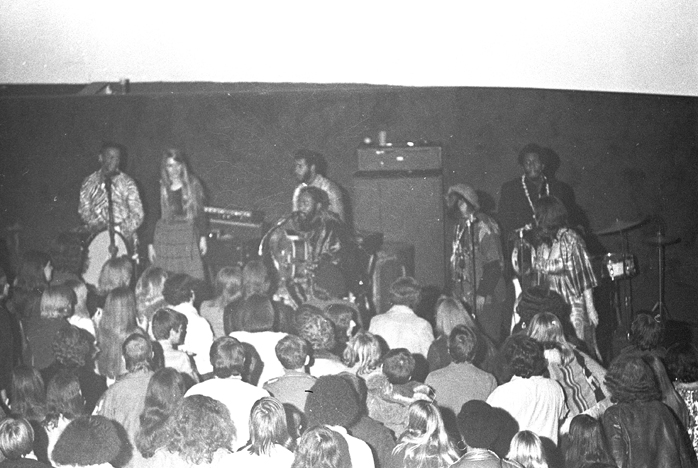
Reviewer Dodd Lamberton described the band as a group that defies description.
Their music brings together primitive chants, moaning and wailing, and a large variety of rhythms and instruments, including a bass drum, congo drums, whistles, bells and tamborines. It has a refreshing freedom to it, as the members of the group do not seem to have prescribed notes to sing and play – each performance is different. Exuma sings the verses of each song and the rest of the group joins in on the choruses. … In both shows, they had the standing-room-only crowd clapping and dancing to the catchy Caribbean beat. “Obeah Man,” their best-known song, was their best offering.
Will Shapira’s review for the Insider expressed disappointment in the live performance in comparison to Exuma’s first record. He explains,
What goes on in a typical Exuma set is a series of exhortations and incantations to the dark gods of the nether world, shrieked and wailed by the hoarse-voiced Exuma over pulsating Afro-Cuban rhythms. It CAN get pretty exciting at times, but not often enough, I’m afraid. (Insider, August 29 – September 12, 1970)
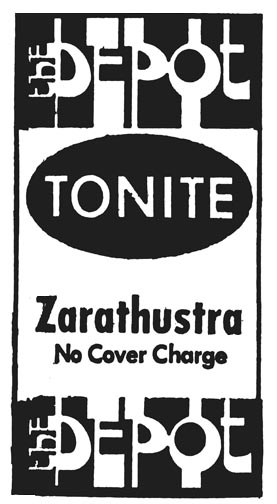
Both Lamberton and Shapira had great things to say about local band Zarathustra, which was booked through August 21. Lamberton called the band “outstanding,” saying that Dick Hedlund on bass, Rick Dworsky on organ and Bobby Schnitzer on guitar are “unparalleled on the local scene.” Shapira said “There was excellent vocal, lead guitar and mouth harp work throughout the set and outstanding arrangement of a song called “White Bird.” It’s a Beautiful Zarathustra!
Don’t know what happened to Crabby Appleton. Maybe they had to “Go Back” to Los Angeles.
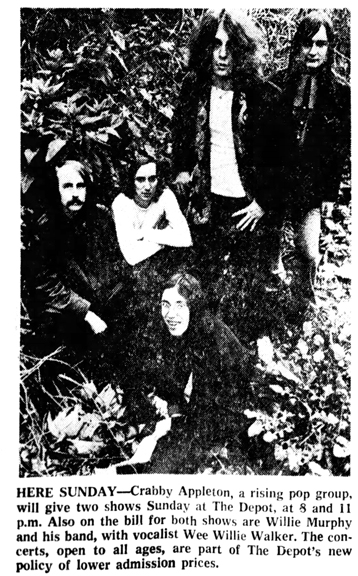
August 30, 1970: Mason Proffit, opened by Willie Murphy. This was a last-minute substitution for Crabby Appleton, which had been advertised just four days beforehand.
Reviewer Dodd Lamberton referred to Mason Proffit as the group that “saved” the Iron Butterfly concert at the Minneapolis Auditorium a few months back. Here at the Depot, “they really turned on the crowds with their smooth, country-western sound.” Unique aspects of the group were that they tuned their instruments one-half step higher than normal, and they used a dobro as a kind of fourth voice.
Lamberton also commented on the opening act:
Willie Murphy and his band made up for their disorganized appearance at the Guthrie two weeks ago with two acceptable sets of mostly original songs. Of these the best was Murphy’s “Eyes of Temptation.” The group’s sound resembled that of the original Electric Flag on the blues tunes.
And as for the Depot’s light show, Lamberton thought it was “as imaginative and as effective as any local show seen recently.”
September 13, 1970: Gathering at the Depot
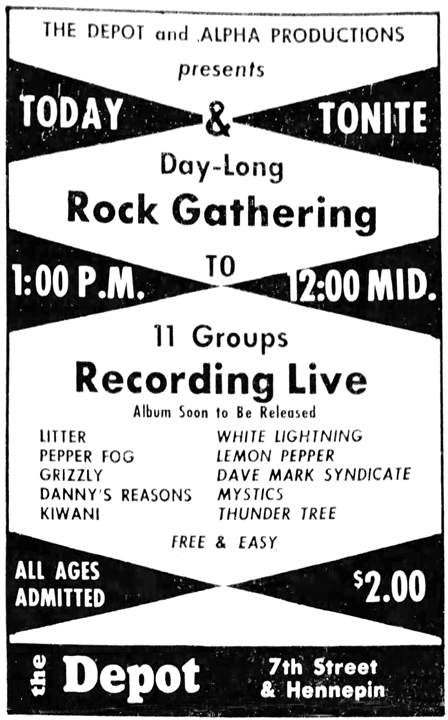
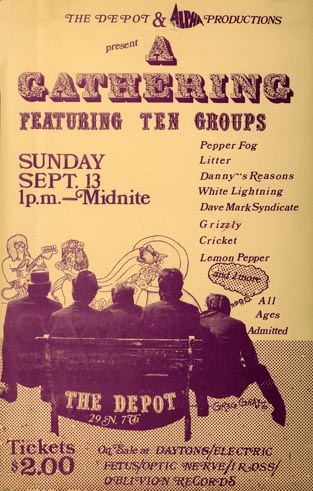
ALPHA PRODUCTIONS
The Gathering was a day-long event that resulted in one of the Twin Cities most sought-after albums. All of the bands were clients of Alpha Productions, and was organized by Ralph Ortiz, the head of the agency, to showcase the clients in his stable. It was originally seen as a promotional item, to be sold at the shows of the bands on the record. If a school booked one of the bands, it could sell the records at $1 profit each. The liner notes say that 1,400 people stopped by the Depot that day to hear some of the best bands in the area. Eleven of these bands appeared on the album, although more played that day.
PRODUCER
The Producer of the album was Frank Marino. For you equipment buffs, Frank reported that the recording was made with Scully 8 track equipment and the mastering was done on a computer-controlled Neuman VMS 70 Mastering System (the first of its kind in the country). Amplifiers were provided by Suburban Music Center in Burnsville.
MUSIC COORDINATOR
Jeanette Arithson was a 21-year old booking agent for Alpha Productions.
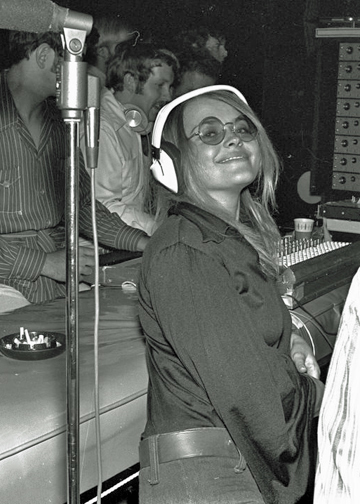
LOCATION RECORDING
Recording was done by Sound 80, engineered by Sound 80’s Chief Recording Engineer, Tom Jung.
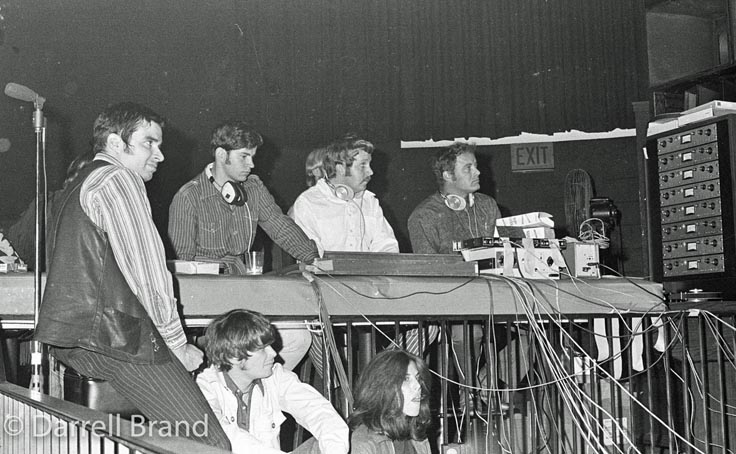
ARTWORK
The front and back artwork was done by photographer Darrell Brand.
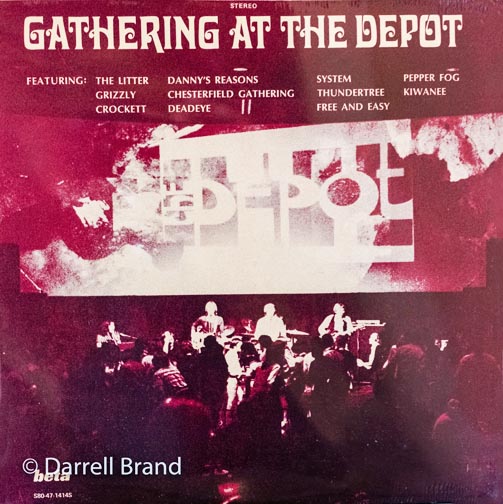
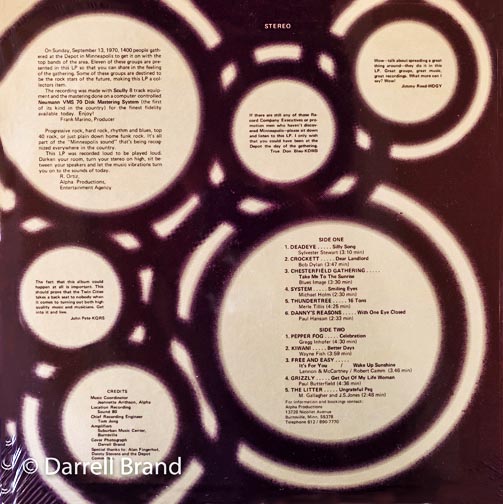
In addition to the people above, special thanks were given to Alan Fingerhut and Danny Stevens of the Depot.
THE JOCKS
Given the number of disk jockeys in attendance from the big rock stations, it was the place to be. That big honkin’ microphone in the photo below suggests that they might have been doing a remote broadcast as well.
Endorsements were provided on the album by John Pete of KQRS, True Don Bleu of KDWB, and Jimmy Reed of WDGY. All were the top Disc Jockeys of their stations.
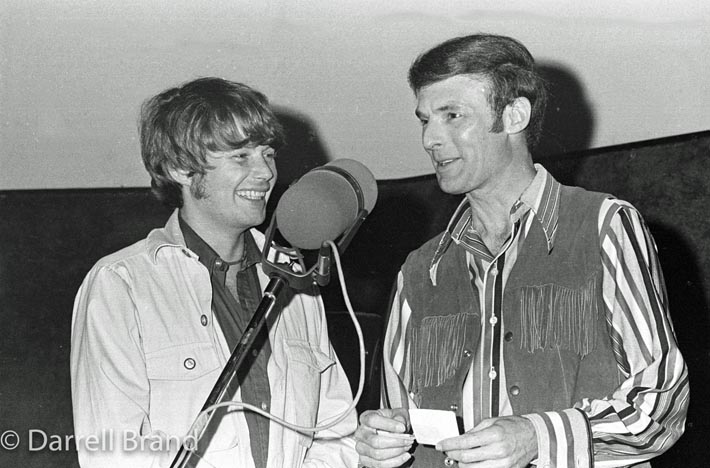
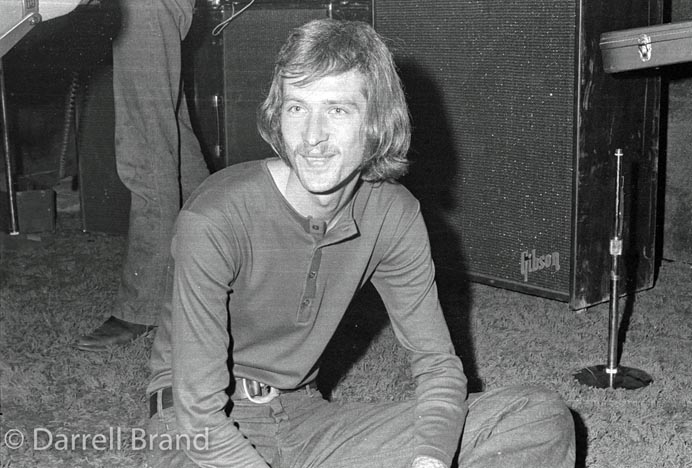
THE BANDS
The participating bands varied between those listed on the poster and those that appeared on the resulting album. These are not in the order of the album but start with ones I have pictures for.
Pepper Fog: On poster and album (“Celebration”, written by Gregg Inhofer)
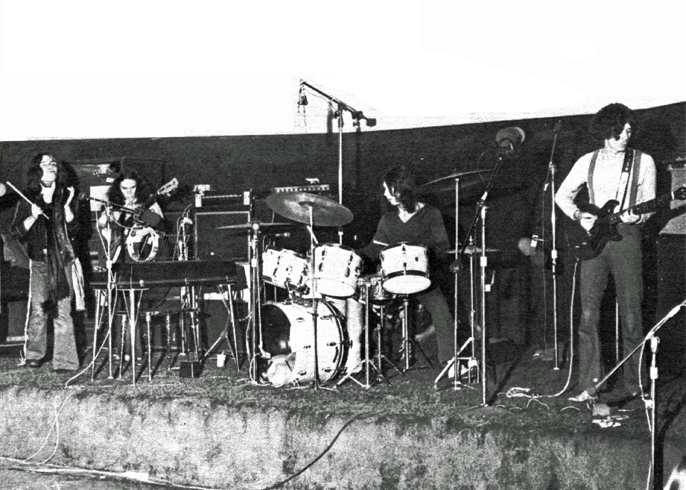
The Litter: On poster and album (“Ungrateful Peg,” written by M. Gallagher and J.S. Jones)
A note from the Litter’s drummer Tom Murray in 2020:
“Ungrateful Pig” was the title of our original song that The Litter recorded for that album. When it was released, the title was changed without The Litter’s permission to “Ungrateful Peg!!” It was wrong for whoever made that decision to change a copyrighted song title to their title that they wanted for the album!! It still irritates me today for what they did!
But the “Gathering at the Depot” album, with all the bands that were on this record, is a great tribute to Minnesota’s music Royalty! Proud I was a part of it!
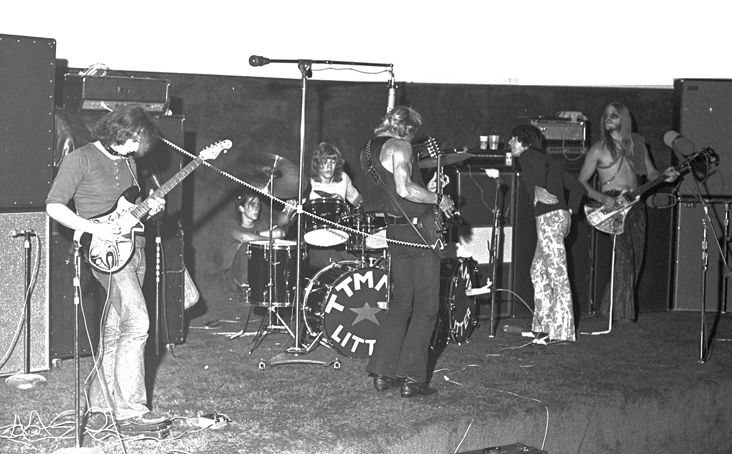
Crockett: On album only (“Dear Landlord,” written by Bob Dylan)
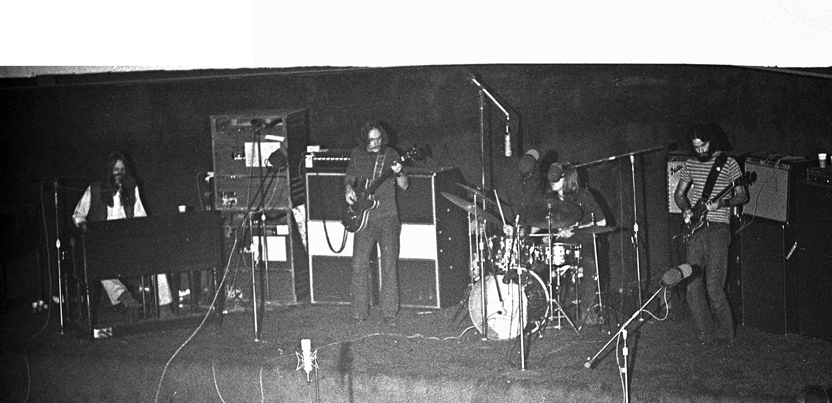
Thundertree: On album only (“16 Tons,” written by Merle Tillis)
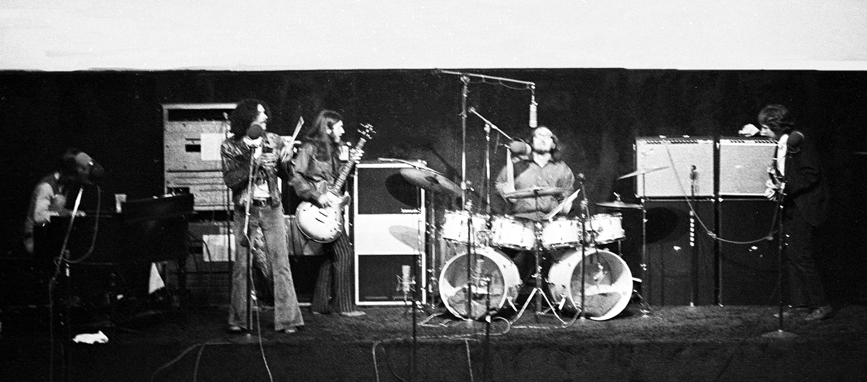
Free and Easy: On album only (“It’s for You” (written by Lennon & McCartney) / “Wake up Sunshine,” written by Robert Camm ). Original members pictured below were, left to right, Tom Behr,Tony Tuccitto, Pat Dee, Dave Vigoren, Tom Mulkern and (unseen in the back), Bobby Gomez on drums.
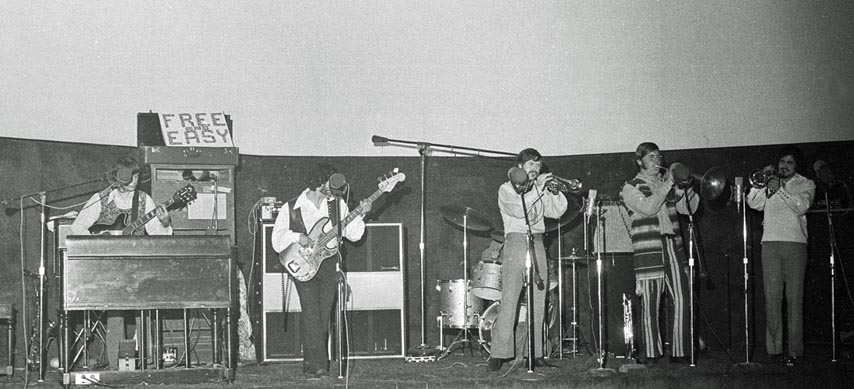
White Lightning was on the poster but their performance didn’t make it to the album.
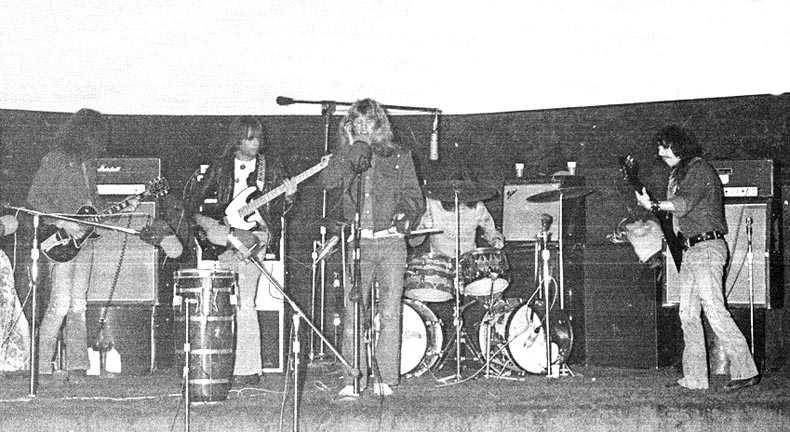
- Danny’s Reasons: On poster and album (“With One Eye Closed,” written by Paul Hanson)
- Grizzly: On poster and album (“Get Out of my Life Woman,” written by Paul Butterfield)
- Deadeye: On album only (“Silly Song,” written by Sylvester Stewart)
- Chesterfield Gathering: On album only (“Take Me to the Sunrise,” written by Blues Image)
- System: On album only (“Smiling Eyes,” written by Michael Holm)
- Kiwani: On album only (“Better Days,” written by Wayne Fish)
- Cricket: On poster only. Cricket had been a horn band, but got bumped when they lost their horns, according to Tim Emerson.
- Lemon Pepper: On poster only
- Dave Mark Syndicate: On poster only
SAD NEWS
I’ve had an email from Ralph Ortiz’s daughter, who says that after hauling them around from move to move after her father died, she ended up tossing several boxes of these precious albums away! I paid an arm and a leg for mine! I just noticed that the sleeve on mine had the previous owner’s song reviews on it. One thing he did say was that “This baby got touched up big time in studio.”
BUT ENJOY!
Nevertheless, find one of these if you can, and follow Ralph’s advice:
Progressive Rock, hard rock, rhythm and blues, top 40 rock, or just plain down home funk rock. It’s all part of the “Minneapolis sound” that’s being recognized everywhere in the country. This LP was recorded loud to be played loud. Darken your room, turn your streo on high, sit between your speakers and let the music vibrations turn you on to the sounds of today.
September 27, 1970: The Illusion, opened by Jarreau and Zarathustra.
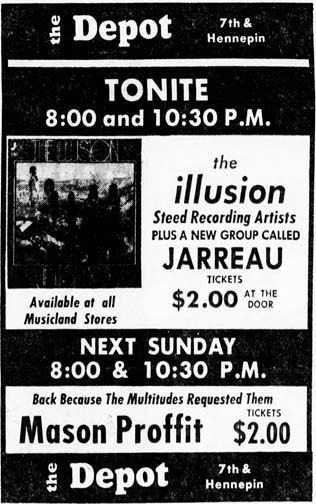
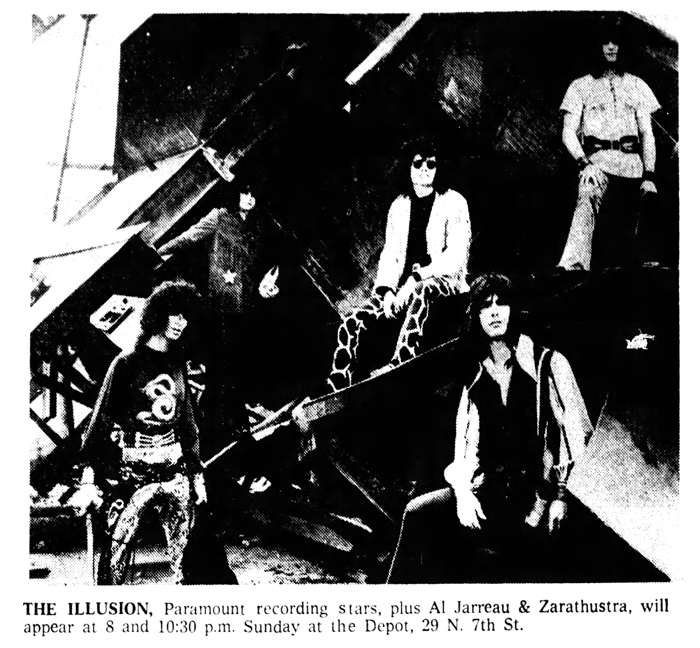
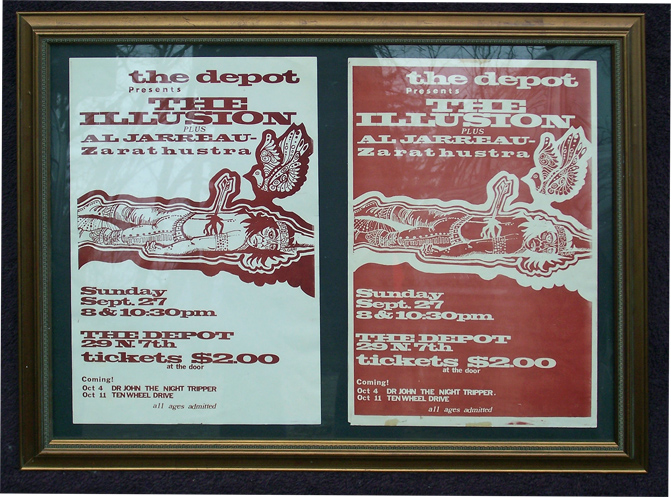
The Illusion was a psychedelic hard rock band from Long Island. In a news blurb they were described as a five man, up-and-coming rock band with two records out on Paramount. In all, they released three full-length albums in the U.S., produced by Jeff Barry. Their only hit here was “Did You See Her Eyes.”
Read about the band Jarreau here.
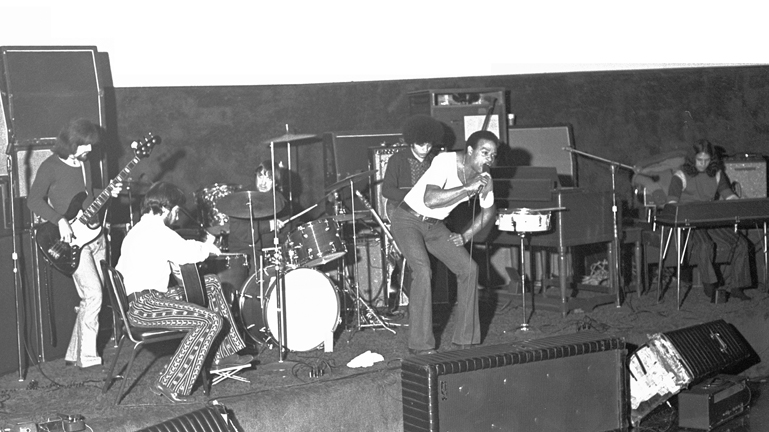
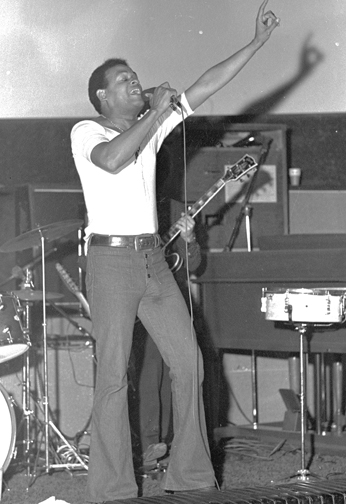
October 4, 1970: Mason Proffit – “Back Because the Multitudes Requested Them.” Opened by Enoch Smoky.
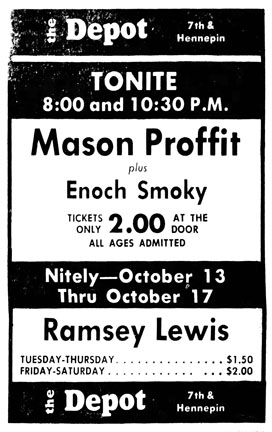
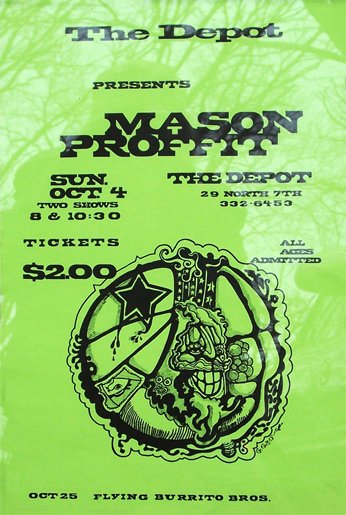
October 13 – 17, 1970: Ramsey Lewis Trio – two shows nightly
October 23, 19270: Del Counts
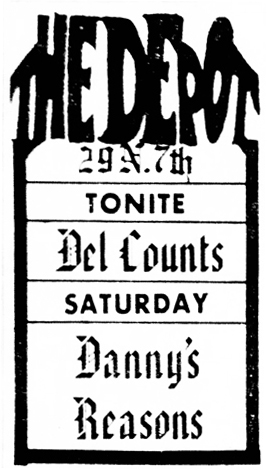
October 24, 1970: Danny’s Reasons
October 25, 1970: Frank Zappa and the Mothers of Invention and the Flying Burrito Brothers, opened by local/house band Crockett.

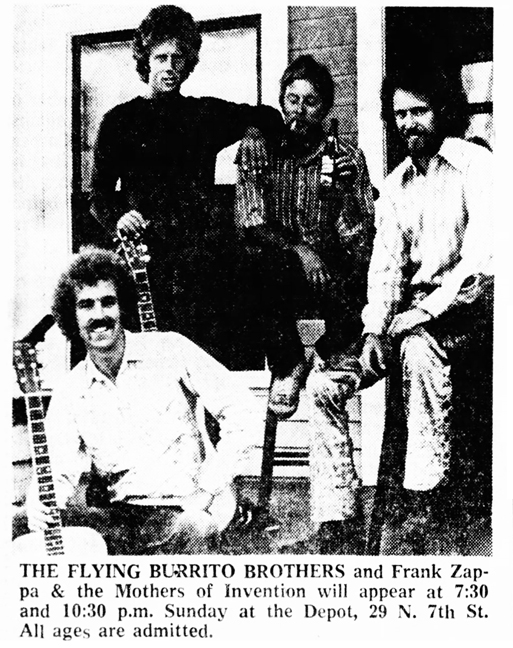
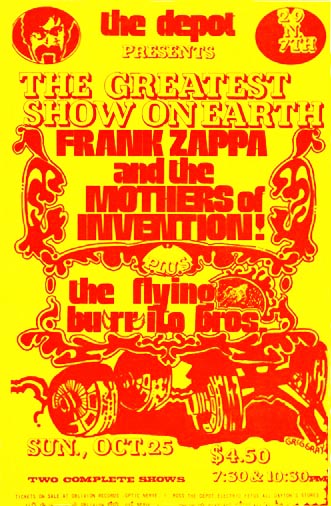
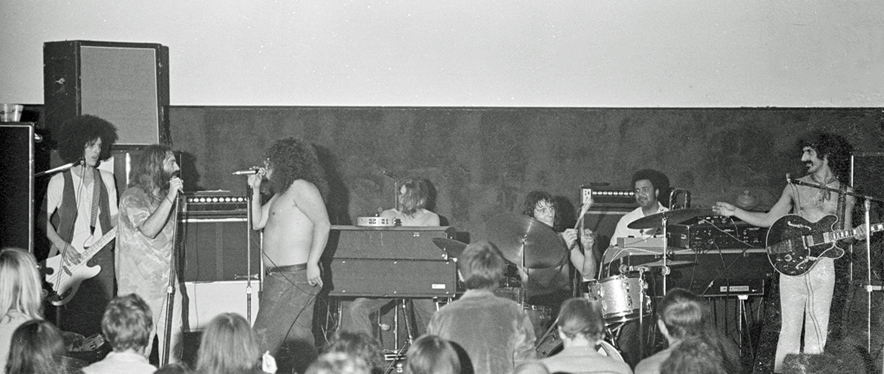
What a scene! 1,500 people jammed the Depot for each of two shows.
Hundred Flowers reported that the Flying Burrito Brothers opened, minus Gram Parsons but with pedal steel guitarist Sneaky Pete, Barry Lieden, Rick Richards, and Chris Hillman, the only former Byrd in the group by this time.
The Star’s Peter Altman found the country-rock band to be attractive and well-balanced but “without quite enough personality and fire.” They played bluegrass breakdowns, old hits like “Hand Jive,,” Byrds’ favorites like “One Hundred Years from Today,” neo-cowboy ballads and a song about going to Canada to beat the American draft.” They showed “fluency, a variety of styles, and recalled many eras and personalities. There was an inescapable derivativeness about much of the groups music, however, and a consistent failure to come up with the unexpected.”
Zappa and the Mothers included the Turtles (Flo and Eddie), aka Howard Kaylan (the one with the shirt on) and Mark Volman (the fat one with no shirt on). Hundred Flowers was fixated on Volman, the fat one, apparently often mistaken for Larry Mondello, the fat kid on “Leave it to Beaver.” Volman joined the movement to petition KMSP to put “Beaver” back on TV. Dr. John the Night Tripper was also there in some capacity.
Altman was not at all impressed with Zappa, at least the short 35-minute first show that he saw. “There were scattered shafts of outrageous insult and vulgarity (which were few but funny), but not much else. Musically the group was content to get by with bang, and there was almost none of the weird, oddly appealing sentimentality which in contrast with so much grossness is the key element in the usual Mothers’ formula. [Only] very isolated glimpses were all that could be seen of the Mothers’ antic invention and power to touch…”
Scott Bartell’s review reveals that the Mothers did three long pieces, the first two of which were “Call on Any Vegetable” and “Duke.” Bartell said that Zappa told the audience that they were the most laid-back group he’d ever seen, and downtown Minneapolis was the most laid-back place he’d ever seen. Was that a compliment or a dig? Later Barthell reiterated that Zappa said this was the most polite and receptive audience he’d played for.
November 1, 1970: Don Ellis and 23 Friends, opened by Dean Granros, Jazz composer and guitarist from Minnesota.
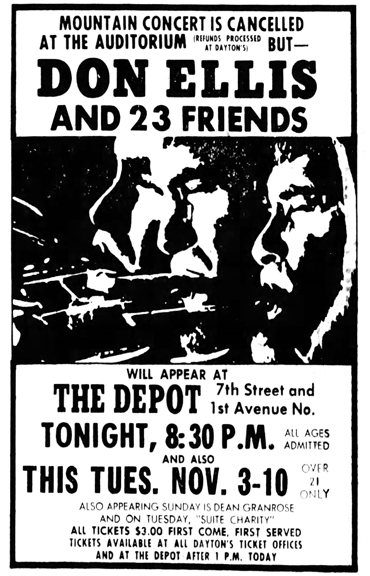
Reviewer Marshall Fine called this “one of the brassiest, most exciting concerts Minneapolis has seen in a long time.” The gig happened because the group Mountain was supposed to perform on October 31, 1970, at the Minneapolis Auditorium, with Ellis as warmup. Leslie West of Mountain fell ill and couldn’t perform, so that concert was cancelled and Ellis was booked into the Depot.
Fine described the group as a “killer band, specializing in polyrythmic swing.” Ellis, “a grinning madman,” played the trumpet and directed the band “with the savagery of a samurai warrior and with the abandon of a man completely married to his work.” Clarinetist Sam Falzone played something called “The Bulgarian Bulge” in 33-16 time. “I mean, nobody plays that fast,” mused Fine. Ellis used something called the Condor, a device that could change the tone and timbre of his trumpet and hook into a tape loop, which allowed Ellis to play a duet with himself.
Will Shapira reviewed the show for the Insider, and called it “one of the most exciting evenings of music we’ve laid on our heads lately.” For the most part the band performed its new album, “Don Ellis at the Fillmore,” and he “tore the roof off the Depot and completely knocked out the audience.” Compared to the live audience on the LP, Shapira opined that the Depot’s crowd was more visceral and “they let it all hang down.”
Ellis and band made an appearance on Bill Carlson’s show “This Must be the Place,” airing on Channel 4 – apparently on December 25, if I’m reading Will Jones’s column of December 27, 1970, correctly. Jones rued that he had missed the live performance at the Depot, and noted that the band had four drummers.
November 3, 1970: Don Ellis and 23 Friends, opened by Suite Charity
One show at 10 pm. See November 1 above.
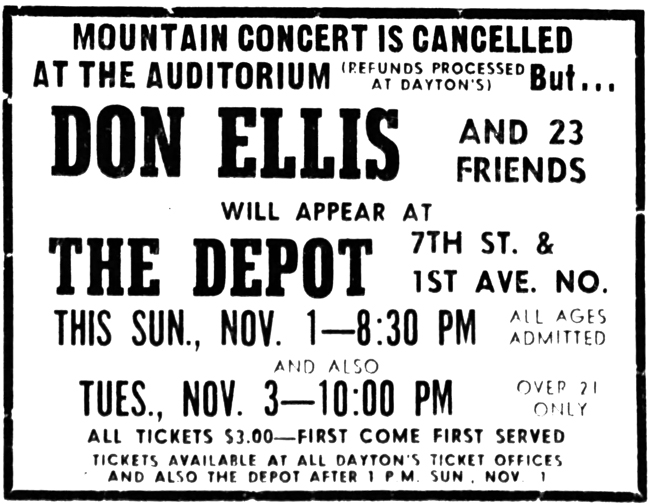
November 8, 1970: Small Faces, featuring Rod Stewart. Opened by local group Downchild.

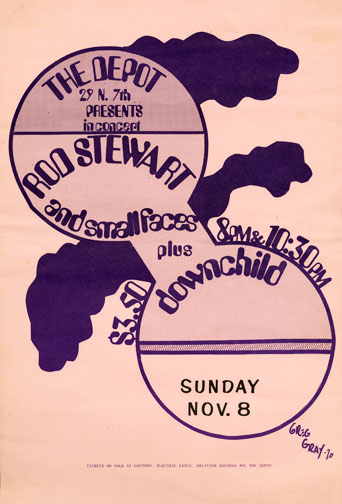
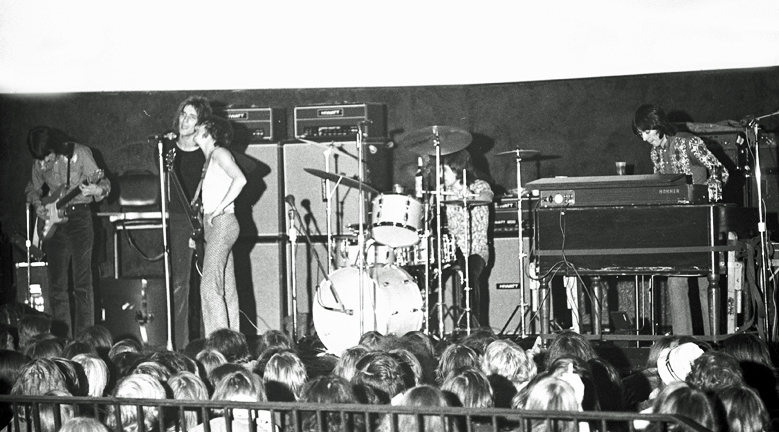
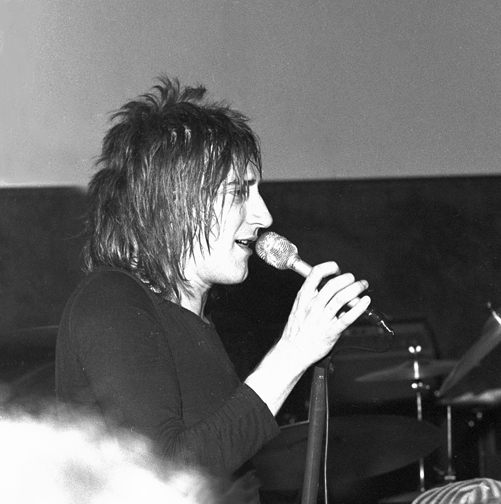
Pat Marciniak of Hundred Flowers reported that the Small Faces “brought with them a musical sound that’s a big overwhelming combination of musical flowers and colors, along with bright globes of sound. Their concert was thoroughly enjoyable, as was proved by the crowded Depot of fans who cheered with screams and whistles of cries for more.”
The show started late because Ian McLagon’s piano was missing, so the first set only lasted 45 minutes. HF again:
To prove how popular the group really is in the Twin Cities, all anyone wouldn’t had to do was to see the long lines of people standing out in the pouring rain waiting to get into the second show. Only a few had umbrellas, but those who didn’t, didn’t want to move, afraid they might lose their place to see the show.
Scott Bartell’s review in the Strib revealed that it was Early Days for the Faces, and the first show was two-thirds full. Rod Stewart was such a new “face” that Bartell had to describe his voice and approach, which he compared to Joe Cocker, but “minus the worst spastic seizures.” Each song seemed different, with excellent contributions from Ron Wood, Ron Laine, Ian McLagon, and Kenney Jones.
Here’s a story about that concert from Mike Guion:
The Faces were the headliners, and did two shows that night. The second show was to start at 10, but didn’t until after midnight, and despite the late start, the opener did play. By far the most loud show I’ve ever attended, with “Around The Plynth” the highlight, with Woody’s slide shaking the walls. Hard to believe now, but that show did not end until 3 or so. We stood outside in a downpour waiting for the first show to end. Rod had yet to use any hair dye, and the band had to walk from the upstairs dressing room through the crowd to the main floor. Rod’s first solo album was still fresh, and the Faces were touring off their new release called “First Step.” I remember all this so well because I had to be back in downtown at 6 am for my first Army physical. I never got undressed after driving my friends home. Just laid on my bed waiting to take that drive back, wondering if I got drafted where I’d go and what would happen to me. I failed the test. Said I had high blood pressure. I believe the Faces saved my life.
DOWNCHILD
Bartell had a lot to say about Downchild, too, calling them “competent within their tradition (that vast commercial tundra bounded by Blood,Sweat and Tears on the jazzy side and Gary Puckett and the Union Gap on the money side) but they don’t add much to it. I could only listen with half an ear after the first few songs, which gave me time to consider the light show. I considered it pretty dull, though perhaps the groups asked them not to get too flashy. I did like some of the photos of girls, however.”
Jerome Lawrence Beckley of Downchild proudly reports that the band performed all but one original tune. “It was difficult making a living being a concert band doing original material back then.” (The cover tune was Dylan’s “Just Like a Woman.”)
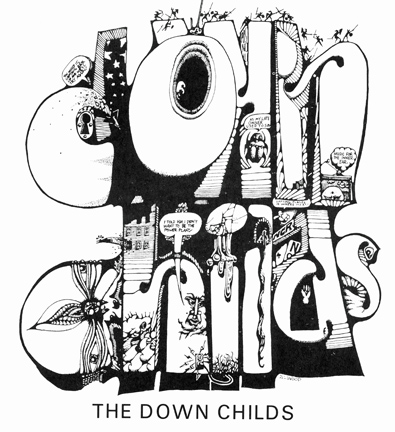
Jerome says that the image above is
part artistic license by my creative friend, David Wood, who created this poster, and Traficante adding our name under the poster design. Our name was fooled with all the time. My favorite was “The Dawn Childs Orchestra.” The name comes from a song by Sonny Boy Williamson, “Mr. Downchild.”
So to be clear, the name of the band was Downchild.
November 15, 1970: Country Joe McDonald (without the Fish). Opened by Wire, a local band featuring Curtiss A (Almstead).
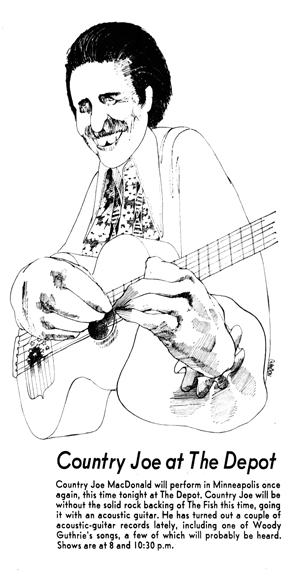

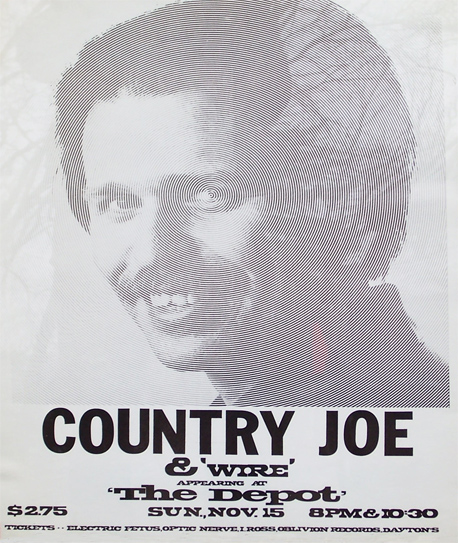
Paul Engel of Hundred Flowers reported that
Country Joe performed admirably, what with the unresponsive audience and the plasticity of the Depot on all sides … It was more like playing in a freakily-painted bus station for the cost of a bus ride from Mpls. to St. Cloud. The performance was lively, expertly delivered, and his material was fresh and poignant.
Dodd Lamberton reviewed the show for the Insider, agreeing that the audience was restrained – but appreciative. The solo acoustic show demonstrated changes for the better, opined Lamberton, citing his “soft, straight-toned voice” and clear annunciation. An interesting observation in the review was that McDonald seemed “pensive and depressed, as if he had just lost a friend” when Lamberton talked to him after the show.
A WORD FROM CURTISS A…
Dodd Lamberton’s review in the Insider included these remarks about Wire, known famously as the first band of local legend Curtiss A:
Wire, the preliminary group, did an amalgamation of oldies and current hard rock songs, from the early Chuck Berry to Savoy Brown. Their vocals were excellent, as they have three men who can both solo and blend well.
Years later, in an interview for KSTP Channel 5 news, Curtiss A had this to say about the show and the venue:
If I’m not mistaken, my first connection to the place was through Danny Stevens. He saw our band and thought we had something. We had played at George’s in the Park (in St. Louis Park) as kind of an audition-type gig, and then we wound up there, including playing with Country Joe McDonald.
I remember the sound system there was really good. I was impressed. Even if it wasn’t what I was expecting from a nightclub, having been a kid and watching TV. It wasn’t Ricky Ricardo and the Copacabana, but it was a great place. And the first couple of times there really did feel like big-time showbiz. We got to essentially debut in the biggest and best place in town, right when it was getting started, and I feel lucky about that.
It’s funny thinking about it now, because back then, I had no idea how relatively an important place it would become in my life. It really gave a focus to all the divergent threads you had in the music scene here, and they’ve always been really supportive of local acts. Some places just have national acts in, and that’s fine if you can sustain yourself that way. But I’ve always felt it’s been more interesting to see all the things we’ve had going on in the Twin Cities too.
At the time of the KSTP interview, Curtiss estimated he’d played the club more than 100 times.
AND THIS:
Don Driggs reported on Facebook:
At that time I was Wire’s manager and I booked that show. Curt was the lead singer. I have vivid memories of going on stage during a song and telling Curt that they were playing too long and if they did not quit, they would not be paid. Curt ran off the stage with me in hot pursuit, chasing him into the back interior parking area. I thought I saw him run into Wire’s bus. I followed but he must have gone out the back door and I lost him. I went back on the stage and searched the crowd – I finally saw him standing in the balcony beside Allen Fingerhut, the owner. Lol. Curt has his own great story about those events. Great Memories..I love that band.
November 17-18, 1970: Wayne Cochran and the CC Riders, opened by Suite Charity
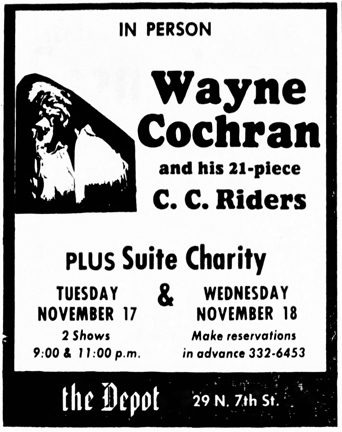
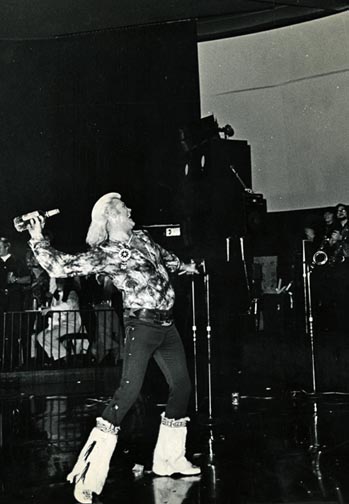
According to a couple of reviews in the December 3, 1970, issue of Hundred Flowers, Cochran’s schtick was to be as racist, sexist, and generally insulting as possible to our fair city. And the audience ate it up. (Sharron Fingerhut didn’t remember it that way at all and had the best time!) Cochran came with a 21 piece band and three backup singers.
November 22, 1970: Sweetwater, opened by Wagner Little

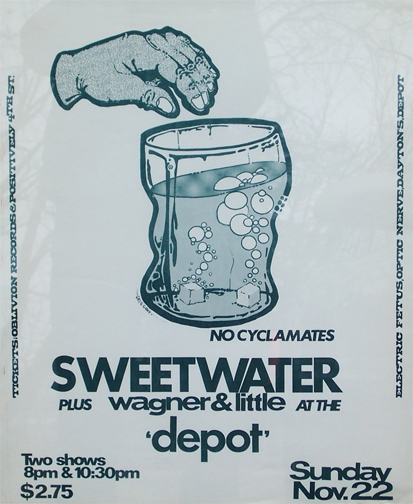
Sweetwater’s signature tune, “Motherless Child,” was sung on record by Nansi Nevins, but she was not at this performance. On December 8, 1969, she was severely injured in a car accident, causing brain damage and permanent damage to one of her vocal cords.
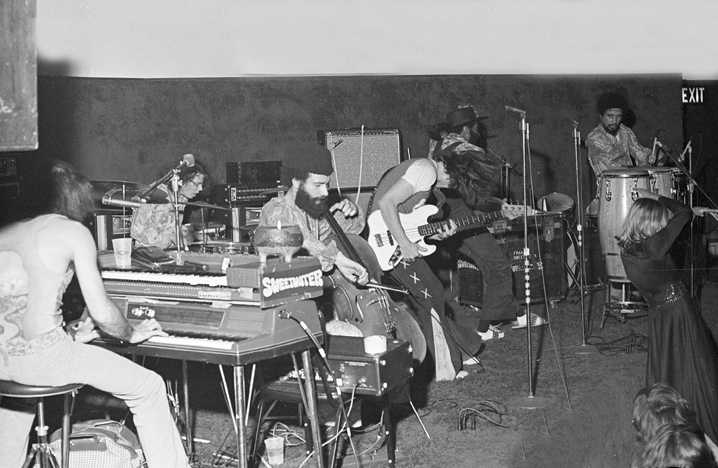
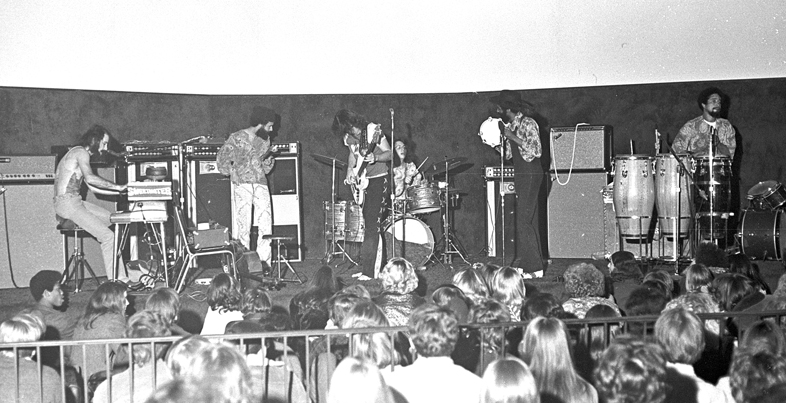
Reviewer Scott Bartell mourned Nansi’s absence, but deemed the sound of the remaining six members as “rich and compelling, their stage presence relaxed and genial. They only played five songs for their first set, perhaps holding off for a larger crowd. Yet even those five numbers demonstrated the intricate workings between the Afro-Cuban rhythm section, the highly flexible keyboard work of Alex Del Zappo, and the jazz stylings of flutist Albert Moore and cellist August Burns.”
Wagner Little was deemed a creditable warmup group, playing rock, blues, and a little folk. Bartell was unsure about where they came from. He was both amused and maybe annoyed at the “circus tricks” of the drummer, who was very adept at drumstick twirling and hitting snare drums mounted above his head, but deemed a better singer than drummer.
November 25, 1970: Mainstreet, presumably a local band
November 29, 1970: Exuma, with Willie Murphy and the Bumblebees
See August 16, 1970, above for a description of Exuma’s act.
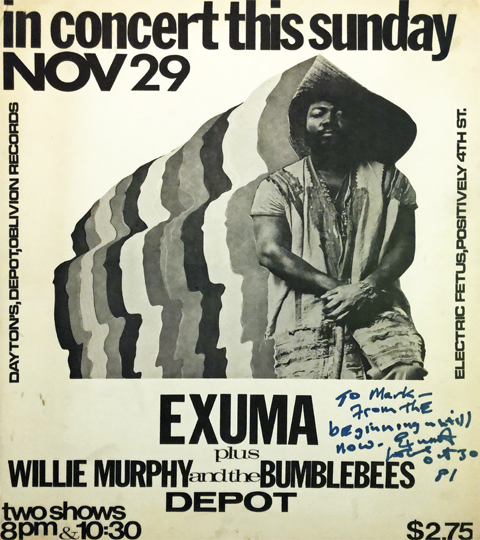
December 5, 1970: Ned, one of the house bands.
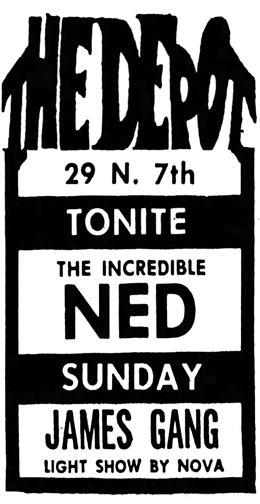
December 5, 1970, Connie’s Insider: Headline: Depot Revisited: Where is the Club Now? Connie published an extended interview with Allan.
The Depot in downtown Minneapolis has the potential of becoming one of the truly great rock palaces of the country. It’s big and it’s smack in the heart of downtown Minneapolis. However, it certainly is not without its problems… big ones, to the surprise of many of our readers who are regular patrons of the club.
The club opened with a bang for Joe Cocker last April, and has steadily lost money up to perhaps, the beginning of fall. The people were coming to hear some of the best rock acts anywhere, but they weren’t spending money; and they still aren’t setting any fiscal records. What many of you don’t realize is that places like the Depot have a big overhead every week, and they have to sell the only thing they can, booze, to pay the rent and the hundred other expenses with which they are regularly faced.
The club’s owner and founder, Allan Fingerhut, emitted his boyish smile as we sat in his office the other night discussing “business at the Depot.”
“Sure we’re getting people in the joint,” he said, as the phone lines rang and people floated in and out of office, as if they were on a tour of the facilities, “but we’re not taking in the kind of money we should be. The people aren’t buying drinks like they should. I still don’t draw a salary. I can’t afford to and still stay in business. We have a super good manager now; he was a miracle for helping us get the club running properly.” As if on cue, Joe Sandino walked into the office and went to the safe to take out an employee’s check. Joe is the Depot’s new manager, and Joe is a heavyweight…he knows how to run a tight club, taking care of business while making sure Allan’s desire that everyone feel welcome and unhassled is fulfilled.
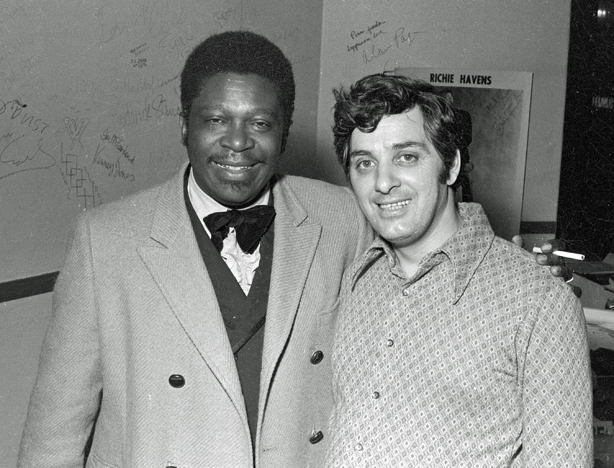
“Tuesday, Wednesday and Thursday are still slower than we would like,” Allan continued, but our Fridays, Saturdays and Sundays are big nights. Monday night the joint is packed for our wine and beer feature. (customers can get all the wine and/or beer they can drink for $2.50) We always feature national acts on Sundays, with the best local bands on all other nights.” The same sweet-looking chick came into the office for the third time, looked ‘round, and walked out. “If these people would spend a few bucks, instead of expecting everything we have to offer for free, we’d be ok.” I nodded in agreement.
The club books its local acts through Marsh, Alpha and Central. According to Allen, the Sir Raleighs and the System do perhaps the most business, or have the biggest following.
“What about your partner, Danny Stevens,” I inquired. “Is the Reasons going to play here?” “Sometimes, but only when we need them. Danny doesn’t come ‘round too often as he doesn’t do too much, though he is by title, president of the Depot.” “You mean you don’t see much of your partner,” I asked. “No,” was his reply.
The man who now directs the club’s finances is Ted Dikel (sic), Allan’s brother-in-law. Ted is a sharp money man who works for Allan’s father, but has been sort of loaned out to help his brother-in-law get his quarter-of-a-million investment running smoothly so that some day soon, they may be able to use black ink on the journals. Allan is still the chief everything who still works many, many hours a week.
It is well known among insiders that Allan and his former manager and talent booker, Abby Rosenthal and Skip Goucher, respectively, had their problems. In fact, their differences may come up in court.
“This club will be enormously successful, it is rated with the Fillmore and other major clubs throughout the country,” Allan said, breaking away from his reflections about his relationship with his former associates. “I believe you,” I replied. It does have all the ingredients to be one of the major showhouses in the country.
“We naturally are limited to what we can afford to pay an act,” Allen said, in reply to my question about ticket prices. We don’t ever want to overcharge our customers, so we can only pay about $2,500 to $3,500 normally. Our very top would be about $5,000, but then we would have to get ‘round $4.50 or $5 at the door, and we don’t like to ask those prices of our customers.
“Some acts, like Jethro Tull, won’t play concerts where tickets are over $4… yet the group doesn’t drop its price; how can I afford to pay them?
“We can buy groups cheaper than other clubs in the country because of routing. They stop here on the way to either coast, or Chicago.
“Zappa, Rod Stewart, Exuma, Mason Proffit and Burrito Brothers were big draws for us. We have the James Gang on December 6 and Savoy Brown on December 13.
“By the way, don’t forget to mention that we have no admission price during the week, only on Sundays and wine night.”
I would imagine that the Depot is superb for recording, as it has fine acoustics. It also has an excellent screen and facilities for a first rate light show. There are dozens of switches and levers on the balcony behind closed doors.
Joe offered his comments on the club’s operations.
“We’re selling more drinks now, and we have a little dressier crowd. The straight freaks don’t drink and they can make a mess of the joint; we can tell the kind of people we had by the way the clean-up goes. If it’s real messy, we know we had a lot of freaks. If we find the cigarettes in the ashtrays instead of ground into the carpet, we know we had a little classier-type of crowd.
“We still get people who feel the club is free. They don’t want to buy drinks or pay a cover, but they think they have the right to come in and listen to the talent we pay a high price for. They don’t understand the economics of running a business. Boy, there’s a big difference in people. Some of our customers are beautiful; others are pigs.
“You can’t run a club with talent and overhead like a free park. They just can’t get that into their heads…some of those people. We’re getting them to come ‘round though, for the most part.”
Steve Baker, a New York promoter who is in town with the Iron Butterfly, walked into the office and greeted Allan and Joe.
“Do you think the guys (Butterfly) will play a set?” asked Allan. “The rumor got out that they would, and I don’t want to disappoint my customers.” “I don’t think so,” Baker replied. “They aren’t all here and they don’t have their equipment etc.” he explained. Allan was determined they would play, and he really tried to get the Butterfly to perform on his stage but it was no use. They all finally agreed they would announce over the p.a. that the band was in the house and welcome them to the Twins and let that suffice, but Allan was visibly disappointed.
The club may establish a food operation yet, as soon as they meet the licensing requirements. Meanwhile, the Depot is here to stay, if Allan and Joe have anything to say about it.
“We have a three year lease with a three year option, and we’re going to be a landmark in this town,” Allan shook his finger at me as I made my way towards the door.
December 6, 1970: James Gang. Although the poster advertises the opener as Haystacks Balboa, the reviews show that the shows were opened by Depot house band Ned.
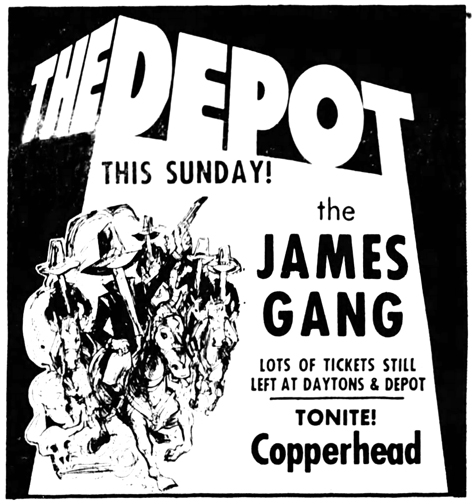
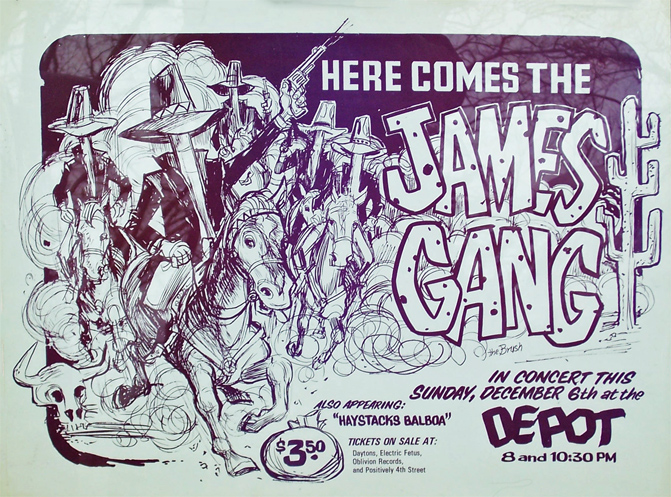
Shows were scheduled for 8:00 and 10:00, but the second show was cut short by a family emergency, according to the Insider. Might be the show that was so loud that people left. The James Gang at this point was made up of Joe Walsh on guitar, Jim Fox on drums, and Bugsley Peters on bass.
Insider reviewer Phil Thomas opined that “Ned played about four songs too many, and the room was so thick with smoke that it seriously impaired both my vision and breathing.” (Insider, December 26, 1970 – January 9, 1971)
HUNDRED FLOWERS IS NOT HAPPY
An interview with the band published in the December 11, 1970, issue of Hundred Flowers was prefaced with this paragraph:
The James Gang played two shows at the Depot last Sunday night. About 3,000 kids paid $3.50 each to hear them. Another 1,000 or so were turned away. The Depot is probably the worst place in town for a concert. Those who could ignore the hot, very crowded conditions probably enjoyed the James Gang who were at their best during the second set, even though they were too loud for the Depot. They played a lot of their familiar favorites along with a lot of new stuff. On the bill with them was Ned, a very good group playing nightly at the Depot.
Probably because of this and other highly critical reviews of the Depot, the Depot apparently took away Hundred Flowers’ press pass. This ensued:
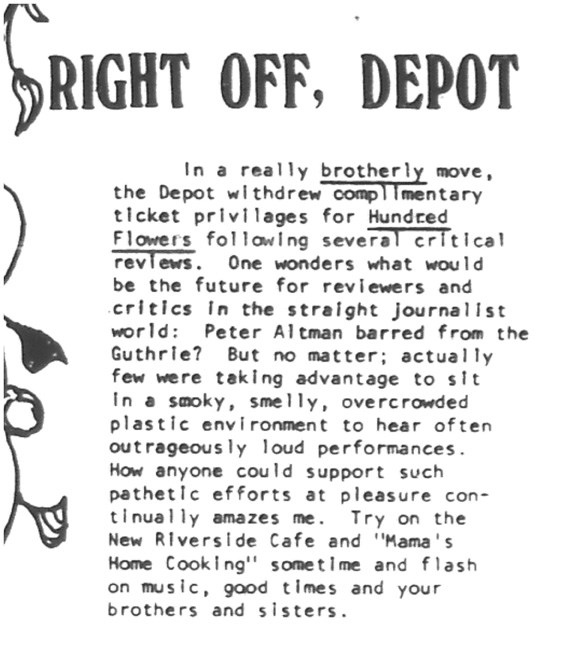
December 10, 1970: Ned
December 13, 1970: Savoy Brown, opened by local group Grizzly (The December 12 Star had announced Haystacks Balboa and the opening act.)
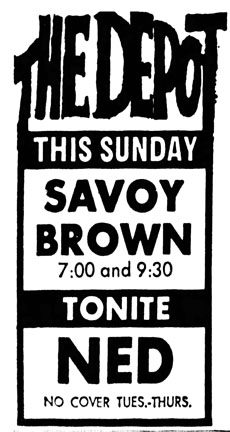
Well, Grizzly was on time, opening at 7 pm, but there was no sign of Savoy Brown, and poor Allan Fingerhut was wishing cell phones would hurry up and be invented. The band was supposed to go on at 8, according to Allan, and 9 according to the band’s manager. They finally showed up – their plane was late and the contract apparently did say 9 pm – and gave a 40 minute first set, according to reviewer Scott Bartell. “They played only six songs, but each one was long and loaded with music.” The encore was “Shake, Rattle & Roll,” with lead singer Lonesome Dave getting it on with voice and a mean guitar.
As for Grizzly, Bartell reported:
They are a pretty decent band with a good sound and some possibilities. They write some of their own songs (the lyrics are weak but delivered well), and know enough to vary their line-up: a medium-heavy boogy version of “It’s All Over Now,” an ominous “Summer in the City,” then a couple tunes of their own (one countrified and the other a fast rocker) and so forth.
December 20, 1970: Rhinoseros. There was a national band, correctly spelled Rhinoceros, and maybe this was them. You might recognize their instrumental “Apricot Brandy.” They broke up in 1971.
December 26, 1970, Connie’s Insider: “If it’s true, the Depot’s decision not to book Stan Kenton for $1,500 has got to be one of the biggest bummers of this or any year.” (For all he did for local rock ‘n’ roll, Connie was really a Big Band guy at heart.)
December 31, 1970: First New Year’s Eve
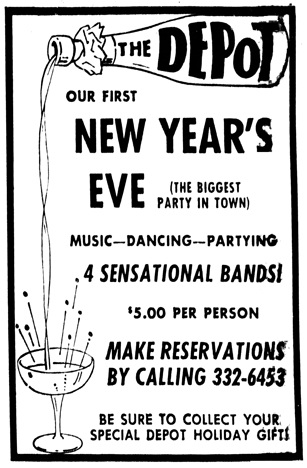
1971
January 2, 1970: Pride & Joy, a local band
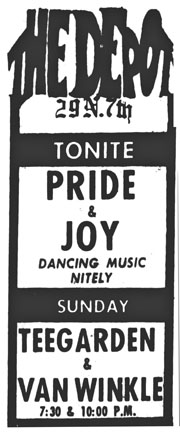
January 3, 1971: Teegarden and Van Winkel
Okay, this is a bizarre picture, predating the ED commercials by decades. Teegarden and Van Winkel’s one hit was “God, Love and Rock & Roll.” It was their first appearance if the Twin Cities.
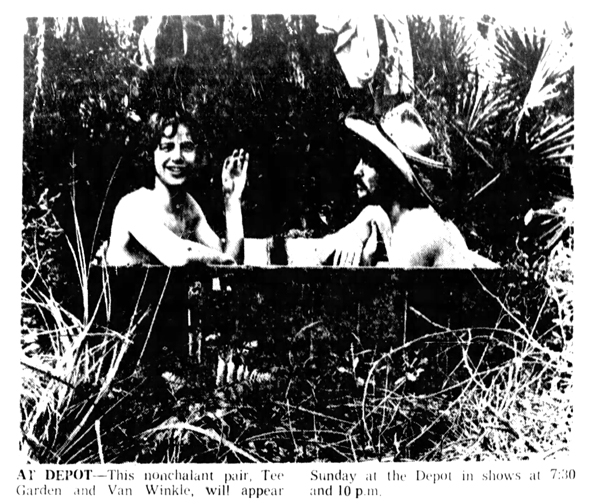
January 5, 1971: Grizzly
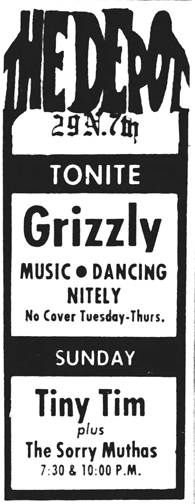
January 10, 1971: Tiny Tim, opened by the Sorry Muthas
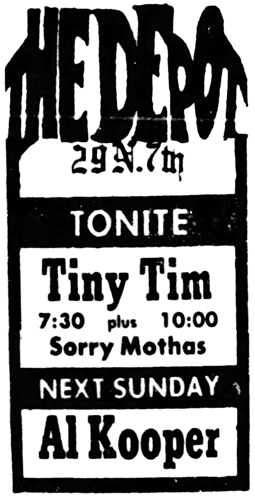
The perks of owning a night club is meeting the performers! Here are Allan and Sharron Fingerhut with Miss Vicki and Tiny Tim.
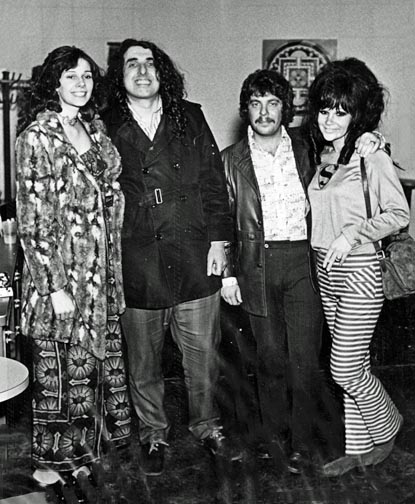
By all accounts this show was poorly attended, probably because Tiny was also in town for the International Auto Show at the Minneapolis Auditorium all weekend where anyone who really wanted to seem him could probably do so for $2. He also appeared on KSTP-TV’s “Dial 5” program. Tiny didn’t care, telling Star reviewer Scott Bartell that “even if there’s only one person – the tables and chairs are listening.” Tiny was interviewed by local TV columnist Forrest Powers, where it was revealed that Miss Vicki was pregnant and that Mr. Tim had not been asked back to “Laugh-In,” the show that launched his career.
But according to Bartell, it wasn’t necessarily a bad show – in fact, he called it “funny and engrossing.”
He began with “The Waltz of the Bells” and “The Good Ship Lollipop.” Then he brought the band in for a super-long medley beginning with a World War I tune asking war critics, “What kind of American are you?”, switching to “Bad Moon Rising,” and proceeding through a very mixed bag of perhaps a dozen more fragments of songs. … He gives different treatment to all his songs — relative reserve on older tunes; writhing on the floor and throwing his necktie away on “Great Balls of Fire,” singing “Yankee Doodle Dandy ” through a bullhorn to get the old Victrola effect – yet he stamps each song with his own identity and people can’t help laughing and enjoying themselves.
At the same time he commands a strange respect – perhaps for sheer guts, but also because he does some things very well. For instance, he manages a duet with himself, imitating Sonny and Cher on “I’ve Got You Babe.” I guess it is that ambiguity that makes his work so captivating.
Bartell characterized the Sorry Muthas as a “good-time country and jug band.” “Numbers such as ‘Okie From Muskogee’ created the same kind of humorous tension between song and singer as Tiny did. The rest was just good, happy listening.”
January 15, 1971: Danny’s Reasons
January 17, 1971: Al Kooper and Friends, opened by Thundertre
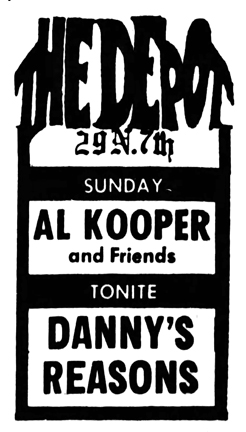
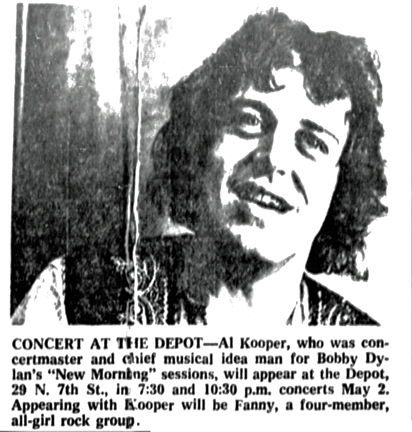
According to reviewer Marshall Fine, Kooper gave an “enjoyably funky show” to a packed house. He started the show with Elton John’s “Border Song,” and while Fine was not so impressed with his voice, he loved his instrumental work. Other songs included James Taylor’s “Country Road” and Nilsson’s “Without Her.”
Fine deemed Thundertre to be “a competent group with a lot of feeling in their music,” but lead singer Jeff (Schleppy) Shapira’s style was too much like Joe Cocker’s and got to be irritating after a while.
Fine also had a beef about the Depot’s light show, which was “one of the dullest since Edison discovered the tungsten filament.” But then, apparently, no one in Minneapolis knew how to put on a decent light show.
January 22, 1971: Danny’s Reasons
January 24, 1971: Mason Proffit, opened by Pepper Fog and Bluebird
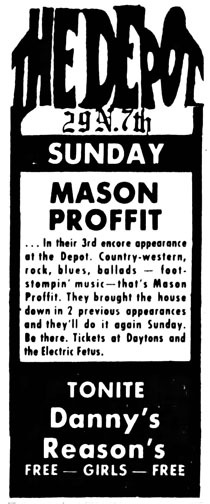
Scott Bartell described Mason Proffit as a country-rock band, very much appreciated by the crowd.
They have a way to working with an audience getting them on their feet, clapping and yelling, that brings a whole crowd together. And they are funny, too; commenting on the quiet house, Terry Talbot admonished them not to “try to partake us – we just ain’t that good!”
Bartell did not have a chance to hear Pepper Fog, but he did hear “surprise group” Bluebird, which used to be called Noys. He called them “definitely together,” and said, “They do some very competent though fairly commercial stuff. ‘Keep on Keepin’ On,’ a gentle little song they wrote, is very pleasant and I hope they do just that.
January 31, 1971: Sha Na Na, opened by Chesterfield Gathering
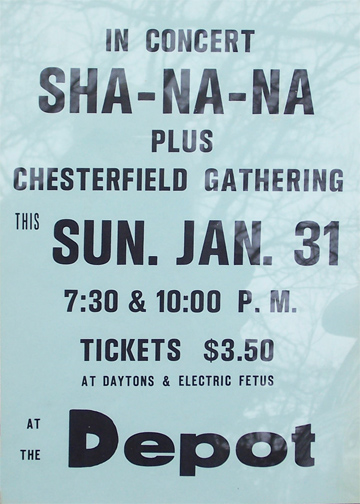
February 2 to 6, 1971: Ramsey Lewis and His Gentle-Men of Jazz
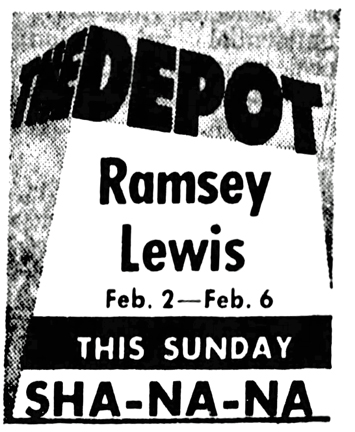
February 19, 1971: Suite Charity, a house band
February 21, 1971: Richie Havens, with Otis Plum, a three-man group from Chicago. Local/house band Crockett also remembers being an opening act.
Freelance reviewer Ann Payson described Havens as “an incredibly warm and charismatic performer” at the two sellout shows. His first set included several songs from his first album, such as “High Flying Bird,” “Just Like a Woman,” “Fire and Rain.” When he “ripped into” the show-stopping “Freedom,” Payson noted, “we saw the other side of Havens, his whole body moving, dancing in a frenzy across the stage and finally breaking two guitar strings as he pounded them in an amazingly sustained and powerful finale.”
March 5 and 6, 1971: Suite Charity
March 7, 1971: Crow, opened by Pepper Fog
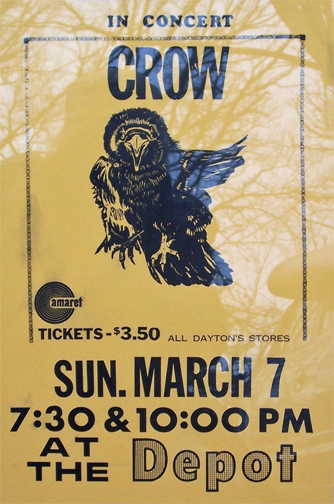
Scott Bartell’s review was scathing. On Crow:
- “Pretentious and filled with an justified frenzy.”
- “They have a very professional sound, but their writing is just not very original, nor are their performing styles.”
- “Lead singer Dave Waggoner just seems like a smaller, less aware Joe Cocker, doing more screaming than feeling.”
- “Denny Craswell’s drum solo near the end was really simple-minded.” Ouch!
Bartell even gave it to another local favorite, Pepper Fog, saying that “they still play heavy acid-flavored blues a bit too loud. My ears were nearly turned off by the time the featured group came on.”
March 14, 1971: Ike and Tina Turner
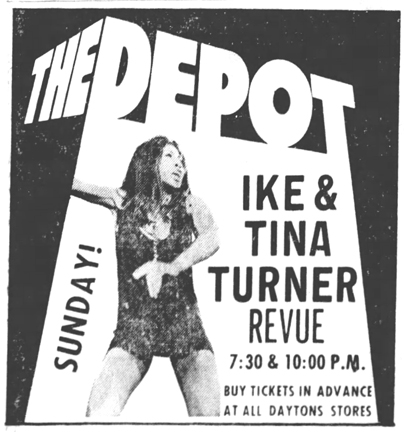
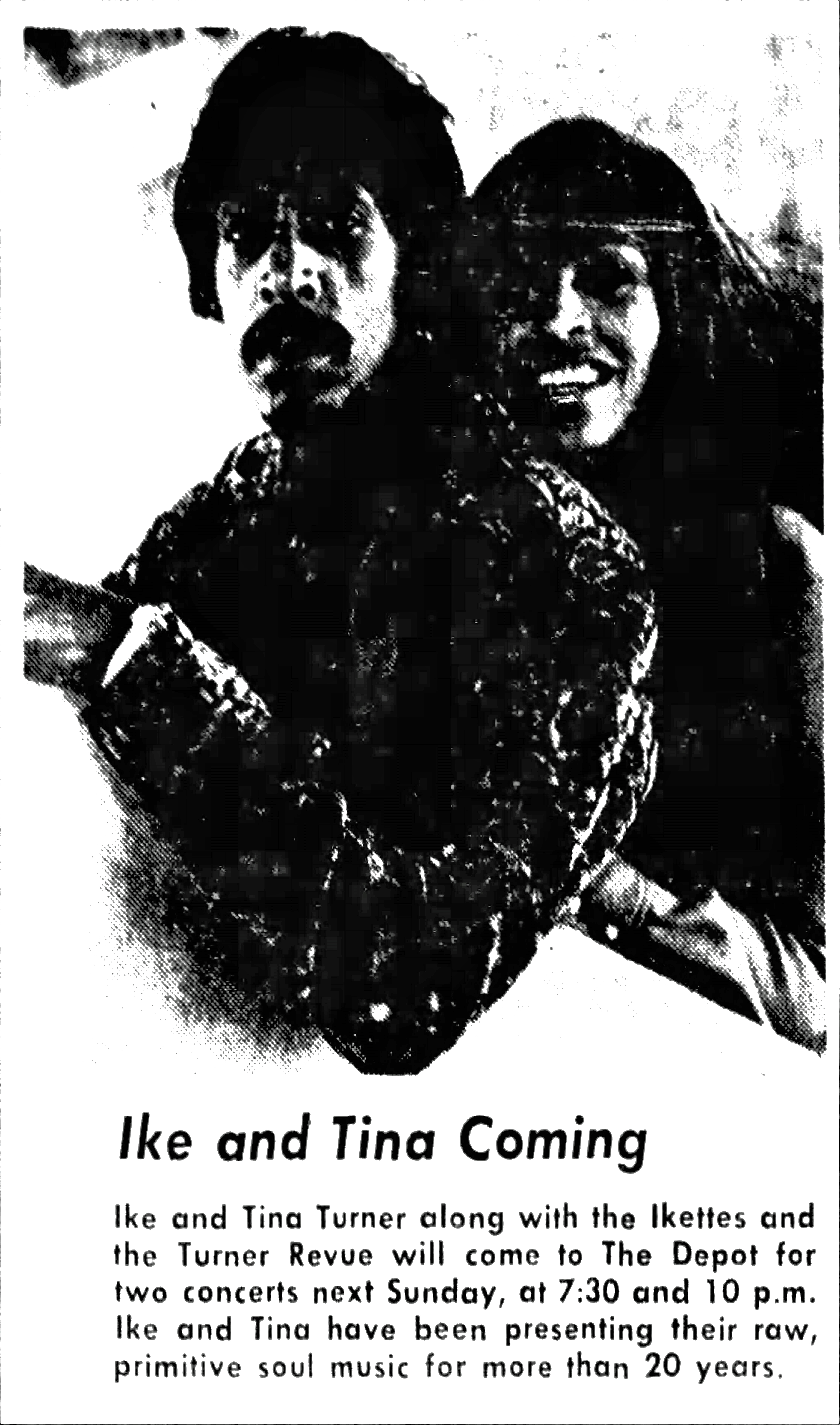
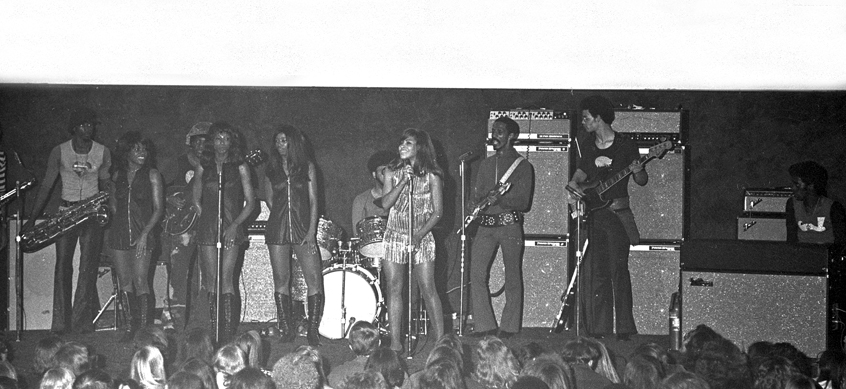
Ike and Tina were scheduled for two shows at 7:30 and 10:00. They got there so late that the people who came for the second show were left waiting in the cold and rain for up to 4 1/2 hours and the police had to block off traffic. Fingerhut told reporter Allan Holbert (Minneapolis Tribune, April 11, 1971) that:
Some of the customers, waiting outside in the rain, got fed up and tried to crash the gates. There were scuffles between them and some of the four or five off-duty policemen Fingerhut hires on big nights.
“Like there are seven exits in the place. We weren’t watching them close enough and the kids were coming in by the dozens. Next they found a way to climb up on the marque and come in the window.”
Fingerhut was furious at Ike and Tina’s manager. He called in comedian Ron Douglas to keep the crowd entertained until they got there, and had to do over an hour.
Ike and Tina finally arrived and said they would only do one show, but Fingerhut kept them to their contract and the second show didn’t go on until midnight. Fingerhut told Bob Protzman of the St. Paul Pioneer Press (April 11, 1971) that the antics of Ike and Tina “almost closed us down.”
Reviewer Scott Bartell reported that the band riffed while Ike was trying to change the details of the deal. Finally the Ikettes – “three black bombshells dressed in dayglo orange – burst on to sing and dance ‘Get Back’ and set the stage for Tina.” Most of their songs were covers:
- Piece of My Heart
- Wanna Take You Higher
- Honky Tonk Women
- Come Together
- Proud Mary
- I’ve Been Lovin’ You Too Long
- Son of a Preacher Man
- River Deep, Mountain High
but Bartell said that “they bring each number alive in a brand new way. They never seem to waste a second, and almost everything they do is worth seeing and hearing. Perhaps the best moments came when Tina was doing little dialogues with Ike on the blues “You Just Won’t Let me Be.” (Minneapolis Tribune, March 15, 1971)
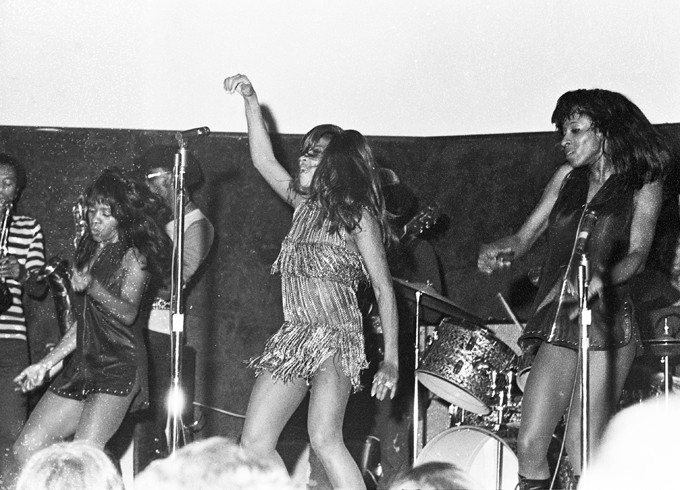
Reviewer Peter Altman noted that the Ike and Tina Review was a well-oiled machine: “so carefully lit and costumed, musical arrangements (for all their sock) so meticulous, choreography so closely ordered and pace so shrewdly varied that even when the Turner Review is at its most dynamic one always appreciates that it is a smartly packaged entertainment based on strict adherence to a proven formula.” He noted that at some shows Tina “becomes a dervish who moves across the stage without touching the ground or the Ikettes abandon unison for ecstasy, and a few free choruses are allowed before Ike reasserts order. Such things did not happen this time” – or at least at the first show. (Minneapolis Star, March 15, 1971)
The Minneapolis Tribune dedicated a page in its picture magazine to the fashions worn at the Ike and Tina show. “Bell bottoms and jeans were the favorite garb with the audience … There were a few hot pants and some peasant and Indian looks in the crowd … The casually dressed crowd lined the balcony to watch the show.”
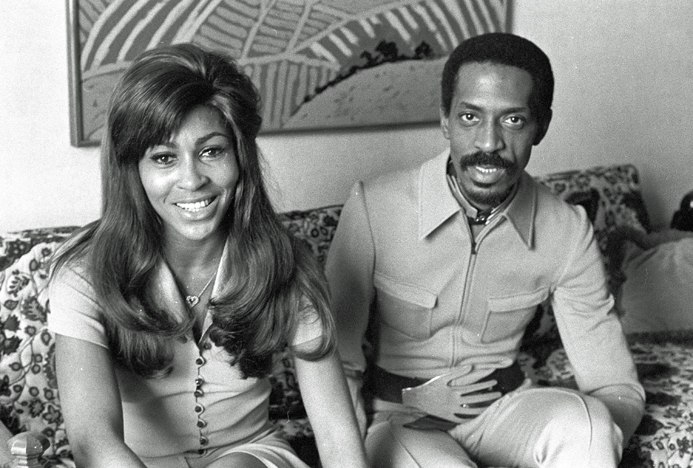
March 19 and 20, 1971: Sir Raleighs
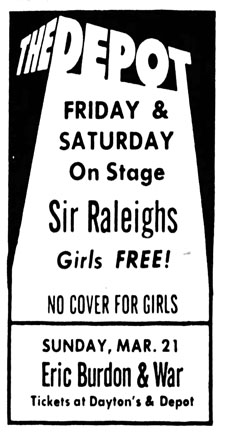
March 21, 1971: Eric Burdon and War, with plans to record for their next album live.
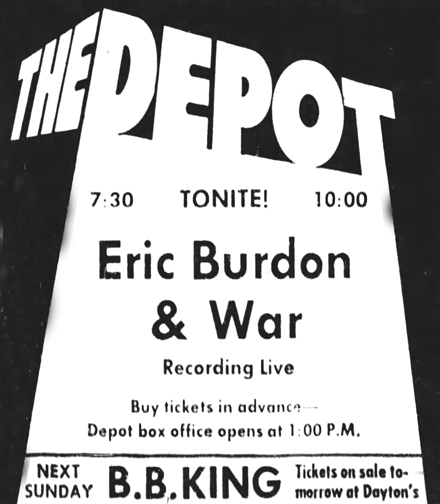
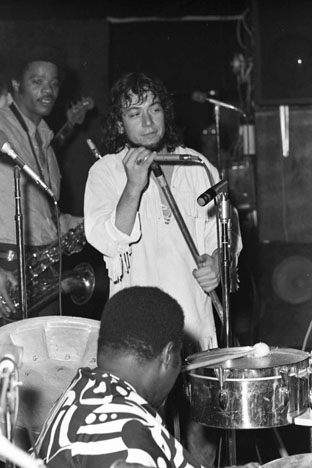
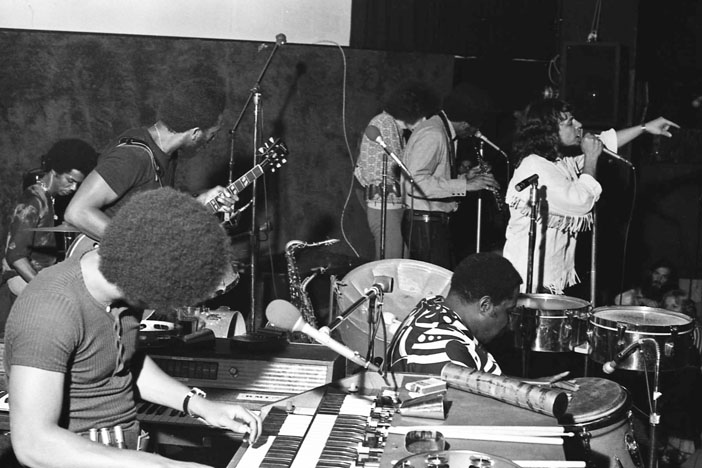
Jim Klobuchar’s column, Minneapolis Star, March 26, 1971:
Come closer, visitors, so that I may share with you the latest and possibly most melancholy adventures of The Depot since it switched a couple of years ago from Mankato, St. Peter and LeCenter to the Pacific Gas and Electric. The latter is a musical organization of a type that The Depot now gives asylum against the ravages of the Golden Strings culture in Minneapolis.
March 27, 1971: Sir Raleighs
March 28, 1971: B.B. King, two shows
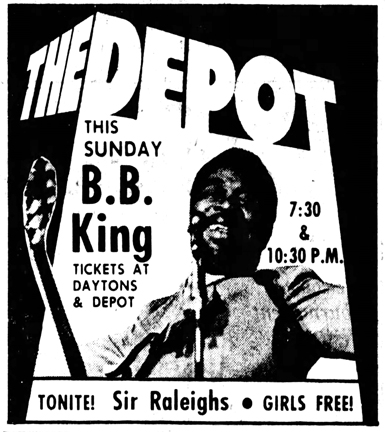
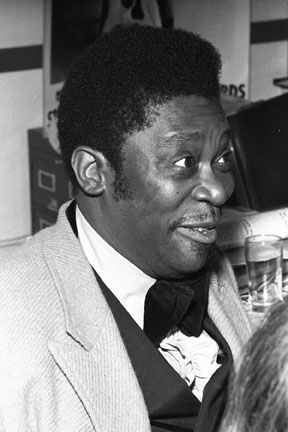
April 4, 1971: Procol Harum, opened by Curved Air. Two shows, in the “City’s center of rock music.” (Star, April 1, 1971)
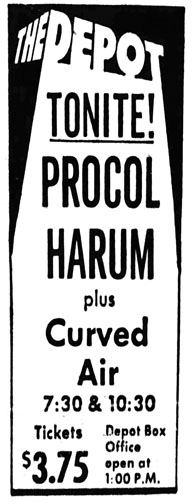
Robert M reports, “The Procol Harum (4 piece) show was poorly attended due to really bad weather. Everyone at first set was invited to stay for second set, which included a slightly different set list. Robin Trower played bass on a couple of numbers.”
April 9, 1971: Copperhead
April 11, 1971, James Gang (Jimmy Fox, Dale Peters, and Joe Walsh).
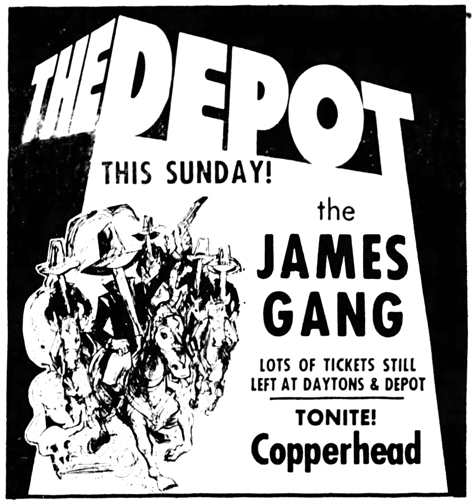
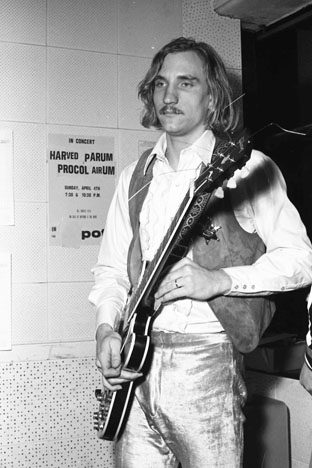
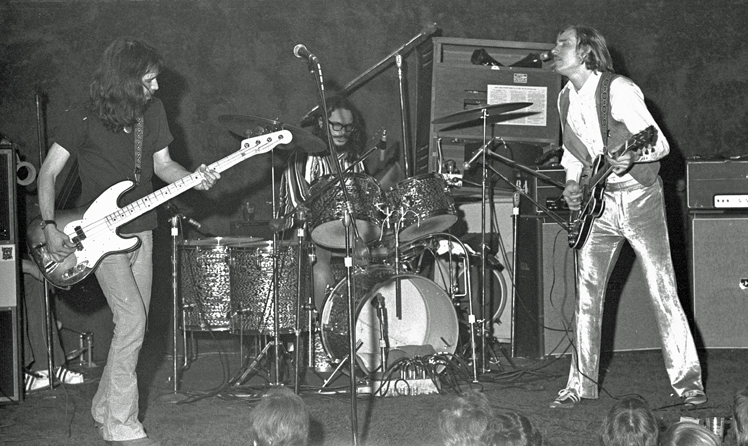
Peter Altman of the Star called the group’s sound an “instant anachronism.” While a year ago it would have been called “good but unremarkable,” “a sort of lower-case version of Led Zeppelin,” by 1971 “The individual is in; the group is out.”
It was easy to see that the Gang members were good players. But their music wasn’t saying anything about our world, or theirs. It had no lyricism, little sensitivity. It was aggressive, not reflective. And so it did not communicate directly. …
And the youthful audience, while friendly enough, never really cared; it was not involved; it will not remember vividly.
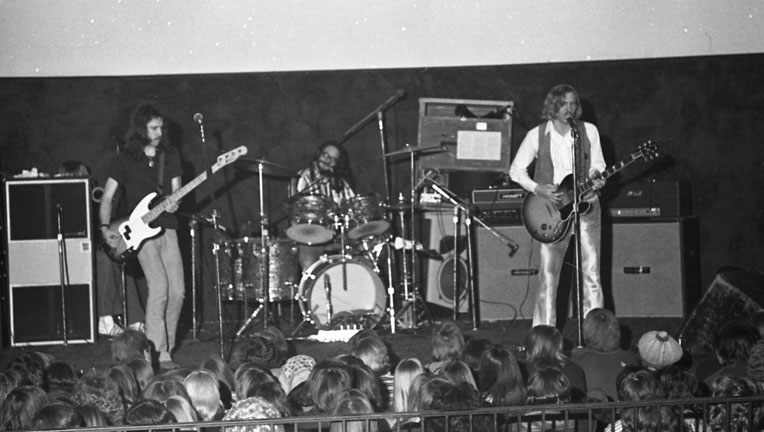
On April 11, 1971, Allan Holbert of the Minneapolis Tribune checked in at the Depot after a year of operation. He described the place:
Some nights it’s been a madhouse, with the music – after it finally started – so loud it was painful, with cops wrestling down rowdy rock buffs at the door, with bartenders running out of booze.
Other nights the loudest noise has been the moans of the management people as they added up the lack of receipts from paid attendance.
But the significant thing is that after one whole year, The Depot, that Fillmore Midwest rock palace… is still open.
Holbert also noted that April 1970 was not a great time to launch a new night spot. “The economy had started turning sour. People were being laid off. The ones who still had jobs were forced to cut back on their entertainment spending.”
Holbert attributed the success of the club to the hard work of Fingerhut, who “founded and owns most of the action” and was Chairman of the Board. Fingerhut worked seven days a week at the club. In hindsight, Fingerhut said that booking “loud, heavy groups” like Joe Cocker was a mistake, and “if I were to do it over I would start by booking top-40 bands.”
Crowd control was a lesson learned as well, as customers found ways to get into the club’s seven entrances and even in the windows without paying.
April 17, 1971: Copperhead
April 18, 1971: Canned Heat and John Lee Hooker, two shows
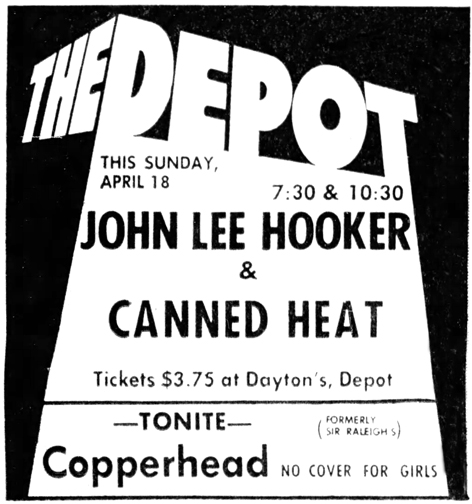
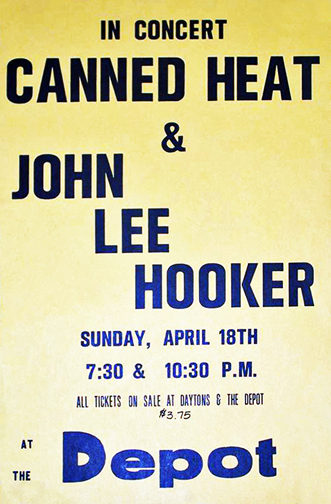
Reviewer Jim Gillespie’s headline gives away his impression: “Too Much Canned Heat.” John Lee Hooker opened the show with a short set on electric guitar, with songs such as “It Serves Me Right to Suffer” and a short version of “Boogie Chillun.” Gillespie had the impression that Hooker’s set was cut short to let Canned Heat take the stage. By this time, co-founding member Alan Wilson had died, and Gillespie found the music to have a sameness that became boring. Hooker came back to join the group for the last number, “On the Road Again,” but did not stay, and Canned Heat closed the show.
Reviewer Michael Anthony agreed that Hooker’s set was too short (25 minutes at the most), saying “Hooker was a little subdued for an audience that came to stomp and shout.” He also mourned the passing of the group’s original lead singer, Alan Wilson.

The caption to the sketch above read:
The Depot, under the direction of Allan Fingerhut, has pulled off another booking coup, scheduling a combined appearance tonight tonight by Delta blues singer John Lee Hooker and Canned Heat, one of the best of the young, white blues bands. Their new album, “Hooker ‘n Heat,” shows that Canned Heat, as are a lot of other white young blues groups, is moving closer to the “source” with the help of veterans like Hooker.
April 23, 1971: Copperhead
April 24, 1971: Light and Foxglove
April 25, 1971: Gypsy
Gypsy was a local group that grew out of the hugely popular ’60s band the Underbeats to become nationally famous. Read the whole story of Gypsy at Minniepaulmusic.com
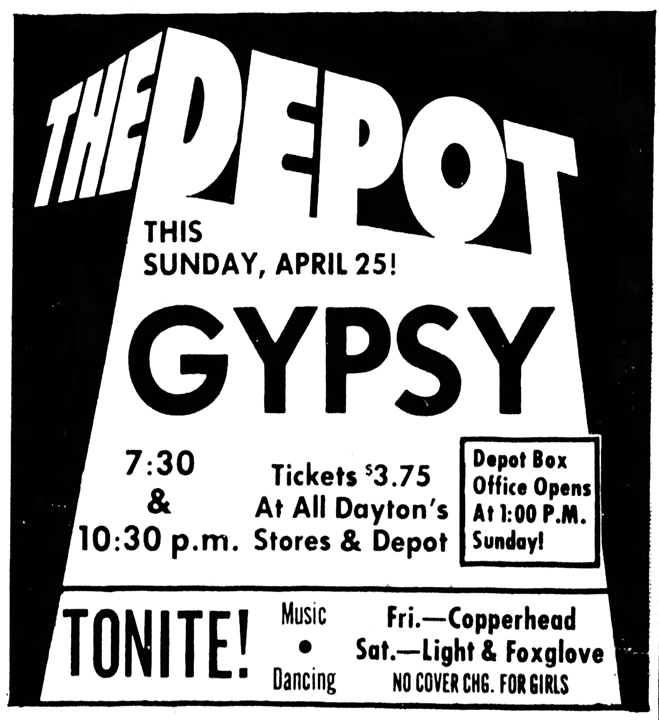
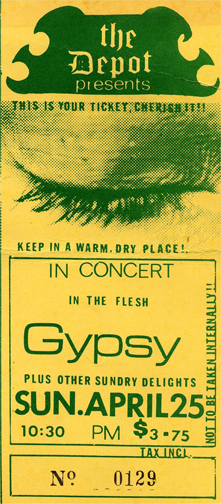
April 30, 1971: Copperhead
May 1, 1971: Bluebird
May 2, 1971: Al Kooper, opened by Fanny, 4 member, all-girl rock band.
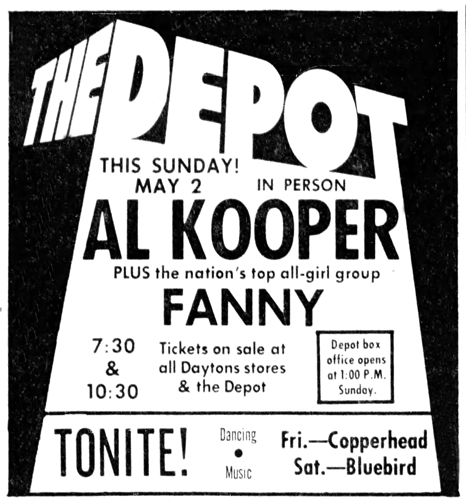
May 7, 1971: Dead Eye
May 8, 1971: Copperhead
May 9, 1971: Iggy and the Stooges, opened by the Litter. Little Richard was originally scheduled, but his tour was cancelled.
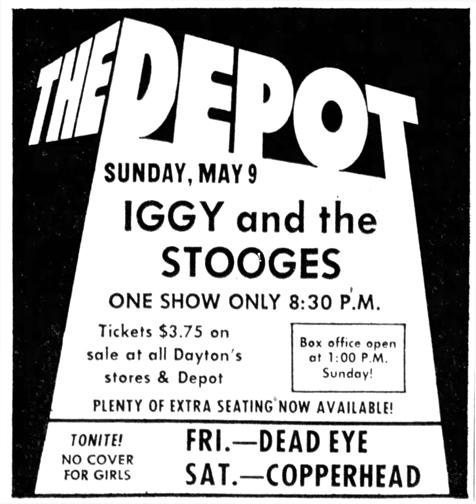

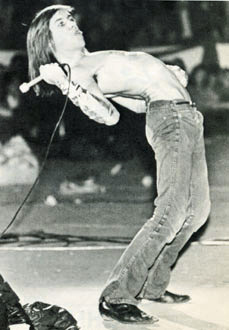
Jeff G says Iggy “had a hundred foot cord on his mic and things got kinda scary when he ventured out into the crowd and got right into our faces before climbing up the wall onto the second floor.”
Reviewer Michael Anthony cited “interminable setting-up problems and much hand-clapping from the audience,” but finally out came Iggy: “topless, frosted hair, lips painted, sequined, greased body.” Here’s more of Michael’s review:
Iggy’s act makes Mick Jagger look like Rudy Vallee. He minces, prances, crawls on the floor, and turns his long pouting lips to the audience. He works mainly in the audience, falling, shoving, jumping on the back bar and up onto the balcony and occasionally singing. Looking from the balcony, with Iggy below, the people mobbed around him, clapping, it looked like Friday night in Haiti. Forty-five minutes after they began, the other Stooges, mightily bored, walked off the stage and Iggy got up off the floor, climbed on stage and walked off.
May 16, 1971: Redbone
NO COPS
As of May 17, 1971, Minneapolis Police officers were prohibited from working off-duty at the Depot, citing a number of arrests at the venue. Although Gordon Johnson, Deputy Chief of the Patrol Division, did not keep statistics on the number of arrests, he ballparked it at about once a day and claimed that judges and the city’s attorney’s office had made complaints. At the time, Fingerhut employed about 20 officers to check IDs. Deputy Chief Johnson said the order was not made because of the “character” of the arrests, but because of the number. (Minneapolis Tribune, May 13, 1971)
AMATEUR NIGHT
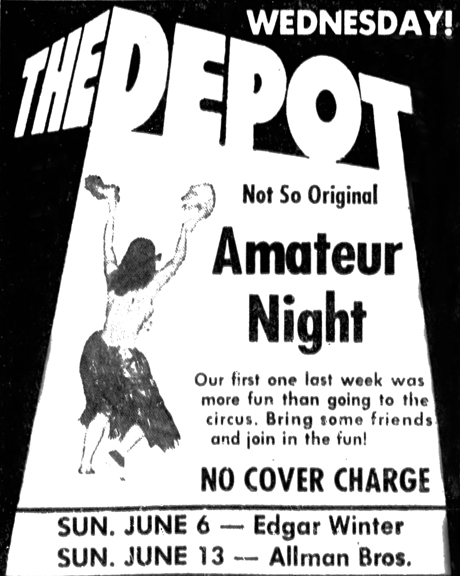
Toward the end of the Depot’s run, Fingerhut was trying different ideas to attract patrons. One was “Not-So-Original Amateur Night,” which made its debut on May 19, 1971. Planned to be an every-Wednesday night event, the contest would be award prizes according to audience response. Rock groups were not eligible, but apparently hula dancers were.
May 21, 1971: Bluebird
May 22, 1971: New Policy! Copperhead
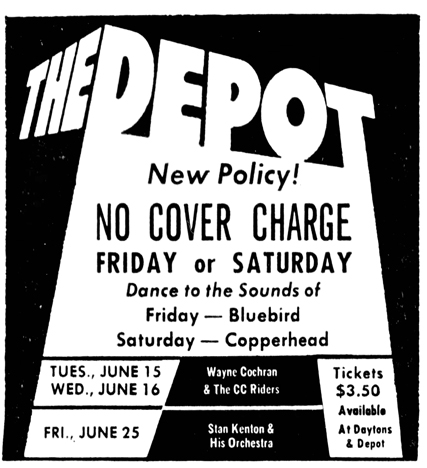
May 23, 1971: Johnny Winter, J. Geils Band
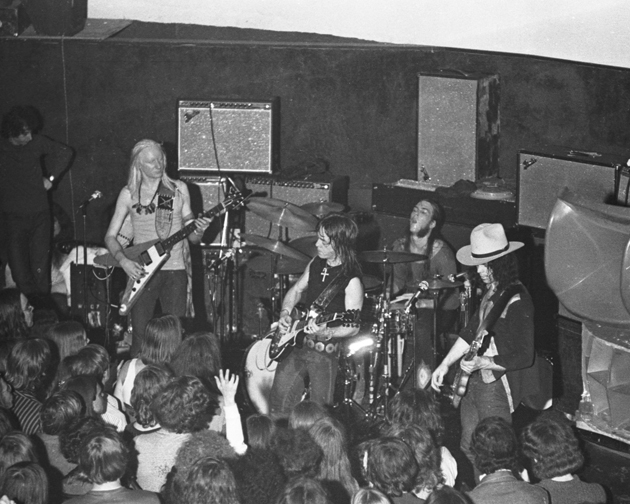
Michael Anthony’s review noted that at least 1,500 fans jammed the Depot for the first set, with what seemed like another 1,500 waiting outside in the rain for the second. He called the first set mundane, with no real surprises, but only when comparing it to Winter’s past performances. Anthony noted that former McCoy’s guitar player Rick Derringer had joined Winter the previous year, and that while his guitar playing delivered “layer upon layer of 32nd note riff lines in unison and alteration, his singing left something to be desired.
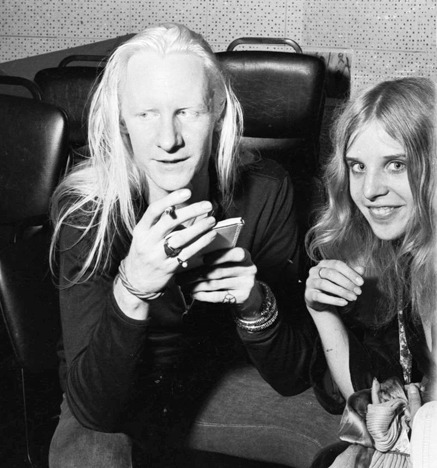
Marshall Fine noted that this was Winter’s fifth appearance in the Twin Cities, but that the group was getting “too obvious.”
Winter used to project a stage image of a white ghost, dancing some secret ballet with his guitar. There were high points and low points, climaxes and crescendos. He built his songs and then methodically, carefully took them apart.
His present band simply overpowers its audience. There are no real ups and downs in the songs because they all start on far too high an energy level. It’s simply power music, the genre that Grand Funk Railroad has made popular. The difference is that Johnny Winter knows what he is doing and consequently never becomes repetitious or dull.
The J. Geils Band was a relatively unknown group from Boston, which Fine found musically more interesting than Winter, akin to the Allman Brothers Band in their “hard-drinking approach to blues and the same smoothness and fluidity in their instrumental work.” Fine awarded kudos to the group’s harmonica player, Magic Dick, who “plays the most delicious harp since Paul Butterfield.”
The ad below appeared in the Strib on June 4, 1971. Wine and beer night had been extended to Thursdays, Nostalgia and Amateur Nights had been added, and cover charges were gone on Friday and Saturday nights. (The big concerts were on Sunday nights.)
June 6, 1971: Edgar Winter and his band White Trash

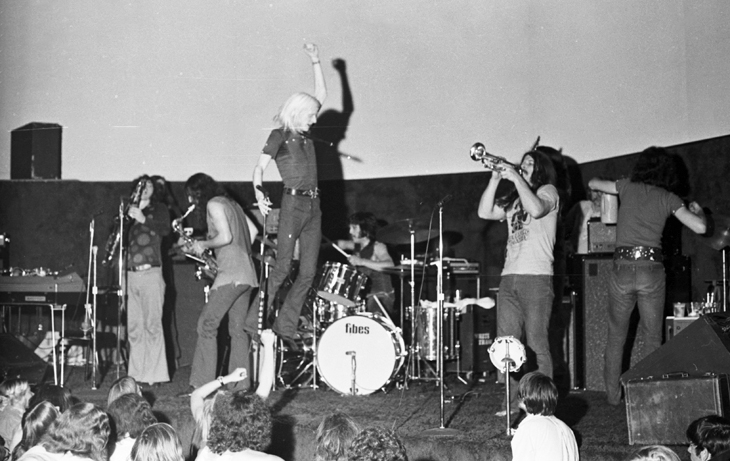
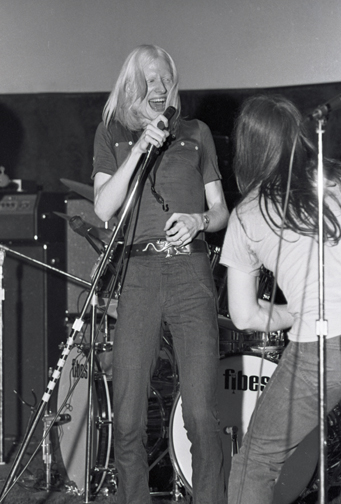
Reviewer Marshall Fine enjoyed Johnny Winter’s brother, saying he was every bit as good, if not better, than his older, more famous sibling. “They have the precision of BS&T, the toe-tapping rhythms of Chicago, the harmonies of Three Dog Night, plus one other distinguishing ingredient: guts.” The set’s showpiece was a long version of “Tobacco Road.” With Edgar’s “wildly soaring voice, the song lost its oldness, as he gave it new dimensions and feelings.” Fine would have preferred that Winter do more of the singing, but that was left mostly up to Jerry la Croix, who Fine accused of looking, sounding, over-emotionalizing, and hamming shamelessly like David Clayton-Thomas. The first part was not necessarily his fault.
Robert M reported that this show (no Rick Derringer or Johnny Winter) “was really, really poorly attended – like 25 [450] people at most. They were asked to stay for second set which was exactly same as first. No opening act.”
FINANCIAL CRISIS
In Will Jones’s column of June 10, 1971, it was revealed that the low attendance at the Edgar Winter show threw the club into a financial panic. Said Allan:
We didn’t take in more than two-thirds of what we needed to pay the group. We were emptying out our safe, and even going into the cash registers to get change that we would need to open up on Monday, in order to pay them. Then something happened that you’re probably not prepared to believe. You know about rock groups and their reputations, and their wanting all the money before they go on and all that. Edgar Winter’s manager came to me and said he knew the club was in trouble, and he gave us back some of the money. He said he liked the club.. He gave us enough so that we could open up Monday. If you know this business, and the kind of people who usually run the rock bands, you know how unusual that is.
Jones reported that Allan had put the last of his personal fortune into the club and told his staff of about 50 people that he couldn’t meet the payroll. Jones thought that was a charitable move, since Allan had warned them in advance instead of stiffing them. Then the staff voted to work for free for a week in an attempt to keep the club open. At that point they were all hoping that the upcoming shows would come off. (Minneapolis Tribune, June 10, 1971)
On June 11, 1971, Allan, identified as the “majority owner of the business,” announced that Monday, June 14, 1971, would be the last night at the Depot. “The rock and pop music house will close its doors, and operations will be suspended indefinitely for financial reasons.” He said that the Friday before there were only 150 customers. He was stuck with $35,000 in bills and was contemplating bankruptcy. But he still had hopes of reopening the big hall as a concert venue. (Minneapolis Star, June 12, 1971)
CANCELLED FINAL SHOWS
June 13, 1971: Allman Brothers show was cancelled, even as it was advertised in the paper that day. The band got wind of the club’s financial trouble and demanded full advance payment before they even left New York. Fingerhut scraped it together, but when he called the next day they said that they had already rebooked the date.
The Allman Brothers show was supposed to be supported by a group called debb johnson, made up of high school kids playing Big Band Swing. There was no debb johnson, but the leader was Bill Barber, Jr., who played several instruments. Barber was the son of a jazz pianist father and a jazz singer mother. Will Jones really liked debb johnson.
June 15-16, 1971: Wayne Cochran and the CC Riders
June 25, 1971: Stan Kenton and His Orchestra
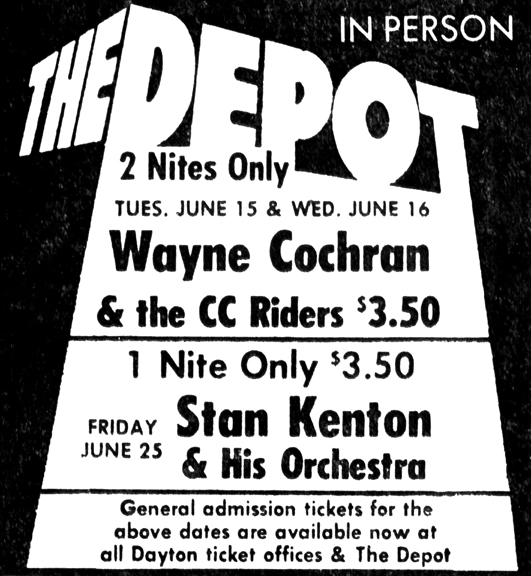
LAST DANCE
June 14, 1971 was the last day at the Depot, with music by house band Big Island.
Mike Anthony at the Strib said the crowd may have been even bigger than at opening night, ironic since the reason for closing was pitifully small attendance.
Hundred Flowers described the very last day this way:
For a year and a half the Depot crowd, a curious collection of “now” people, freaks, and in-betweeners, never really got together on anything. But, on closing night, June 14th, all the madness of rock-inspired frenzy broke out. On that night over a thousand people crammed into the place for the last wine and beer night.
The Depot management had not bothered to turn on the air conditioning or provide bar girls, so what developed was a chaotic human furnace. Add to this situation the tight, low-down, weasel-ripping music of Big Island and you have something quite close to heaven.
The band slammed into two of their own tunes “Four Days Screamin’” and “Let’s Get Reamed” and when the band stopped the people kept the beat going by clapping and shouting “more!” And that’s just what they got. Everyone moving and sweating as one body to “Jailhouse Rock” or another Big Island song “Mosquito Guts Against the Wall.” About this time the house lights were turned up and everyone was asked to leave (the cops were supposedly coming), but, of course no one left. Everyone was really ripped and all that was important was more raw face-kicking rock. “So the joint ke’p rockin’ .. all night long.”
The June 26 – July 11, 1971 issue of the Insider announced the closing of the Depot. The photo below was described as “a potential patron avoiding the ‘capitalist ripoff’ $3.50 admission plummeted 2 1/2 stories from the roof.”
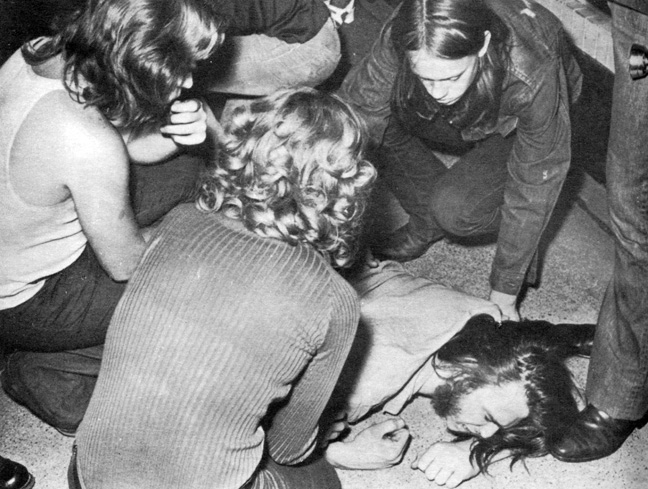
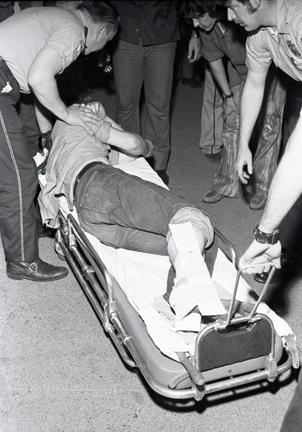
POST MORTEM
Several factors closed the Depot, after two years of steady business.
GREEDY PATRONS
Hundred Flowers was an early critic of high ticket prices. As early as June 16, 1970, it published financial information on the first concerts, as provided by the Depot. Excerpts:
Like a lot of people, we suspected the Depot to be making a killing off our music and our people. We asked to see their books, and here they are. At this point, they seem to be more like benevolent patrons of the culture than vultures….
(A list of expenses and income for six acts, and three upcoming shows)
So that’s why the tickets are priced so high. Having the Minneapolis Fire Marshall limit the crowds to 900 doesn’t help either. Still, while many of you may be ending your personal boycott, many of us still can’t afford the tickets. When we talked to Fingerhut, the head honcho down there, he said he wasn’t in it for the money but then he said he’d like to stop losing money.
The Hundred Flowers article continued with some suggestions, all of which included the word “free.” Somehow making the venue into a museum would attract “every band in the country.” Or, let the “heads” do everything with volunteers. Hmmm.
THE COST OF TALENT
By 1971 the cost of talent had skyrocketed as much as 600 percent, with well-known bands wanting upwards of $50,000 for a night’s work. Allan told me that he paid Ike and Tina Turner $5,000 and charged $5 admission. Although $5.00 doesn’t seem like much to see a name band today, especially in a relatively intimate venue like the Depot, audiences were chafing about the prices and developing a mindset that concerts should somehow be free.
This phenomenon was taking place around the country:
Philadelphia’s Electric Factory closed shortly before Christmas, followed a few weeks later by the Boston Tea Party and most recently, two of the biggest – Fillmore East and Fillmore West. After six years in which his theaters were the meccas of rock music, Bill Graham announced on April 29, 1971, his plans to close both. (Tribune, May 23, 1971)
THE ECONOMY
Hand in hand with the higher cost of talent was the state of the economy in the 1970s, which was in sorry shape. It would only get worse, with prices sky high, gas lines, and the word “recession” in all the papers.
FINGERHUT’S “FORTUNE”
It probably didn’t help that Allan Fingerhut, who owned two-thirds of The Committee’s stock until 1975, was perceived to be wealthy at the outset, and perhaps could afford to put his own millions into paying the bands. After the Depot closed, Allan told the press that he was “tired of being called a capitalist pig,” but perpetuated this image of wealth when he said, “I didn’t really open the club to make a fortune because I’ve already got one.” (Minneapolis Tribune, May 23, 1971).
But the problem was that Allan wasn’t a millionaire – his father was. With the Fingerhut name, Allan was assumed to have personal control of a considerable amount of available funds. On the initial application for the liquor license, when asked for his sources of income, the form read “Trust. Fingerhut Manufacturing Co.” Unfortunately, nobody bothered to check his bank records.
Initial renovations were all on credit to The Committee, to be paid back with profits from the club (DS)
Allan was to put $150,000 cash into renovation costs, but when the time came, he did not have that much on hand due to pending lawsuits. (DS)
“Next, the man guiding the Depot’s operations and footing the bill for the massive decoration required, Allan Fingerhut, poured hundreds of thousands into his project…” (Connie’s Insider, April 11, 1970)
Will Jones reported that Allan had said that he had put in the last of his $280,000 fortune into the club and could not make payroll after that. (Minneapolis Tribune, June 10, 1971)
A profile of Danny described “millionaire Allen Fingerhut.” (Insider, October 1971)
During the bankruptcy of the Committee, Allan said he paid $570,000 of his own money in startup costs. (Star Tribune, November 13, 2004)
Allan “sunk $150,000 from his share of the Fingerhut fortune into interior renovation.” (CRM)
Whatever the amount, Allan did not have millions of dollars at his disposal to help pay for bands and keep ticket prices down. Patrons didn’t know this and resented having to pay what they perceived to be high prices to a millionaire to see their favorite bands.
Related to this point is that there was a strong suspicion that the bartenders were taking money home with them that wasn’t theirs, perhaps again with the rationalization that Allan was a millionaire and he was footing the bill, so he wouldn’t miss a little bit here and a little bit there. But it all added up.
As an aside, Joe Daskowitz (aka Papa Joe) managed Times Square and Danny ran the entertainment. Joe was interested in being Danny’s partner at the Depot but did not have the capital that was thought to be needed. Danny said later that if he had known how little Allan Fingerhut actually had, he would have gone with Papa Joe. (DS)
MARIJUANA vs. BOOZE
Bars make their money on alcohol sales, and the young audience preferred beer to expensive hard drinks. More, pot was what the mind-altering substance of choice, and since it was not on the menu at the Depot, profits suffered.
UNRULY CUSTOMERS
By the end of the Depot’s run, Allan was deeply disenchanted with the clientele and wanted to change up the talent to attract a “more appreciative audience.”
Arrests were increasing at the club – Allan said one or two a week, mostly on Mondays when the club served cheap beer and wine. As a result, on May 11, 1971, Gordon Johnson, deputy chief of the Minneapolis Police Department patrol division issued an edict that off-duty policemen could no longer work at the Depot, effective May 18. The Depot had employed 20 such officers to check IDs, and the move blindsided Allan.
The reason given by the police for the move was that “I think their Beer and Wine Night is getting out of hand. You’ve got people going in there getting blasted on wine and you know how silly some guys get on wine.” But do you arrest guys for getting “silly?” And this contradicts the complaint that the kids were smoking weed and not drinking enough.
To solve the problem, Allan announced his resolve to drop the rock-only policy and start booking acts that would appeal to an older and “straighter” crowd. He proposed booking acts like the Platters, Four Seasons, Pat Paulson, country western acts, or big bands. He already had the Stan Kenton Orchestra booked for June 25, which did not come to pass. Allan said, “Maybe we’ll get a more appreciative audience, not my age group, but more appreciative, anyway. We’ll have rock maybe once a month, but they’ll be just the good ones.” He said the demand for free shows on the part of the audience reflected “greed, pigheadedness, and disrespect.” (Minneapolis Tribune, May 23, 1971)
CASH FLOW
Both Danny and Allan mentioned the problem of the bands demanding half of their fee in advance. If the band had to cancel, which often happened, the band would return the deposit, but in the meantime the cash was unavailable for expenses.
FEUDING PARTNERS
In a profile of Danny in the October 1971 Insider, Danny was quoted as saying:
A lot of the burden fell on [Allan’s] shoulders because of his own mistakes. When it came to the point where he needed someone to help him make decisions, it was too late: I didn’t care to be involved. He simply made decisions without consulting anyone else. His brother-in-law was later brought in to make sure he stopped making the mistakes he did, but he still paid no attention to anyone. I tried to stop him legally, but all they ended up doing was slapping his hand and saying, “No Allan, you are not allowed to do that without your partner’s consent.” If we would have been left alone in the beginning, we would have been successful. With what we know now, if we were to open another club together, it would be successful.
Danny doesn’t remember actually bringing Allan to court; Ted Deikel was brought in to handle the dispute. (DS)
For Allan’s part, he was reportedly working 16-hour days, and his health began to suffer. People would have to drive him home, and his doctor advised him that the stress was too much.
DOLDRUMS
Between June 14, 1971, and the opening of Uncle Sam’s on July 1, 1972, the club was closed. But don’t think that it was quiet! In fact, I found out, thanks to documents provided by Danny, the City, and the State, that a scheme was afoot to take over the club and turn it into “The Scene West.” The plan had too many legal flaws and had to be abandoned, but I found it fun to put the pieces together. If you’re interested, the details are outlined in the last section of this page.
Another surprise was found on the cover letter that transmitted the Committee’s 1972 liquor license renewal application and fee. Committee attorney Melvin I. Orenstein’s cover letter stated, “The Depot has been inactive for the last seven or eight months. The company is now in the process of trying to sell its business and would, however, like to renew its license pending the completion of the sale.” The sale, of course, never happened either.
AMERICAN SCENE
Finally the Committee found a solution to its financial and management problems. On April 7, 1972, the Committee and a company out of Cincinnati, Ohio called American Scene signed a document called an Entertainment Franchise Agreement (EFA), which provided for American Scene to take over the management of the club and turn it into a link in their Uncle Sam’s chain of discos.
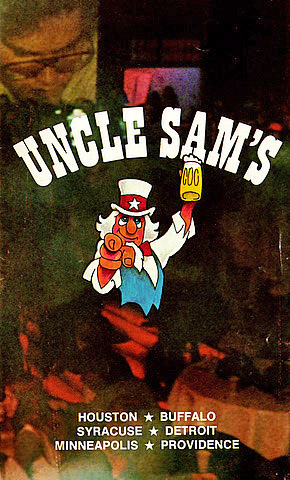
I have not found a copy of the EFA, but here’s what we do know:
- American Scene virtually “took over” the business, paying the rent, employees, providing an on-site manager, making entertainment decisions, etc. (SM)
- Contrary to several reports, Allan did NOT sell his shares in the Committee to American Scene. (BF, AF)
- The liquor license continued to be in the name of The Committee. (MLD)
- The business continued to be owned by The Committee.
American Scene made the place over into a “Saturday Night Fever” type disco (although the film wouldn’t be released until 1977), with a lighted dance floor, screens and projectors, and all the accoutrements that made it just like its other Uncle Sam’s locations.
[American Scene] had a notion that they could build a chain of dance clubs around the country in much the same way that Ray Kroc had built McDonald’s: by treating all markets alike and standardizing everything, including the name. (CRM)
UNCLE SAM’S: 1972 – 1980
*** PLEASE NOTE *** Performances listed below are for acts in the Mainroom only (once 7th Street Entry opened). In some cases I couldn’t tell, and included them just in case.
Also, although this website generally ends at 1974 and I don’t do local bands, I’ve broken both rules here by including acts (local and national) for this list through the Uncle Sam’s/Sam’s era.
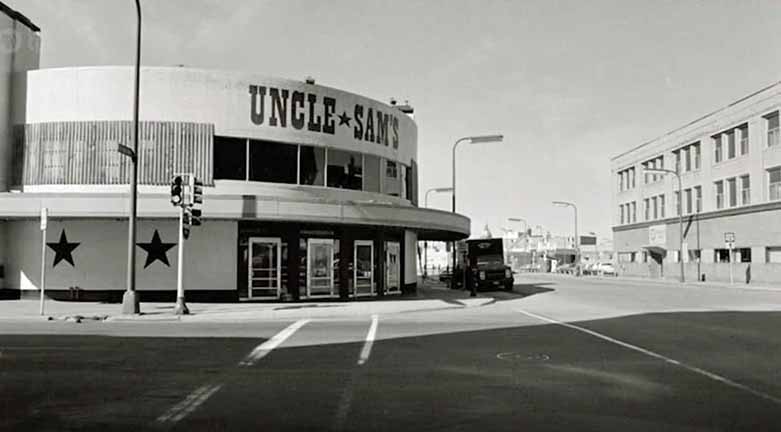
1972
An invitation-only Pre-Opening Party was held on Thursday, July 6, 1972.
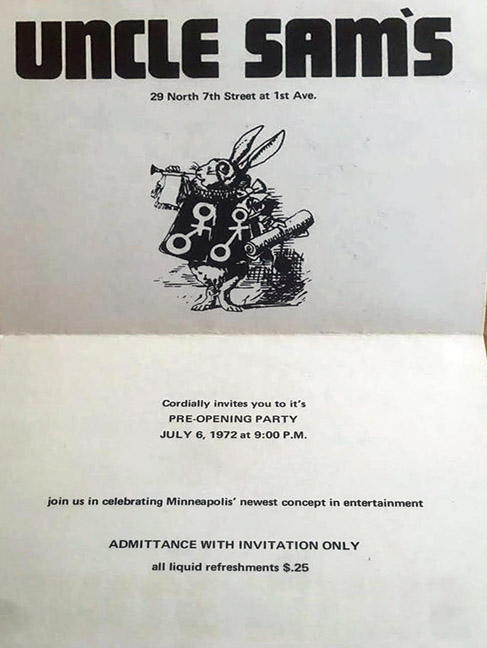
The club was initially described as a discotheque, and the music was “computerized Top 40.” The new venue “eventually may offer live entertainment similar to the music groups booked by the old Depot.” (Minneapolis Tribune, July 8, 1972)
The opening weekend appears to be July 14-15, 1972. Doug Maynard’s band may have been the first to entertain at Uncle Sam’s.
Columnist Irv Letofsky reported that Uncle Sam’s was an instant hit, with over 1,000 paying patrons a night on its first Friday and Saturday (despite the fact that it seated 650). There was originally a dress code of no blue jeans and no hats, “to keep out undesirables.” They relented to “proper attire … But still no hats, because other people grab them and cause trouble.” (Minneapolis Tribune, July 16, 1972)
The no hat rule was interpreted to be a mechanism to keep out blacks, as was the “no canes” rule instituted from Cincinnati at one point. (CR)
On August 9, 1972, two young men from Menomonie were convicted of assault and breach of the peace after getting into a fight with four off-duty policemen working as bouncers at the club. Despite the fact that at least one of the young men required hospitalization from a beating from the police, they were each fined $100 and told that they were “old enough to know they are expected to walk away from provocation and not take up a fight every time it’s offered.” (Minneapolis Star, August 10, 1972)
By October 1972, Irv Letofsky was reporting that the club was drawing 5,000 people per week since it opened, well above break-even. (Minneapolis Tribune, October 2, 1972)
UNCLE SAM’S RECORDS
In the fall of 1972, Danny’s Reasons recorded a single that was issued on Uncle Sam’s Records. The song was the 1960 Ricky Nelson chestnut “Young Emotions” (one of my favorite songs…) arranged by Dick Wiegand and produced by Timothy D. Kehr. In a column/ad called Christian Cuts, put out by the Christian School of Hair Design, and published in the Minneapolis Tribune on February 4, 1973, the record was described as a hit record, and was Number 15. It did not say what chart, but this was clarified in a profile of Danny in the Minneapolis Tribune on March 4, 1973, as various radio charts in the Upper Midwest; it also did well in Duluth. The flip side was “Hard Old Times,” and the record was Uncle Sam’s No. 19361.
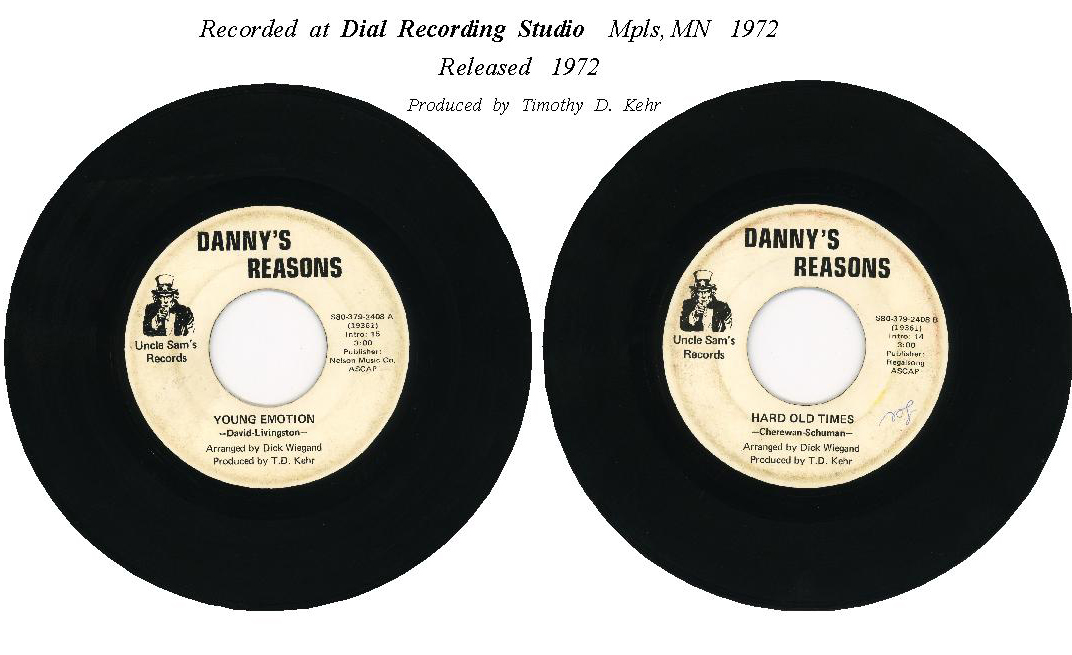
The early ad below shows our Uncle Sam as a little bit more sinister than we’re used to seeing him. This was from 1972 or ’73, probably before the drinking age was dropped from 21 to 18.
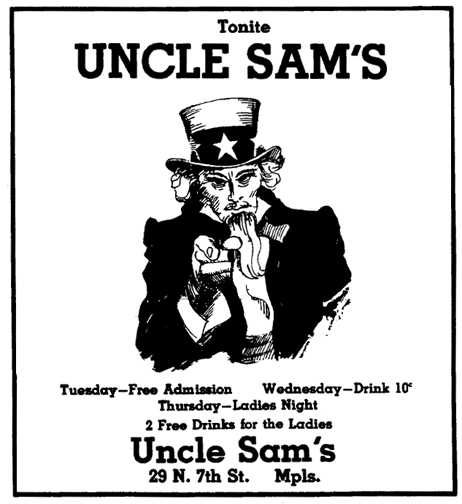
1973
At first the club just played records, spun by a DJ. From 1973 to 1978, the main DJ was Steve Egsgaard, a former DJ at KQRS. (30th)
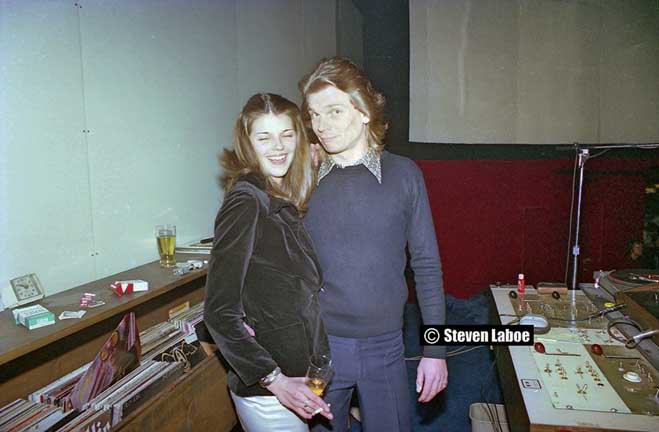
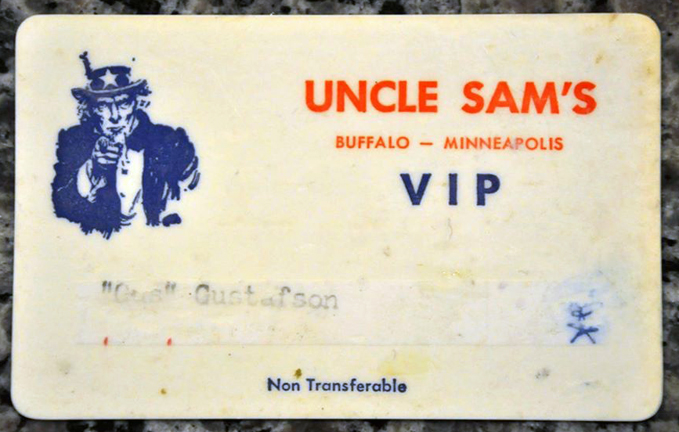
By 1973 the club had started booking live bands. Sundays were often live music nights, mostly booked by Marsh Productions.

February 11, 1973: Walter Mitty, featuring the brilliant Robb Henry on guitar.

February 18 and 25, 1973: Willie and the Bumblebees

March 4, 1973: Danny’s Reasons
Here’s a big one:
March 11, 1973: Colla was a band made up of former members of Crow, plus the mighty Gregg Inhofer from Pepper Fog.
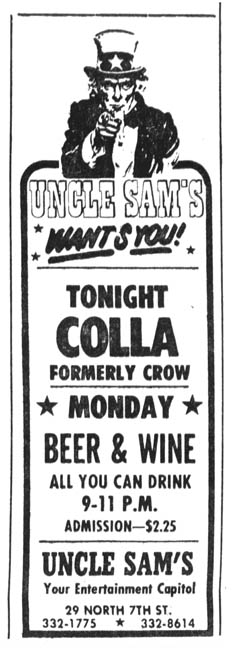
March 18, 1973: Walter Mitty.

March 25, 1973: Colla
April 1 & 2, 1973: Rock ‘n’ Roll Revival with Truc
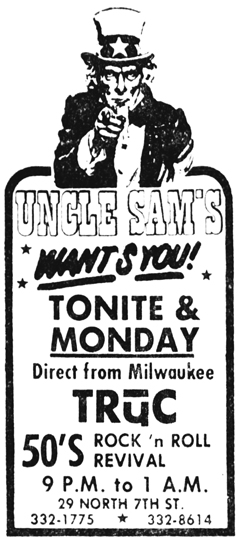
April 8, 1973: Rock ‘n’ Roll Revival
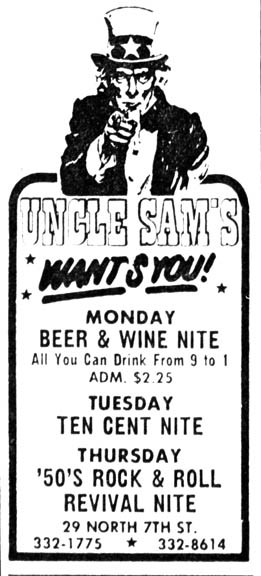
April 22, 1973: Zulu
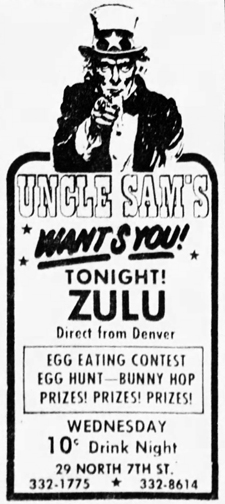
May 7, 1973: Zulu
May 28, 1973: Zulu
Attendance was given a boost on June 1, 1973, when the drinking age in Minnesota was lowered from 21 to 18. The Tribune reported that at midnight on June 1, about 75 new drinkers appeared at the door at Uncle Sam’s, IDs in hand. (Minneapolis Tribune, June 2, 1973)
On July 3, 1973, an 18-year-old male was stabbed in the abdomen by a 22-year-old male as he was leaving the club after a dust-up over a girl. (Minneapolis Star, July 3, 1973)
August 13, 1973: Cain
September 2-3, 1973: Sterling
September 9 – 10, 1973: Jesse Brady
November 11, 1973: Sinaloa
December 3, 1973: Volcano
December 10, 1973: Sinaloa
December 14 – 15, 1973: Cain
This is the first mention I have found of many appearances that Cain made to Uncle Sam’s stage. Cain was led by consummate showman Jiggs Lee.
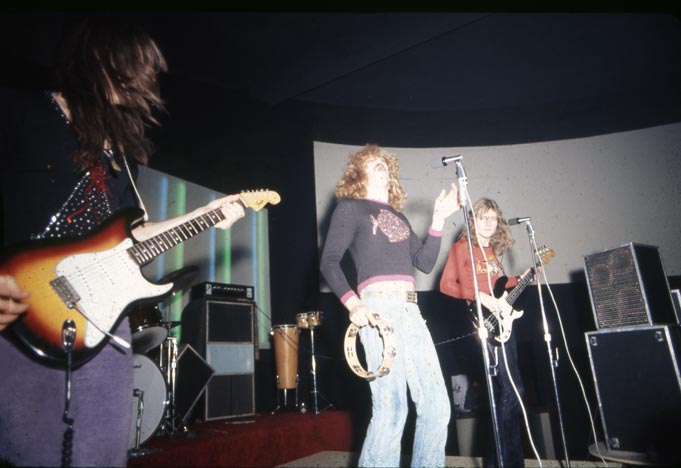
December 17, 1973: Everett James Band
December 25, 1973: Sinaloa
THE APE SHOW
Since Disco (capital D) had not yet hit the culture, drummers were still being hired to beat out the rhythm of the rock songs being played by the DJs. One drummer took it to a higher plane entirely. The following was taken from Douglas Hegle on YouTube:
Denny Craswell was a founding member of the Castaways, and co-wrote its smash hit, “Liar, Liar” in 1965. In 1969 he became the drummer for the band Crow, which had a national hit with “Evil Woman.” The band put out three albums; the second, “Crow by Crow,” received much local and national attention. It featured the cult classic “Cottage Cheese,” which was written as a vehicle for Denny’s drum solo.
After Crow disbanded in 1972, Denny decided to try something different. He met with the Tribal Leader of the Taos Native Americans in New Mexico. He was granted special permission to build a drum set out of Taos Drums. He added Timpanis and gongs and a Rack of 18 Tubular Bells. The hardware was custom made by a Greek wood carver. The thunderous prehistoric drum set had to be played with mallets, which was perfect for a FIRE DRUM SHOW.
Next, a keyboard was added to the setup. In 1973 MIDI (Musical Instrument Digital Interface) did not exist, yet Denny built a master controller that could control custom programmed Chamberlain organs and synthesizers. The Chamberlains featured the sounds of a huge pipe organ and vocal choir.
Add a bunch of Explosions, Smoke, Fire, and an Ape Costume, and The APE SHOW was born! APE performed at Uncle Sam’s and other Minneapolis Clubs before he went on tour across Wisconsin, Illinois, and as far as Pennsylvania and back across the country, finally landing on the West Coast.
Miraculously, a video with photos of the Ape Show is now on YouTube!
I would also like to point out that Denny Craswell is kind of my cousin. You see, his father’s brother married my father’s sister. So it isn’t a blood connection. But we both shared Uncle Dick and Aunt Arlene. And although I’ve known his brother Jay and even babysat for his sister Melodee’s kids when I was very young, I never actually MET Denny until 2010 when he was inducted into the Mid-America Hall of Fame. What a blast to see my Craswell aunt, uncle, and cousins out to see Denny perform both his Castaways and Crow numbers! He is still performing up where he lives in Detroit Lakes.
1974
February 9, 1974: Straight Up. The January/February Insider reported that “lead singer Mark Gallagher is back (are hot pants still in?) The show includes fire, smoke and outlandish costumes (Ex-Litter turns glitter)…” Straight Up’s act required a lot of space, so they mostly performed in outstate ballrooms. In addition to Gallagher, ex-Litter drummer Tom Murray was in this crazy group. See a Dave Moore special report on Straight Up Here.
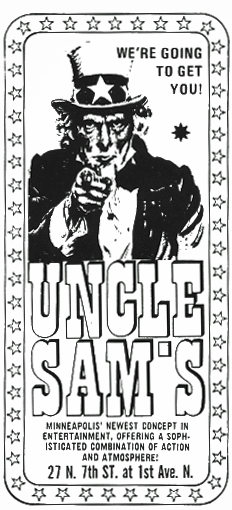
NO POCKETS, NO CHANGE
1974 was the year of the streaker, and on March 12, a nude man who appeared to have come from Uncle Sam’s showed up at the Venice Cafe across the street and ordered a pizza. The proprietor said he would make him one but he couldn’t wait for it there. The streaker paid with a $20 bill but couldn’t take his change because he didn’t have any pockets. Friends of his picked up the pizza. (Minneapolis Star, March 12, 1974)
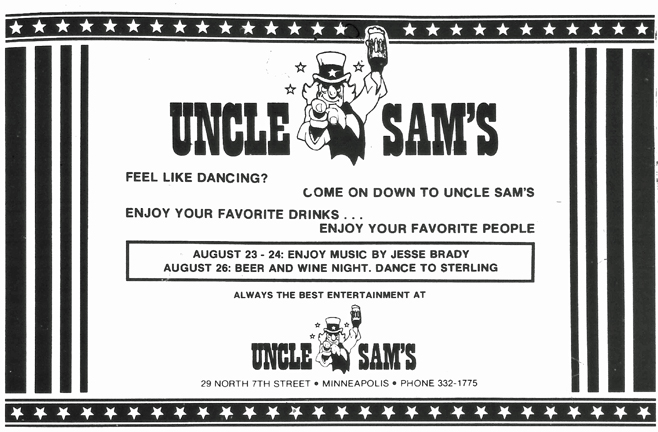
RIOT LEADS TO OWNERSHIP PROBE
For some reason the bar was holding a Grand Opening (or Re-Opening) Weekend during September 13-15, 1974, with free admission and 25 cent drinks. One young man was reportedly harassed for wearing a red beret and having painted fingernails – a witness said that police called him a “faggot and a queer.” One report was that the cop bouncers ejected him for “violating the dress code.” The young man did not consider his beret to be a hat. Nevertheless he was allegedly put in a half-Nelson hold and thrown against a police car. This did not go well with the crowd (2,000 people had been through the doors that night), and a “row” resulted in nine arrests, mostly by friends who tried to intervene.
The next day (a Saturday), the city attorney’s office promised an investigation based on the number of complaints of brutality from the people arrested. The investigation ended up in the hands of the police chief, who was looking into the ownership of the bar and the number of complaints. (Minneapolis Star and Tribune, September 13, 14, 17, 1974)
A report in the Tribune on September 18, 1974, stated that the liquor license “is held by a group called The Committee, Inc., of which Allan Fingerhut is President.” The club was managed by Cincinnati-based The American Scene, Inc., which took a share of the profits. City ordinance required that liquor establishments must be locally owned, and the council wanted to look at the source of the club’s financing.
On October 2, 1974, the Tribune reported that no legal action would be taken against the two officers involved with the fracas, but “their actions were not up to the standards we expect of them,” said City Attorney Walter J. Duffy, Jr. But the council was still concerned about the license, suspicious that the Ohio group secretly was the owner.
On November 11, 1974, Minneapolis Mayor Albert J. Hofstede announced that he would instruct Police Chief Jack Jensen to forbid police officers to work after hours at Uncle Sam’s. He wanted to forbid all moonlighting, but he couldn’t afford to pay officers time-and-a-half so they could make a living wage. With permission, Officers could work any job except bartending after hours. (Minneapolis Star, November 12, 1974)
An article by Joe Soucherey in the Tribune dated October 17, 1974, indicated that Cain had recently performed at Uncle Sam’s. Soucherey had once been a member of the Bananas, before they changed their name to Cain.
November 15-16, 1974: Sterling
November 18, 1974: Prodigy
November 19-22, 1974: Cain
December 7, 1974: Prodigy
December 16-21, 1974: Sterling
December 22, 1974: Cain
December 30-31, 1974: Sterling
ABOUT THE WORD DISCO
I don’t pretend to be an expert on this, and I won’t attempt any involved analysis, but here’s my interpretation. In the beginning, a discotheque was merely a club that played records instead of having a live band. In the early days, Uncle Sam’s was a disco (I’m going to use a small “d” disco here) sometimes, but there were many nights through 1975 where live bands (mostly Jesse Brady and Sterling) played live. It was the format, not the characteristic of the music.
The trend of bars that just played records (disco with a small d) started cropping up at the end of 1974, apparently – an article in the December 1974/January 1975 issue of the Insider by Editor Peter Dwyer announced “Discos are the coming thing.” The three “discos” mentioned in the paragraph were:
- The Red Eye Saloon disco bar “featuring rock music,” at 1019 Washington Ave.
- Zelda’s, an affiliate of the Spaghetti Emporium, on 4th Street South. Zelda was the person who would manage and run the disco board.
- The Tea Room adjoined the Locker Room, a 24-hour steam bath. The Tea Room, located at 315 First Ave. No., was open midnight to 4am, Wednesday to Sunday.
Of course all Uncle Sam’s clubs had been offering dancing to records for a few years now. They were all the same, as described by Billboard magazine, December 21, 1974:
Dancing to records backed by the live drummer is the whole lure. Each Uncle Sam’s has a large dance area averaging about 60 by 12 feet. A computerized chase-rotate-and-flash electric circuit matches the 40-foot wall of lights and multi-colored lighting under the foot-high transparent plexiglass dance floor with the rhythm of the record played. Overhead, six strobe lights are calibrated to match the rhythm. There are stationary black lights and several bubble machines in the dance area.
1975
BILLBOARD
An article dated February 8, 1975, in Billboard reported that the club in Lincoln, Nebraska, had opened on January 28, and another one would open in Maxville, Tennessee, on March 15. They were already open in Houston, Detroit, Des Moines, Buffalo, and Syracuse.
Pat Lyons, the manager of the Minneapolis club, said that the company had a space requirement of at least 10,000 square feet and capacities ranging from 1,000 to 1,5000 persons. The firm’s policy was to build a $35,00 – $40,000 lighting/sound system in each location. Food was not offered in any of the clubs, but alcoholic beverages were available. Admission to each disco was $1.
With the exception of the Minneapolis club (it has live music six nights a week unntil just recently), the programming format at each disco is designed to give the ddancerss a wide variety of sounds, including r&b, pop and rock. The norm, says Lyons, is for each club to play at least 75-80 different records a night.
Playlists of the DJs working the clubs come from the home office in Cincinnati but, at the same time, are used primarily as guidelines. The individual spinner and manager in each club is allowed freedom to work their audiences as they see fit.
The article mentions a “comment sheet” from each club that is ciruculated throughout the clubs to alert managers to trends and give them ideas. Lyons said that recent comment sheets indicated that 80 percent of club-goers “prefer recorded dance music over live entertainment.”
THE INSIDER
In March 1975, Peter Dwyer of the Insider filed this report:
Apparently the live music gig in some clubs isn’t doing too well. Several clubs in town are trying a disco format to cut costs and bring in the dancing crowd. Uncle Sam’s reportedly followed the lead of its national affiliates in changing to a complete disco program. They’ve imported a jive-slinger from Syracuse, New York, to get the crowd off their wallets.
[Mentions of discos at The Golden Fox, Red Eye Saloon, and Zelda’s] These clubs provide an interesting and varied alternative for the bar hopping crowd without really posing much of a threat to the gigs available to musicians, that is unless the trend continues to turn away from live music.
Yes and no.
March 31, 1975: Jesse Brady
April 9, 1975: Chubby Checker. Why didn’t I go to this show? I was a fifties freak in the seventies!
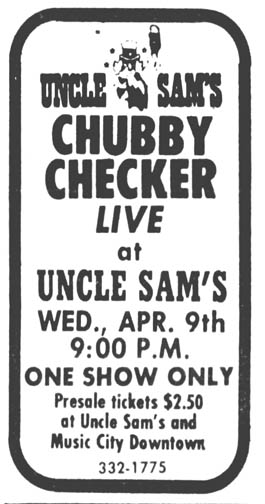
Dix Steele remembered:
I worked there this night. It was unusual as we didn’t regularly do live music in those days. What I do remember was that Chubby Checker did two shows that night. Both for the same audience… It was a bit confusing to people…
MY FIRST TIME
I turned 18 on March 17, 1975, and my sister Judy was already a dedicated Uncle Sam’s addict, so on Monday, June 30, 1975, she brought me to her favorite venue for the first time. (I keep a diary, you see…) Things were going fine, I was dancing with a harmless-looking guy named Ryan, when all of a sudden he said, “See you after the contest.” What contest? A wet T-shirt contest. Girls got up on stage in special T-shirts (probably promoting a radio station) and their underwear. Some guy (probably a DJ from U100) poured a pitcher of water on each. Applause for each, some were eliminated. Off go some of the T-shirts. Applause, applause, still no winner. Guys were standing on the bars and pool tables (did they have pool tables?) shouting “Beaver! Beaver!” I did not know what that meant. Off go some of the underwear, and presumably the prize was worth the attention. Or vice versa. I was mortified! And so mad at my sister for not warning me not to wear that halter top… I’m told there were about five of these, er, special programs held.
The photo below is not from the event I was lucky enough to witness. Yes, it is offensive and gross. Sometimes history hurts.
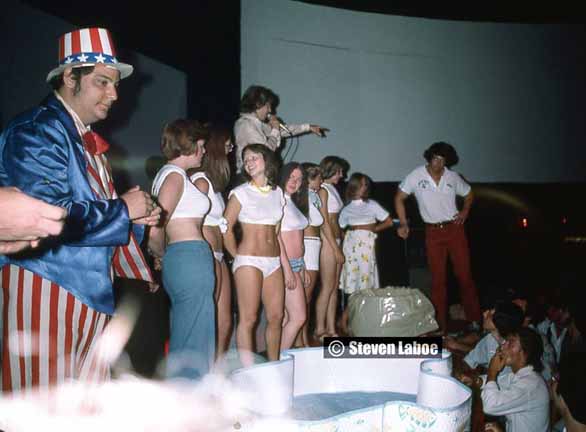
Drink and Drown Mondays were discontinued and replaced with additional live music nights in 1975.
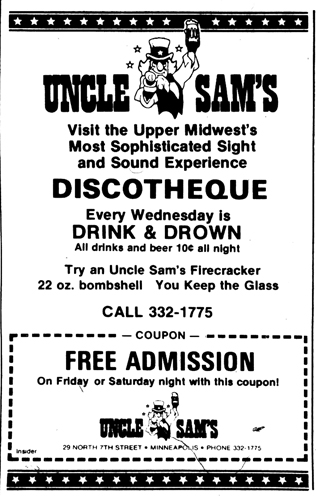
The mural pictured below was painted by Mike McCarty in the fall of 1975 – at least that was the consensus after much discussion on Facebook. At the time it the photo below was taken in 1977, the space was the Game Room.
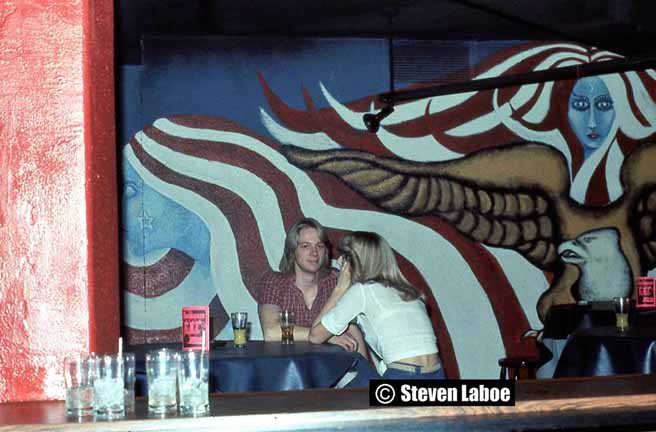
EARLY UNCLE SAM’S
An article from October 1975 gives out these tidbits about the club at that time:
- The clientele was predominantly 18 to 25.
- Although liquor was served, beer was the drink of choice.
- Jim Crake was the doorman.
- The dress code was as follows:
- No ripped, patched, or frayed jeans
- No hats
- No T-shirts
- Proper Attire required
There is no band. Inside the walls vibrate with 5,000 watts of hard rock and multi-colored lights under the dance floor create a fantasy-world atmosphere. There is a “disc jockey” on stage, along with a drummer, who adds a thumping beat to the 5,000 watts of stereo.
Technology fills the room at a price below musician’s union scale. (Minneapolis Star, October 31, 1975)
DRUMMER DEAN
Dean Pederson was one of the staff drummers from 1975 to 1977, and he was kind enough to send in the following photos from his time at Uncle Sam’s.
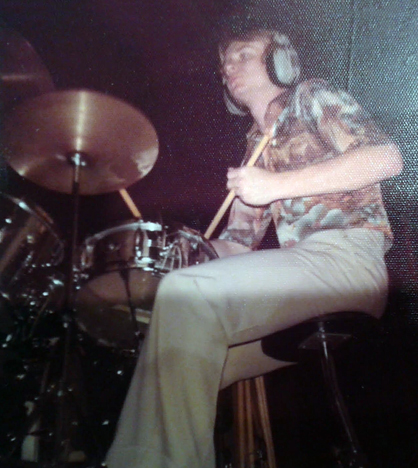
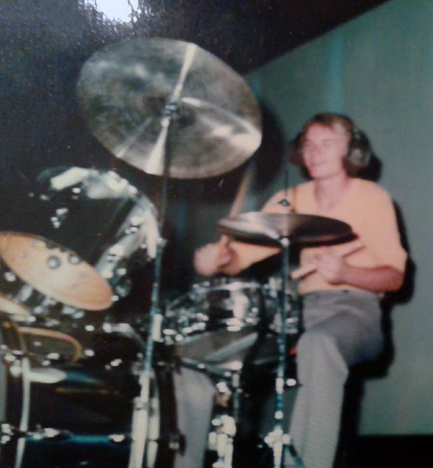
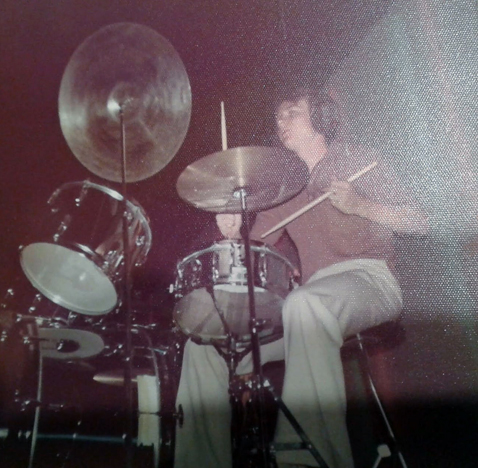
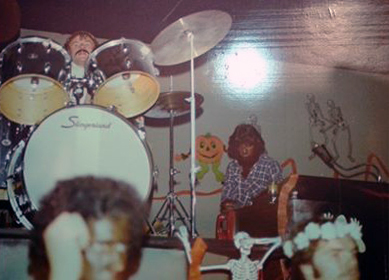
This last one was taken on Halloween 1976; Dean was Sonny to his girlfriend’s Cher, and DJ Larry Davidson was the Wolfman.
1976
STEVE McCLELLAN
It’s now May 1976, and with it comes the hiring of new General Manager Stephen Thomas McClellan. You’ll have to indulge me as I present a longer profile of the person who became the heart and soul of Uncle Sam’s, Sam’s, and First Avenue.
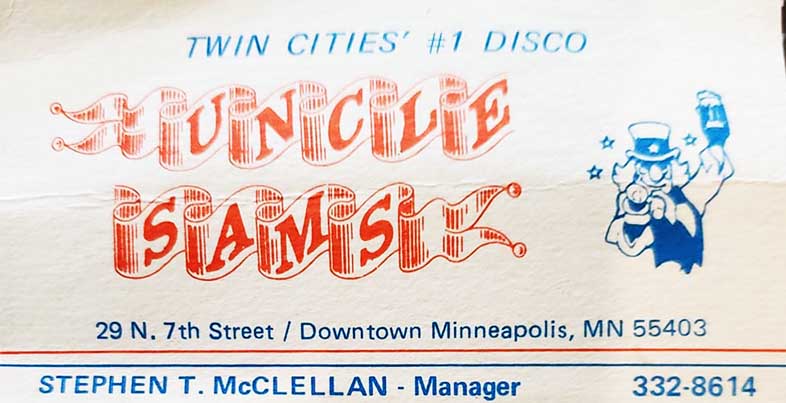
Matos:
Steve McClellan wasn’t punk. The first time he stepped foot into 701 First Avenue North, when it was still a Greyhound depot, he was a teenage runaway hightailing it to San Francisco during the summer of 1967 because, he says, “My dad was going to make me cut my hair.” The Nebraska Highway Patrol sent him back. “I could see my dad glaring at me across the lot,” says McClellan.
In 1968 he enrolled at the University of Minnesota during a heady period of social change: “I’ve only voted for two major-party candidates in the last 40 years: George McGovern [in 1972] and Obama [in 2008],” he says. “I was third party all the way.”
McClellan loved rock ’n’ roll in high school, having seen the Yardbirds on the eighth floor of the downtown Dayton’s department store, but gave his records to a neighbor upon entering college. He had his eye on a career in public service, researching legislation for the city coordinator (1974), and nursing ambitions to join Ralph Nader’s organization. He spent three years on the state board of directors of the Minnesota Public Interest Research Group (MPIRG), three years on the local board, and edited the MPIRG newsletter for two years(February 1973 to December 1974). He recalls thinking, “I was no longer going to waste money or time on music.”
He was wrong. In July 1973 he took a part-time [job as a barback, or bartender’s assistant] at Uncle Sam’s. McClellan got the job alongside an old friend from De La Salle High School, the straitlaced Jack Meyers.
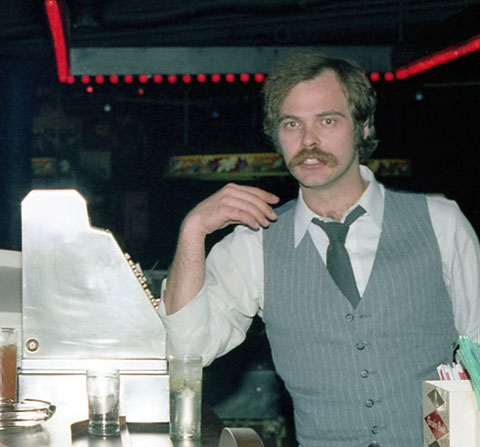
In June 1975 he was rushed into management training, as he was transferred to American Scene’s Lincoln disco to become an Assistant Manager. And in May 1976, he returned to Minneapolis to start his long run as General Manager of Uncle Sam’s, then Sam’s, First Avenue, and 7th Street Entry, most names of which he created himself. By 1977 he was American Avents’ Rookie of the Year.
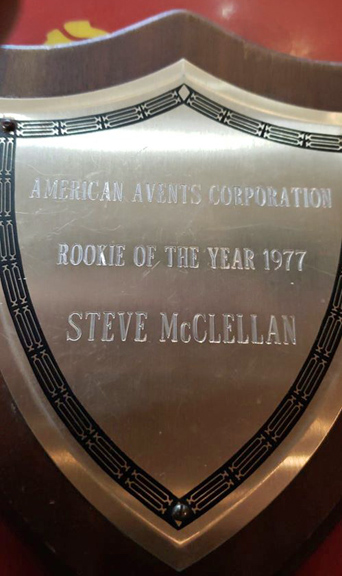
When asked to describe Uncle Sam’s in the mid ‘70s, Steve replied:
Blue-collar disco. Shag purple carpeting to match the Vikings’ motif. It was very mainstream – a blue-collar disco run by a bunch of people out of Cincinnati that had a real long-range vision of something that was going to die in three years. (Current 2014)
Matos:
Four years later, McClellan booked Nick Gilder and Starbuck, figuring they would be easy draws since each had #1 hits that year (“Hot Child in the City” and “Moonlight Feels Right,” respectively). Both tanked. “I paid too much and lost money,” says McClellan.
He had better luck a year later when, back-to-back, he booked Pat Benatar and the Ramones. Both were rousing successes, and American Events [by then Avents] noticed. “They let me do whatever I wanted after that, ’cause I sold out two shows like I knew what I was doing,” says McClellan, who was nevertheless surprised by the Ramones’ sellout. “I thought, They don’t even have a [hit] record out. How come people are buying these tickets? There was something exciting going on.”
. . .
But McClellan wouldn’t cut costs on bands. “I wasn’t looking at it in terms of a business plan. I was coming out of ’60s radicalism,” he says. “The only reason you exist is to make change. That’s why I was so hard on pure pop bands: I had no time for bands that didn’t have a message.”
In his book Hi Jinx and Hearsay, City Pages and Twin City Reader scribe Martin Keller wrote,
In my experience, McClellan was one of the smartest, most enthusiastic music lovers ever to run a joint. He had earned the respect of industry veterans, writers and reporters, and legions of musicians and music fans from across the diverse spectrum he brought to the stages of the main room and the Entry. He wasn’t fondly called “Chainsaw” by rock writer P.D. Larson for nothin’ either: Steve’s buzzing manner could silence the unaware.
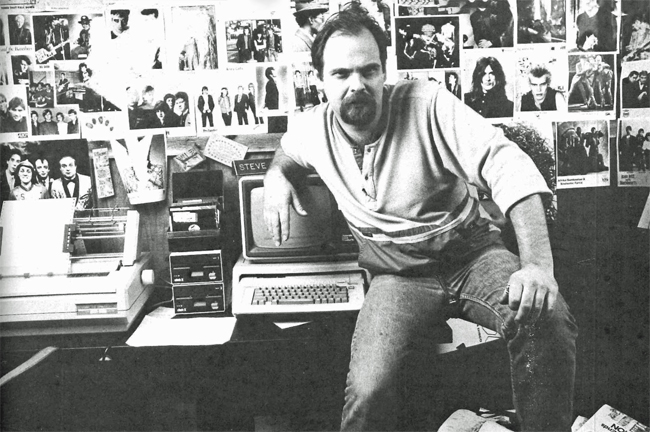
A 1990 profile of him in a feature called “The Most Influential Movers and Shakers of the Twin Cities Music Community” has this to say about Steve:
A teddy bear in wolf’s clothing, McClellan has run First Avenue with a heart of gold and an iron fist. Hist tirades are legendary; his sincerity and grief-giving abilities seemingly boundless. While he’s quick to deflect praise to his support staff, over the past eleven years First Avenue/7th St. Entry has remained the Midwest’s most vital new music venue, due in no small part to McClellan’s energy and his willingness to take an active role in nurturing local music.
Steve takes no credit for the success of First Avenue, and insists that he relied on others for advice on which bands to book. Another factor in the mix was that the size of the venue precluded the big acts more suitable for arenas, and the major booking agencies were not interested in the club. As a consequence, he ended up working with smaller agents and record companies like SST that were more than happy to book their bands at the premiere club in town. Locally he often consulted people in the know like Peter Jesperson at Oarfolkjokephus, Jimmy Jam and Kevin Cole at the downtown Hot Licks, and Bob Mould of Husker Du. (Current 2014)
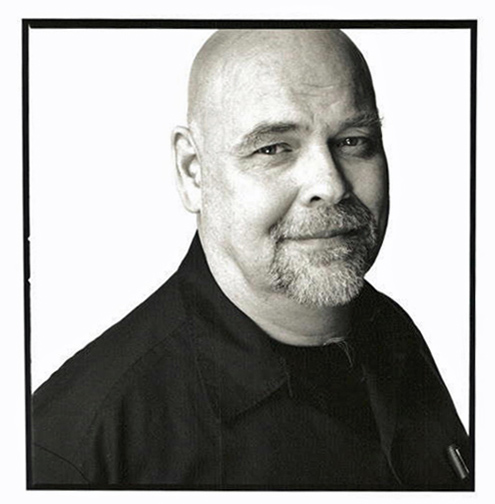
Matos:
Looking back, he says, “I never really booked shows as moneymakers. Sometimes we’d cross over to a new audience, just ’cause it was good music. I was serious about that.”
In 2015, both Minneapolis and St. Paul declared Steve’s 60th birthday “Steve McClellan Day.” The text of the Proclamation is included in the Appendix at the very end of this document. Love you, Steve!
CHRISSIE
And yet, behind every great man is an even greater woman, and in this case, that woman, was Chrissie Dunlap. As a fellow power behind the throne, I can just imagine how this woman kept Steve organized and kept the whole machine running. I wasn’t there, but I’ve heard enough stories – from Steve himself, included – to know that she was an integral member of the team.
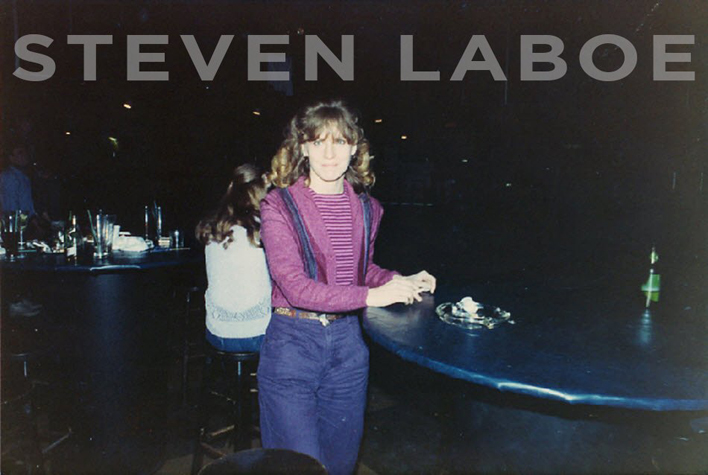
ENOUGH ABOUT STEVE
Back to our regularly scheduled website.
June 21, 1976: Jesse Brady
BRIAN AUGER
On July 20, 1976, Uncle Sam’s hosted Brian Auger and his band the Oblivion Express. Jesse Brady opened the show. Skip Jones’s review described the scene as “half price drinks, thick smoke, and loud, loud music.” Jesse Brady was moving into something called “sophistarock,” or maybe “half-baked,” although it made no difference to the girls in front.
At 11:00 Auger appeared and the crowd ate up the British organ and keyboard God’s performance. Jones ended his review with “Hats off to Uncle Sam’s for some good live music and let’s all hope for more of the same.”
In the review, much was made of the difficulty Jones had in locating manager Steve McClellan in the huge building. McClellan was quoted as saying he had only been manager there for six months. (Review: Insider, August 1976)
DISCO ARRIVES
The advent of Disco with a capital D is a matter of discussion.
In June 1976, the Insider approached the topic of Discos in a big way with a two-page article called “Slumming the Din Bins: A Convoluted Guide to the Discoplex.” It explained that discos were the “legitimate offspring of the illegitimate bath scene in New York” that finally reached the Twin Cities a year-and-a-half later. Rock or country was still preferred over the Ohio Players, but the hustle and the bump were in play.
The reporters (Pete Dwyer, Thomas Rusch, and Susan Winter) took a field trip to a few downtown Minneapolis discos, which I will list but not describe:
- Zelda’s
- Gay Nineties
- Sutton Place
- Othello’s
- Moby Dick’s
Their review of our venue was savage and hilarious:
Uncle Sam’s is just plain disgusting. The crowd is very young and suburban, but not necessarily hip. They apparently like loud, loud music, and that it is. If you retire to the glass encased upstairs lounge, the volume is bearable, but you’ll have to wipe the smoke off your table. The problem at Sam’s is two-fold. The crowd at Sam’s is there for the cheap drinks (various specials on week nights) and they dance to keep up their thirst. The management responds with cheap drinks, and deteriorating sleazy decor and music that reflects the crowd’s taste. Our evening ended with a slow grind as we watched what looked like the younger half of the city of Richfield dancing down to the tune of early Beatles’ hits. What hath this disco craze wrought.
As for me, I remember sitting upstairs one night in 1976 and hearing something foreign to my ears. I did not like it. “What the hell was that?” I asked. Born too late, I was a child of the ’70s – fortunate to be 18 when the drinking age was lowered to 18, but subject to music I found to be boring. At least there were “famous movies and slides” for people to watch when the dancing got too dull.
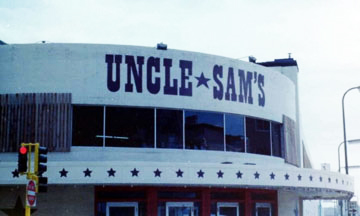
One good hint of when Disco came to Uncle Sam’s is Jon Bream’s article, “DISCOS: ‘Dancing Madness’ – It Goes Bump in the Nightlife,” published in two parts in the Minneapolis Star on October 13, 1976.
On October 13, 1976, Bream wrote an analysis and history of the music. He wrote that the phenomenon started on the east coast two years earlier, had finally made it to the Twin Cities, and that over a dozen full-time discos were prospering locally. He traced the first disco music to the summer of 1974.
CR also cites 1974 as the advent of the “first big wave of disco hits,” with songs such as:
- “Kung Fu Fighting” by Carl Douglas
- “Don’t Rock the Boat” by the Hues Corporation
- “Waterloo,” by ABBA
- “Rock Your Baby” by George McCrae
- “Never Can Say Goodbye,” by Gloria Gaynor
On October 14, 1976, Bream profiled 11 full-time local discos, including Uncle Sam’s:
Admission: $1 Drinks: About $1
Uncle Sam’s is a sensory experience. Patrons are blitzed by thunderous music, slide shows, films, a revolving, mirrored ball, a panoply of blinking lights, colored lights shining underneath an elevated, translucent dance floor and a drummer who plays along with the music.
Uncle Sam’s downtown’s biggest bar, is easily the largest disco in town. It’s where the action is for the white, under-25, blue-jean crowd. The huge place, which is a converted bus depot, is usually packed on weekends. People come to dance, play in the game-room (Foosball, pinball and pool are available), drink or talk in the plexiglass-enclosed, almost soundproof balcony.
Uncle Sam’s musical selection seems more dance-oriented than disco-chart oriented. Included are top 40 disco hits by such performers as K.C. and the Sunshine Band and Silver Convention as well as rock classics by the likes of Led Zeppelin and Aerosmith.
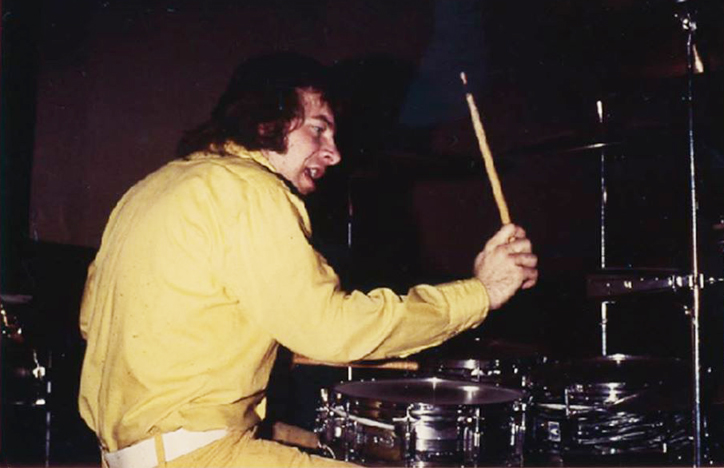
On September 1, 1976, the drinking age in Minnesota was raised from 18 to 19, with previously enfranchised 18-year-olds grandfathered in.
October 10, 1976: Berlin and Raggs
October 24, 1976: Visage
October 25, 1976: Jesse Brady
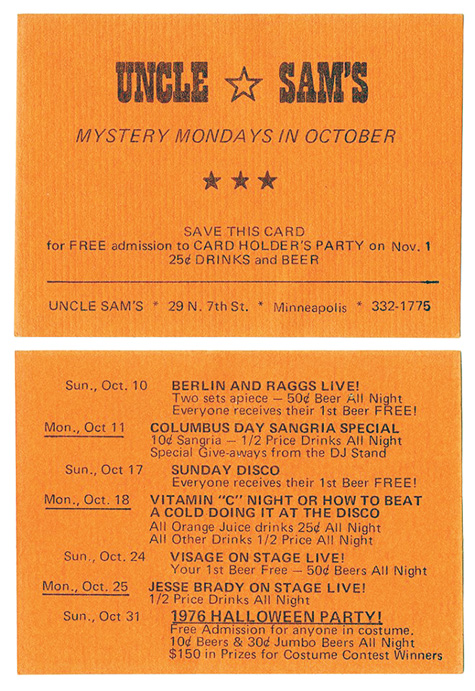
November 1, 1976: Dwight Twilley Band, opened by The Boys and the Suicide Commandos.
November 7, 1976: Archangel
On November 23, 1976, Brian Auger and Oblivion Express made a repeat performance, opened by Lamont Cranston.
A review by Harvey Ginsberg (December 3, 1976) complained that Lamont Cranston’s opening set was “overextended” and that Auger was delayed by an hour due to sound difficulties: “both the beer and music were becoming flat and the pack’em-to-the rafters policy of the club was causing more aggravation than excitement.” But when things were straightened out, the band gave out with a 90-minute set starting with “Brain Damage,” that those kids are probably feeling today. Or at least eardrum damage. The band included Jack Mills on guitar, Clive Sharmer on bass, Auger on Hammond organ and electric piano, Mike Clark on drums, and Lenox Langton on congas, with Alex Ligertwood on vocals.
November 24, 1976: Judd
November 25, 1976: Cain
In November 1976, Minneapolis police were allowed to moonlight as bouncers at clubs but not at the Flame, Moby Dick’s, or Uncle Sam’s. “They cater to kind of a wild crowd,” the Deputy Police Chief was quoted as saying. (Minneapolis Star, November 29, 1976).
December 5, 1976: Hamilton, Joe Frank, and Dennison. The dangers of naming your band after its members is demonstrated here – what happened to Reynolds? Wikipedia: “The group first hit the charts in 1971 with ‘Don’t Pull Your Love.’ Reynolds left the group in late 1972, and was replaced by keyboardist Alan Dennison, but the band kept the name ‘Hamilton, Joe Frank & Reynolds’ until 1976. This revised line-up performed the group’s biggest hit, 1975’s ‘Fallin’ in Love.’ The headliners played two 45-minute sets, reported the Insider. The show was opened by Stone Ground.
December 26, 1976: W.H.I.M. Winter Warmer, music by Raggs, Wolf Brothers, and Spontaneous Combustion. W.H.I.M. was a telephone service where you could call and find something to do.
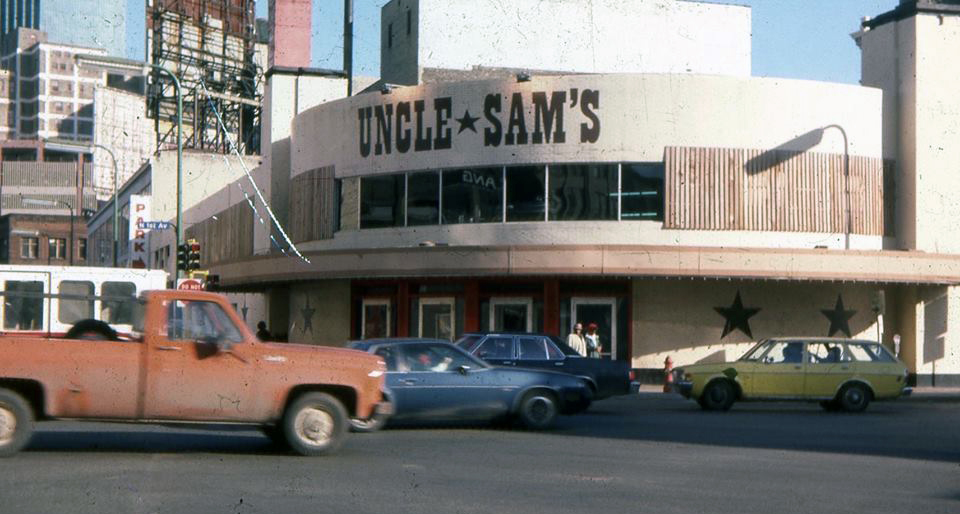
1977
Revolver performed at Uncle Sam’s on January 30, 1977
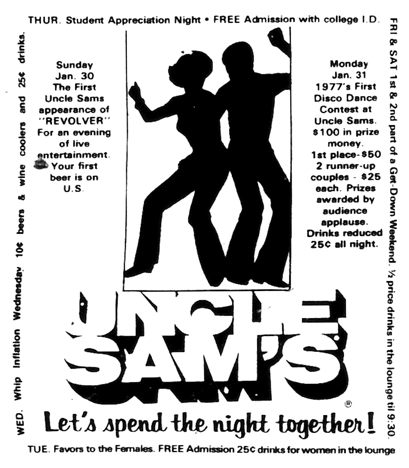
March 28, 1977, featured three bands at Uncle Sam’s: Zachariah, Visage, and the ever-popular Cain.
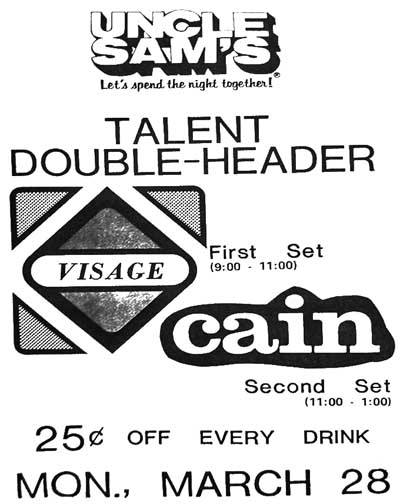
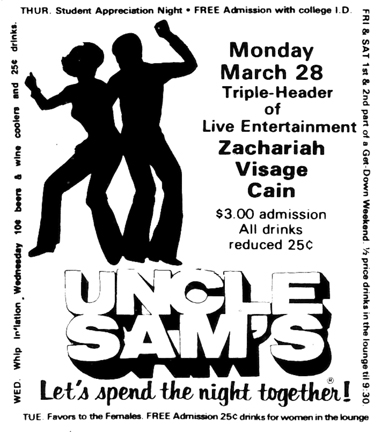
On June 27, 1977, Cain celebrated its release of its second album, Stinger, at Uncle Sam’s.
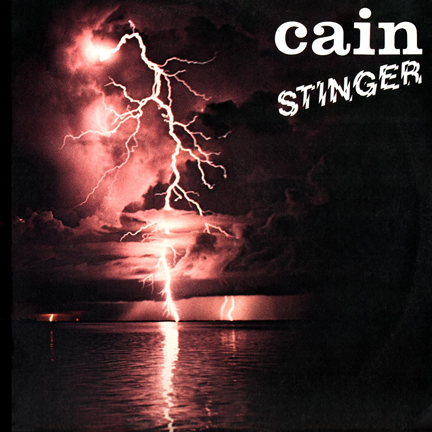
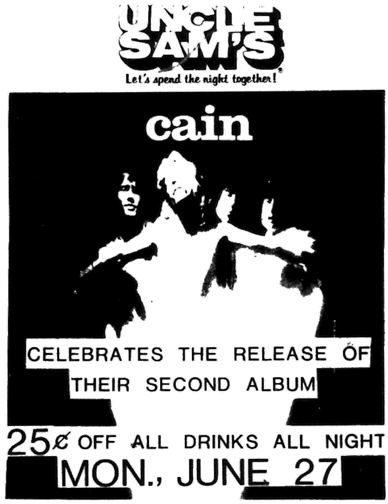
Uncle Sam’s went all out to promote its theme. Corporate in Ohio even sent an Uncle Sam’s costume, which was usually worn by Stan Himes. Here’s Stan in 1977:
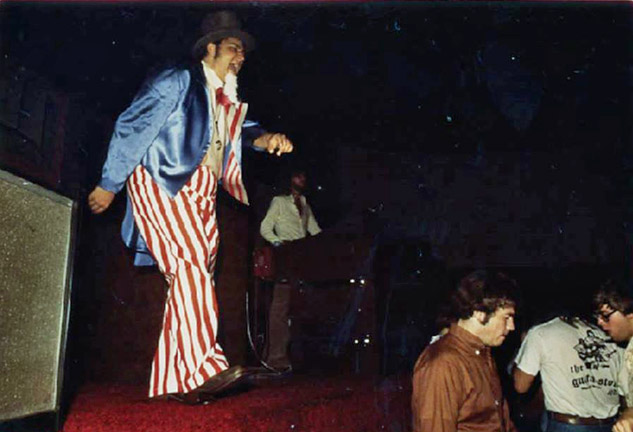
July 25, 1977: Tornader was apparently a group from Spain that specialized in “Jazz-Funk, Soul, Disco” on their 1977 LP “Hit it Again,” according to Discogs. Laura Fissinger of the Insider reviewed the show and was deeply disappointed in Tornader, although apparently not as much as in opener Vissage, which she called “local purveyors of metal ineptitude.” Ouch.
An article about local discos characterized Uncle Sam’s as “the teen-ager’s disco,” with 90 percent carded at the door. It drew 500 people on weekday nights and up to 1,000 on weekend nights. The article reported that 60 percent of the music was rock ‘n’ roll and 40 percent disco, with more slow songs than at most discos. [I remember a tradition of a kiss at the end of every slow song.] (Minneapolis Tribune, November 4, 1977)
November 30, 1977: Judd, from Mankato. Laura Fissinger’s review had a fair amount of criticism of the band and its current LP, but high praise for lead singer Steve McLoone, “who looks more like a state U fraternity boy than the laudable pop singer he is.” Both his stage presence and vocal delivery had “sparkly exuberance,” she noted, and she said that “If this guy doesn’t get a chance to croon over America’s car radios it will really be a shame. His is the perfect pop-rock voice.” (Insider, January/February 1978)
SATURDAY NIGHT FEVER
Disco got a kick in the hot pants with the release of the film “Saturday Night Fever” on December 16, 1977. The movie was originally shown in just a few theaters as shown in the ad below.
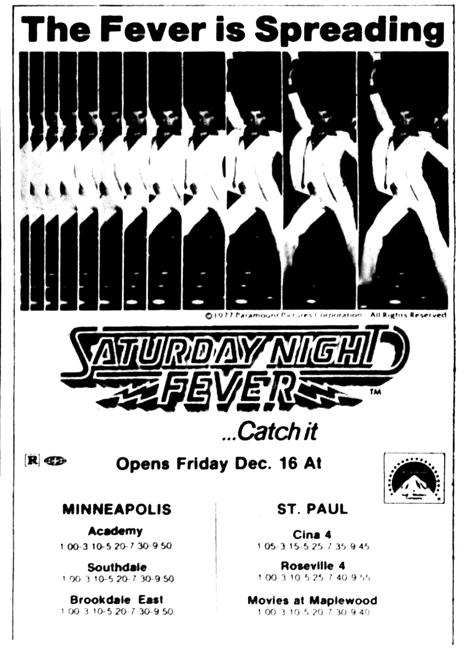
1978
On March 17, 1978, several local night club managers were interviewed in the Minneapolis Star about the impact of the film. Steve McClellan:
Anybody would be crazy to say the movie hasn’t had an effect. Especially the Bee Gees soundtrack. The best way to see what I’m talking about is to come see the excitement when we put that music on. A thousand people head for the floor.
We ran a “Saturday Night Fever” dance contest last month and all we did was run one ad. Our crowd jumped from the usual 1,200 to 1,600 that one night.
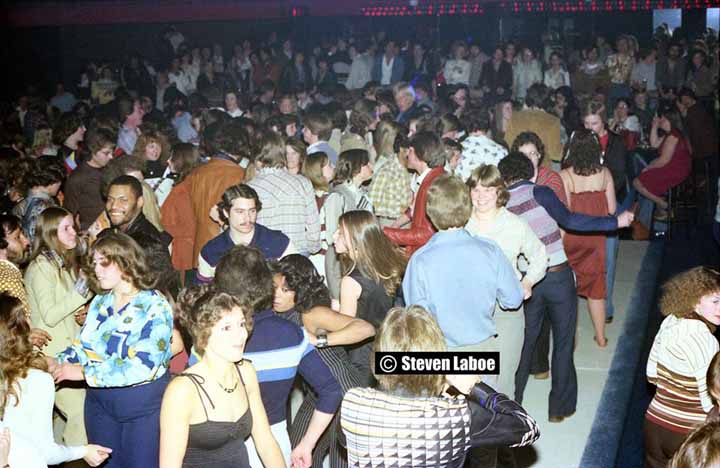
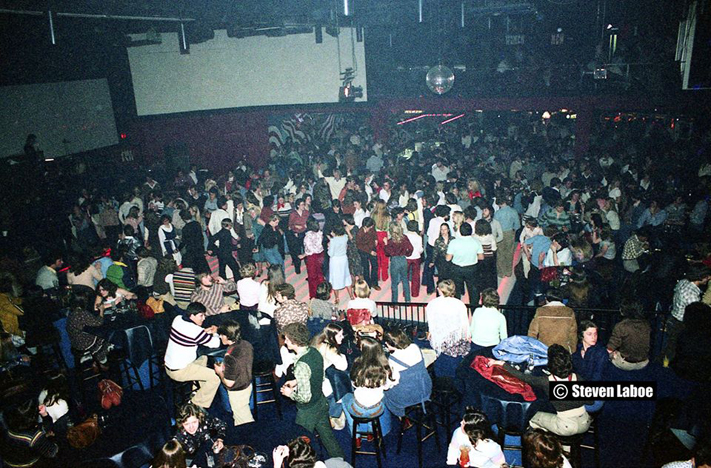
ROCK EXTRAVAGANZA
Thanks to Johnny Rey, who posted this ticket that tells us of this fabulous event starring four ** count ’em ** four bands! For $1!!
- Star-Flight
- Sterling
- Flamingo (Johnny’s band)
- Visage

TEEN SUNDAYS
In June 1978, Karin Winegar wrote a long article about Uncle Sam’s, describing the club’s liquor-free Sunday nights, open only to teens. Admission was $3, and the hours were 7 to midnight during the summer and 6:30 to 11 during the school year. No one over 19 was admitted, “vigorously enforced by manager Steve McClellan, 28, and his muscular doorman, Richard Lukas, 24.” (Minneapolis Star, June 26, 1978)
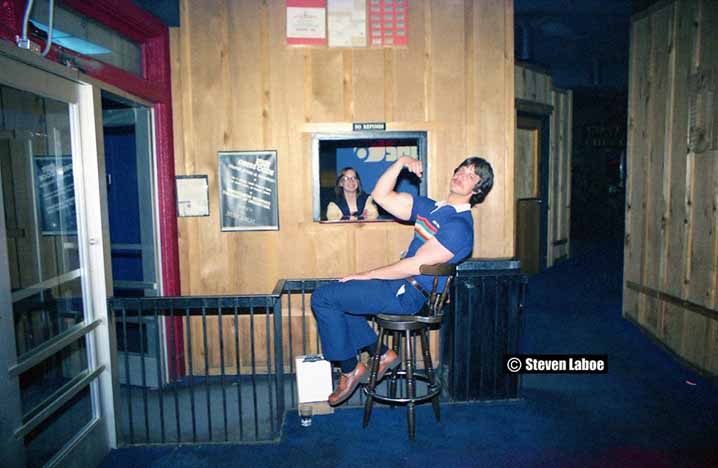
When teen night was initiated the year before it was met with nervousness by the City Council and the police, but during the first three summer months, attendance grew from 300 to 1,200. School administrators disapproved, “but Sundays we have a full house, anyway, and there’s more energy here on this night than on the rest of the week put together,” said McClellan.
Bouncer Luka touted the over-19 ban as protective: “Older guys who think it’s easy pickin’s with young girls, men who want to push kids around or sell drugs are just eliminated at the door.” He and McClellan, along with undercover floor staff, remained alert for kids with smuggled booze or marijuana, or “attempts by ‘Hennepin Avenue punks’ to gain entry.” Kids that smell like liquor or are deemed to be troublemakers are ejected.
While there are a few kids in the grade school age levels, most of the clientele were in high school. Fashion mattered, as they modeled their “jeans, espadrilles, and gypsy frocks.”
And one nice tradition prevailed, as it was reported that the “boys still ask the girls to dance most of the time.”
Longtime DJ Kevin Cole was hired in the Fall of 1978. Cole didn’t play exactly the kind of music prescribed by American Avents, which was checking up on its clubs by requiring them to submit tapes of its programs, so Kevin submitted fake tapes. (30th)
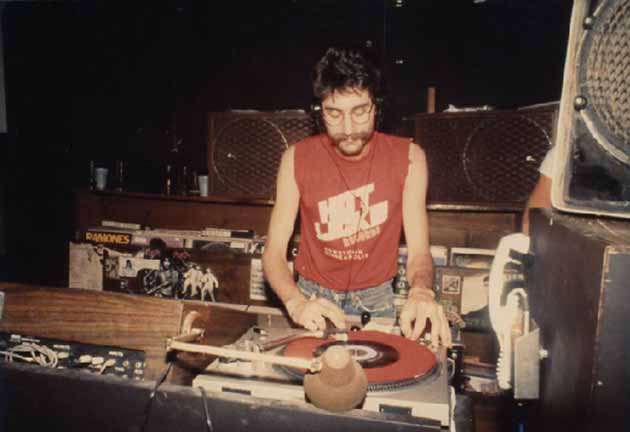
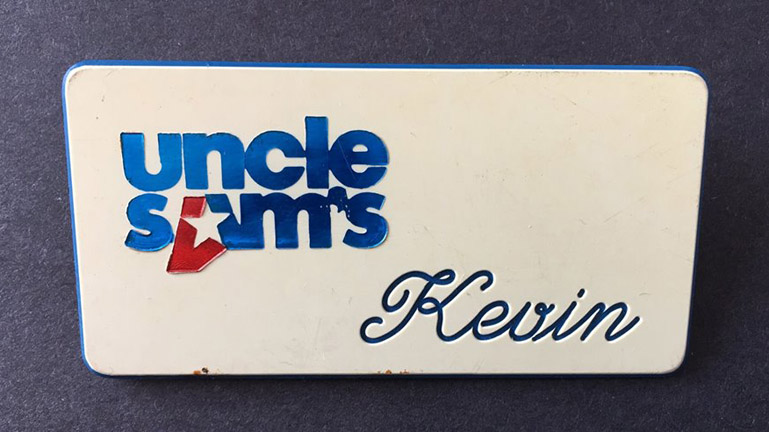
Here’s another shot of the DJ’s lair:
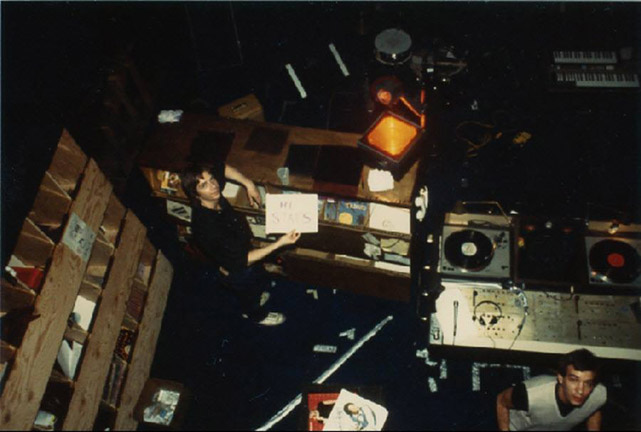
MIND AND MATTER
A group called Mind and Matter performed at Uncle Sam’s in about October 1978. Members of the group include Turhan Bey (not the movie star from the ’40s) and Ira “Smitty” Smith. A 19-year-old Jimmy Jam was in the band. The performance was taped and shown on the first episode of a KSTP program called “Steamroller,” hosted by Marc Goldstein and Molly Lynch. The episode was aired on December 22, 1978, and can be seen Here. Thank you to show producer Ossian Or for the information on the show! I found a few other performances of Mind and Matter ranging from 1976 to 1979.
Things were apparently getting weird; in an article about Hennepin Ave., Uncle Sam’s was described as “the kind of place where you might have thought the girl in the giant bunny ears was strange until you realized that she was dancing with a guy in a diaper.” It was Halloween, after all! (Minneapolis Star, October 30, 1978)
November 20, 1978: Jesse Brady
Steve McClellan remembered booking Nick Glider and Starbuck in 1978, but nothing came up in the Strib database. (Matos)
1979
In about 1979 the Uncle Sam’s logo was changed to incorporate a star where the A had been.
Matchbox images below courtesy Kevin Cole.
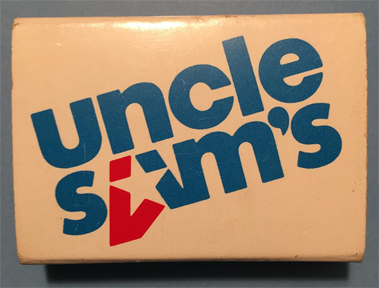
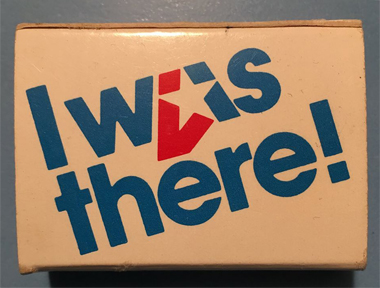
FIRECRACKERS
Firecrackers were the signature drink at Uncle Sam’s – I was too busy dancing to drink one. The clear ones are what I remember – the red ones are with the redesigned “A.”
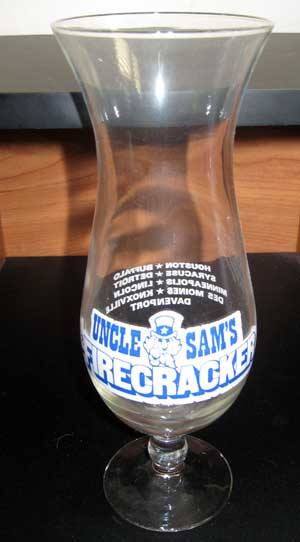
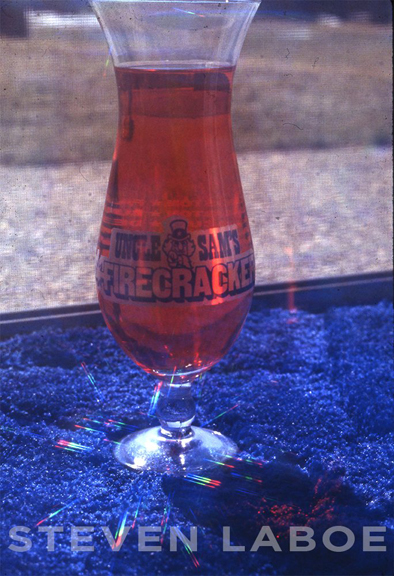
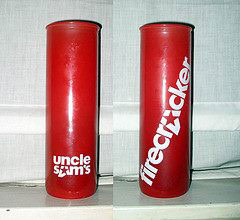
On March 17, 1979, DJ Kevin Cole refused to beat a tambourine and blow a whistle while he spun records, so he was fired. He was replaced by Roy Freedom (nee Freid), from the Rickshaw Room at Howard Wong’s on 494. Freedom immediately hired Cole as his backup. (30th)
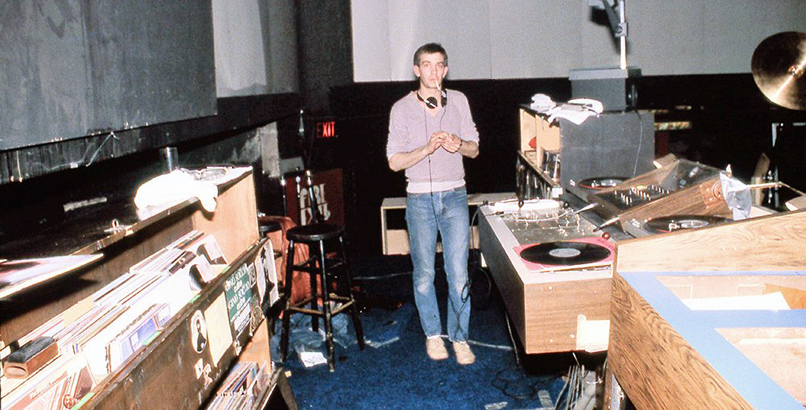
These were the days when the DJ booth was front and center on the stage.
April 14, 1979: The Easter Hop was a big enough affair to merit these cool invitations!
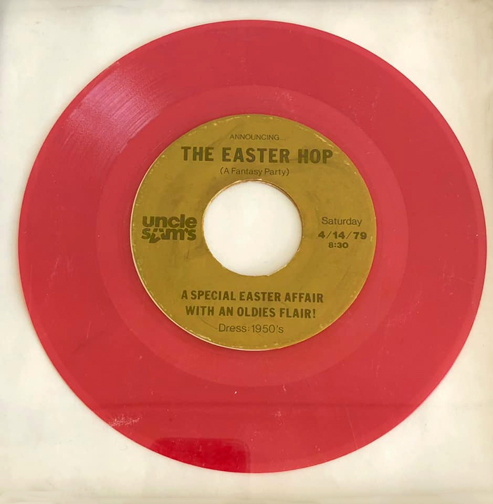
Steve McClellan was quoted as saying that when “Saturday Night Fever” first came out, the club saw 6,000 people per week. Currently the count was about 4,500 to 5,000 per week. (Minneapolis Tribune, July 28, 1979)
DISCO SUCKS
Uncle Sam’s ran an ad in the August 1979 edition of Sweet Potato (the precursor to City Pages) announcing a series of Wednesday night concerts. The ad also said, “We’ve thrown out the Disco, the Dress Code, the regular drink prices and we’ve opened the doors. An Apple Production with you in mind.”
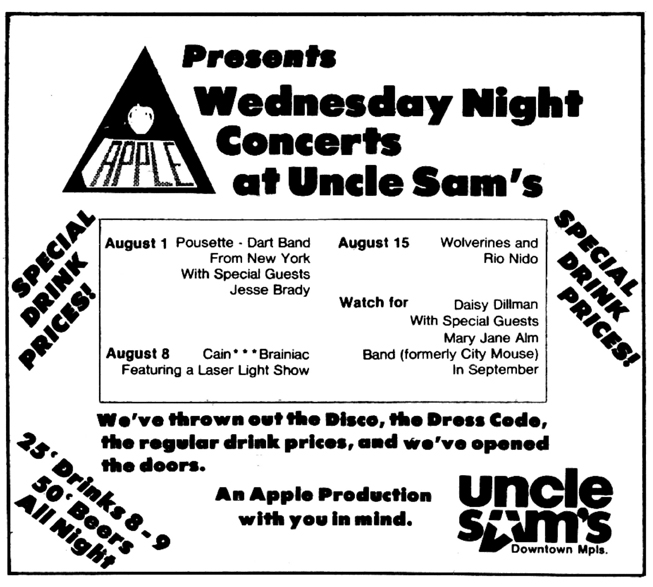
August 1, 1979: Pousette-Dart Band from New York, with Jesse Brady
August 8, 1979: Cain and Brainiac, Featuring a Laser Light Show
August 15, 1979: Wolverines Classic Jazz Orchestra
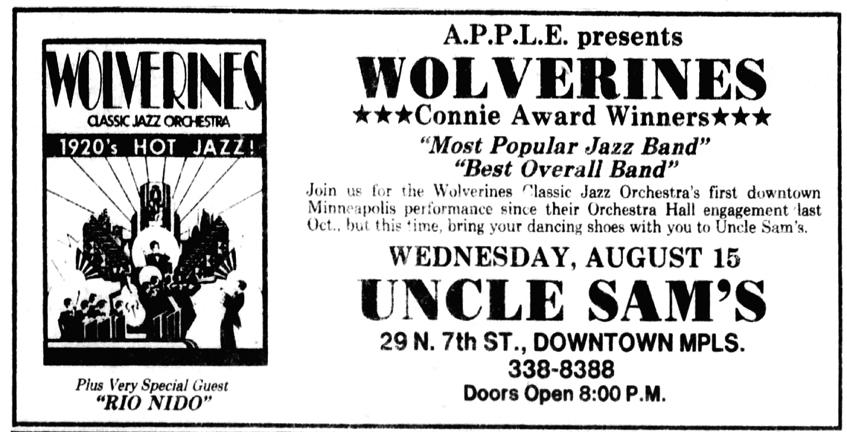
September 5, 1979: Daisy Dillman with the Mary Jane Alm Band (formerly City Mouse)
September 12, 1979: Jesse Brady with Fairchild
September 19, 1979: Daisy Dillman with Special Blend
September 26, 1979: Mission Mountain Wood Band, and introducing Tune
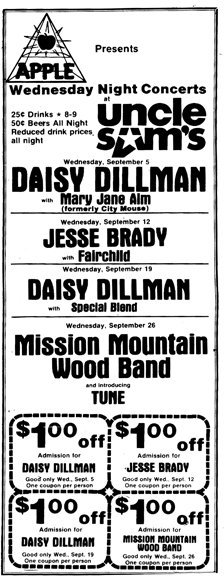
October 3, 1979: Pistons, with Fusef
October 31, 1979: Daisy Dillman
November 26, 1979: KMOJ and KFAI held a benefit to “cure the winter blahs” and raise money for the two non-profit radio stations. Performers were Willie and the Bees, Vicky Mountain, and the John Einweck Band.
November 27, 1979: Daisy Dillman with Caribou
THE DAY DISCO DIED
November 28, 1979 was the first of three times the Ramones came to the venue before it became First Avenue, although it was not the band’s first appearance in Minneapolis. Jon Bream found the first 30 minutes fun, but after that the show got boring. (Review December 4, 1979). The Hypsterz opened the show.
Although it wasn’t a planned or cut-and-dried transformation, Chris Riemenschneider pinpointed this night as the one that began the end of Disco’s hold on Uncle Sam’s (Star Tribune, October 28, 2017):
[A] pivotal turning point came Nov. 28, 1979, when four black-leathered punk rockers from Queens broke through the flashy red-white-and-blue Uncle Sam’s sheen and destroyed the disco era at the club.
. . .
Longtime house DJ Kevin Cole also considers the Ramones gig the big-bang moment for the club’s post-disco existence. “It meant a lot,” recalled Cole, one of the hip record-store clerks helping McClellan steer the club into its new incarnation. “To have them in our venue was remarkable, and it sold out! We were onto something.”
PAT BENATAR
November 29, 1979: Pat Benatar, opened by Curtiss A
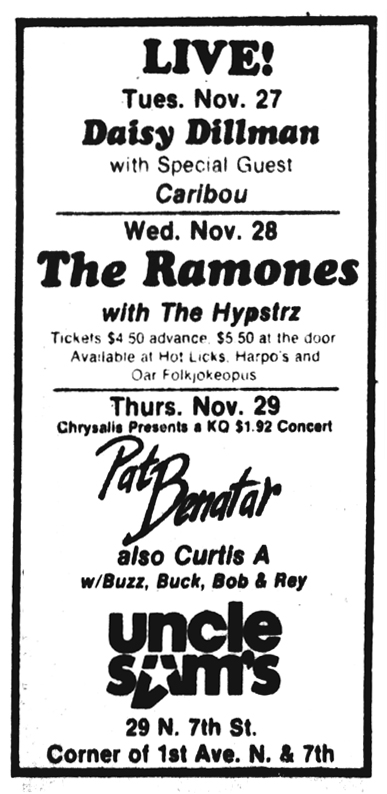
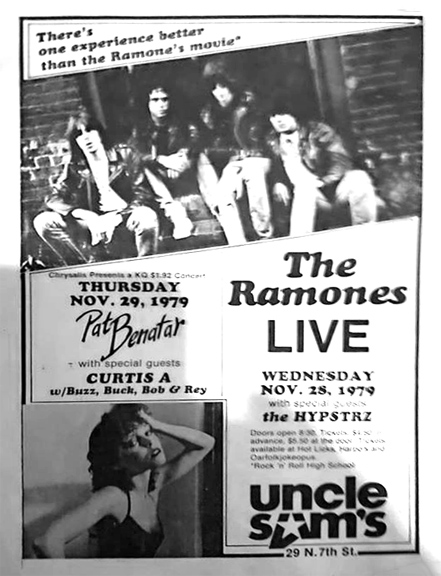
From John Kass:
Uncle Sam’s corporate had a fanzine-style monthly newsletter with club sales tips and suggestions that was distributed to all locations around the country, directed at club managers. This issue praises the Minneapolis branch for ticket sales at the Ramones and Pat Benatar shows, and for the “Rock Revival Weekend”- it’s a “good idea.”
The issue below was from just before “the company was dumping the Minneapolis Franchise,” in the words of Steve McClellan.
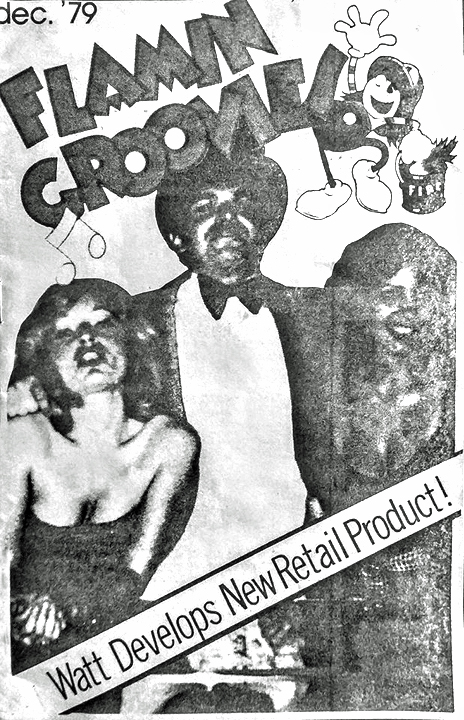
Disc Jockeys Roy Freedom and Kevin Cole were encouraging the transition to what was then being called “New Wave” music, as evidenced by these special shows they hosted on November 30 and December 1, 1979.

December 1979: Tuesdays were Ladies Nights, with fashion shows and male dancers.
December 5, 1979: Whiskey River with the North Country Band
December 26, 1979: Whiskey River with Daisy Dillman
EXIT AMERICAN AVENTS, ENTER 2M
It is unclear when American Avents (the original American Scene, then American Events) and The Committee officially terminated the Entertainment Franchise Agreement under which they operated, although it is estimated to be the end of 1979. The reasons for the retreat of American Avents have variously been explained as:
- American Avents was going into debt, and decided to drop several of its clubs, including Minneapolis, at the end of the year; (30th)
- Disco was dying, Uncle Sam’s was getting sleazy, and it had a reputation of attracting minors; Allan asked American Avents to leave; (CRM)
- American Avents wanted to focus on more upscale venues, and lost interest in its more blue-collar clubs (SM).
The exit of American Avents meant that management of the club reverted back to the Committee, whose sole shareholder was Allan. Steve McClellan and Jack Meyers formed a corporation and signed a contract with (Allan/the Committee – at this point they were the same) to manage the club. (More details about 2M Inc. are in Section IV.) Steve was the General Manager with all the responsibilities and freedom to make decisions.
1980
January 2, 1980: Yipes! with Curtiss A and Smart Alex
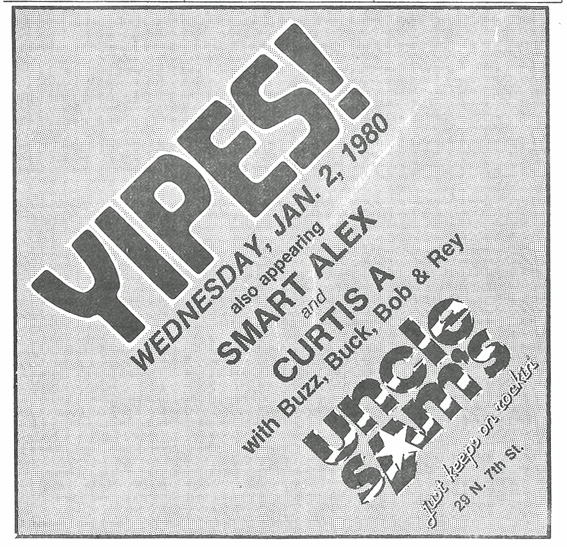
January 9, 1980: Bad Boy, with Soda
January 16, 1980: Sussman Lawrence, with the Tropics
January 23, 1980: Dare Force, with Jiggs Lee and Fragile, and Dame
January 30: Johnny Holm, with Gadband and Home Free
February 6, 1980: Tommy James Postponed to May 29, 1980
Mid-March, 1980: Mud Wrestling came to Uncle Sam’s
March 19, 1980: Gang War included Johnny Thunders of the New York Dolls and Wayne Kramer of the MC5. Gang War would return in October.
DANCE FEVER
At some point in 1980, Deney Terrio and Janet Jones from the TV show “Dance Fever” came to Uncle Sam’s to recruit dancers for the show. Janet was a member of “Motion,” Terrio’s backup dancers on the show. There was a contest at the club, and if memories are correct, some couples did go on to Hollywood to audition and perhaps perform on the show. An exact date is not available, but Steve Laboe took some shots of the action.
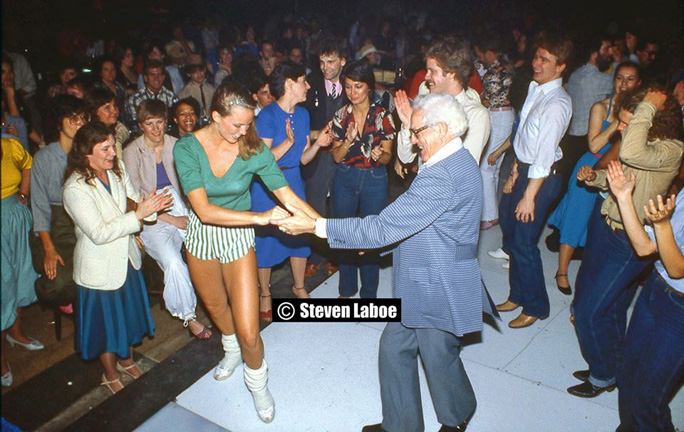
Jones went on to star in “Grease II,” “The Beastmaster,” and “Police Academy 5.”
The photo below shows the winning contestants. The last three people on the right are Deney Terrio, Janet Jones, and presumably some Class C Celebrity judge.
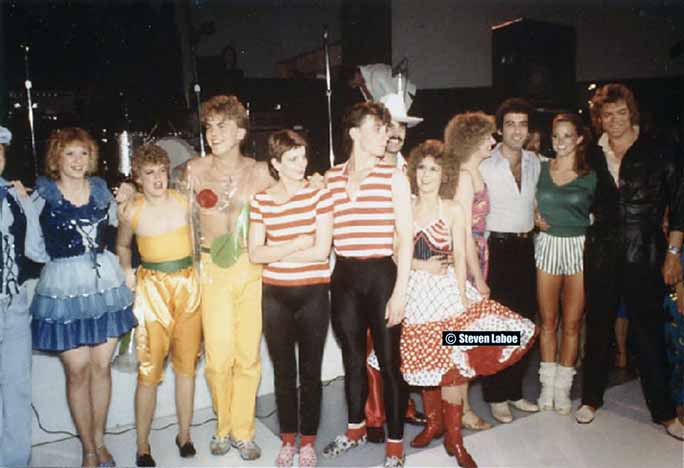
7th STREET ENTRY
On March 21, 1980, club manager Steve McClellan started booking live acts in a smaller part of the building that used to be the bus station’s restaurant and Uncle Sam’s game room and then checkroom.
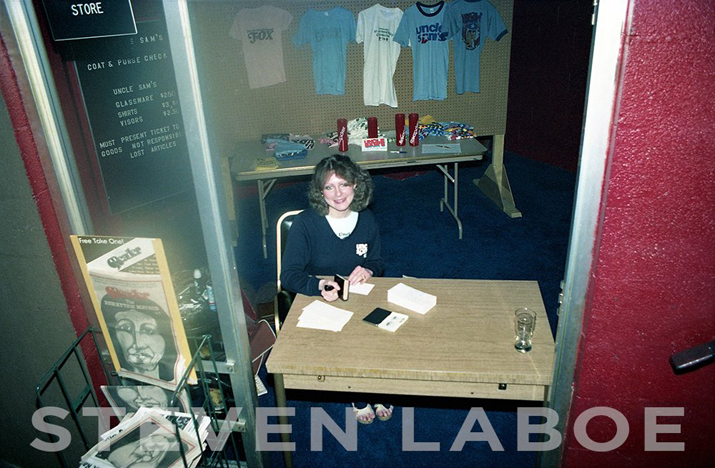
There was a soft opening when Gang War played the Entry the night after they played the Mainroom, with Husker Du opening. (30th)
The first official act in the new room was Curtiss A, opened by Wilma and the Wilburs. Shows at the Entry are not listed on this site. (30th)
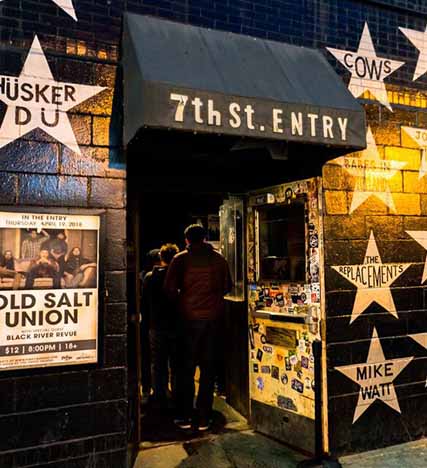
SAM’S: 1980 – 1981
One of the first things that the new management did was change the club’s name from Uncle Sam’s to Sam’s. I didn’t find a formal notice of the name change in the paper, but based on ads, it appears to have happened between April 18 and May 4, 1980.
The change to Sam’s was accompanied by the redecoration of the club in Early Punk Black. The neon dance floor and light wall was torn up, and some of the neon was hung in the ceiling. Steve McClellan said, “Jack Meyers did a FANTASTIC job converting what most clubs would have tossed into the dumpster – but instead turned into usable ‘new’ features.” The neon stayed there until about 1983.
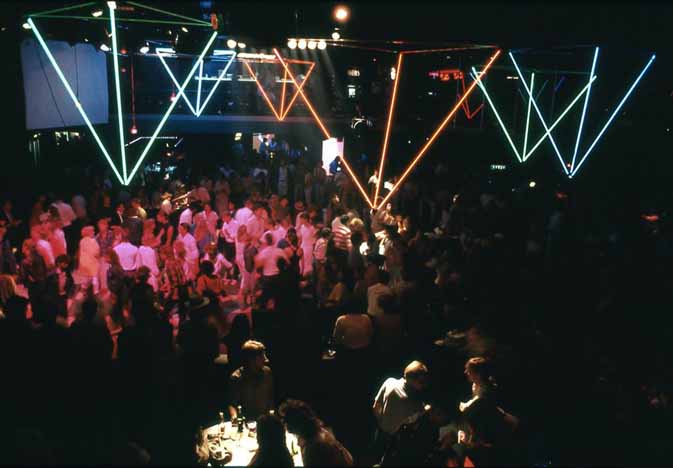
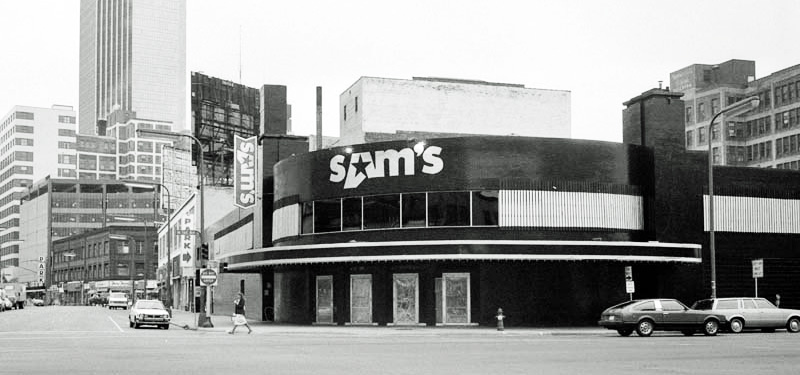
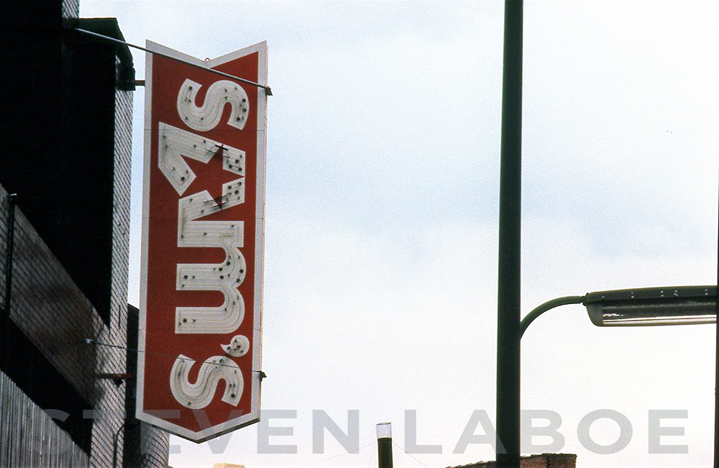
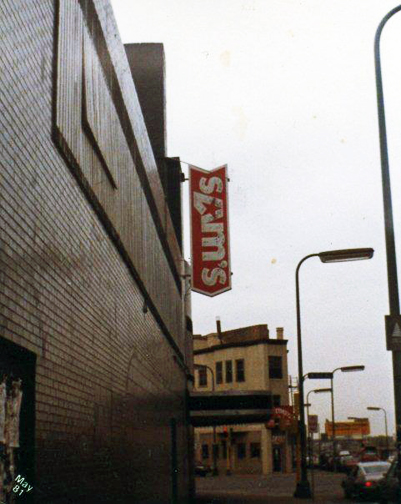
There was also a Drop Disco weekend, with only 274 people in attendance on the first Saturday. (30th). I haven’t found a date for this event.
Once the 7th Street Entry opened, determining which shows were in the Mainroom and which were in the Entry on various calendars is not necessarily easy. This is my best shot at Mainroom shows:
The first show at Sam’s was the return of the Ramones on May 11, 1980, possibly opened by Wilma and the Wilburs and the Overtones. (Jon Bream, Minneapolis Star, May 9, 1980)
April 16 and 18, 1980: Bo Diddley, accompanied by Curtiss A
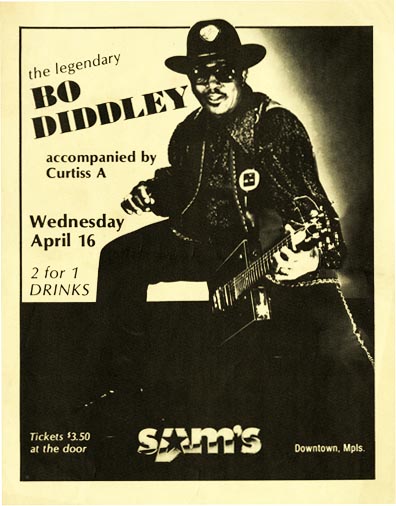
April 23, 1980: Pretenders, with Curtiss A
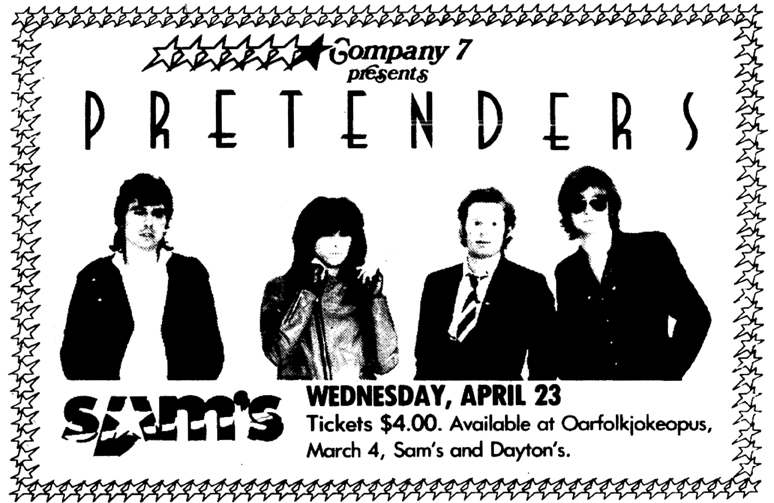
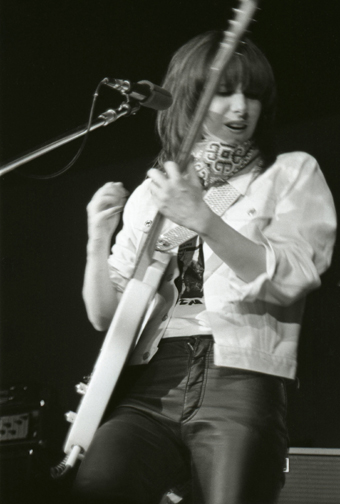
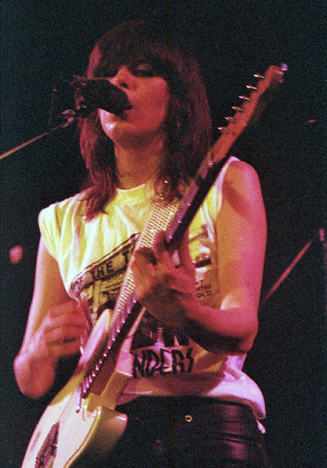
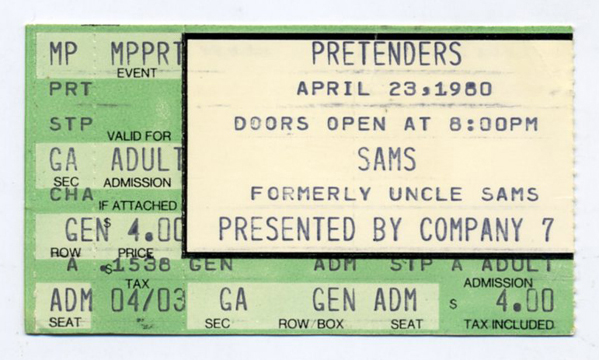
[April 24, 1980: Joe Perry Project – CR] Unsure of venue; Sweet Potato says the 27th.
May 11, 1980: The Ramones, with Wilma and the Wilburs, and the Overtones
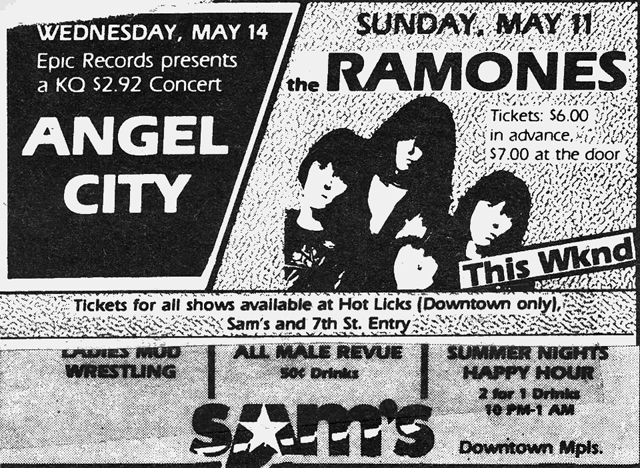
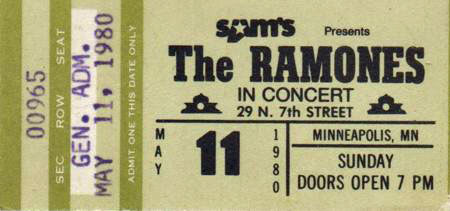
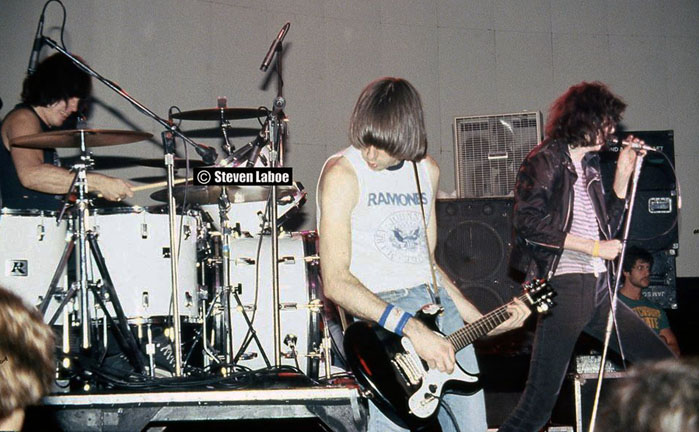
May 13, 1980 (Minneapolis Star): Disco was dying, and clubs were trying new things. Sam’s schedule of events:
- Mondays: Women mud wrestling
- Tuesdays: Male dancers
- Wednesdays: Rock ‘n’ Roll Revival
- Weekends: Two-for-one drinks/Disco
May 14, 1980: Angel City
May 25, 1980: The Romantics
May 28, 1980: Shakers
May 29, 1980: Tommy James
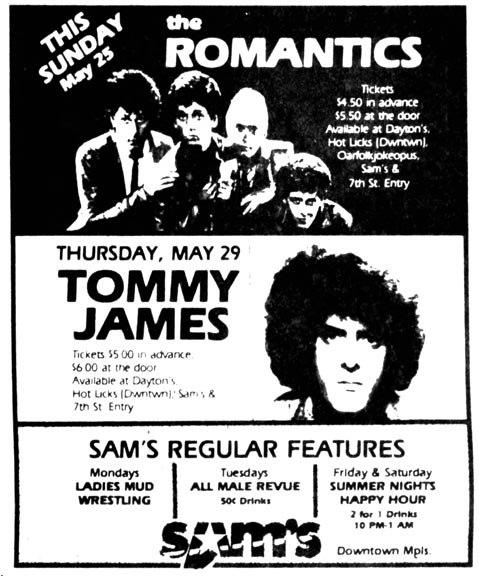
SWIMMING POOL AT A DISCO?
June, 1980: Mud wrestling was out, and Monday pool parties were in. Activities included competitive diving for pennies, water wrestling, bikini dips, and a men’s leg contest. Admission free to those wearing swimsuits. (Star, June 20, 1980) Apparently way more women were in the pool than men.
David Thomas remembers, “One night, one of the male strippers dove in and lost his G string. I was the life guard by the pool, summer splash party.”

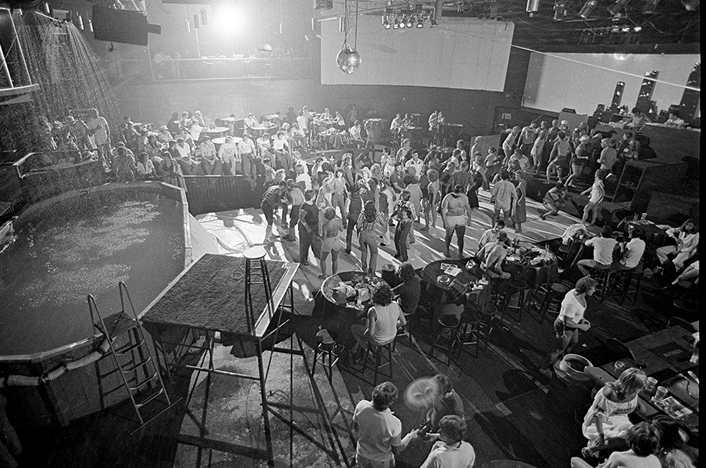

June 4, 1980: Trillion
SAM’S, A DANCETERIA
It was about the summer of 1980 that Steve McClellan attended the first New Music Seminar in New York City. The New Music Seminar website says that “In 1980, more than 200 people gathered at a New York City rehearsal studio to discuss and debate challenges in the music business.” Steve went to one club in particular called a “Danceteria,”at 252 West 37th Street, and was blown away at its size and features. He decided that he wanted to add the name to the Sam’s brand. (SM)
July 3, 1980: Russia, a “cute,” “contrived” band from Seattle that played “calculated rock,” according to Jon Bream.
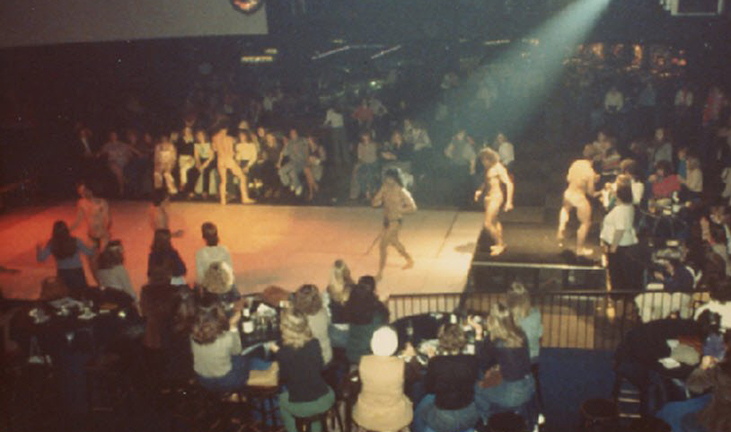
July 9, 1980 brought Bill Bruford, formerly with Yes. Also on the bill were local bands Dame and London. Steve Blexrud, a founding member of London, provided the ad below.
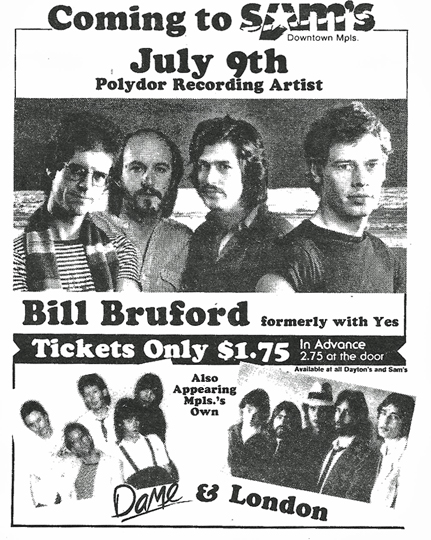
The second coming of Gang War, with Johnny Thunders and Wayne Kramer, took place on July 30, 1980.
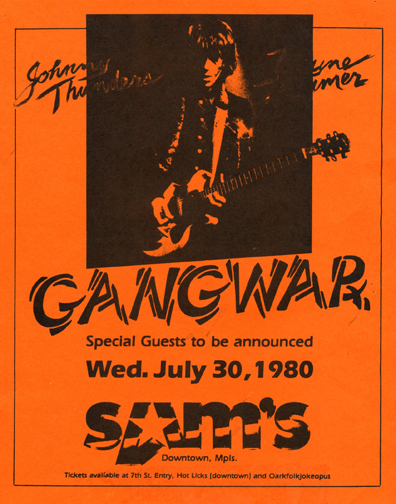
October 16, 1980: John Cougar cancelled (CR)
In a review of rock venues, “the main dance floor at Sam’s is slowly changing from disco to pop-rock, while the side room, Seventh Street Entry, has declared itself new wave territory.” (Minneapolis Star, October 17, 1980)
November 5, 1980: Siouxsie and the Banshees, opened with the Solar Knights
November 9, 1980: The Hypsterz, with Wilma and the Wilburs and the Vendettas
November 13, 1980: Gamma, with Ronnie Montrose (CR)
November 16, 1980: L7-3, Video Show, Neglectors
November 30, 1980: Russ Morgan Orchestra Swing Dance
December 4, 1980: Jim Carroll – “New York poet-turned-rocker,” per Jon Bream
December 14, 1980: Angel City, from Australia
1981
January 22, 1981: Nona Hendryx and her band Zero Cool, opened by Things That Fall Down
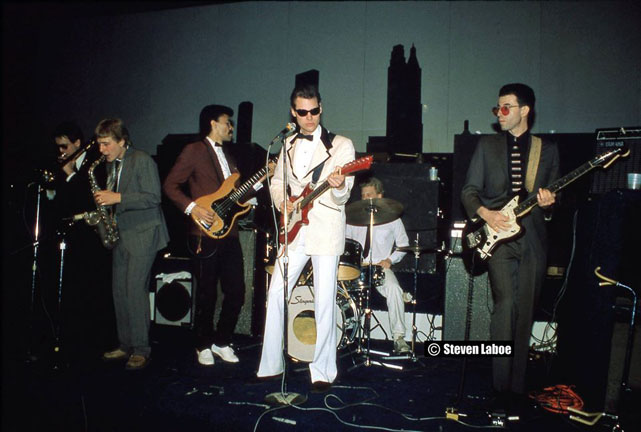
Don Engebretson on trombone; Roger ? on sax; Garrison White; Scott Brooks; Paul ? on drums; David Foley on bass.
January 28, 1981: The Romantics, with Fine Arts and the Phones
February 25, 1981: Lipps, Inc., featuring Steve Greenberg and fabulous lead singer Cynthia Johnson. This was the group’s first official appearance (after a private party). (Jon Bream, Minneapolis Star, February 20, 1981) The photo in the Star showed seven members of the group. Years later, when he was inducted into the Rock/Country Hall of Fame, Greenberg demonstrated how he and Johnson created the song by themselves in the studio.
March 2, 1981: Randy Meisner former bass player for the Eagles, opened by Jimmie Spheeris, “who probably still sings about the hippie ethic,” according to Jon Bream. (Minneapolis Star, February 27, 1981)
March 8, 1981: DNA [Opened by Husker Du]
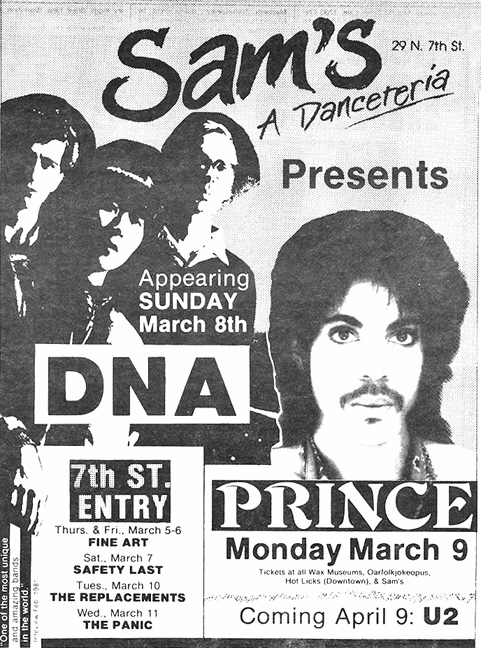
PRINCE’S DEBUT
March 9, 1981: Prince made his first appearance here, when it was still Sam’s. He had already appeared on “Saturday Night Live” and in Rolling Stone and Newsweek magazines. Curtiss A was the opening act.
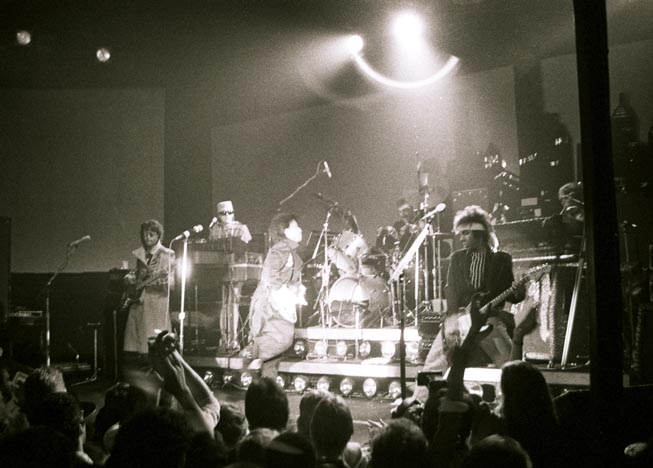
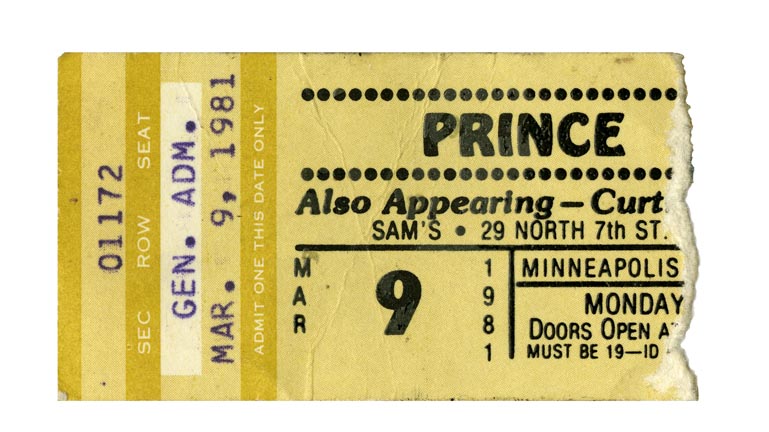
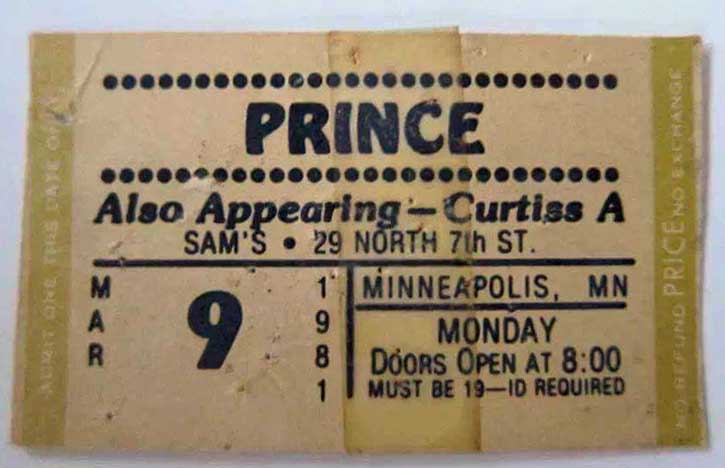
March 18 and 19, 1981: Brian Brain (Martin Atkins)
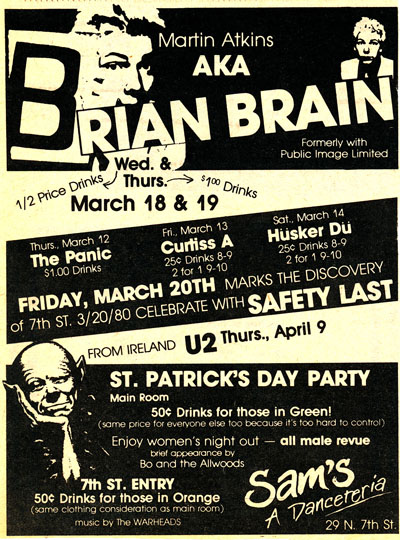
March 24, 1981: The ad below shows Secret Affair (From England) on the list of Mainroom shows.

GREAT PRETENDERS
Steve Dix tells us that The Great Pretenders contest began in April of 1981. Contestants with mocked-up instruments pantomimed songs in costume and the results were sometimes hilarious. “It was originally hosted by Louie Anderson. In the first few months it was totally dead, but picked up steam by the fall.”
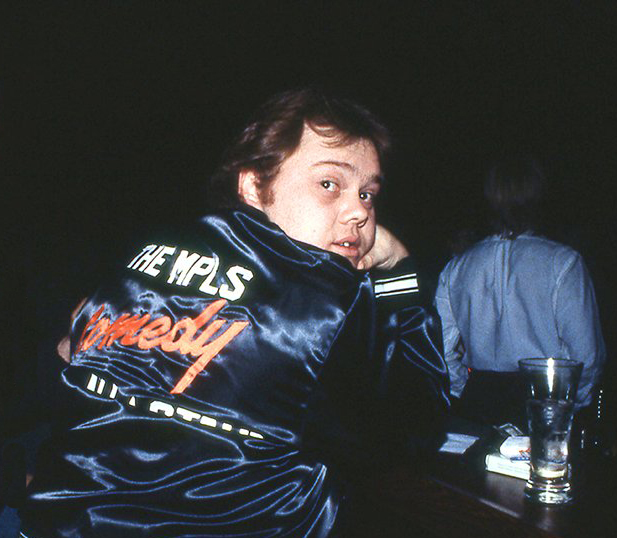
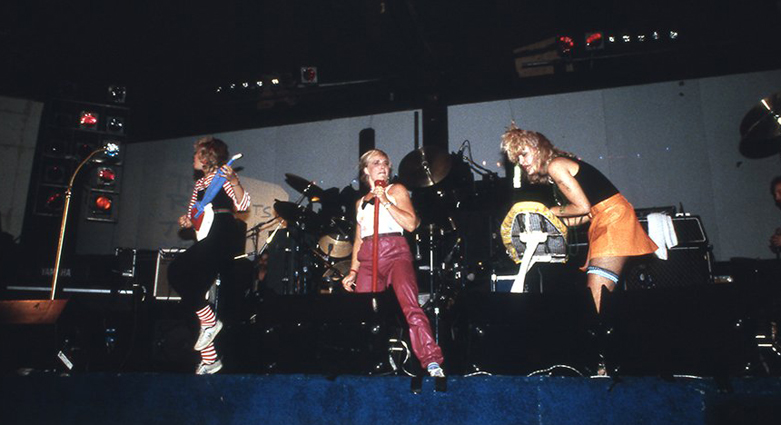
THE YAMMIES
April 6, 1981: The Yammies, which turned into the first year of the Minnesota Music Awards, were held at Sam’s. They were sponsored by Sweet Potato magazine (thus their name), which in the next year turned into the City Pages.
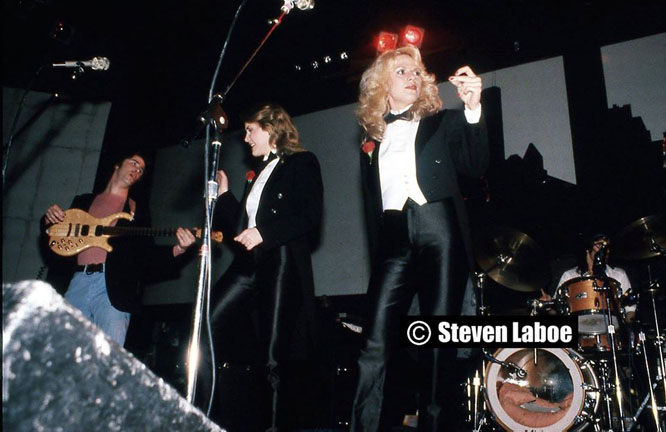
April 9, 1981: U2, described as “a clever, accessible Irish rock group featuring the grandiose vocals of Bono Vox” made its local debut. Opened by The Panic.
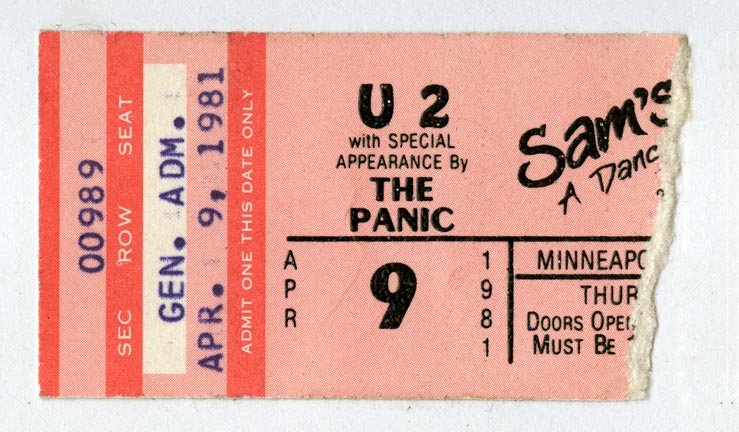
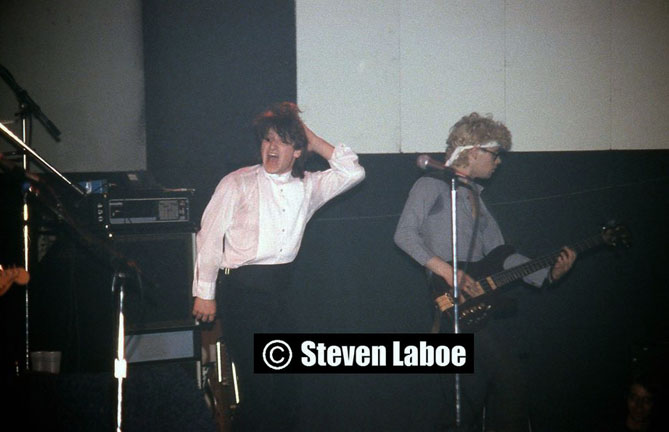

April 13, 1981: Humble Pie. Steve McClellan remembers that the club lost money when only 500-700 people showed up.
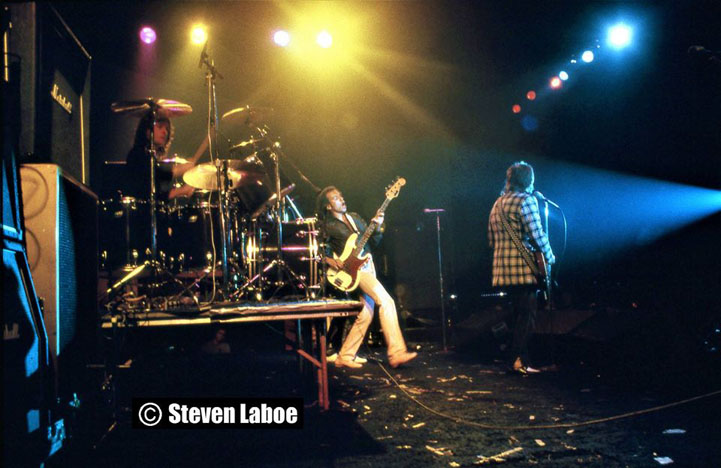
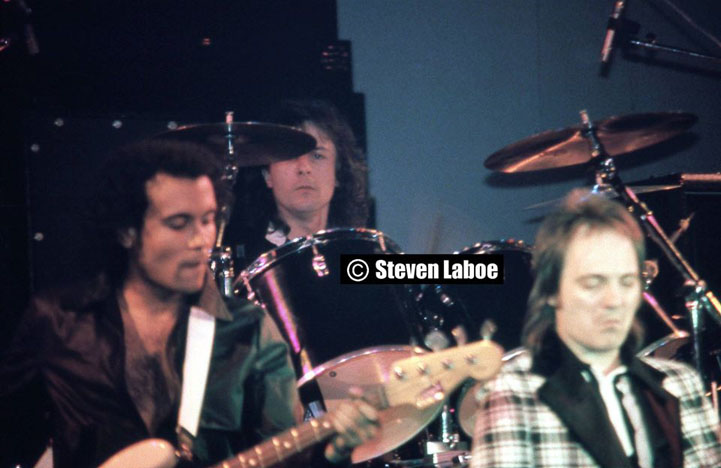
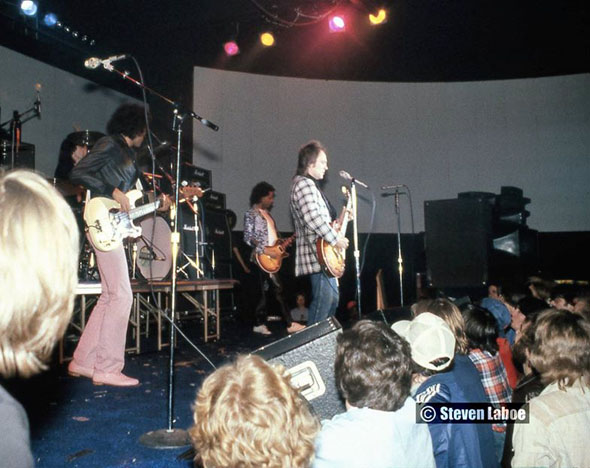
May 4, 1981: Raybeats
May 18, 1981: Robert Gordon with the Phones
May 20, 1981: A big triple bill featuring England’s The Stranglers, with the Hypsterz and the Warheads. Did the singer of the Warheads really throw White Castles at the audience?
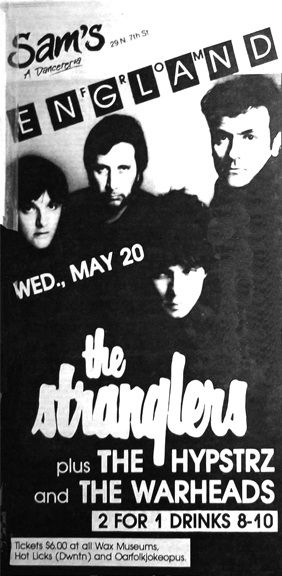
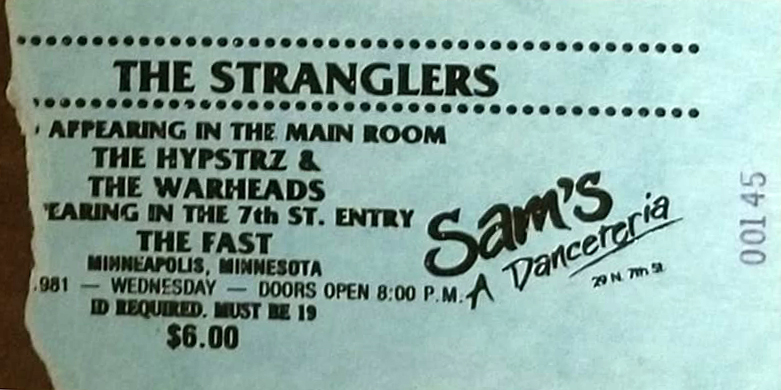
June 1981 promotions included:
- Tuesdays: Ladies Night – All Male Revue
- Wednesdays: Free admission if dressed in a bathing suit
- Thursdays: Air guitar contests – $100 prize
June 8, 1981: Gary U.S. Bonds, opened by Fast Fontaine
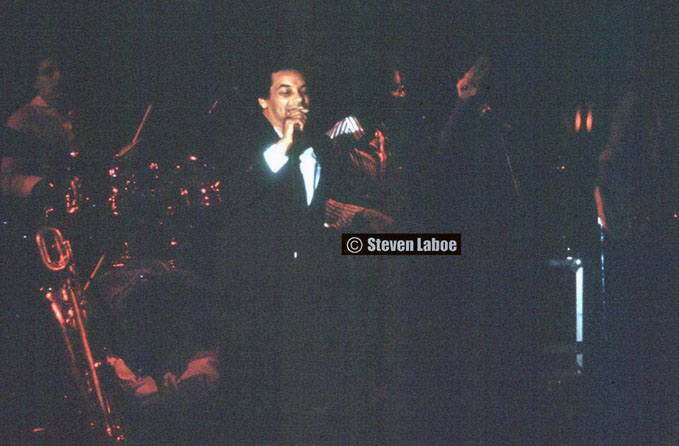
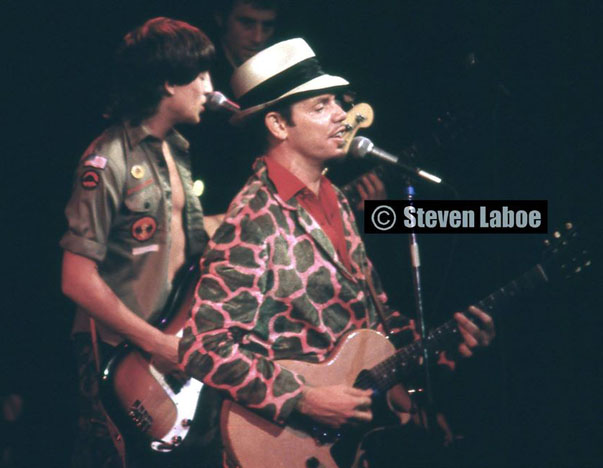
June 15, 1981: The Hypsterz’s final show before they became the Mighty Mofos. Husker Du, Bizarre, Warheads
June 22, 1981: Debut of Johnny Rey and the Reaction. Also on the bill were the Crash Street Kids, The Innocents, and MC Doug Podell from KQRS. This performance is on YouTube!
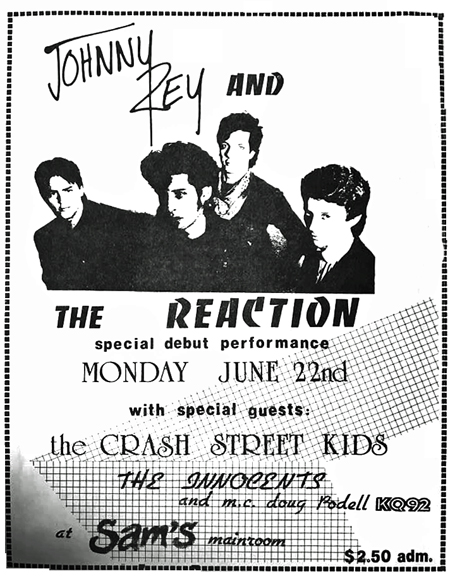
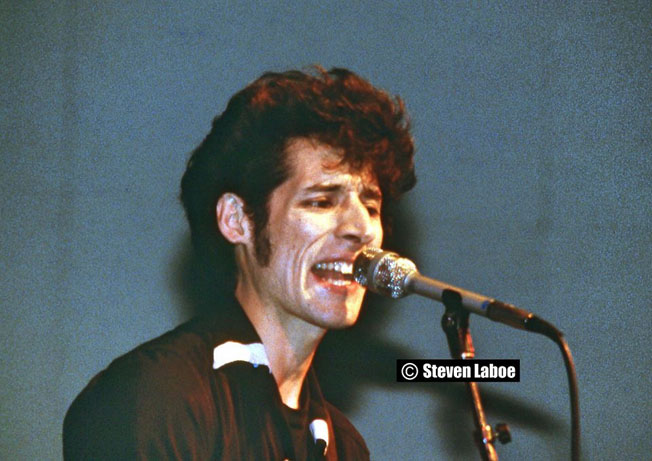
June 25, 1981: Billy Squier, opened by Peer Group
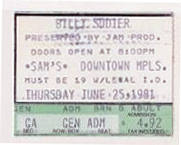
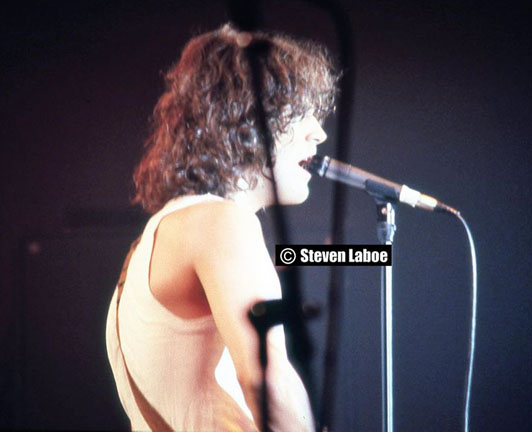
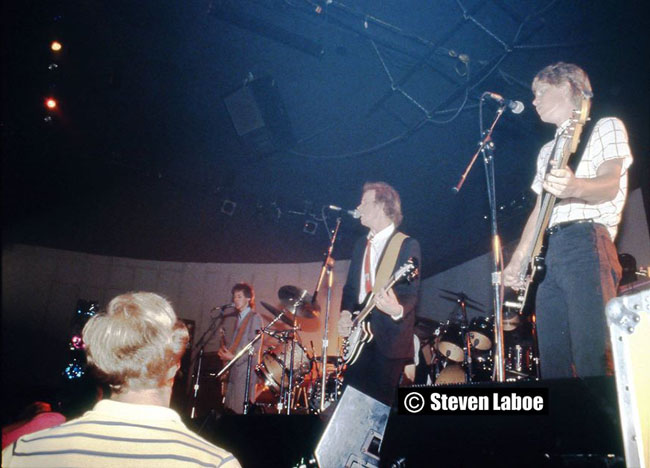
Jim Rheingans, guitar, center stage; Tom Kelly, bass, on right.
July 1, 1981: Aquadance; Cameo with Ben Day Dots
July 2, 1981: Great Pretenders; Cameo with Peer Group
July 3, 1981: Cameo with the Innocents
July 4, 1981: Cameo with the Rems
July 6, 1981: Greg Kihn Band with DDD
July 7, 1981: Ladies Night; Cameo with The Odd
July 8, 1981: Aquadance; Cameo with Enterprize
July 9, 1981: Great Pretenders
July 10, 1981: Cameo with Peer Group
July 11, 1981: Cameo with the Eyeliners
July 13, 1981: The Suburbs
July 14, 1981: Ladies Night; Cameo with Phantasy
July 15, 1981: Aquadance; Cameo with Stagger Lee
July 16, 1981: Great Pretenders; Cameo with Phantasy
July 17, 1981: Cameo with Wilma and the Wilburs
July 18, 1981: Cameo with Mark Throne
July 19, 1981: Psychedelic Furs
July 21, 1981: Ladies Night; Cameo with Mark Throne
July 22, 1981: Aquadance; Cameo with the Units
July 23, 1981: Squeeze, with Peer Group and Agent Orange
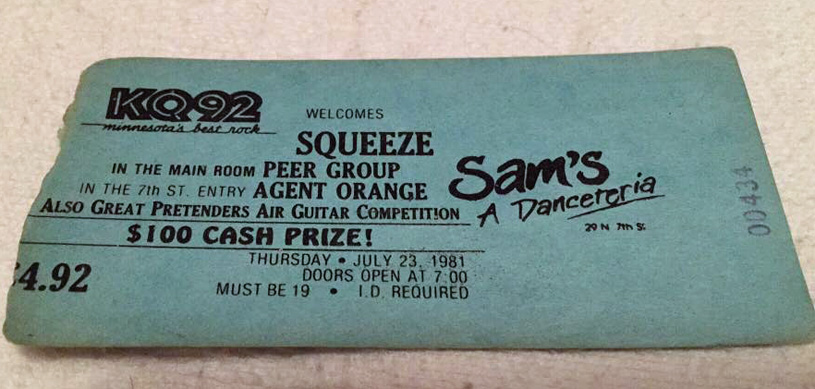
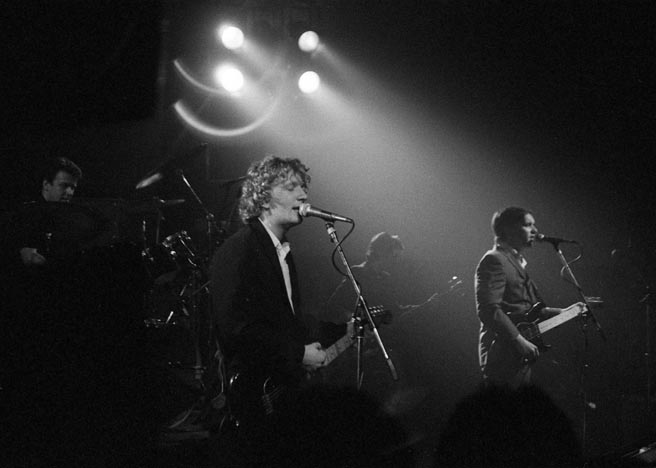
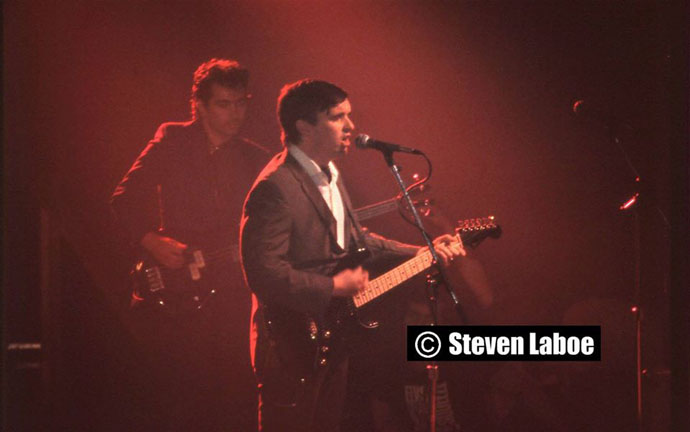
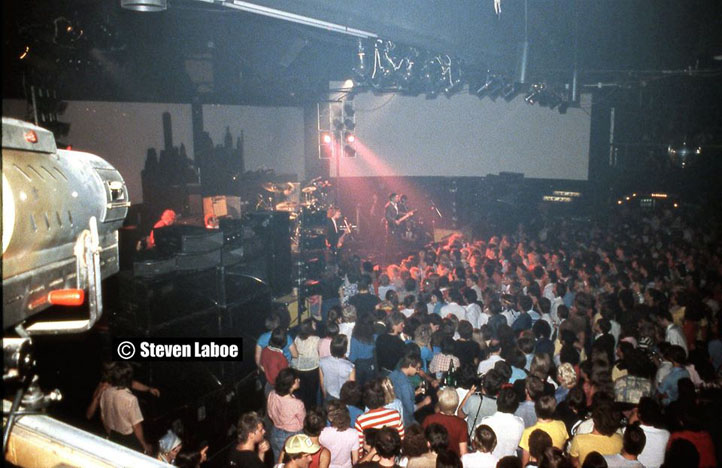
July 24, 1981: Cameo with Fine Art
July 25, 1981: Cameo with Wilma and the Wilburs
July 28, 1981: Ladies Night; Cameo with Fine Art
July 29, 1981: Aquadance; Cameo with the Hypsterz
July 30, 1981: Great Pretenders; Cameo with Agent Orange
July 31, 1981: Cameo with Agent Orange
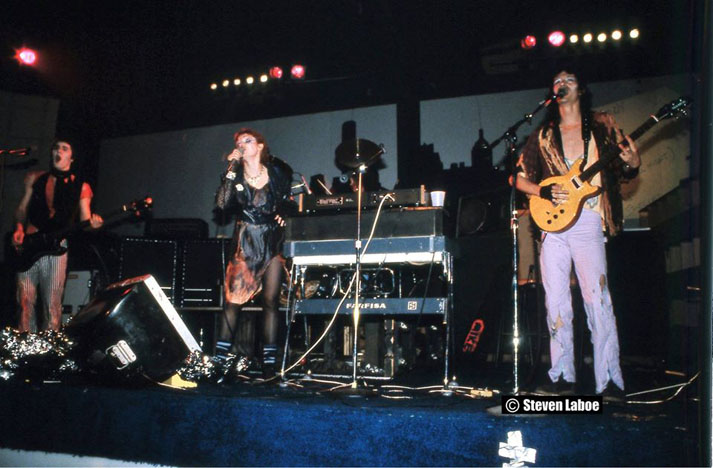
August 26, 1981: Lamont Cranston, with Johnny Rey and the Reaction and L 7-3. Part of second anniversary celebration of Sweet Potato magazine.
September 7, 1981: Fine Art, Situation, Skamets
September 14, 1981: Mixed Metaphor, Tatters Fall Fashion Show
September 21, 1981: Hypsters, Necessaries, Dads
September 28, 1981: This was the third and final appearance of the Ramones before the club became First Avenue.
We’re not entirely sure, but the consensus seems to be that these photos are all of the 1981 show:
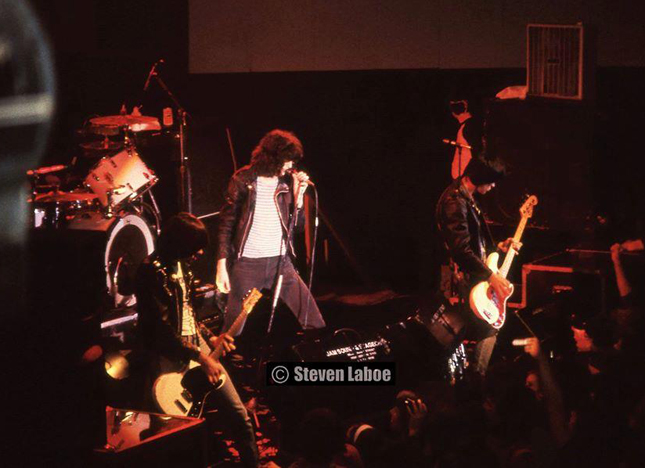
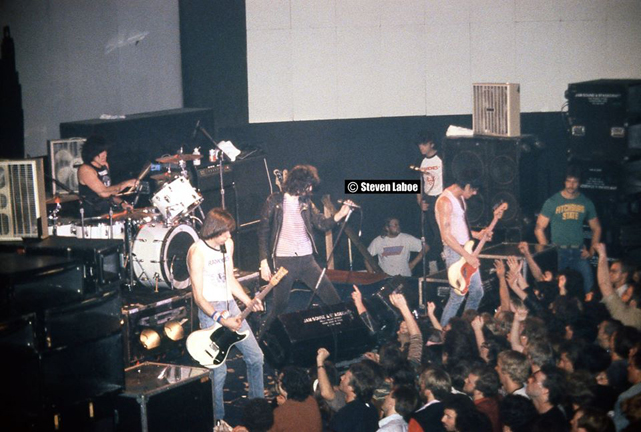
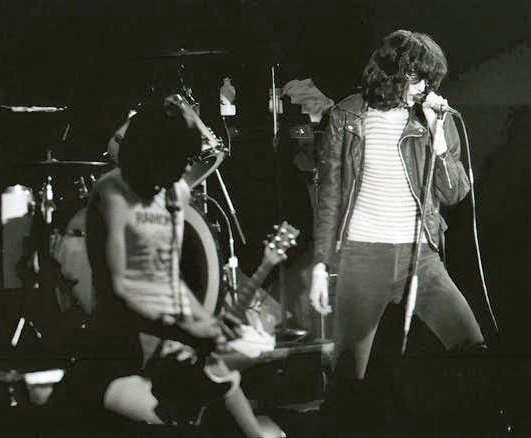
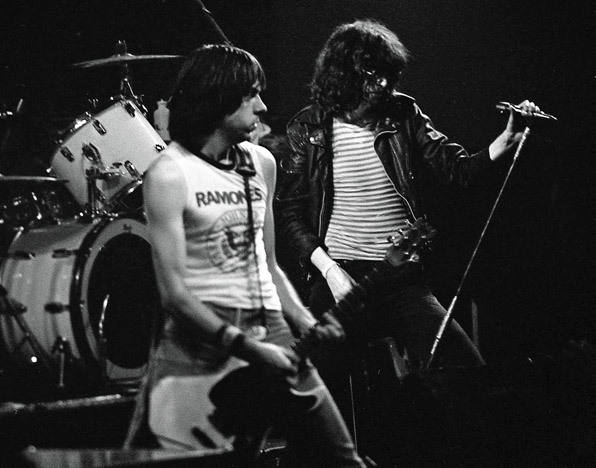
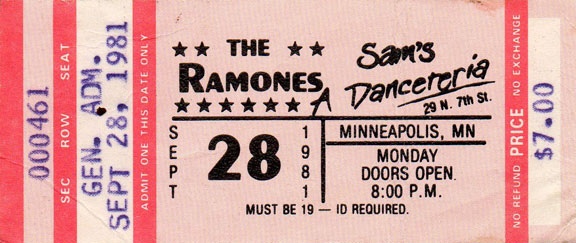
October 5, 1981: Safety Last was scheduled for the Mainroom. In addition to or instead of that group, the audience got a second performance from Prince. Steven Laboe caught this shot:
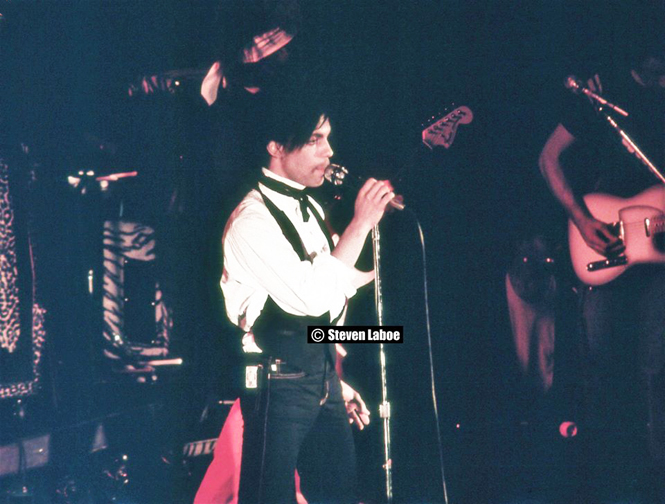
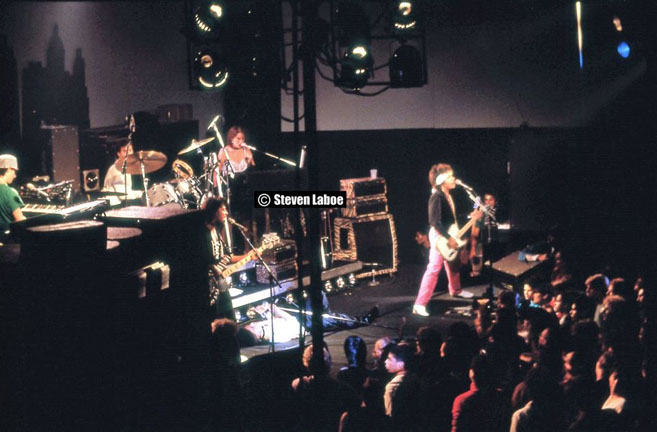
And from that or another time, below is a photo of Safety Last: Sprague Hollander, Tim Mauseth, Jim Tollefsrud, and Rusty Jones
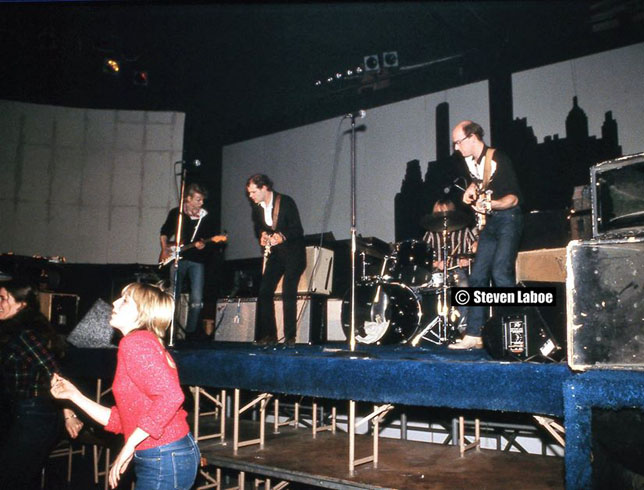
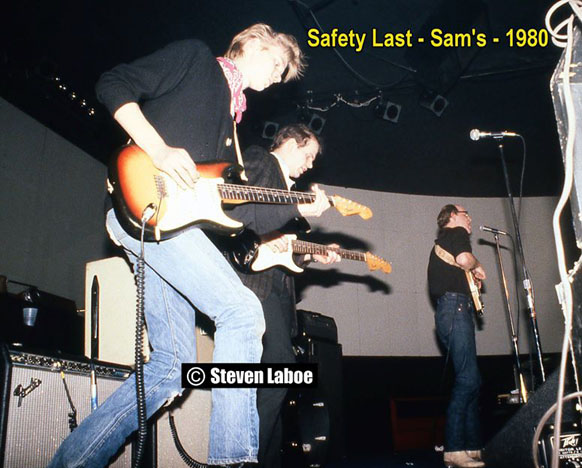
October 7, 1981: The Time. This was the first performance of the Time since they changed their name from Flyte Time. My college friend Tom Lund was in Flyte Time! The Time had a hit called “Get it Up,” and were all 19 and 20 years old. The show opened with Sue Ann Carwell, with her new band.
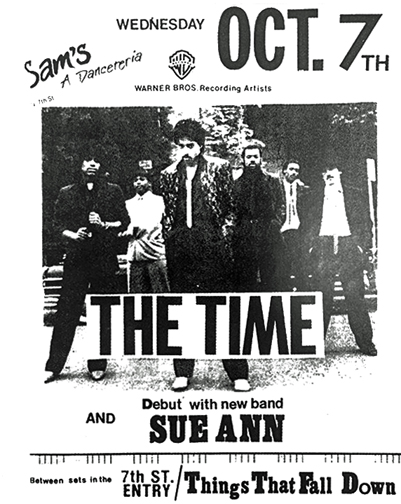
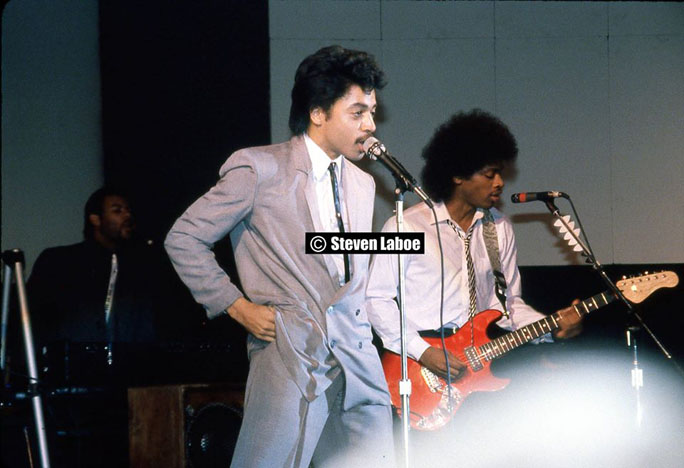
October 14, 1981: Dance Cabaret – Benefit for the Minnesota Dance Theatre
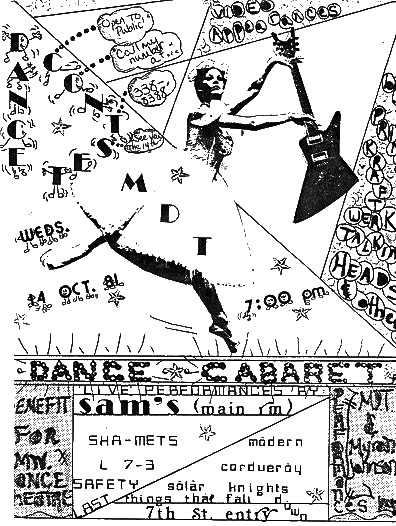
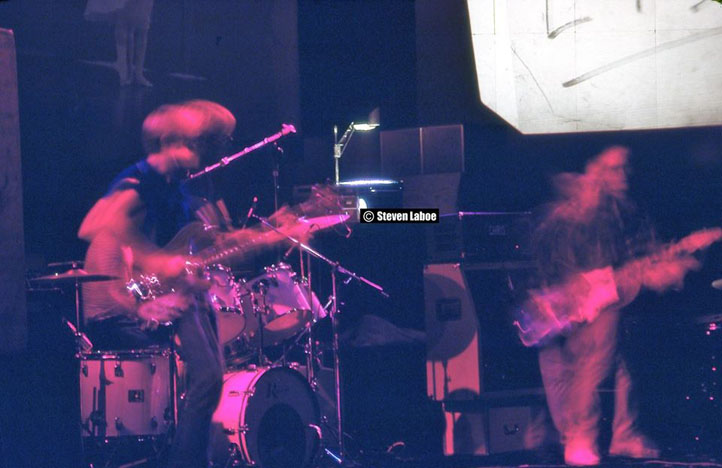
October 19, 1981: Raybeats, Suburbs, Skamets
November 5, 1981: Siouxsie and the Banshees
November 17, 1981: The Panther Burns
[November 26, 1981: R.E.M. was originally booked for the Entry but the Mainroom band cancelled, so Steve moved them to the Mainroom. Only 88 people were in the audience. It was Thanksgiving night. CR]
November 30, 1981: Russ Morgan Orchestra directed by Jack Morgan. Sponsored by WLOL
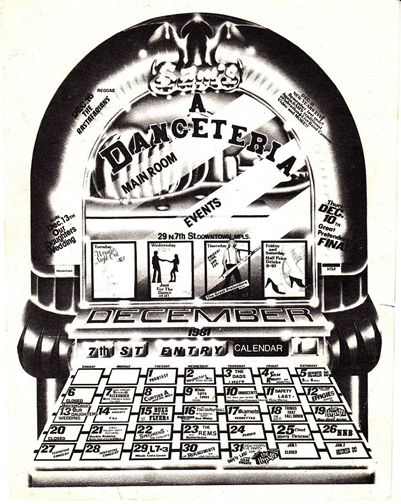
December 13, 1981: Our Daughter’s Wedding
December 15, 1981: Buzz and the Flyers
December 16, 1981: Rastafarians
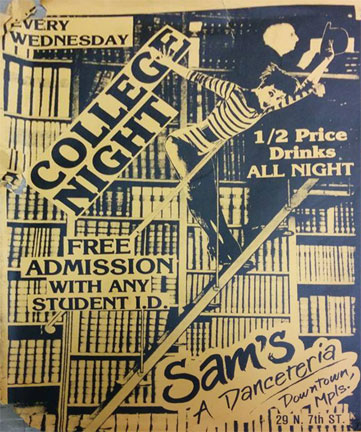
On New Year’s Eve 1981, Manager Steve McClellan and his staff renamed the club First Avenue. Steve Laboe captured the very last moments of Sam’s.
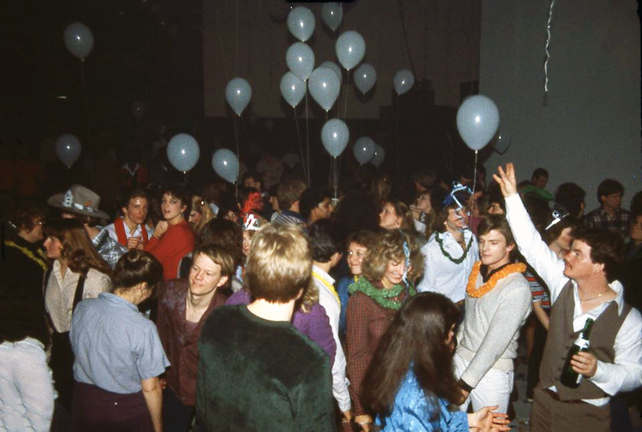
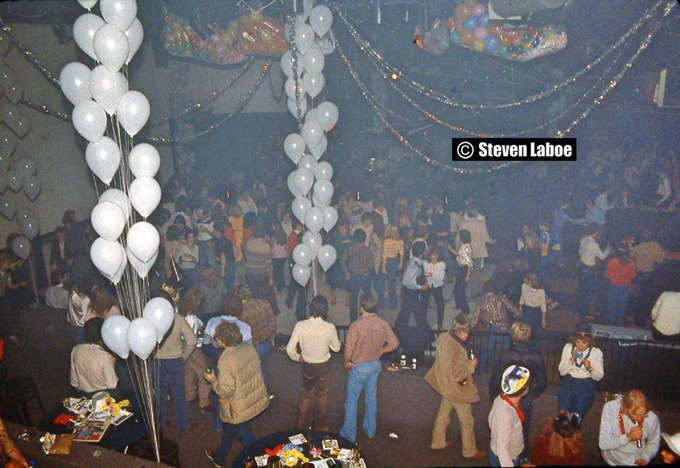
THE END OF SAM’S
Let’s give the last word to Dix Steele:
I began working at the club in March of 1975 when it was Uncle Sam’s, part of a string of national discotheques. I stayed until December of 1983 when it had become First Avenue, and continued in a freelance graphic artist capacity until December of 1993.
By far and away, the period of the most fun were the Sam’s years. Nobody knew what they were doing, no one knew what direction we were headed in, lots of times we didn’t know if the payroll would be met.
But was it ever exciting! We got to see bands and listen to music no one else had heard in these parts. It was total chaos at times, and I wouldn’t have traded anything in my life for the amount of fun we all had then.
From female mud wrestling, to building a swimming pool on the dance floor, to being kicked in the chest by Johnny Ramone, this was probably the best time of my life. It was like the wild west at times, lots of fights, lots of parties, and lots of mayhem.
I was happy to have been there.
FIRST AVENUE: 1982 –
The history of First Avenue has been covered elsewhere, and is way past my usual 1974 cutoff date, so I won’t be listing any shows. There’s a list of First Avenue’s live performers Here. It is not a complete list, and work is being done to fill in the blanks.
I will note some events in the early days of First Avenue.
1983
The club was shut down from November 26 to December 20, 1983, for the filming Prince’s 1984 film Purple Rain. The song “Purple Rain” itself was recorded at First Avenue on August 3, 1983, during a benefit concert for the Minnesota Dance Theater, which had been providing dance lessons to the cast. Fun fact: the cast used a warehouse in St. Louis Park as a rehearsal space – it has since been demolished.
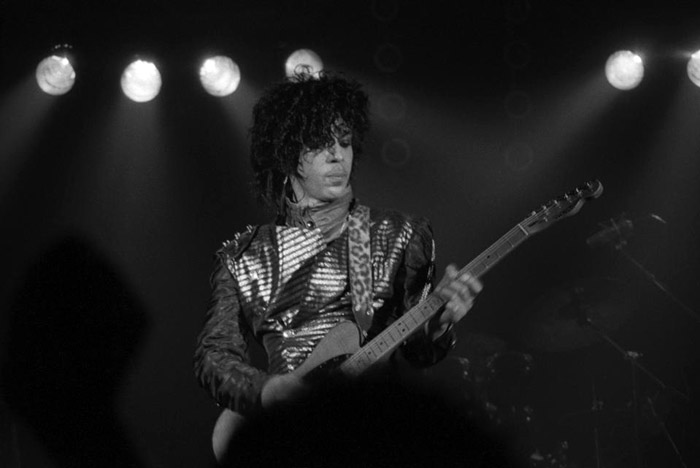
1984
The film “Purple Rain” opened on June 27, 1984, here in the Twin Cities and the venue became nationally famous as the central setting. Tourists began to annoy the management, but Allan says that the Prince connection really saved the club. (AF)
In an attempt to improve the “quality” of the clientele at First Avenue, the club asked the city if it could institute a policy of admitting only patrons age 21 and above, but was denied permission on the basis that it was discriminatory. (CRM)
1986
On September 1, 1986, the drinking age went back from 19 to 21 after passage of a Federal law in 1984 that mandated that states would face 10 percent reductions in federal highway funds unless they raised their age to 21. Allan said that this was extremely bad for business, and he got so he didn’t want to come in when attendance was low. (AF)
1988
Allan moved to California to focus on his fine-art publishing business in San Rafael and an art gallery in Sausalito, visiting First Avenue only once a year. (Inc.com)
1996
STEVE McCLELLAN WINS THE CONNIE HECHTER AWARD
At the Minnesota Music Awards of 1996, held on July 11, appropriately enough at First Avenue, Steve was honored with the Connie Hechter Award, which recognized the contributions of a non-musician. Jon Bream wrote:
In his 23 years at First Avenue, McClellan probably has worked with at least 40 of the acts that earned [Minnesota Music Awards] in 48 categories this year. Working 12-hour days and weekends, he oversees booking and marketing. He received the most prolonged applause of the long night.
Jack Meyers, First Avenue’s CFO, introduced McClellan and saluted him for his “integrity, commitment and stubbornness” and for “putting Minnesota and First Avenue on the map as the place where music comes first.”
… “In April 1993, the Twin Cities Reader published a cover story calling him “the crabbiest man in Minneapolis.” More important, McClellan, 46, has been a tireless promoter of all kinds of music from worldbeat to disco to alternative-rock.
The Connie Hechter Award was chosen by the Board of Directors of the Minnesota Music Academy, which administers the Minnesota Music Awards. The other MMA winners were chosen by the 264 members of the Academy.
2002
A Hard Rock Café opened on the north side of Seventh Street (Block E) on September 12, 2002. This music venue was looked at with trepidation as a possible rival to First Avenue. Problems at Block E caused mass exodus, and the Hard Rock closed on September 30, 2011.
2004
McCLELLAN AND MEYERS ARE LET GO
On June 22, 2004, Management team Steve McClellan and Jack Meyers were fired by letter from California by Allan Fingerhut. “Fired” may not be the exactly correct term, McClellan clarified; he and Meyers, as 2M, had a Management Agreement with the Committee that Allan decided to terminate. (SM) Steve got the news during the Patti Smith concert that night, packed his things, and left.
The news of Steve McClellan’s departure ripped through the Twin Cities music scene. (MPR)
Chris Osgood:
Steve leaving First Avenue is really no worse than if the Art Institute burned down, or if the Walker blew up. McClellan took a non-profit approach in an intensely for-profit cutthroat world. As a result, he introduced audiences to music and bands they might not normally come across…. He was able to recognize and nurture talent early on, and give it a garden to grow in. (MPR)
MPR’s Chris Roberts tried to explain Fingerhut’s motives:
Most every night at First Avenue, a customer shift change occurs at around 9:30 or 10:00. That’s when the rock, world music, or hip hop concert ends and the club becomes a cavernous, dingy discotheque. Tonight, as danceable rock music booms out through the speakers, the dance floor is pretty much empty. It’ll be Chris Olson’s job to fill it regularly. Olson, former Director of Operations for the club is now the new General Manager. [CR wrote that Olson had been an employee for 10 years.]
Allan Fingerhut says the club has to broaden its audience. There’s talk of establishing air guitar, lip synch, and Karaoke style competitions, as well as playing much more danceable recorded music. [At the rumor that the firings were a precursor to selling the club,] Fingerhut scoffed at the idea. “It’s like selling my, well, it’s my second born baby… What am I going to do? If I can’t be creative with First Avenue I’m going to die…. Steve has done a great job. I have absolutely nothing to complain about with Steve. It’s a non-profit business, First Avenue. But it has to be self-reliant for another 35 years, to last. I don’t care if I make money or not. I just want it to continue.”
Fingerhut freely admits his position on First Avenue’s future may be wrong. He says he would have preferred to stay behind the scenes, but the fact the club was sinking forced him to come out of the shadows and make a decision.
THE COMMITTEE DECLARES BANKRUPTCY
At 1:30 pm on November 2, 2004, The Committee, Inc. filed for Chapter 7 bankruptcy and First Avenue closed. The full story is told in Section IV of this page. First Avenue would reopen 17 days later under new ownership. The bankruptcy put the Committee out of business, rendering its stock worthless.
ALLAN’S REACTION TO LOSING FIRST AVENUE
Allan was quoted as saying that the club “was never intended to make money.” He said that he had to declare bankruptcy because of two lawsuits against him. He said he paid $570,000 in startup costs and $120,000 in 2004. Finance director Jack Meyers disputed that figure and said that Fingerhut hadn’t put any money into the club since 1979. (Minneapolis Star and Tribune, November 13, 2004)
New York Times:
“I got beat out of my bar fair and square, but I don’t want to be attacked anymore,” [Allan] said. “How can I be the bad guy in all of this? I lost $800,000 and half my hearing keeping this place going as long as I did.”
At that point Allan owned three art galleries that generated $5 million in sales the year before. “Still, nothing can make up for the First Avenue debacle. Losing that club was like losing a child,” he says. (Inc.com)
III. BEFORE THE MUSIC
Now that we’ve heard all the music, let’s go back to the beginning – the very beginning – to find out what was on this hallowed piece of land before our beloved First Avenue. Yes, we know it was a Greyhound Station, but Steve McClellan clued me to the fact that there was actually a grade school at 7th and First before the walls started to throb.
JEFFERSON SCHOOL: 1877 to 1916
Information for this section came from the Minneapolis Tribune and Journal, 1870 – 1914, and the Minneapolis Permit database made available by the Hennepin County Library.
Jefferson Elementary School was first located at Tenth Street and Hennepin Ave., built in about 1870. When it burned down in December 1876 (no injuries during an orderly escape), the school board sold this prime piece of real estate to the Methodist Church for $10,000 and bought a similar sized property at Seventh Street No. and First Ave. No. for $8,250. L.S. Buffington designed the new Jefferson School, and Smith and French built the building for under their bid of $16,400. The building had eight rooms, 25′ x 30′ each. The school opened on September 10, 1877, a week late and unfinished, but functional.
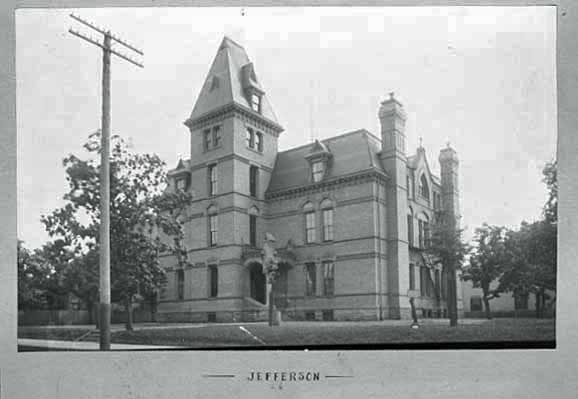
In December 1903 it began to occur to people that this grade school in the middle of a rowdy downtown was perhaps not in the best location. Nearby “vicious resorts” included Ida Coates’s House of Ill Repute (now the State Theater site) and a profusion of gambling joints on Seventh Street No. and Glenwood Ave. (then called Western Ave.) In addition, there were fewer children in the area, and in 1906 the school board was looking to sell.
And then there was the time in 1909 when Jack “The Hugger” struck, trying to embrace the girls as the came out of school. This phenomenon was happening all over the country, Jack based on Jack the Ripper. When he was in danger of being mobbed at Jefferson, he pulled a gun and escaped. Sounds like something that might have happened 100 years later!
The Last Dance for Jefferson School was in June 1910, and students gathered to honor their school and President Jefferson one last time. Meanwhile the school board was in no particular hurry to sell the property, knowing that its value was skyrocketing. Plus the city council kept dilly-dallying about how wide they wanted to expand Seventh Street, eventually widening it from 60 ft. to 80 ft.
The building was finally sold to Stacy Brothers & Merrill Co. on July 1, 1914, for $90,000. At about the same time, North High had a fire and Jefferson was leased by the school board as a storehouse for $1,200 per months for eight months. The permit to demolish the building was finally approved on April 26, 1916, at a cost of $1,000.
As far as I can tell, Jack the Hugger was never captured.
UNION BUS DEPOT: 1916 to 1935
The next building on the corner was a large (165 ft. x 150 ft.) brick building that housed four stores and a large (110 ft. x 125 ft.) public garage. Ads indicate that the building was known as the Union Bus Depot as early as 1922. At this point it was using the address 29 No. 7th Street.
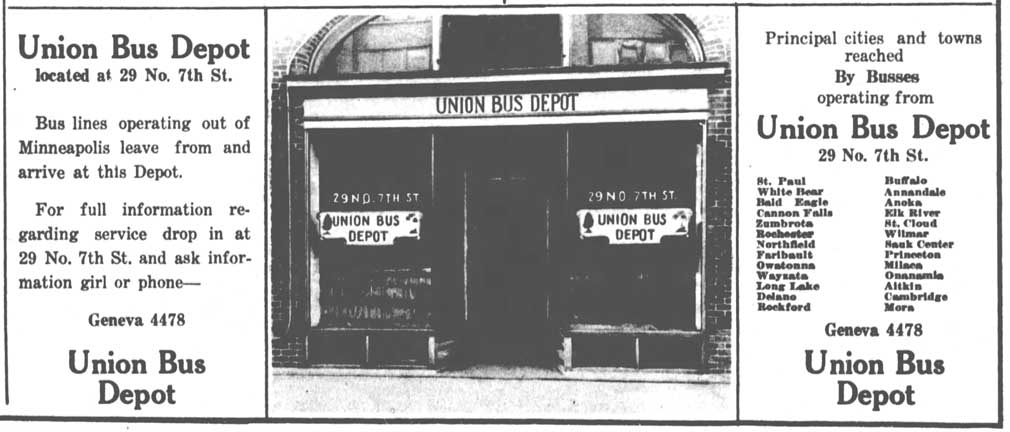
In 1924 there were major alterations made so that buses would no longer have to load and unload on Seventh Street. A garage and two stores were altered to triple the size of the waiting room and provide space for 18 buses to load and unload off the street. The Minneapolis Daily Star reported it as a new station, “erected on the site of the old station,” although it was actually an alteration, according to the permit card.
There were still stores in the building, including a pipe shop and a soda fountain. In 1932 the permit card mentioned a theater. On August 5, 1935, there was a permit to spend $450 to repair the stores after a fire. There is no wrecking permit for this building on the permit card. And as you can guess, there are a lot of permits for signs!
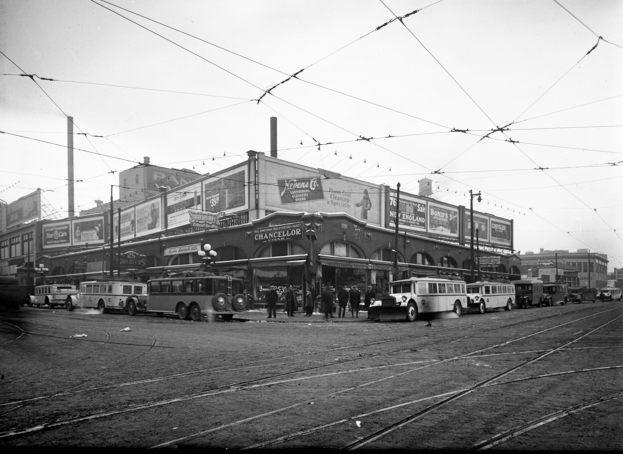
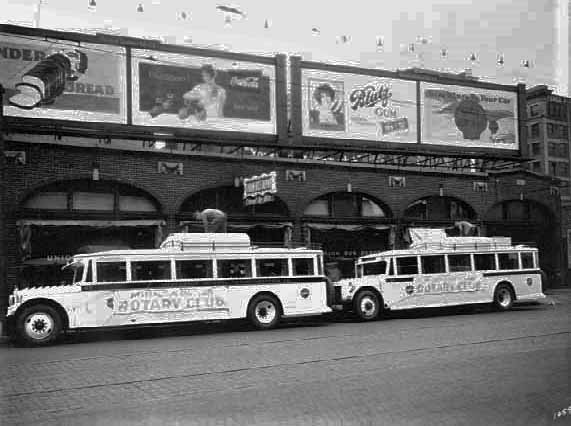
NORTHLAND GREYHOUND STATION: 1937 to 1967
Information for this section came from the Minneapolis Star and Tribune.
CONSTRUCTION
The present building was designed by architects Oscar Lang and Arnold Raugland. It was built on the site of the old building, and it was built in a hurry. The James Leck Company began construction on the massive building in August 1936, and it was dedicated on February 26, 1937. While the new station was under construction, temporary quarters were established on a vacant lot south of the site on First Ave. No. The daily bus load was 109: 67 Greyhound, 32 Twin City Motor, and 10 Jefferson.
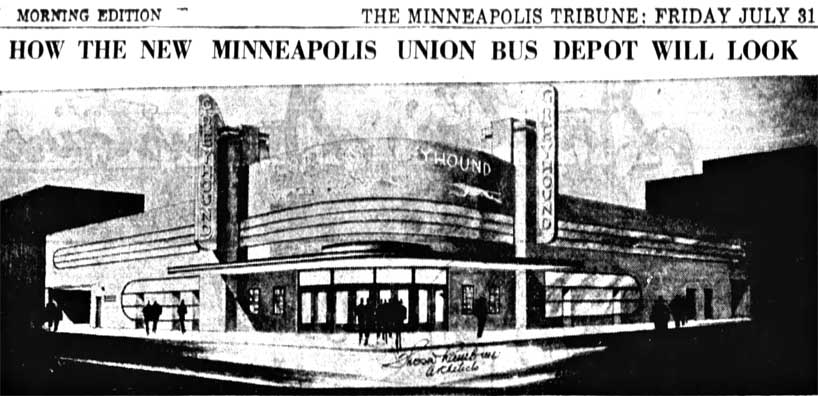
Ownership:
Stacy Bros. & Merrill Co. continued to own the land and the new building, and they leased it to Northland Greyhound. Jefferson Transportation and Twin City Motor Bus Co. were tenants.
Exterior:
The lot was 165 ft. on Seventh Street and 209 ft. on First Ave. Construction was of blue glazed brick with white trim on the north and west sides: the colors of the Greyhound line. The Minneapolis Tribune described it as “one of the finest of its kind and a model of convenience and scientific design.” Long, continuous windows ran the full length of the building. A marquee was studded with 300 lights.
The first floor:
- Huge, chromium chandeliers diffuse light throughout the main waiting room, aided by smaller fixtures placed at vantage points along the ceiling of the lounge.
- Five doors conform to the curved contour of the structure.
- The waiting room was 68 ft. wide by 158 ft. long and 28 ft. high. (Another report said 70 ft. by 115 ft. and 8,050 sq. ft. in total.) It is and elliptical in shape, with solid walnut benches.
- The walls are tinted in old rose.
- The ticket office has five windows.
- Barber shop (beauty shop didn’t happen)
- Cigar and news stand, with entrances from the waiting room and the street
- A battery of public telephones
- A commodious baggage room
THE FLOOR
The floors were of green and yellow terrazzo. While they were covered up for most of their tenure at first, they are uncovered today and those original floors are still in service. Robb Henry found the photo below that shows the waiting room floor in 1966.
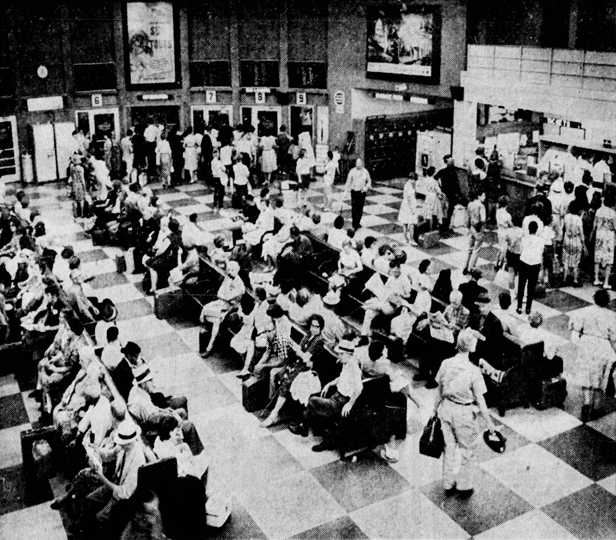
THE POST HOUSE RESTAURANT
This was described as a “scientifically equipped” restaurant. The space went through several uses before its evolution into the 7th Street Entry.
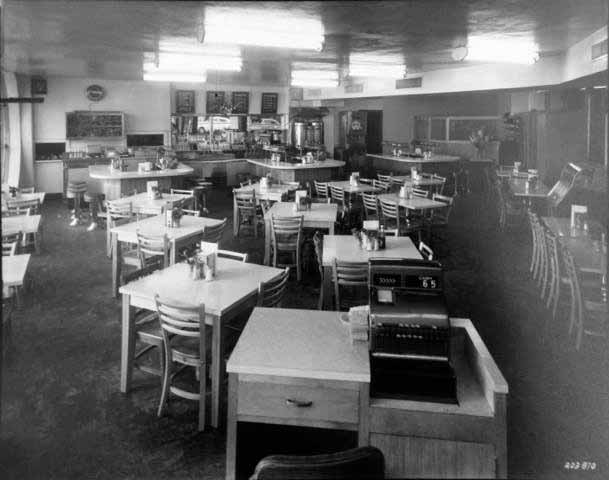
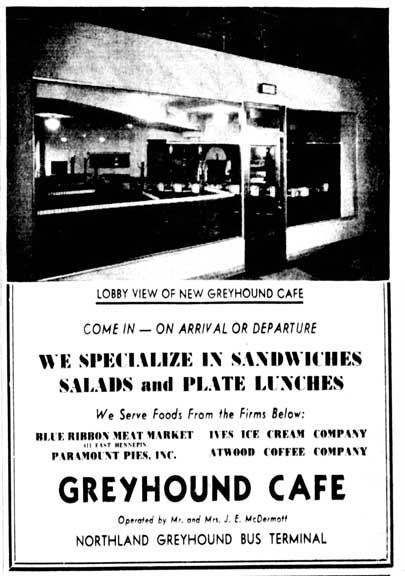
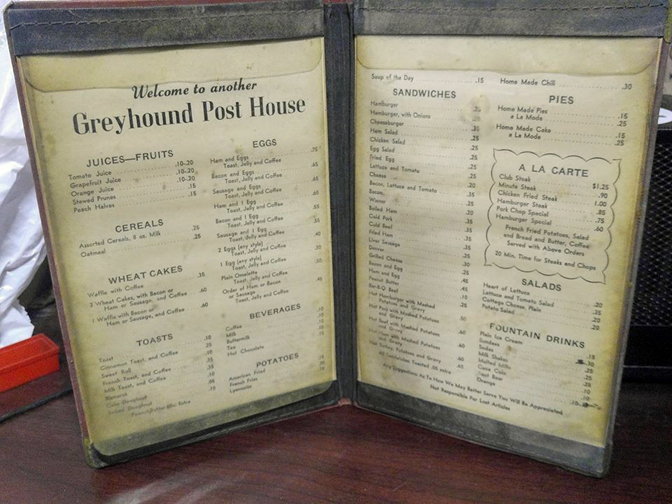
The Mezzanine:
- Two winding staircases
- Lounges overlooking the waiting room, “furnished with divans and settees, which combine comfort and a brilliance of clean, gleaming chrome with yellow and green upholstery.’
- Restrooms on the north side, with black and blue tile and five feet of wainscoting. Walls and ceilings are painted in ‘old rose.” Tiled shower rooms are also available.
- Showers, with floors covered in black and red asphalt for safety.
- Terminal Offices, including the switchboard and first aid office.
Nine doorways lead to the loading platform. The garage could handle the loading of 11 buses at once, with arrivals from Seventh Street and departures from First Avenue. The entire concourse could handle 25 buses.
And, a special note was made of the public address system, providing, “plain, audible announcements of bus departures and arrivals and for the paging of passengers.”
THE DEDICATION
Although the opening missed its goal of January 1, 1937, the station was dedicated and formally open to the public in a ceremony on February 26, 1937. The celebration included orchestra music by the Gopher Melody Men, and singing and instrumental specialty acts by the Three Tones. Uniformed hostesses distributed souvenirs.
WCCO Radio broadcast a half-hour dedication ceremony at 9:30 pm, where W.J. Kay, Vice President of Northland Greyhound, presented the terminal to the City of Minneapolis, with Mayor Thomas E. Latimer accepting.
Next came the christening of the first super coach officially to leave the terminal. The particular coach would make a regular run to Hibbing, the birthplace of Greyhound Lines. Joyce Kerr, U of M co-ed and recent winner of the Big Ten Beauty Queen Contest, did the christening honors.
The occasion was the subject of a special section of the Tribune, beginning with the full-page graphic below:
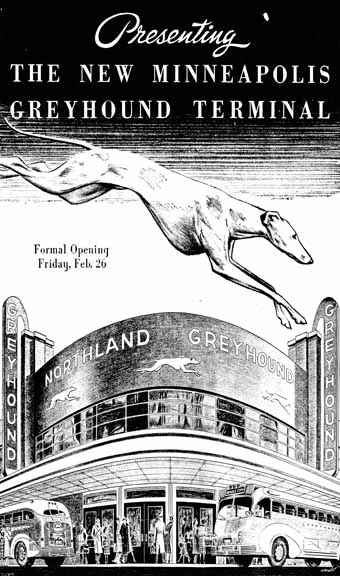
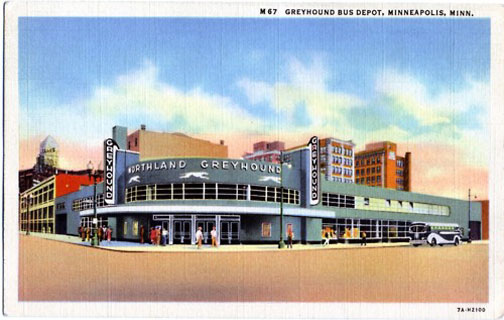
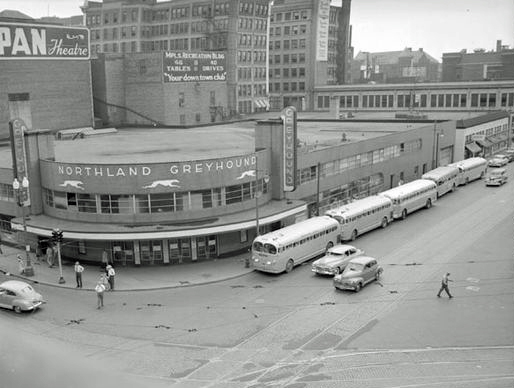
From this 1952 photo below, it is apparent that the infrastructure of the building never really changed much:
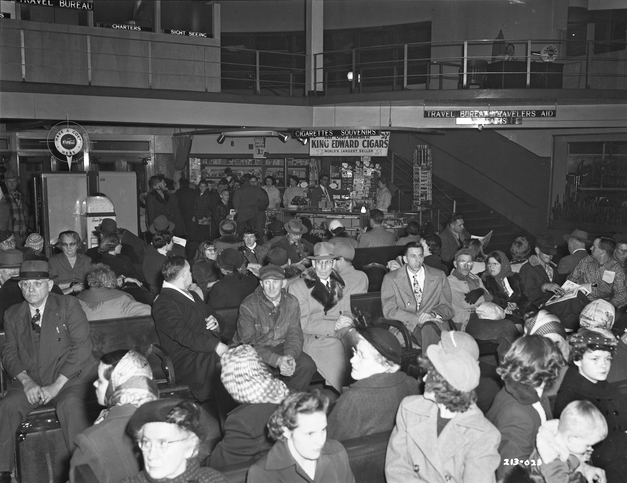
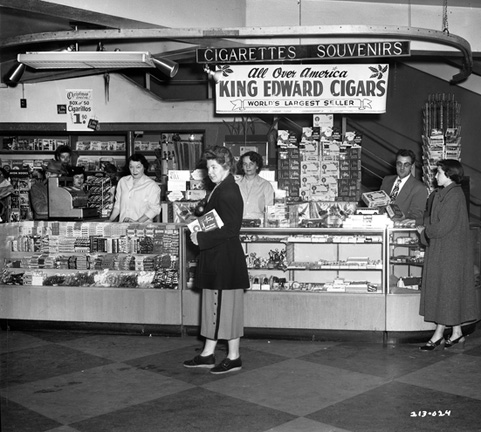
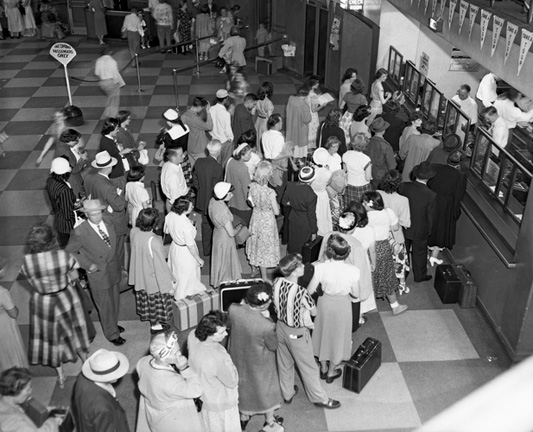
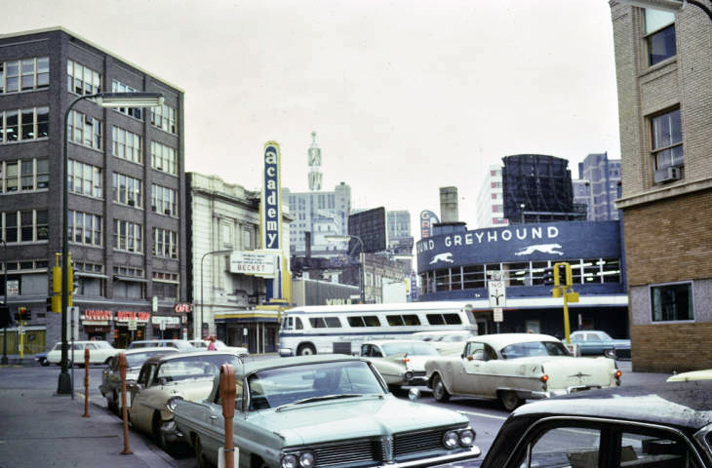
GREYHOUND GONE
On June 22, 1967, the Minneapolis Star reported that Ted Mann had purchased the Northland Greyhound Station and that Greyhound would be building a new station on the block bounded by Hawthorne, 9th Street, Currie, and 10th Street. The new Greyhound site was a vacated Holiday Oldsmobile dealership. It eventually cost $2 million to renovate, and according to Peter Altman of the Star, in his review of November 29, 1968, it was butt ugly. (“New Depot Has Clean Look But No Style”)
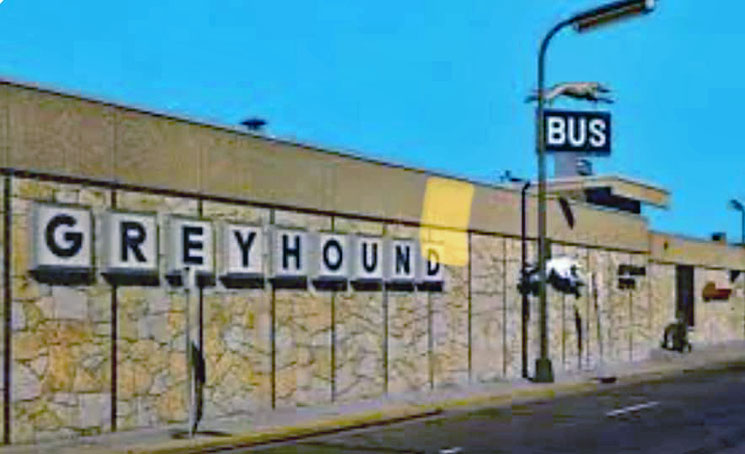
That Greyhound station was eventually replaced by the current Hawthorne Transportation Center, built by the City of Minneapolis in 2000 on the same site as the last one. It includes a 900-car parking lot, was next to the 7th Street Municipal Parking Garage, provide connections to Metro Transit (which the last one didn’t), had food and play areas, and was open to ticket holders only. The architect was Gene Nelson and was presumably not ugly.
So much for buses.
IV. HISTORY OF THE COMMITTEE, INC.
And finally we get to the history of the organization that owned this business from 1970 to 2004. To some it will seem as exciting as paint drying, and some of it is admittedly mundane and technical. But some of it is bizarre, and there are plenty of surprises. The story is complex, confusing, and messy, but I have not made any of this up!
I have decided to summarize the story to make it at least readable – if anyone wishes to see the entire tome or any of my original sources, feel free to let me know. I have interpreted the assorted documents to the best of my ability, but I caution that I am not an attorney (although I did take contracts before I quit law school in 1982…). A reminder that my sources are listed on a separate page, hopefully for your convenience.
I am also not trained in handwriting analysis, and can only report on whose signatures appear on the various documents. Some of these signatures have been suspected of being forgeries – I have no way of knowing one way or another. The vast majority of the documents I’ve depended on have come from governmental agencies, and I have tried to report on whether or not various signatures have been notarized.
As with every other Twin Cities music venue on this website, my goal is to discover and present the facts. I have no other agenda and have no point of view. This is my work and no one else’s – typos and all. I have indulged in a few personal opinions at the end.
If anyone has any objections, additions, suggestions, rebuttals, or corrections to anything I’ve written, I invite them to contact me and let me know. I wish to include all points view and allow everyone to be heard. Thank you.
THE BUILDING
The old Greyhound bus depot was purchased by brothers Ted and Marvin Mann in June 1967. Ted Mann wanted the building because it was next to his Mann Theater at 710 Hennepin Ave. The acquisition gave him the entire east (well, northeast) side of the block. The Mann Theater is now the Pantages. (Minneapolis Star, June 22, 1967)
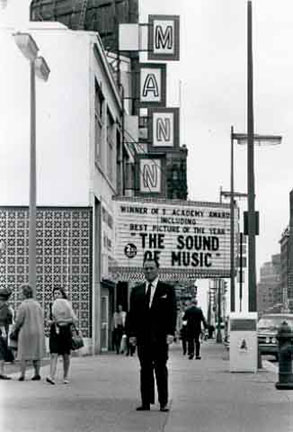
Mann had no immediate plans for the old Greyhound building. And although it is unclear when Greyhound actually moved out, its new Depot was opened in September in 1968, and it appears that Mann did nothing to the old one while it was in his ownership.
SOMEONE GETS AN IDEA
Whose idea it was to turn the abandoned bus station into a nightclub is a little hazy. These are the stories I’ve read and heard.
DANNY STEVENS
The following section comes from interviews with Danny Stevens in 2020.
Danny remembers getting the idea to use the old Greyhound depot as a music venue after visiting the Sunset Strip in L.A. in 1967 and venues like the Fillmore West in particular. In fact, he had met Bill Graham and wanted to name the new Minneapolis venue the Fillmore Midwest. This meeting was set up by Timothy D. Kehr.
Danny called and met with Ted Mann in 1968. He knew Ted from when he was an usher at Mann’s Suburban World Theater in the ‘50s. He asked Ted that, if he had a chance to get a liquor license, would Ted be willing to lease the building to him? Ted did not want to sell it, and Danny did not have the capital or the confidence that the idea would work to buy it. Danny put $2,500 to $3,000 of his own money down to hold the building and went out looking for investors. Rent was set at $2,500 to $3,000 per month, and would not start until construction was done.
When Danny was looking for financing to start up the Depot, he first thought of his friend Mrs. Heffelfinger. Elizabeth E. Heffelfinger was the wife of Frank Peavey Heffelfinger, heir to the Pillsbury grain fortune. He had met her through Lynn Lawyer, who Danny met in 1964 and who became publicist for Danny’s Reasons in 1965. Through Lynn he had an entre into Wayzata and Minnetonka Society. Danny’s Reasons performed at many functions – private parties, parties for teenage kids of society folks, etc., and had many connections with wealthy patrons. This is how he met Mrs. Hefffelfinger. Mrs. Heffelfinger was excited about the idea and participated in meetings with Ted and Marvin Mann and her friend Jack Dow. She guaranteed the rent for two years. Unfortunately, Mrs. Heffelfinger became ill and asked Danny if he could try to find another financial backer.
ALLAN FINGERHUT
When Allan got out of the Army he considered using some of the money his father had given him to open a nightclub. (CR)
SKIP GOUCHER
Charles Bradley “Skip” Goucher was either a footnote to this story or the founding father of the Depot. Allan told me that Skip, an acquaintance, brought the building to his attention. Allan liked it for its lack of support beams and unimpeded sight lines. (AF) This is substantiated by Goucher’s son, who said that his dad “always claimed credit for dreaming up the club.” (CR) Although Goucher’s name is not mentioned in early press reports about the Depot, he is mentioned as one of Allan’s “sidemen” in an article in Connie’s Insider dated April 11, 1970.
There are some who think that Goucher’s role has been underplayed. One of them is John Fineberg, who was a disk jockey on KRSI and KQ in the early 1970s. Here’s what John has to say:
The truth is that the founders of The Depot were my brother, Tom Fineberg, and his friend/roommate/business partner, Skip Goucher. Tom (who now goes by the name Thomas) were in the concert booking business. While driving around downtown Minneapolis, in search of a venue to hold concerts, they came across the abandoned Greyhound bus station. THEY found it. THEY started the process of getting it up-and-running. The idea was absolutely THEIR idea.
In the process, however, they looked for financial backers. And THAT’S when Allan Fingerhut, Danny Stevens, Wilson Simon, et al, were brought in. Unfortunately for the true founders, those with the purse strings pretty quickly took the reins … and rewrote history. They deserve credit for what the dream became, but Tom and Skip’s dream of a casual, hippy-ish club, with young folks sitting on the bus station floor, quickly became Allan’s dream of sleazy purple shag carpeting and flashy bar fixtures, to impress his wealthy friends.
Though Tom and Skip booked the early concerts, my brother was called up by the U.S. Army and missed the opening weekend: four shows by Joe Cocker, with his incredible Mad Dogs and Englishmen band, over a two-night period. (I was there for all four shows, helping out in minor ways, like handing out roses to gorgeous women — oh, what a difficult chore that was!) Tom’s relationship with the Army wasn’t a good fit, so he was out and back to The Depot in very short order. How long it was before Fingerhut and Company forced them out, I really don’t recall.
Goucher was a troubled character from Robbinsdale. After getting in enough trouble to get in the paper at age 16, he was found with 22 pounds of marijuana at age 21 in 1967. (Minneapolis Tribune, November 10, 1967) Articles from his later exploits indicate that he may have done some time, but I found nothing in the paper.
My friend Neal knew Skip in 1969, just before his involvement with the Depot. They were promoting concerts together with another guy, calling themselves “Tri-State Productions.” Skip was tall and dashing, with his blonde hair, bit blonde mustache, and his ’67 Corvette, complete with 8-track player. Tri-State Productions split up when Skip decided he wanted to manage groups instead of promote concerts.
Mike Barich captured a photo of Skip at the Mitch Ryder concert at the Depot.
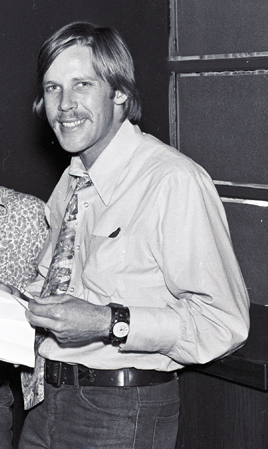
Allan says that Goucher “disappeared” after his short involvement in the Depot, but he shows up at in Tucson, embroiled in his own personal crime spree. “In 10 months in Tucson from Nov. 2, 1971, through July 28, 1972, Goucher was arrested and charged with 12 felonies.” (Tucson Daily Citizen, February 2, 1973)
Superior Court Judge Joe Jacobson was roundly criticized for giving Goucher six years of probation for the three charges he plead guilty to, in exchange for dropping seven other charges. The judge defended his action, and one of his points was, “This fellow promoted rock concerts and got a couple of men to invest $150,000 in a nightclub in Minnesota. He has a potential for good.” (Tucson Daily Citizen and Arizona Daily Star, January 25, 1973). CR states that Goucher died in 2015.
Sharron does not remember Goucher to be a friend of Allan’s but a “hanger on,” and that Allan was very trusting of people. Whatever Skip did, he was around in some capacity in those very early days.
As for Wilson Simon, whom John Fineberg mentions above, his record of crime (mostly drug dealing) could easily make for an entertaining movie, just based on his news clippings alone. The role of Simon and his dirty money in opening the Depot and keeping it afloat has been a matter of speculation but never proven.
THE FIRST MEETING
Danny described what happened next, to the best of his recollection. In October/November 1969, Allan and Skip came to the Times Square nightclub, where Danny was performing, to meet with Danny. Danny had never met them before. Allan said that he had also talked to Ted Mann about using the bus station, and Mann told him that Danny had control of a liquor license and was looking for a financial partner. Danny knew of Allan’s wealthy father Manny, and assumed, like many, that Allan had access to a great deal of money.
Danny agreed to work with Allan, and they made several agreements:
- They would own the business equally.
- They would have weekly meetings.
- Allan would handle the business with Ted Deikel, who was his brother-in-law and worked for his father Manny.
- Abby Rosenthal would be the General Manager.
- Danny would control the entertainment.
- Allan would put in $150,000 cash and guarantee the balance of his $400,000 – $500,000 contribution by signing for credit.
- Skip Goucher would help with booking.
- Amos Heilicher would provide the games (pinball, etc.).
- Eddie Phillips of Phillips Liquor would supply the beer and liquor.
- Dick Shapiro would do most of the booking.
- Danny’s Reasons would only play on Mondays, but Danny would work to find local acts. Danny acknowledged that the nature of his band was not the kind that they were looking for at the Depot.
THE COMMITTEE
These intrepid young people (and they were very young!) banded together to form a corporation called The Committee, Inc. The information below includes a lot of detail about shares, board titles, contracts, lawsuits, etc., which may seem picaune, but they help piece together a story that has been subject to misinformation, speculation, accusation, and frustration. I’ll try to keep it moving.
AGREEMENT TO ORGANIZE THE COMMITTEE
The City of Minneapolis has on file a document entitled “Agreement to Organize a Corporation,” signed (but not notarized) by Allan and Danny on January 2, 1970. It is a detailed, 11-page document that spelled out their intention to form a corporation to be known as “The Committee, Inc.” The document makes reference to Bylaws; I have not found any Bylaws, but this document contains the kinds of terms that would normally be in a set of Bylaws.
This document is odd in that it refers to Danny as “Daniel,” which is not his legal name.
The Agreement to Organize provided that:
- The corporation had 25,000 shares of common stock with a par value of $1.00 each.
- Shareholders had one vote for each share held.
- Allan was to pay $20,000 in cash for 2,000 shares of stock.
- Danny would pay $10,000 for 1,000 shares of stock. Payment would be made by:
- assigning the liquor license to The Committee, which he did on January 20, 1970.
- executing a promissory note to The Committee for $6,500, payable in three years.
- The Committee would assume the debt of $11,500 to Jack Dow for the liquor license. (See below)
- Allan agreed to purchase a $25,000 “note of the corporation.”
- Allan and Danny were the Committee’s two directors, and would remain directors as long as they were shareholders.
- Allan was Chairman of the Board.
- Danny was President.
- Sharron Fingerhut was Secretary and Treasurer.
- Allan and Danny would have joint operating responsibility of the Committee’s business.
- Allan and Danny would be employees of the Committee for an indefinite period.
- Allan and Danny “shall render a substantial amount of time and effort to the corporation.”
- All cash reserved or held for expansion or capital improvements had to be approved by both Allan and Danny.
- Cash in excess of that needed for ordinary working capital would be distributed to Allan and Danny quarterly.
- Any sale of stock had to be approved by both parties.
- Each director had the right of first refusal to buy stock from the other if he wanted to sell.
- Sale of stock must be paid in cash.
- In the event of voluntary or involuntary liquidation of the corporation, if all amounts owed to Allan have been paid, Danny would have a 30-day first option to buy the liquor license for $10,000 cash.
ARTICLES OF INCORPORATION
The Articles of Incorporation that created the Committee, Inc. were drafted on January 9, 1970. They provide that:
- Total shares were 25,000 with a par value of $1.00 each.
- Shareholders had one vote for each share held.
- The first Board of Directors were Allan and Danny.
- The term of office was until the first meeting of the shareholders.
This document must have been drafted by the same person who wrote the “Agreement to Organize a Corporation,” above: Danny was again listed as Daniel Stevens, which is not his legal name and his “Post Office Address” is listed as “Oak Park Heights, St. Paul, Minnesota,” which was not and never has been remotely his address.
THE LIQUOR LICENSE
The story of the liquor license may seem like a technicality, but not only would we not have First Avenue if not for what happened in 1970, but the story has some interesting twists and turns. Well, they were interesting to me, anyway… And my research has answered some lingering questions that have puzzled those involved for years. I hope you enjoy the story.
BUYING AND SELLING
Although the practice is illegal now, back in 1970, in order to get a liquor license, one had to buy one from someone who already had one. This unwritten policy went back to 1961, when the State bulldozed Skid Row, leaving dozens of bar owners with liquor licenses but nowhere to relocate. In order to compensate them for their loss, it was determined by the City Council that the liquor license holder could sell his license to someone else if he could not find a place to relocate. (Minneapolis Star, June 30, 1970)
Throughout the sixties, bar owners were buying and selling their liquor licenses to each other, and Minneapolis’s application to become a new owner of a license asked if the request was a transfer from another establishment – and if so, was there any consideration paid for the transfer, i.e., did the buyer pay anything or promise to pay anything to the seller. Apparently even though the buying and selling was not illegal, the City wanted to know how much was being paid for these transfers. Many times these amounts were even published in the paper.
Eventually this practice was upheld by the Minnesota State Supreme Court in a case decided in 1969. Robert A. Saugen was the owner of the Aces Lounge, famous for having the record number of pockets picked within three hours. This fine establishment was taken by eminent domain and demolished in 1966 to make way for the 35W/I-395 (then Highway 12) interchange. He was allowed $39,500 for his building, but nothing for his business, which included his liquor license. He tried three times to relocate the Aces, but was met with Not In My Back Yard each time. Instead of selling his liquor license, which he could have easily done, he sued the State for compensation for his loss of business as well as the bricks and mortar, and kept appealing until the case went to the Minnesota Supreme Court. The value of the Aces Lounge was stipulated as $17,500.
And he won! The Court ruled that a liquor license had a monetary value if the owner of the license could not relocate his business elsewhere. The Minneapolis Star seemed stunned: “Court apparently places ‘price’ on liquor licenses,” read the headline of June 4, 1969.
By State law, Minneapolis only had a finite number of liquor licenses. The City Council had a policy on limiting the number of bars in the City by not issuing any licenses that had been turned back in. This made licenses difficult to get, and prices ranged from as low as $6,000 in 1971 to as high as $30,000 several years before. (Minneapolis Tribune, April 10, 1971)
DOW TO DANNY
Enter Jack Dow. Henry Jack Dow was a prominent businessman, President of the Louis F. Dow Co. The company, started by his father, made calendars and advertising specialties. In August 1965, Will Jones reported that the company was the country’s major manufacturer of Beatles merchandise!
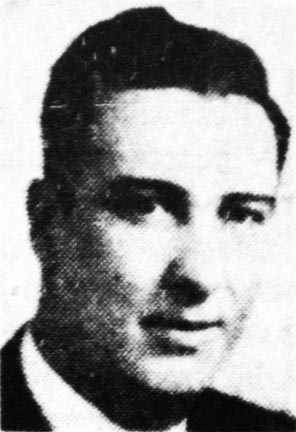
Dow owned two Minneapolis properties:
The Hotel Hastings, was located at 32 N. 12th Street. Dow bought the hotel in 1959 with partners Wheelock Whitney and Cedric Adams.
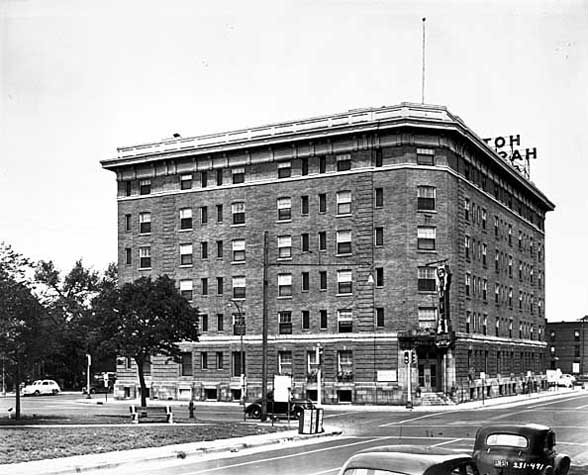
The hotel had two music venues: the Mar-Key Club, which was a private club, and the public Coral Reef Bar in the basement. Danny’s Reasons performed at the Hotel starting in January 1969 (alternating with the Nite Caps, Wednesdays – Saturdays) until early April 1969.
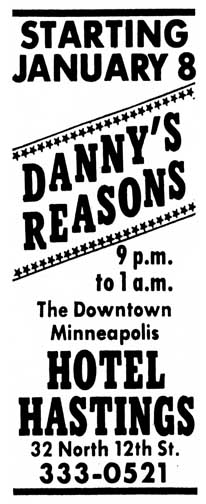
The building was taken by eminent domain in September 1969 and demolished in November 1969 in order to build the eastbound lanes of Highway 12 into downtown. This made the liquor license owned by Dow for the Coral Reef Bar in Hotel Hastings available. (Dow intended to move the Mar-Key.)
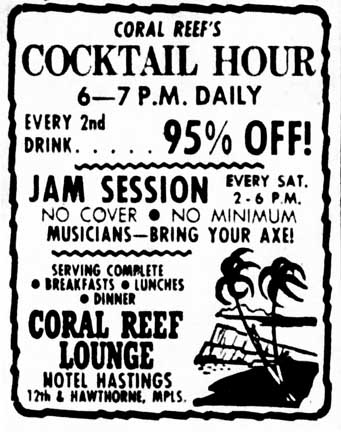
Dow purchased 724 – 4th Ave. So. in about August 1969. It had operated as Diamond Lil’s from about July 1966 to 1969. Jack Dow allowed Danny to take over the lagging Diamond Lil’s and run it as a rock club called Times Square from October 1969 to about February 1970. It became a popular place for national musicians who were in town to come and hang out after their shows (Danny assured the police that no alcohol was served after legal hours). (DS)
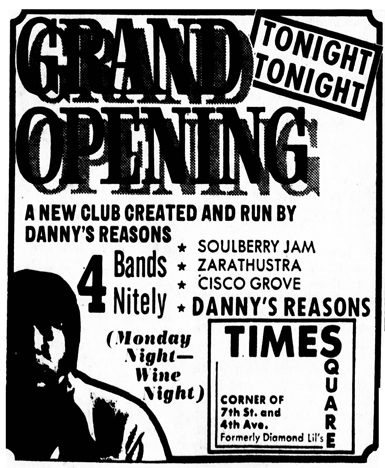
Dow and Danny did not have a written lease for Times Square. Although it was doing well, Dow wanted to rent the building to the people who were interested in putting the Friar’s Dinner Theater in, so he paid Danny a bonus for leaving. (DS)
Another account said that Times Square “failed.” (Allan Holbert, Minneapolis Tribune, February 8, 1970)
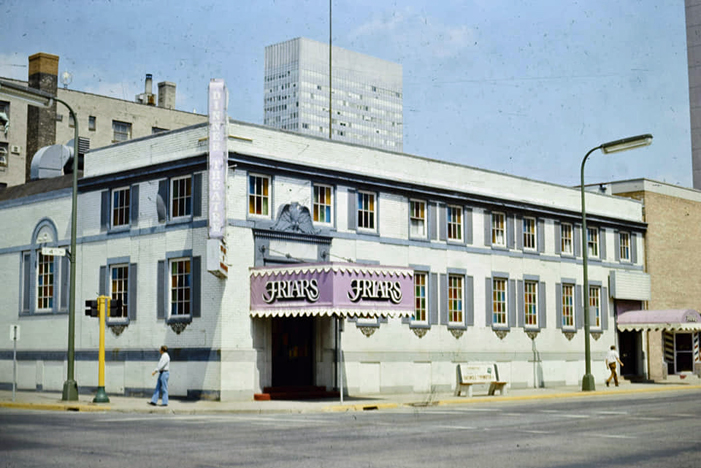
A series of other failed endeavors came and went into the space before the building was blessedly demolished in 1981.
PURCHASE AGREEMENT
Out of friendship and gratitude for bringing in business through Times Square and the Hotel Hastings, Jack Dow decided to sell his liquor license for the Coral Reef Bar in the Hotel Hastings to Danny. (DS)
This was done via a Purchase Agreement, dated January 16, 1970, which called for Danny to pay Dow $11,500 in installments of $300 per month, beginning on April 1, 1970, and ending on July 1, 1971. I received a copy of this document from Danny and also from Hennepin County in conjunction with documents involving a lawsuit.
Under the terms of the agreement, Danny could transfer the license to a corporation if:
- The corporation took on the payments.
- The corporation had a lease to a location acceptable to the City as a bar.
- Danny had to be the owner of at least one-third of the stock of the corporation and be an employee of the corporation.
DANNY TO THE COMMITTEE
As permitted by his contract with Dow, four days later, on January 20, 1970, Danny transferred his interest in the liquor license to The Committee, Inc. via a Bill of Sale. Danny provided me with a copy of this document.
Danny made the transfer to The Committee on the advice of his legal counsel in order to avoid the liabilities of Dram Shop laws that hold bar proprietors responsible for damage or injuries, etc. caused by customers who got drunk at their establishments. (DS)
APPLICATION TO THE CITY
On January 26, 1970, The Committee submitted its written application for a Class A liquor license to the City. The top sheet of the seven-page application shows Danny’s signature. (MLD)
Highlights of the application include:
- Amount of authorized capitalization: $25,000
- Amount of paid in capital: $30,000
- Allan was Chairman of the Board and Director, with 2,000 shares
- Danny was President and Director, with 1,000 shares
- Sharron was Secretary-Treasurer, with no shares
- Owner of the building was Guild Management Co. (probably Ted Mann’s property management company)
- Sources of Income, Allan: Trust, Fingerhut Manufacturing Co.
- Sources of Income, Danny: musical entertainment (Danny’s Reasons)
- Sources of Income, Sharron: none
- Trade Name to be used: The Depot
- No employees hired yet
NO CONSIDERATION?
The application included a request for a transfer of the license of the Hotel Hastings directly to The Committee. It required a statement as to whether or not any consideration, money or property had been or agreed to be, or will be, paid or given or exchanged, and if so, a statement of the amount of the consideration. The response was “No consideration of any kind has been or will be paid by anyone to anyone for the transfer of the license sought to be transferred.” On the line for the signature of the former licensee was typed Hotel Hastings, Inc., and signed H.J. Dow. On a separate page, the following is under his signature: “For no special consideration, this on-sale liquor license number 48706 is hereby transferred by Hotel Hastings, Inc. to The Committee, Inc. as of January 26, 1970.” Danny’s signature is also shown on the application in the section requesting the transfer of the license from the Hotel Hastings to the Committee.
But Wait! Wasn’t there clear “consideration” (payment) for the transfer of the liquor license – the $11,500 agreed to in the Purchase Agreement of January 16, 1970? At the time it was perfectly legal for Dow to sell his license to The Committee. So why did he say that he didn’t?
The application for the license as a whole shows the signatures of Allan and Danny.
APPROVAL
Danny remembered that he had to go to an interview as a part of the application process, meeting with the head of licensing, who was was Dick Short, Bob Short’s brother. He says that Dick was unhappy with the involvement of Allan, because he had no experience in the entertainment business. Danny came back a second time, this time with his father. Allan never met with Short, saying to Danny that it was Danny’s dream, and that he should handle it. (DS)
Sharron remembered that it was the other way around, and the City was wary of Danny’s reputation. Through his daughters, I asked Allan about this version of events, and his response was “Sharron’s recollection is correct. No one was wary of my inexperience.”
All we know for sure is that the application was approved very quickly, in January or February 1970.
CHANGE IN LICENSE POLICY
Jump ahead for a minute to October 29, 1971. Not long after Danny had signed the Purchase Agreement to pay $11,500 for Dow’s license, the Minneapolis City Council announced it was now changing its policy and not allowing transfers from one person to another. Instead, all unused licenses had to be turned into the City, and new bar owners would have to buy them from the City for a fee of $2,500. The change was made because the City had a stockpile of 10 licenses, and most urban renewal had been completed. Although this meant that someone who had paid a high amount for their license would not be able to sell it to get their investment back, Alderman Erdall said “that will happen to all tavern owners whenever the policy is changed, so it may as well be changed now. (Minneapolis Tribune, October 30, 1971)
HOTEL HASTINGS, INC. vs DANNY H. STEVENS
Ahead even further, on June 19, 1973, Jack Dow sued Danny, saying that Danny had only paid $3,900 of the $11,500 he owed Dow for the license under the Purchase Agreement of January 16, 1970.
Danny answered that:
- He had not received anything in return for the $3,900 he had paid.
- The Purchase Agreement was illegal and against public policy (a reference to the 1971 change in policy noted above).
- The Bill of Sale of January 20, 1970, had transferred the responsibility to repay the debt to The Committee, so he was no longer responsible.
Danny must have then realized he had paid $3,900 for nothing, so in October 1974 he filed his own lawsuit demanding:
- a refund of the $3,900 that he had paid from Dow, and
- that if Dow won a judgment in court, it was up to The Committee to pay any funds because of the Bill of Sale.
As part of the overall settlement between Danny, The Committee, American Scene, and Allan, executed on May 14, 1975, it was agreed that if Danny, with his own money, continued to fight Dow’s suit and if Dow won, The Committee, American Scene, and/or Allan would pay the judgment.
I wasn’t sent any further information on this case from the court, so I can’t report on how this ended.
DANNY’S LICENSE?
For years, it was rumored/believed/speculated that the liquor license somehow belonged to Danny, or that he controlled it in some way. To be clear, the liquor license was never in the name of Danny Stevens, but was transferred directly from the Hotel Hastings, Inc. to The Committee, Inc.
However, the Purchase Agreement of January 16, 1970, certainly indicates that Jack Dow fully intended to convey his liquor license directly to Danny to enable Danny to start his own club. Danny says that Dow “held” it for him and that Dow made it available to the Committee upon Danny’s request.
It is important to know and remember that Danny was the one who facilitated the transfer of the liquor license to the Depot. Without the license, there would have been no club.
THE DEPOT
From this point until 1976 I will be indicating who signed what documents regarding the liquor license and what they say – this may seem tedious, but it is important to know:
- The members of The Committee
- The titles of the members
- The distribution of shares
as these facts will be a matter of dispute later on. Please bear with me.
On March 2, 1970, Allan’s signature is shown on the annual renewal of the liquor license. On the application the type of entertainment was characterized as “contemporary music.” (MLD)
On March 26, 1970, Danny’s signature is shown on the supplemental affidavit that listed the names of the officers, directors, and stockholders of The Committee, Inc. (MLD):
Danny was listed as President, holding 1,000 shares
Allan was listed as Chairman of the Board, holding 2,000 shares
Sharron was listed as Secretary, holding 0 shares
Allan was listed as Manager
1971
On February 26, 1971, Allan’s signature is shown on the application to renew the liquor license. The type of entertainment was characterized as “Rock.” (MLD)
On February 25, 1971, Allan’s signature is shown on the supplemental affidavit that listed the names of the officers, directors, and stockholders of The Committee, Inc. (MLD)
Allan was listed as Chairman of the Board, Secretary, and Treasurer, holding 2,000 shares.
Danny was listed as President, holding 1,000 shares.
Sharron Fingerhut was not listed.
Joe Sandino was listed as Manager.
The Depot closed on June 14, 1971.
THE “SCENE WEST”AND THE MINNESOTA SCENE
This is a kind of bizarre chapter in the history of the Depot/Uncle Sam’s. In the end it turned out to be a tale “full of sound and fury, signifying nothing,” as a bemused Mr. Shakespeare might have said, but what fun to discover it!
The American Scene, Inc. (later to be known as American Events, then American Avents), was a company run by brothers Donald, James, and Richard Fraser, who opened their first club in Cincinnati in the mid-1960s. (CR) They would go on to franchise a string of discos in Buffalo, Houston, Des Moines, Lincoln, Dallas, Davenport, Boston, Detroit, Long Island, Providence and Syracuse. And as we’ve seen in Part II above, they would eventually take management control of our venue during the Uncle Sam’s era in 1972.
But in 1971, they created an abortive plan to take control of the club and liquor license that had some legal holes in it and didn’t pan out.
Making an agreement to manage the club was one thing, but the American Scene was apparently intent on controlling the liquor license as well. Unfortunately for them, a holder of a Minneapolis liquor license had to be located within 75 miles of Minneapolis. So the American Scene created a new company, The Minnesota Scene, Inc., to do just that.
The Minnesota Scene was incorporated as a Minnesota corporation on August 31, 1971. The Articles of Incorporation, on the same day, have several interesting provisions. (SS)
- The first among several purposes listed was “To own, operate, manage, promote, advertise and franchise bars, taverns, cocktail lounges and dance halls.”
- It stated that it had the right to have one or more offices in any state.
- Its registered office was CT Corporation System Inc., Minneapolis. CT Corporation is a company specifically designed to act as registered agents for companies in other states, and still exists today.
- Minnesota Scene was incorporated with 100 common shares, but the shares had no par value. The initial capital was $1,000.
The first directors were three executives from American Scene in Cincinnati.
The Articles of Incorporation provided that meetings of shareholders could be held outside the State of Minnesota and that the books of the corporation may be kept outside of the State of Minnesota. Er, you mean, Ohio???
PURCHASE AGREEMENT
On October 20, 1971, a Purchase Agreement was executed between Allen Fingerhut on behalf of The Committee, Inc. and Richard S. Fraser on behalf of The Minnesota Scene, Inc.
This document, which was not notarized, was provided to me by Danny, who states that he was not involved with or aware of the negotiations behind this business deal, despite the fact that he was President of The Committee. Danny also speculates that this deal must have taken at least two to three months to put together. (DS)
The agreement (and I summarize) was for The Committee to sell two bars downstairs, one bar upstairs, the contents of the office, and the liquor license to the Minnesota Scene for $15,600. The sale was contingent on the approval of the transfer of the liquor license by the City, which had to take place before November 30, 1971.
On November 5, 1971, The Minnesota Scene, Inc. registered its office and/or agent, again appointing CT Corporation Systems, Inc. the company that provided in-state addresses. The document was signed by President Richard Fraser and Secretary D. Michael Poast of The Minnesota Scene. Both, of course, executives of The American Scene.
MINNESOTA SCENE’S APPLICATION
On November 22, 1971, Timothy Hugh Hawkins, identifying himself as the President of The Minnesota Scene, Inc., signed an application for a Class A liquor license for the property. If this is connected with the Purchase Agreement of October 20, above, which stipulates that the deal is off if the City doesn’t approve the transfer of the liquor license before November 30, Mr. Hawkins has only given himself eight days to get a Minneapolis liquor license approved. (MLD)
Features of the application:
Amount of authorized capitalization: 100 shares, $10 common stock. Amount of Paid-in capital: $1,000.
Subsidiary of any other corporation? No [Was this true?]
Purpose of corporation: Operation of bar or nightclub
Officers:
Timothy Hugh Hawkins: Director, President, Secretary, and Treasurer; 100 shares.
Michael Poast, Cincinnati, Director, no shares.
The application revealed some interesting factoids about this mysterious Mr. Hawkins: (I was unable to find any sign of him in Ancestry.com or in two people search databases.)
- He was born in 1946 in Ohio.
- He listed his address as 3151 Chowen Ave. So. This was a brand new apartment building in 1971.
- After four years of college, he was a Publicity Entertainer – Entertainer Publicity? for a TV station in Cincinnati for a year or so.
- Then he was an entertainer for Waylan Jennings, Inc. in Nashville for less than a year.
- Next he was back in Cincinnati as a cook at a restaurant called BoJo’s.
- That was in 1971, as was his stint as Supervisor at Silco, Inc., also in Cincinnati.
- On December 13, 1968, he was convicted of Petit Larceny in Springfield, Ohio, “for taking case of Kroger’s frozen orange juice, value $9.36.”
His three business references were Ted and Marvin Mann, and the First Produce State Bank, which was across the street from the Depot.
The deal was that “Applicant corporation [The Minnesota Scene, Inc.] will pay a rental based, in part, on a percentage of gross income.” The application didn’t say who the applicant would pay the rental to.
The new name of the club would be “The Scene West.”
NO CONSIDERATION?
The application asks whether any money or other consideration has changed hands with regards to this requested transfer of the license, and if so, how much. Typed on the form is “No consideration of any kind has been or will be paid by anyone to anyone for the transfer of the license.” This statement was affirmed by (typed) THE COMMITTEE, INC. and the signatures of Allan and Danny are present.
Two problems with this:
First, as we have seen, as of October 29, 1971, new clubs had to get their licenses directly from the City, and could not purchase them from other license owners.
Second, if you look at that Purchase Agreement again, isn’t the liquor license included in a transaction that clearly has The Committee, Inc. identified as the “Seller” and The Minnesota Scene, Inc. as the “Buyer?”
WITHDRAWN
So, perhaps being told of the new policy regarding transfers, and not wanting to go to jail for perjury regarding the consideration, Mr. Hawkins wisely withdrew his application on December 21, 1971. Hawkins did this by letter to the Chairman of the License Committee on the City Council. He even had the foresight to include the request: “In the event I am entitled to a refund of the application fee, I would appreciate it.” There is no letterhead.
And Minnesota Scene went back to Ohio. For now.
P.S. Ever keeping his ear to the ground, Connie Hechter of The Insider, apparently got wind of the plan to open the club with recorded music. But Connie was also an old-school musician, and couldn’t conceive of a dance hall with no live musicians. The days when the all-powerful Musicians Unions were requiring ghost musicians on the payroll were rapidly disappearing.
December 1971, Insider: “Backers from Ohio may reopen The Depot as a discotheque. The only catch is that the Minneapolis Musicians’ Union, only a block away, will not sit back and allow the huge club to run dancing without live musicians.”
1972
TRANSITION
The 1972 liquor license renewal yields a surprise. On February 28, 1972, The Committee’s attorney, Melvin I. Orenstein of Lindquist & Vellum, transmitted the 1972 liquor license renewal form and fee of $1,750 to the City. His cover letter noted, “The Depot has been inactive for the last seven or eight months. The company is now in the process of trying to sell its business and would, however, like to renew its license pending the completion of the sale.” (MLD)
Danny states that he was never informed about any impending sale. And indeed that never happened.
On February 29, 1972, Danny’s signature is shown on the application to renew the liquor license. The type of entertainment was characterized as “Nightclub. (MLD)
On February 29, 1972, Danny’s signature is also shown on the supplemental affidavit that listed the names of the officers, directors, and stockholders of The Committee. (MLD)
Allan was listed as Board Chairman, holding 2,000 shares.
Sharron was listed as Secretary-Treasurer, holding 0 shares.
Danny was listed as President, holding 1,000 shares.
Allan was listed as Manager.
DANNY RESIGNS FROM THE BOARD
In the City’s files is a document dated March 24, 1972, the shows Danny’s signature. The document is not on letterhead or notarized. It reads:
I hereby resign as director and president of The Committee, Inc., effective as of the date hereof.
Danny denies that he signed this letter and says he did not resign. (DS)
In Danny’s files is a document entitled “CERTIFIED COPY OF RESOLUTION OF SHAREHOLDERS AND DIRECTORS OF THE COMMITTEE, INC., dated February 22, 1973. Committee Secretary Sharron Fingerhut certified that on March 24, 1972, a resolution was adopted by an action of Shareholders and Directors taken without a meeting:
RESOLVED, that the following persons be, and hereby are, duly elected to serve as directors of the corporation for the ensuing year and until their successors are elected and qualified:
Allan Fingerhut
Sharron Fingerhut
RESOLVED FURTHER, that the following persons be, and hereby are, elected as officers of the corporation to serve for the ensuing year and until their successors are elected and qualified:
Allan Fingerhut – President and Treasurer
Sharron Fingerhut – Secretary
This February 22, 1973, resolution is odd in a number of ways:
- It did not directly reference Danny’s resignation letter of March 24, 1972.
- Does it mean that Danny’s letter, and the “action taken … without a meeting,” and the adopted resolution were all the same thing?
- The resolution is dated a year after the action it describes.
AMERICAN SCENE
Finally the Committee found a solution to its financial and management problems. On April 7, 1972, the Committee and American Scene signed a document called an Entertainment Franchise Agreement (EFA), which provided for American Scene to take over the management of the club and turn it into a link in their Uncle Sam’s chain of discos.
I have not seen the Uncle Sam’s EFA, I don’t know who signed it, and cannot guarantee that a copy still exists. It would be interesting to know the terms – not to mention have it for its historic value. Here’s what we do know:
- American Scene virtually “took over” the business, paying the rent, employees, providing an on-site manager, making entertainment decisions, etc. (SM)
- Contrary to several reports, Allan did NOT sell his shares in the Committee to American Scene. (BF, AF)
- This is borne out by the affidavits filed each year with the liquor license renewal applications, which clearly list Allan still owning his 2,000 shares to 1975, and 100 Percent of the shares (3,000) thereafter. (MLD)
- After Danny’s exit in 1975, there had to be someone within a 75-mile radius of Minneapolis on the board in order to retain the liquor license.
- The liquor license continued to be in the name of The Committee. (MLD)
- The business continued to be owned by The Committee.
American Scene made the place over into a “Saturday Night Fever” type disco (although the film wouldn’t be released until 1977), with a lighted dance floor, screens and projectors, and all the accoutrements that made it just like its other Uncle Sam’s locations.
[American Scene] had a notion that they could build a chain of dance clubs around the country in much the same way that Ray Kroc had built McDonald’s: by treating all markets alike and standardizing everything, including the name. (CRM)
As for the finances,
Frank believes Fingerhut [the Committee?] made about $100,000 out of the gate, thanks to some shrewd accounting work and the fact that American Scene invested a lot of money to make over the venue. With help from federal investment tax credit laws, the club owner would benefit from everything the Cincinnati investors put into the place.
“All the equipment [American Scene] put in, Allan got paid for it. He got the credit, write-offs, everything,” Frank said. “After I did that deal, I walked out of that meeting and immediately went to a phone and called Allan and said, “Listen I just did this deal for you, and you will not believe it. Don’t say anything about it. Don’t f**k it up!” The deal was that American Scene would keep ninety-five percent of the revenue to manage the place, and Allan was going to get five percent for essentially doing nothing. “They ran it for five or six years with that deal,” Frank said. (CR)
UNCLE SAM’S opened on July 1, 1972.
1973
On February 28, 1973, Allan’s signature is shown on the application to renew the liquor license. The type of entertainment was characterized as “Nightclub.” (MLD)
On February 22, 1973, Committee attorney Melvin I. Orenstein’s signature is shown on the supplemental affidavit that listed the names of the officers, directors, and stockholders of The Committee, Inc. (MLD)
Allan was listed as President and Treasurer, holding 2,000 shares.
Sharron was listed as Secretary and Vice President, holding 0 shares.
The space for title after Danny’s name was left blank, and he was shown to hold 1,000 shares.
In a March 1973 profile of Danny, Michael Anthony wrote that Stevens owned the liquor license for the club [not true], and owned a part of the club with Allan Fingerhut, going back to the Depot days [true]. (Minneapolis Tribune, March 4, 1973)
DANNY SUES FOR DAMAGES
On October 12, 1973, Danny sued The Committee and The American Scene, alleging:
- Danny has been a substantial minority shareholder and, at some times a director and officer of The Committee.
- American Scene agreed to hire Danny’s Reasons at Uncle Sam’s at least once/week as long as the club used live entertainment.
- For all other entertainment, Danny would receive a commission that would ordinarily be received by a union booking agent.
- Danny was told that acquiescing to the EFI “would be of substantial financial benefit” to him as a shareholder.
- Danny was told that he “would receive substantial financial benefits” for himself by being employed as a musician and booking agent.
- American Scene and The Committee have failed to keep records of financial matters.
- The EFI is fraudulent because the club was totally operated by The American Scene and the Committee had no role.
- It was impossible for American Scene and/or the Committee to make the accountings and payments provided for in the EFI.
- Danny does not have access to records that would tell him the amounts that were due to him.
- Danny has been substantially damaged by the failure of the Committee to enforce its rights and privileges as set forth in the EFI.
Because he had no access to financial records, Danny was unable to determine the amount of his damages and the amount owed to him by either party, so he sued each party for $100,000. He also demanded that each party provide him with an accounting of what they owed him, and when those amounts were determined, to pay them to Danny.
On October 23, 1973, The American Scene and The Committee answered:
- There was no breach of contract.
- Uses the word “was” to describe Danny as a director and officer of The Committee.
- Said it “Does not have information sufficient to form a belief as to the truth or falsity” of Danny’s claims that he was told that he would be hired to play at Uncle Sam’s and be paid a booking agent commission for other bands.
- Denied the rest of the allegations and stated “that the complaint did not state a cause of action or a claim upon which relief can be granted…”
As part of their overall settlement with Danny on May 14, 1975, The American Scene agreed to pay Danny $2,500 and The Committee agreed to pay Danny $4,000 to settle this case. The payments from The Committee were to be made in 18 monthly installments.
1974
EARLY DAYS
On February ?, 1974, Allan’s signature is shown on the application for renewal of the liquor license. The type of entertainment was characterized as “Discoteque (Dancing).” (sic) (MLD)
On February 1, 1974, Allan’s signature is shown on the supplemental affidavit that listed the names of the officers, directors, and stockholders of The Committee, Inc. (MLD)
Allan was listed as President, Treasurer, and Director, holding 2,000 shares.
Sharron was listed as Secretary and Vice President, holding 0 shares.
Danny was listed as Director and Shareholder, holding 1,000 shares.
Peter C. Budziciek was listed as Manager. He was an employee of American Scene.
1975
On February 26, 1975, Allan’s signature is shown on the application for renewal of the liquor license. The type of entertainment is characterized as “Live.” (MLD)
On February 24, 1975, manager Patrick T. Lyons signed Allan’s name to the supplemental affidavit that listed the names of the officers, directors, and stockholders of The Committee, Inc. (MLD)
Allan was listed as President, holding 2,000 shares.
Sharron was listed as Secretary and Vice President, holding 0 shares.
Danny was listed as Shareholder, holding 1,000 shares.
DANNY LEAVES THE COMMITTEE, INC.
On May 14, 1975, a special meeting of the board of directors and shareholders of The Committee, Inc., was held at the offices of Lindquist & Vennum, 4200 IDS Center, which was the office of Committee attorney Melvin I. Orenstein. Present at the meeting were Orenstein, Allen, and Byron Frank. Minutes of the meeting state “notice thereof having been given as per the appropriate provisions of the By-laws of the corporation.” (MLD) (I do not have a copy of the bylaws of The Committee, nor were they available from the Minnesota Secretary of State.)
The key paragraph in the minutes is as follows:
Allan Fingerhut reported than an agreement had been entered into between The Committee, Inc., the American Scene, Inc., Allan Fingerhut, and Danny Stevens under the terms of which Danny Stevens has sold all of his stock in The Committee, Inc. to Allan Fingerhut. In addition, Stevens has released the Committee, Inc., as well as the American Scene, Inc., from all claims which he has or may have had against the said firms and persons and has also dismissed all lawsuits against the said firms and persons. A copy of the said agreement is attached hereto and expressly incorporated herein.
A copy of the agreement was obtained from the City of Minneapolis. It was signed by Danny, Allan, Allan on behalf of the Committee, and John S. Keate, signing as President of The American Scene. The signatures are not notarized on the copy I received.
The agreement’s provisions included:
- Danny sold his 1,000 shares to Allan for $2,500.
- The American Scene was to pay Danny $2,500 to settle Danny’s lawsuit for performance and booking fees. (filed in October 1973)
- The Committee was to pay Danny $4,000 to settle the same suit as above. Payment was to be made in 18 monthly installments.
- The Committee cancelled the $6,500 promissory note that Danny owed to the Committee as partial payment for his 1,000 shares, as provided for in the Agreement to Organize dated January 2, 1970.
- Danny provided a general release of all claims against The Committee, The American Scene, their respective directors, shareholders, officers, agents or employees.
- Danny provided a waiver of any and all rights under the Agreement to Organize, dated January 2, 1970.
- Allan, the Committee, and the American Scene shall each provide a general release of all claims against Danny.
- If Jack Dow won his lawsuit against Danny for the remainder of the $11,500 provided for in the Purchase Agreement for the liquor license of January 16,1970, The Committee, American Scene, and Allan would pay the judgement as long as Danny continued to defend the lawsuit with his own money. (This was discussed previously under January 20, 1970.)
The minutes of the May 14, 1975, meeting provided that the agreement was “adopted, approved, ratified and confirmed on behalf of The Committee, Inc.” In addition, the minutes provided that the President was authorized to cancel Danny’s stock certificate for 1,000 shares and issue a new certificate for 1,000 shares to himself. Danny has a copy of Allan’s new certificate for 1,000 shares, dated May 14, 1975. Allan was elected as the sole Director and President for the ensuing year and until his successor was elected.
Also received from the City is a document entitled Mutual Release. It was also signed on May 14, 1975, by the parties listed above; the document is also not notarized. The document is a mutual release between Danny and the Committee, American Scene, and Allan from all actions, causes of actions, suits, proceedings, debts, dues, contracts, judgments, damages, claims, and demands.
The agreement called for the closing date of the transaction (payment of funds due immediately, release agreements, surrender of Danny’s stock certificate) as April 5, 1975, a curiosity since that date comes before the date of the meeting, agreement, and mutual release.
Consistent with the requirement that the Committee pay Danny $4,000 in 18 monthly payments to settle one of the two lawsuits is Steve McClellan’s memory that he made monthly payments to Danny. Allan instructed McClellan never to be late on this payment, as the agreement provided that the debt would be in default if it was more than 48 hours late. (SM)
Danny does not remember being notified about the meeting of May 14, 1975, signing this agreement, selling his stock, or receiving any payments for it.
1976
ALLAN IS THE COMMITTEE
On February 28, 1976, Allan’s signature is shown on the supplemental affidavit that listed the names of the officers, directors, and stockholders of The Committee, Inc. (MLD)
Allan was listed as (B.C.) (Presumably Board Chairman?) 3000 shares Patrick Lyons wrote in “(2000 last year but sole shareholder).”
Sharron was listed as Secretary, (0) shares.
Patrick T. Lyons was listed as manager. (He was now living at 3151 Chowen, the same place Timothy from the ill-fated Minnesota Scene had lived…)
On March 2, 1976, Allan’s signature is shown on the application for renewal of the liquor license. The type of entertainment is characterized as “Live.” On the application, when asked for full details of any change in officers, stockholders, or the distribution of stock, it said “Danny Stevens Eliminated 6/15/75” This must be a typo, since the meeting and the agreement were ratified on May 15, 1975 and the stock certificate is dated May 15. (MLD)
At the annual meeting of the Committee on June 15, 1976, attended by Allan and Orenstein, Allan was elected as the sole director, President, and Treasurer. Allan remained the sole Director and President, effectively becoming The Committee, Inc., until the company went bankrupt in 2004.
1977
On January 14, 1977, Stephen McClellan’s signature is shown on the supplemental affidavit that listed the names of the officers, directors, and stockholders of The Committee. (MLD) From this point until 2004, Allan was listed as President: 100%, and Stephen T. McClellan was listed as Manager.
On January 20, 1977, Allan’s signature is shown on the application to renew the liquor license. The application asked if there had been any change in the seating capacity, and the answer was “added chairs and tables 950 people.” (MLD)
1978
On January 25, 1978, Allan’s signature is shown on the application for renewal of the liquor license and the supplemental affidavit that listed the names of the officers, directors, and stockholders of The Committee, Inc. (MLD)
On October 8, 1978, Allen’s signature is shown on the supplemental affidavit that listed the names of the officers, directors, and stockholders of The Committee. (MLD)
On October 16, 1978, Allan’s signature is shown on the application for renewal of the liquor license. (MLD)
1979
On October 9, 1979, Allan’s signature is shown on the application to renew the liquor license and the supplemental affidavit that listed the names of the officers, directors, and stockholders of The Committee, Inc. The name of the club at that time was still shown as Uncle Sam’s. (MLD)
1980
THE ASSOCIATES AND 2M
When American Avents was out of the picture (exact date unknown), responsibility for the management of Uncle Sam’s reverted back to The Committee, Inc. By many accounts, Allan was being urged to close the club down and sell it off. Before he could, Steve and Jack Meyers went to Allan’s house and convinced him to let them manage the place for half their salary plus a 10 percent bonus (SM).
Allan consented.
Steve and Jack first formed “The Associates,” and their attorney, Joe Finley, made up a contract for management services for Committee Inc. When Dan Lessard left American Avents, he was added to their Management Agreement. (SM)
Jack famously was made the accountant, not because he had any accounting experience, but because he had been a math major, and in Steve’s eyes that was about the same thing. Jack eventually took courses to learn accounting and served the club well until he retired in 2009.
The photo below was taken from a Facebook page and was not attributed; please contact me if you have credit information.
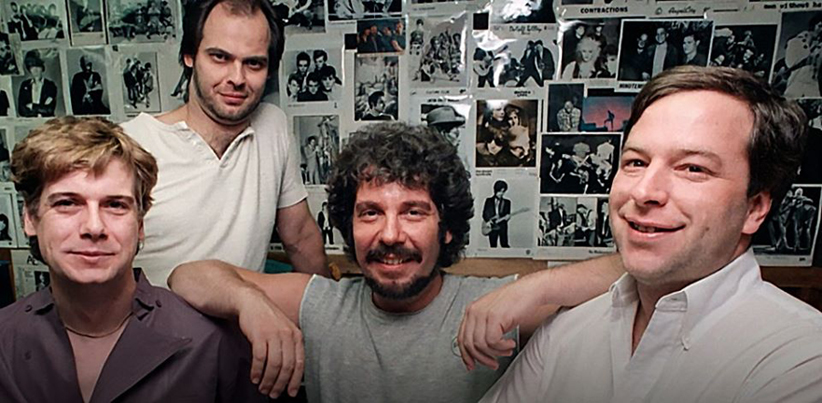
On December 30, 1982, the three partners filed Articles of Incorporation for a company called McClellan, Meyers & Lessard, Ltd. Documents on file with the Secretary of State show that the company had 1,000 shares, Jack was the registered agent, and Steve was the CEO. (SS)
After several years, internal problems between Daniel Lessard and John Meyers/Stephen McClellan severed the relationship and he was let go. (SM)
On May 8, 1986, Jack Meyers, Secretary of the company, filed a Certificate of Amendment with the Secretary of State, changing the name to 2M, Inc. The last filing (to change the registered office or agent) was made on January 27, 1999. (SS)
When Allan “fired” Steve McClellan and Jack Meyers on June 22, 2004, what he really did was terminate the Management Agreement between The Committee and 2M. Jack Meyers was re-hired by Byron Frank, but Steve McClellan was not. (SM)
SAM’S
Back up to 1980. One of the first things that the new management did was change the club’s name from Uncle Sam’s to Sam’s. It appears to have happened between April 18 and May 4, 1980.
On November 3, 1980, Allan’s signature is shown on the supplemental affidavit that listed the names of the officers, directors, and stockholders of The Committee, Inc. (MLD)
On November 4, 1980, Allan’s signature is on the application for renewal of the liquor license. It was still called The Committee, Inc. dba Uncle Sam’s. (MLD)
1981
On November 2, 1981, Allan’s signature is shown on the application for renewal of the liquor license and the supplemental affidavit that listed the names of the officers, directors, and stockholders of The Committee, Inc. It was now called The Committee, Inc. dba Sam’s. (MLD)
FIRST AVENUE
On New Year’s Eve 1981, Manager Steve McClellan and his staff renamed the club First Avenue.
1983
On July 11, 1983, Allan’s signature is shown on an application for a special license permitting the sale of liquor on Sundays. The application indicates that First Avenue provided grill or sandwich service, 7 days a week, with full seating for 312 and restaurant seating for 92. (MLD)
On November 20, 1983, Allan’s signature is shown on the application to renew the liquor license. Under changes in seating area, it was written, “Changes in fire exits and changes in customer seating area.” (MLD)
2000
F-TROOP
Ted Mann’s company, which still owned the building, told the Committee that it was going to either sell the building or double the rent. It became imperative that the building be purchased in order for the club to continue.
Byron Frank, the Committee’s CEO, formed F-Troop LLC on June 20, 2000. There are various accounts of who the shareholders of F-Troop were, but they were not specified in the Articles of Incorporation, and neither the SEC nor the Secretary of State keep track of shares in privately-held corporations.
F-Troop bought the building from Ted Mann’s Hollywood Theatre Co. on July 1, 2000 for $2.5 million. F-Troop then leased the building back to The Committee. The Committee still owned the business.
Byron Frank and Allan executed a contract outlining their roles at the club, but in September 2003, Allan took Frank to court, alleging that Frank forged Allan’s signature on the document. (Star Tribune, September 13, 2003)
2003
In 2003, revenue plunged nearly 25 Percent, to $3.1 million, Fingerhut says. He urged his associates to shift the club’s strategy by scheduling more DJs and dance nights. But Frank disagreed, insisting that the club remain true to its rock ‘n’ roll roots. Now that his own money was on the line, he was in no mood to compromise — and McClellan and Meyers agreed. “In this industry, you have to roll with it and hang on through the trends,” McClellan says… Fingerhut was horrified when Frank spent some $200,000 on renovations, which included a plush new VIP lounge. (Inc.com)
Byron Frank, identified as President of The Committee “but disputed by TCI” was terminated by Allan on December 25, 2003, according to the Statement of Financial Affairs section of the Bankruptcy Petition.
On October 29, 1982, Allan’s signature is shown on the application for renewal of the liquor license. It was now called The Committee, Inc. dba First Avenue/7th St. Entry. Stephen T. McClellan was listed as Manager. Under changes in seating capacity, there was written, “Permitted occupant load is currently 1,425 (under UBC) and application to have permitted occupant load officially increased to that figure has been submitted.” (MLD)
2004
McCLELLAN AND MEYERS ARE LET GO
On June 22, 2004, Allan terminated the contract of 2M, essentially firing management team Steve McClellan and Jack Meyers. (SM) Steve got the news during the Patti Smith concert that night, packed his things, and left.
Curiously, on the Statement of Financial Affairs section of the Bankruptcy Petition it says that Jack and Steve were terminated from The Committee on July 1, 2003. Jack was identified as the Vice President of The Committee, and Steve as “Manager through 2M, Inc.”
FINANCIAL WOES
Starting in 2002, business fell off dramatically. Inc.com:
“After 9/11, people didn’t want to come out in big groups to see music,” says Meyers. What’s more, R&B and hip-hop had grown increasingly popular in the Twin Cities, making First Avenue’s all-rock format seem outdated. Meanwhile, a slew of new bars and clubs were cutting into the club’s customer base.
Frank had green-lighted a number of raises and bonuses before Fingerhut arrived, increasing the club’s operating expenses. Even worse, Frank, Meyers, and McClellan all filed wrongful termination suits against their former boss, leaving Fingerhut with mounting legal bills.
THE COMMITTEE IS EVICTED
On October 6, 2004, landlord F-Troop sued the Committee for damages in excess of $500,000. This amount may have been what was described as $160,000 in unpaid real estate taxes, overdue rent, and two other lawsuits pending over terminated contracts. (BPA)
Also on October 6, 2004, F-Troop filed an unlawful detainer (eviction) action against The Committee in Hennepin County District Court. (BPA)
New York Times:
Empty nights at First Avenue became desperate ones, and Mr. Fingerhut was behind on insurance, taxes and the rent. Mr. Frank said he had offered to lend Mr. Fingerhut money, but was turned down. But by Mr. Fingerhut’s account and according to a document sent by his lawyer, Mr. Frank’s final offer was instead a push for complete capitulation that would have left Mr. Fingerhut out of the club and saddled with debts.
701 VENTURES, INC.
On October 8, 2004, 701 Ventures, Inc. was registered with the State. (SS) Provisions of the Articles of Incorporation included:
- 701 Ventures, Inc. was incorporated with common 25,000 shares.
- Shares had no par value.
- The registered office was 1225 LaSalle Ave., Apartment 1007, Minneapolis. This is now a condo owned by Byron Frank.
- Directors were specified in the Bylaws. Share percentages are from the License Inspector’s Report of November 18, 2004.
- Byron Frank, President/Director: 51 percent Shareholder
- Steve McClellan, Secretary/Director: 5 percent Shareholder
- John Meyers, Treasurer/Director: 24.5 percent Shareholder
On October 28, 2004, The Committee voluntarily agreed to surrender possession of the building on November 4, 2004. (BPA)
THE COMMITTEE DECLARES BANKRUPTCY
At 1:30 pm on November 2, 2004, The Committee, Inc. filed for Chapter 7 bankruptcy and First Avenue closed. Chapter 7 bankruptcy is a liquidation of a company’s assets with the intention of ending the company, as opposed to a Chapter 11 filing, which is meant to reorganize a company’s finances and keep it going.
The 46-page Bankruptcy Petition (BP) was extremely detailed and was not prepared overnight. It’s anyone’s guess when Allan made the decision to file.
A small, barely noticeable sign posted on the club’s door … announced the closing Nov. 2. Another farewell posted on the club’s Web site offered thanks to the club’s staff and community: “The departing staff wish to thank all of the staff members from the last 30-plus years for their hard work, tears and souls.” (Journal)
The Committee reported assets of $388,238, which included a $50,000 loan from F-Troop, the value of the liquor stock, and the value of insurance policies. The assets of the name First Avenue and the liquor license were listed but were given no monetary value. (BP)
Against those assets were listed $1,404,711 in claims. Allan himself claimed $795,000, which included reimbursement for loans to The Committee and $570 in capital contributions – his personal money he had put into fixing up the club. F-Troop claimed $507,374 in back rent, real estate taxes, fees, etc. (BP)
There were five lawsuits and other proceedings pending against The Committee. (BP)
WHO WAS THE COMMITTEE?
There are at least two versions of the makeup of the Board of Directors of The Committee at the time it declared bankruptcy.
According to the official record maintained by the Licenses and Consumer Services Division, the corporate structure of The Committee, Inc. was as follows: (License Inspector’s Report, November 18, 2004)
- Byron Frank, President
- Allan Fingerhut, Vice President and Sole Shareholder
- John Meyers, Treasurer
- Steven McClellan, Manager
But the BP reported:
- Allan Fingerhut, President, CEO, and Chairman of the Board
- Rose Fingerhut, Board Member
In addition, the BP asserted that:
- Byron Frank was the President (but this was disputed) until he was terminated on December 25, 2003.
- Jack Meyers was Vice President until he was terminated on July 1, 2003.
- Steve McClellan was Manager until he was terminated on July 1, 2003.
Regardless, Allan was the sole shareholder of the Committee, as he had been since 1975.
TO COURT
Immediately on November 2, 2004, the case was assigned to Judge Robert J. Kressel. All assets of The Committee Inc. were in put into a bankruptcy trust, including the name First Avenue and the liquor license. John R. Stoebner was appointed Bankruptcy Trustee. Stoebner’s job was to represent the Committee’s Estate.
PURCHASE AGREEMENT
Things moved quickly. On November 5, 2004, Stoebner negotiated a Purchase Agreement with F-Troop. (BPA) For a purchase price of $100,200 (a price that Stoebner essentially set), F-Troop agreed to buy and the Trustee agreed to sell:
- Personal property and leasehold improvements
- The right to the name First Avenue
- The existing liquor inventory
- The right to use the Committee’s liquor license, subject to “certain requirements imposed by the City of Minneapolis”
- The right to be added to the existing insurance policy
Stoebner agreed to use Committee funds to reassemble/repair the existing boiler, and gave F-Troop an administrative expense rent claim of $7,400.
F-Troop agreed to honor pre-paid ticket sales on a case-by-case basis.
Stoebner agreed to assist in obtaining a transfer of the liquor license pending the approval of a new license.
The BPA was signed by Stoebner as Trustee, and Byron Frank as “Chief Manager” of F-Troop.
On November 8, 2004, Stoebner filed a motion for an expedited hearing, arguing that:
- A Purchase Agreement had been negotiated
- No higher offer had been made
- The value of the assets will diminish rapidly over time
- The Estate would earn significantly less from a liquidation sale
- Delay would incur additional administrative expenses
- A quick sale would allow F-Troop to re-open First Avenue as soon as possible, rehire employees, and salvage as many scheduled concerts as possible
- The beer and wine in the club have a limited shelf life
On November 12, 2004, Judge Kressel held a hearing and granted Stoebner’s motion of November 8, thus approving the terms of the Purchase Agreement of November 5. First Avenue was sold to F-Troop, which now owned both the building and the business.
FINAL ACCOUNTING
On June 19, 2007, Stoebner filed the Trustee’s Final Report and Distribution with the U.S. Bankruptcy Court. The vast majority of creditors received 10.54639 Percent of their claims.
Employees:
- The Bankruptcy Petition stated that “All employees were paid in full prior to filing” and there were no priority wage claims of individual employees other than Allan.
- The Trustee’s Final Report showed that 12 employees had indeed not been paid. These 12 were awarded 100 percent of their claimed unpaid wages.
- Allan’s priority claim of $10,000 for unpaid salary was not awarded.
2M: of $957,600 claimed, $31,639 was paid.
F-Troop: of $300,000 claimed, $31,639 was paid.
Allan and Rose Fingerhut: Although the initial BP indicated that they had a non-priority claim of $785,000 ($215,000 for loans to The Committee and $570,000 for capital contributions), the Trustee’s Final Report lists their non-priority claim as $35,000. Of that, they received $3,691.
In addition, there was an issue about two payments totaling $55,000 that Allan withdrew from the Committee for wages and repayment of a loan. Because they were made within a year of filing of the bankruptcy, they were under the scrutiny of the Trustee. On March 3, 2005, Stoebner filed an “Adversarial Proceeding” against Allan and Rose Fingerhut demanding repayment. Reasons include:
- Allan knew the dire financial straits that the Committee was in, and withdrawing the money would make the Committee even less able to pay its debts.
- Withdrawing the money before the bankruptcy yielded the Fingerhuts 100 percent of the debt, whereas if they had included the debt with the other creditors, they would have only received what turned out to be about 10 Percent of the amount claimed. Trustee Stoebner charged that these were “preferential transfers.”
The issue was settled on July 20, 2005, when Judge Kressel approved the negotiated settlement of the Adversarial Proceeding in which the Fingerhuts, without admitting any liability, agreed to pay the Trustee $35,000 of the $55,000 sought. I mention this issue only because it has been reported erroneously in other secondary sources.
THE LIQUOR LICENSE REDUX
There was still the question of the liquor license. This is a bit confusing – when asked, even the City License Division could not explain how the license was transferred or otherwise reactivated.
Jack Meyers found it difficult to sort it out himself. He said it was easy for he and Steve McClellan to see what was happening, since the real estate taxes weren’t being paid and there was no cash in the money room. Seeing the writing on the wall, they began preparing a new liquor license application in about August 2004. The cost of the fee and attorneys was about $10,000, paid for by Byron Frank. (JM)
On November 18, 2004, Minneapolis licensing inspector Kenneth Ziegler issued a License Inspector’s Report on 701 Ventures’s application “for new ownership of an existing on-sale liquor establishment to be effective on January 1, 2005.”
The License Inspector’s Report described the machinations that went on in order for 701 Ventures to use The Committee’s license:
- On November 11, 2004, F-Troop leased the building to 701 Ventures.
- 701 Ventures then sub-leased the building to The Committee.
- The Committee entered into a Management Agreement with 701 Ventures, specifying that 701 Ventures would operate the business (presumably with The Committee’s license) until 701 Ventures had gained approval of its own, new license, estimated to be January 1, 2005.
- The License Division recommended that The Committee be permitted to resume business, with the management assigned to 701 Ventures.
This appears to mean that only the Committee could use the Committee’s license, and 701 Ventures would have to involve the Committee in order to operate under its license until 701 Ventures got approval of its own license.
However, the terms of the bankruptcy gave F-Troop the right to use the Committee’s liquor license, and did not call for a transfer.
Jack Meyers remembers that, since there was only about six weeks left on the old Committee license, it was decided to allow First Avenue to reopen using that one, and then by January 1, 2005, the new one prepared by Jack and Steve would be approved. Mayor R.T. Ryback, an enthusiastic concert-goer at First Avenue, famously made a phone call to the License Division, and made sure that the club had a valid license in place so it could reopen.
THE END OF THE COMMITTEE
With the bankruptcy, the Committee, Inc. was essentially out of business, its shares worthless, and no business to conduct.
The final death knell came on January 8, 2007, when the Minnesota Secretary of State officially dissolved the company for failure to file the required annual renewal. This is basically a housekeeping measure to get dormant corporations off the books. With that, the Committee, Inc. was no more.
And that, my friends, is what I found out about The Committee, Inc. If I’ve gotten anything wrong, please contact me before you file a lawsuit! My heart is pure and I mean nobody any harm. Thank you!
IN MY OPINION
In a brief departure from my studied objectivity:
I would like to acknowledge and thank the founders of this venue, who took an old bus station and made it into a place to “get down” instead of “get out of town” (gee that’s corny): Mr. Danny Stevens and Mr. Allan Fingerhut. Without their vision in 1970 we would have no First Avenue today.
I believe that Allan and Danny should have stars on First Avenue. Each of them would like to have that honor and recognition, and I believe they more than deserve it. It is part of their personal legacies and part of Minneapolis history.
Also, Danny Stevens was more than Allan’s nameless “Partner with a liquor license,” as referred to on First Avenue’s website. This is a travesty that could easily be changed.
And Steve McClellan, who gave 33 years of blood, sweat, and tears, to the entertainment mecca in three of its phases, should have a statue. A big statue. Which iteration of Steve, I don’t know. Maybe one with what he calls his “porn star mustache.” He was pretty cute then! Let’s get on that, shall we?
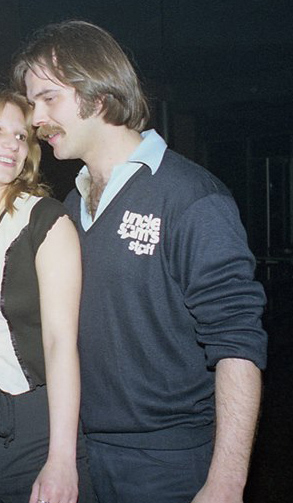
Thank you.
Jeanne Andersen
APPENDIX: STEVE McCLELLAN DAY
The community showed its support for Steve on March 22, 2015, when the Mayors of Minneapolis and St. Paul concurrently declared it “Steve McClellan Day.” (Star Tribune, March 22, 2015)
The proclamation read:
Whereas Stephen Thomas McClellan — born and raised in Minneapolis, Minnesota — attended De LaSalle High School and The University of Minnesota, took a temporary job as a part time bartender at Uncle Sam’s to earn money for his college tuition; and
Whereas, Stephen will be celebrating his 65th birthday and will be so honored by friends, family and others, Sunday, March 22, 2015 at one of the oldest Twin Cities watering holes; and
Whereas, he served on the boards of Minnesota Public Interest Research Group, Cedar Cultural Center Minnesota Music Academy, KFAI Radio Downtown Warehouse Association; and
Whereas, Stephen served as primary talent buyer, marketing director, general manager of First Avenue for over 30 years; and
Whereas, he broadened the Twin Cities music scene to an internationally recognized arena for music including groups like Africa’s King Sunny Ade; and
Whereas, Stephen has worked across multiple mediums of performance art, principally music; and
Whereas, Stephen has helped nurture and develop local music groups such as The Jayhawks, Husker Du, The Replacements, Suicide Commandos, The Suburbs, The Wallets, Prince, The Time, The Flamin’ Oh’s and out of town artists who were unheard of such as REM, U2, Nirvanna, Red Hot Chili Peppers, Greenday and many others, booking acts which he believed in;
and
Whereas, Stephen made First Avenue a household name internationally after Prince filmed “Purple Rain” at First Avenue; and
Whereas, he is a staff member of the Music Business Faculty at McNally Smith; and
Whereas, Stephen continues his imprint on musicians of all styles, creating his non-profit Diverse Emerging Music Organization (DEMO) to help aspiring musicians
NOW, THEREFORE, I, BETSY HODGES, Mayor of the City of Minneapolis, do hereby proclaim March 22, 2015 as:
STEPHEN MCCLELLAN DAY IN THE CITY OF MINNEAPOLIS
The party was held (where else?) at the Schooner.
